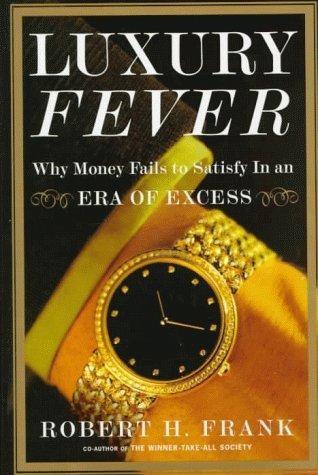
Luxury Fever: Why Money Fails to Satisfy in an Era of Excess
by
Robert H. Frank
Published 15 Jan 1999
As one corporation after another has moved its headquarters from New York to some other jurisdiction with lower tax rates, the state’s per capita income has continued a pattern of long decline in relative terms. All the while, Southern states with low tax rates have enjoyed a sustained economic boom. At the local and even state levels, at any rate, the fundamental premise of trickle-down economics appears largely confirmed. Higher tax rates seem to translate into lower rates of economic growth. And this, we may suspect, is an important reason for the widespread support that the fundamental premise of trickle-down theory currently enjoys. Yet the observed responses to state and local tax changes tell us only that people are willing to substitute one location for another in response to tax incentives.
…
In fact, however, the length of the workweek is significantly lower now than in 1900.3 As noted earlier, the downward trend in hours worked leveled out shortly after World War II in the United States and has actually turned slightly upwards over the last two decades. This observation also casts doubt on the fundamental premise of trickle-down economics. After all, the wage of the median earner has declined slightly during the last 20 years—which, according to trickle-down theory, ought to have caused a reduction in work hours instead of an increase. By many accounts, the recent increase in hours worked is an attempt to recoup the loss of purchasing power that stems from lower wage rates. Although comparisons across countries are inherently difficult to interpret, on balance we would also expect to see more effort supplied in countries with higher real after-tax wage rates if the fundamental premise of trickle-down economics were correct.
…
Since this evidence has been available for quite some time, it would be puzzling indeed if there had not been at least some form of more systematic challenge to the fundamental premise of trickle-down economics. In fact, just such a challenge has been gaining momentum over the last several years. Scholars in this movement have examined the relationship between economic growth and inequality both within and across countries. And in every instance their findings have been squarely at odds with the predictions of trickle-down theory. Growth and Inequality Across Nations A burgeoning empirical literature has found a negative correlation between various measures of income inequality and economic growth in cross-national data.
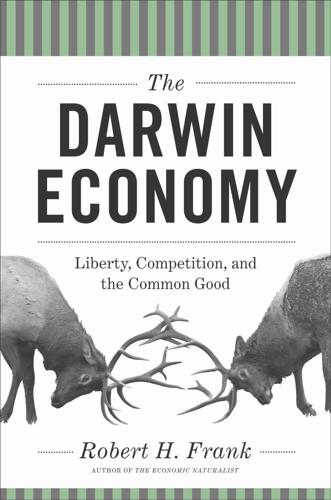
The Darwin Economy: Liberty, Competition, and the Common Good
by
Robert H. Frank
Published 3 Sep 2011
If economic theory provides no justification for the trickle-down doctrine, what do the numbers say? Here as well, the doctrine finds little support. One test is suggested by the observation that if lower real wages induce people to work shorter hours, then the opposite should be true when real wages increase. Since 1900, average hourly wages in the United States have risen more than fivefold in inflation-adjusted terms. According to trickledown theory, then, Americans should be working significantly longer hours now. Yet the current American workweek is only about half what it was in 1900. Trickle-down theory also predicts shorter workweeks in countries with lower real after-tax pay rates.
…
See sports utility vehicles Sweden, lack of corruption in, 56 Switzerland, lack of corruption in, 56 talent, in success, 143–48 task specialization, 43, 203–4 tax(es): as inhibitor of economic growth, 13, 157–58; libertarian objections to, 6, 119–21; 239 need for mandatory, 6, 168–69, 202; slogans opposing, 168–71, 194–95; as social engineering, 13–14, 122–23; as theft, 6, 119, 154, 168–69, 202; trickle-down theory of, 157–62. See also specific types tax(es), on harmful activities, 13–15, 172–93; alcohol taxes as, 185–87; causing indirect harm, 187; economic growth caused by, 158; and helmet rules, 187–92; and Mill’s harm principle, 187, 188, 189, 190, 213; versus regulations, 13–14, 79–80, 123, 172–74, 213; slippery slope argument against, 193; soda taxes as, 192–93; tax on vehicle weight as, 183–84; tobacco taxes as, 184–85; versus useful activities, 13–15, 122. See also consumption tax, progressive; pollution taxes tax cuts: payroll tax, 13, 14, 112; trickle-down theory of, 157–62.
…
Former Fed Chairman Alan Greenspan, who describes himself as a libertarian, echoed this view when he wrote that “All taxes are a drag on economic growth. It’s only a matter of degree.”2 But it’s not just libertarians who believe taxes inhibit economic growth. Variations of that view, often called trickle-down theory, have been repeated so often by so many people across the political spectrum that it has acquired an air of settled truth. 157 158 CHAPTER TEN It cannot literally be true, of course, that all taxes are a drag on economic growth. As noted earlier, unless we tax something, we can’t organize and maintain a civil society and defend ourselves from foreign invaders, much less enjoy robust economic growth.
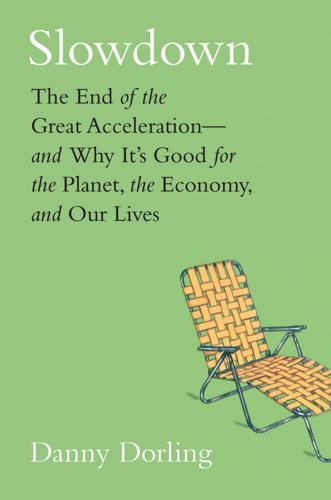
Slowdown: The End of the Great Acceleration―and Why It’s Good for the Planet, the Economy, and Our Lives
by
Danny Dorling
and
Kirsten McClure
Published 18 May 2020
Trickle Down was a minor deity in the pantheon of the Capitalist religion. There were many who doubted she really existed, even at the height of her popularity in the early 1980s. Profit was the dominant male god of Capitalism. See Michael Wright and Carolin Herron, “Trickle-Down Theory Revisited and Explained,” New York Times, 8 May 1983, https://www.nytimes.com/1983/05/08/weekinreview/the-nation-trickle-down-theory-revisited-and-explained.html. CHAPTER 10 Geopolitics Epigraph: E. M. Forster, “The Machine Stops,” Oxford and Cambridge Review, November 1909, http://archive.ncsa.illinois.edu/prajlich/forster.html. 1. The dates are arbitrary: 1837 was when several patents by rival inventors of the telegraph were filed and the first working system was used, but forms of it had been created earlier, and 1974 is when the word Internet was first used in documents on networking protocols.
…
Bill Gates promptly declared it his “new favorite book of all time.”14 It is not hard to see how Pinker’s story is wrong. Today many people other than Pinker know that we are consuming too much. They know that only the rich will benefit from Pinker’s ideas, such as pretending (or even actually believing) that trickle-down economics works. Pinker has a particular liking for the old-fashioned economic measurement of GDP, but as Jeremy Lent made clear in his critique of Pinker’s suggestions, various measures of the world’s genuine progress rate (GPR) peaked around the year 1976 and “they have been steadily falling ever since.”
…
Other people, all of them unknown to you, had simultaneously become much poorer. You had no idea that they became poorer as a direct result of your trading actions. Of course the money you made had to actually come at the expense of others, you were not doing anything of such great actual value; but you believed the market was efficient and that the “trickle-down effect” would sort out the poor.44 Later, of course, disaster will strike. But you have long since diversified. You purchased some properties with your winnings, a few in 1997 and more in both 1998 and 1999. The rental income was good, the capital appreciation even better. You survived the dot.com crash of 2000 and 2001, although your salary and bonuses would never rise as fast again.

Limitarianism: The Case Against Extreme Wealth
by
Ingrid Robeyns
Published 16 Jan 2024
And the stagnation of wages for all except the rich and super-rich goes hand in hand with decreasing consumer demand that could otherwise help grow the economy.39 You might think that, given all this evidence, the idea of trickle-down economics would have disappeared by now. Sadly, this is not the case. Australian economist John Quiggin was right to classify trickle-down economics as a “zombie idea”: an idea that has been proven wrong, and should be dead, but which nevertheless keeps rearing its head from time to time. Despite all the proof that cutting taxes for the richest does not lead to universally beneficial economic growth, we keep seeing the idea reappearing in politics. Most strikingly, Liz Truss, who served as British prime minister for forty-four days in 2022, proposed trickle-down economics as a way of responding to the escalating cost of living crisis caused by the Covid pandemic and the Russian war in Ukraine.
…
As the former UK Labour prime minister Tony Blair said in 2001, “If you end up going after those people who are the most wealthy in society, what you actually end up doing is in fact not even helping those at the bottom end.”36 As we’ve already seen, this is not how it works out in practice. Empirical studies have repeatedly confirmed that trickle-down economics is a false theory. It does not work. Or, as US senator Elizabeth Warren put it: “Wealth does not trickle down. It trickles up.”37 Trickle-down economics has been discredited among academics for some time. In a study analyzing all major reductions in taxes on the rich across eighteen affluent countries in the period 1965–2015, David Hope and Julian Limberg found that tax cuts for the rich led to higher income inequality, and did not have a signficant effect on economic growth or reducing unemployment.
…
K. 5, 11, 139 Russia 9–10, 24, 27, 39–40, 50–52, 63, 76, 78–9, 96, 104, 211 Rutte, Mark 85 Sachs, Jeffrey 153–4 Sackler family 52–4 Saez, Emmanuel 66, 69 safety regulations 57 Salk, Jonas 137 Sanders, Bernie xx–xxi Satz, Debra 218–19 savings 4, 10, 11–12, 13, 25, 37, 41, 61, 62, 70–71, 82, 115, 121–2, 151, 152, 171, 189, 226 Schimmelpennick, Sander 190 Scott, MacKenzie 136 sea levels 99 Second World War (1939–45) 3, 27, 33–4, 151 Seko, Mobutu Sese 48–9 “self-made” super-rich 5–6, 121 Sen, Amartya 21 shared spaces 108–9 shareholders 6–7, 55, 56, 57, 59–60, 85, 96–7, 104, 135, 135–6, 145, 159, 210, 220–21, 223 Sharman, Jason 49 Shell 6–7, 86, 96, 102, 128 Sherman, Rachel 199–200 silver-bullet strategies 155, 214–15 Simon, Herbert A. 138 ’S Jongers, Tim 140–41 Skidelsky, Edward 201 Skidelsky, Robert 201 Skocpol, Theda 89–90 slavery 20, 21, 28, 43–4, 45–7, 223, 224 smallpox xv Smalls, Chris 59–60 Smith, Adam: The Wealth of Nations 219 Snyder, Timothy 76 SOAS 46 social capital 138 social comparison 197 social contract 31, 32, 68, 119, 120–21, 124, 137, 139, 167, 169, 176, 191–2, 220, 221 social housing 37, 209–210, 217–18 socialism 21, 44, 55, 208, 211 social mobility 33–4, 39, 123, 139–42, 205 social-security 5, 14, 65, 170 social unrest/“threat of the pitchforks” xxi, 77, 176, 187–92 Soros, George xxi–xxii space tourism xi, xii, 6, 60, 101, 103, 114, 147–8, 154, 181 SpaceX xi special obligations 185 stagflation 34 Stanford University 113, 175, 218–9, 231 state capture 76 Stichting Reclame Rood 102 structural action/change xv, xvi, 180–1, 212, 218 stylized facts 26 subsidies 28, 35, 37, 83, 102–3, 159, 176, 211 Süddeutsche Zeitung 63–4 Sullivan, Dylan 22–23, 136 Sunak, Rishi 40 Sunday Times xi super-rich class system and 29–30, 32 climate change and see climate change corporate ladder and 6–7 corrosive effect of extreme wealth on xiii, 193–9 definition of 4–10 democracy and see democracy dirty money and see dirty money distribution of worldwide 24–5 diversity of 4–10 economic growth and 189–90 future of 203–29 good life and 201–2 government, distrust of 172–5 implementing limitarianism in their own lives xxii inheritance and see inheritance insecurity that characterizes affluent societies and 199–200 limitarianism benefits to 187–202 moral limits of inequality, averse to debating xxiv–xxv neoliberalism and see neoliberalism philanthropy and see philanthropy riches line and see riches line “self-made” 5–7, 121 social unrest/“threat of the pitchforks” and 187–92 tax and see tax wealth addiction and 198–9 Switzerland 24–5, 63, 224 taboos 30–31, 32 tax avoidance 60–68, 146, 166, 167, 168, 175, 180, 203, 221, 221–2, 223 breaks 37, 61 climate change and 102, 110–16 confiscatory tax 114, 122 corporation tax 39–40, 60, 65–7, 90, 225 cuts 33, 35, 38, 39–40, 90, 168 deductions xxiv 28, 65–6, 70, 175–6 dividends and 85–6, 225 dodging 60–80 “double” taxation 124 estate tax 8, 90, 121 evasion 37, 51–2, 60–61, 63, 64, 67, 68, 116, 146, 167, 203, 221, 221–2, 223z fraud xiv, 51–2, 64–5, 221 fuel tax 103 government and 119–22 havens 42, 62–8, 121–2, 214, 222, 222–3 highest tax rate xv, xvii, 15–16, 37, 39–40, 69, 95, 160, 161–2, 214, 221 income tax 33, 37, 39–40, 61, 70, 77, 160–61, 186 inheritance tax 8, 68, 82, 121–5, 191, 226–7 international tax differences 166–67, 222 international tax organization 222 jaloesiebelasting (envy tax) xxi labor and capital, income from and 60, 61–62, 69–70, 225 limitarian society and xv lobbying and 69, 85–86 neoliberalism and 33, 34 100 per cent xvi, xvi, 15–16, 22, 95, 160, 214–15 optimal top marginal taxation rate 160 philanthropy and 166–9, 172, 173–4, 175–6, 180–81 profit shifting and 65–7 progressive tax rates xiv, xvii, xx–xxi, 34, 61, 145, 146, 221 property and 70, 120 racial inequality and 28 Reagan tax cuts 33 taxmenow 6, 65 trickle-down effect and 38–40 wealth-defense industry and 67–71, 82, 121, 124, 175, 180, 197 wealth taxes xviii, xx–xxi, 160, 222, 226 technological innovation 30–31, 32, 41, 108, 113–14, 137–8, 144, 158, 159, 177–78, 207 10 percent rule 185–6 Tesla xi Thatcher, Margaret 33, 208 Thiel, Peter 77 think tanks 40, 89, 90, 94–5 “too rich” xii–xiii, xviii Total Energies 96 transnational capitalist class 92–3 Trevelyan family 46–7 trickle-down effect 38–40, 189 Trump, Donald 52, 67, 68, 79, 81, 87–8, 92 Trump, Fred 67 Truss, Liz 40 tuition fees 14 Tuvalu 106 Twitter xi, xii, 5–6 ultra-high-net-worth individuals 24–5 unconditional basic income 138, 150, 174 undeserved wealth 117, 118–43, 184 inheritance 121–2 labor/wage inequalities 126–33 markets/property as social institutions 118–22 social mobility and 140–41 wealth creators/entrepreneurs and investors 133–9 unemployment 14, 34, 39, 65, 146, 150, 158, 170, 200 unequal exchange 23–4 Unilever 86 Union Carbide 55–7 unions, labor/trade 23, 30, 33, 58, 59–60, 83, 135, 160, 180, 220 United Nations (UN) 42, 72 Food Systems Pre-Summit (2021) 154 human development indicators 171 Sustainable Development Solutions Network 153 World Food Program 99 United Russia 50 Universal Declaration of Human Rights 72 universal draft 30 universities 6, 14, 33, 36, 46, 47, 76, 84, 90, 114–5, 165, 166, 169–70, 180, 181, 195, 223, 227 University of Glasgow 46 University of the West Indies 46 unmet needs 144–63, 182 collective-action problems and 159 Covid–19 and 144–146 declining marginal value of money and 146–7 direct cash transfers and 152 entrepreneurial goals and 159 extreme poverty and 149–150 incentives objection 160–3 money, possibility of addressing with 148–50 non-financial incentives 162–3 poverty in rich economies 155–8 USA American Dream 156, 205, 217 asylum seekers in 79 basic income in 174 Black Lives Matter movement 191–2 business practices, harmful 52–7 CEO pay 7, 126, 127, 133 class system 30–32 climate change and 104–5, 108 Covid–19 and wealth in 145 estate tax 8, 90, 121 health deficits in 157 national parks 211 national public service in 218–9 oligarchy 73 philanthropy and 53, 164–8, 192 political donors and 80–84 political polarization in 88–91 poverty in 20, 26–7, 37, 155 presidential election (2020) xxi, xxii, 52, 88–9 race and 45–7, 174 taxes in 8, 33, 62, 64, 68, 69, 90, 121 tuition fees 14 wealth distribution in 24–8, 204–6 utilitarianism 146, 184 Utrecht 1, 15 Utrecht University 11 vaccines 36, 137, 145 Van der Veer, Peter 128, 160 variola virus xv viruses xv, 146 VVD 85 wages Amazon and 59 burden of job and 131–3 equality and 125–6, 131, 132, 223 garment industry 57, 58 globalization and 32 Global South and 23 labor market discrimination and 125 living wage 12, 143, 160, 223 low wages of working poor 156, 223 maximum wage 224 middle classes and 189 minimum wage xv, 160, 174, 176, 211, 224 ratio 224–5 slavery and 45 stagnation of 39 tax and 67 underestimation of 205 unions and 180 Wales, Prince William, Prince of 7 Wall Street 198–9 Walmart 58 Warren, Elizabeth xxi, 38 Washington Center for Equitable Growth 39 wealth addiction 16, 195, 198–9 climate change and see climate change concentration of xii, xiii–xiv, xvi, xviii, xxv, 4, 16, 24–5, 35, 36, 42, 65, 74, 89, 94–5, 100, 109–10, 116, 117, 118, 125, 139, 207, 221, 225, 231 confiscation of xiv, xix, 47, 191, 222 corrosive effect of xiii, 193–9 creators 133–9 see also entrepreneurs defense industry 67–71, 82, 121, 124, 175, 180, 196 democracy and see democracy dirty money and 41–71 distribution of xiii, xv, xxv, 2, 3, 24–9, 32, 35, 97, 100, 141, 169, 172, 183, 189, 204–6, 225 equality/inequality and see equality extreme xx–xxi, xxv, xxvi 2, 3, 4, 5, 16, 17–40, 41, 68, 71, 75, 89, 97, 99–100, 106, 109, 115–7, 121, 125, 133, 139, 148, 161, 182, 185, 188, 192, 194–5, 196, 199, 200, 203, 207, 215, 221 inheritance and see inheritance limiting see limitarianism philanthropy and see philanthropy poverty and se poverty rich lists xi–xii, 2, 133–4 super-rich and see super-rich tax and see tax undeserved 118–43, 184 unmet needs and see unmet needs welfare fraud 65 state 14, 65, 83, 143, 156, 170–71, 190, 201, 213 well-being big government and 169, 172 Covid–19 and 144–5 poverty and 140, 151, 152, 154–5 property rights and 119 super-rich people and 6, 16, 194, 197–8 tax and 146 utilitarianism and 184 well-being economy 213–14 Wellbeing Economy Alliance 213–14 Wenar, Leif: Blood Oil 48 White, Stuart 226 Wiardi Beckman Foundation 141 wildfires 99, 102, 105 Winfrey, Oprah 5, 6, 139 “winner takes all” market 129, 134–5 win-win narrative 18–21, 67 Wirsching, Andreas 44 working class 29, 31–32, 35, 83, 83–4, 164, 217–18 World Bank 18, 21 World Bank Economic Review 21 World Economic Forum (WEF) xxi, 42, 91 Annual Meeting, Davos xxi–xxiii, 17, 91–3, 103, 188 World Health Organization (WHO) xv Zaïre 48–9 Zara 136 Zoomkawala, Huzaifa 22–3, 136 Zucman, Gabriel 62–3, 66, 69 Zwarthoed, Danielle 198 About the Author Ingrid Robeyns currently holds the chair in ethics of institutions at Utrecht University.

A Pelican Introduction Economics: A User's Guide
by
Ha-Joon Chang
Published 26 May 2014
Last but not least, we need to look at history because we have the moral duty to avoid ‘live experiments’ with people as much as possible. From the central planning in the former socialist bloc (and their ‘Big Bang’ transition back to capitalism), through to the disasters of ‘austerity’ policies in most European countries following the Great Depression, down to the failures of ‘trickle-down economics’ in the US and the UK during the 1980s and the 1990s, history is littered with radical policy experiments that have destroyed the lives of millions, or even tens of millions, of people. Studying history won’t allow us to completely avoid mistakes in the present, but we should do our best to extract lessons from history before we formulate a policy that will affect lives.
…
The Reagan government aggressively cut the higher income tax rates, explaining that these cuts would give the rich greater incentives to invest and create wealth, as they could keep more of the fruits of their investments. Once they created more wealth, it was argued, the rich would spend more, creating more jobs and incomes for everyone else; this is known as the trickle-down theory. At the same time, subsidies to the poor (especially in housing) were cut and the minimum wage frozen so that they had a greater incentive to work harder. When you think about it, this was a curious logic – why do we need to make the rich richer to make them work harder but make the poor poorer for the same purpose?
…
Even though the shares that poorer people get in the national income may be smaller, they will be better off in absolute terms. This is what Milton Friedman, the guru of free-market economics, meant when he said: ‘Most economic fallacies derive from … the tendency to assume that there is a fixed pie, that one party can gain only at the expense of another.’1 The belief in the trickle-down effect has prompted many governments to employ – or at least has provided them with the political cover for – pro-rich policies in the last three decades. Regulations on product, labour and financial markets were relaxed, making it easier for the rich to make money. Taxes on corporations and high-income earners were cut, making it easier for them to keep the money they thus make.
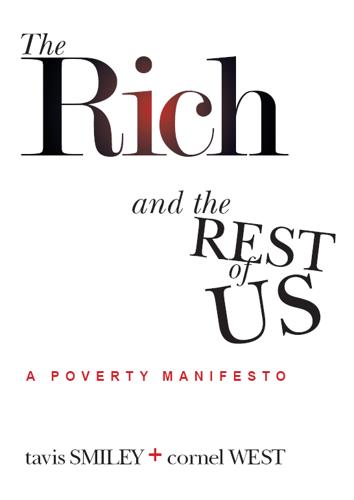
The Rich and the Rest of Us
by
Tavis Smiley
Published 15 Feb 2012
It is to chart the War on Poverty’s timeline and pinpoint the myopic moment when anti-poor rhetoric and subsequent legislation turned stereotypical, vicious, and punitive. Reagan was more than the general who waved the white flag of surrender in the War on Poverty; he actually initiated the “War on Welfare.” He was also the architect of “trickle-down” economics—a theory based on the false notion that tax policies that benefit the wealthy will magically lift the poor. Some of the most devastating conditions that the poor face today are legacies of the Reagan era. Reagan slashed the budgets for so-called entitlement programs such as Medicaid, food stamps, the Environmental Protection Agency, Community Development Block Grants, and federal education programs by 60 percent.
…
It concludes that the “well-being of low-income Americans, particularly the working poor, the near poor, and the new poor, are at substantial risk,” despite politicians’ and Wall Street’s declarations of an economic recovery.37 With the economic reality that real wages for the American working class have not increased for the past four decades, it is past time to challenge the distorted language and accompanying political rhetoric about the poor. We must move past Republican and Democratic versions of trickle-down economics—the belief that helping the rich and middle classes will magically improve the lot of the poor and working poor. Job growth has stalled so badly that several economists predict that, even if the economy rebounds, unemployment levels by the end of 2013 may return only to 2007 levels—around 4.6 percent, or almost 14 million people.
…
They knew how to manipulate this group.” As the polls and surveys we mentioned earlier indicate, prior to the recession, most of the middle class were ambivalent about the rich/poor divide and thoroughly convinced they, too, could be rich. Conservative politicians played on these unreal expectations and got voters to support trickle-down theories and to resist tax hikes on the rich. But, as Moore asserted, Wall Street bankers and lenders overplayed their hand: “The huge catastrophic tactical mistake they made—because of their incredible greed—was, after they soaked the poor … they thought: ‘Geez, we’re just not making enough money.

Tyler Cowen - Stubborn Attachments A Vision for a Society of Free, Prosperous, and Responsible Individuals
by
Meg Patrick
We can try to equalize all wealth today, but we would not be able to draw on comparable resources for the next generation. Such a widespread collective redistribution would lead rapidly to negative economic growth. In contrast the benefits of economic growth will compound over time. It is common to scorn the phrase “trickle-down economics,” but a steady and ongoing flow of benefits is exactly what we are looking to achieve. A flood is better than a trickle, but a lasting trickle is better than eating our cake today and cashing in our chips. These stipulated individual obligations are not so far from common-sense morality.
…
There has been a squeezing of the middle class in the wealthier nations, in part because of increasing global competition. Still, we have seen economic growth, aggregate wealth, and global income equality all rising together over the last twenty-five years. Most citizens in East Asia, South Asia, and Latin America have seen significant gains in their living standards, and much of this has been a trickle-down effect from the earlier growth of the wealthier countries. Much of Africa is now following suit as well, in part boosted by China’s demand for raw materials and also by the spread of modern technologies such as affordable cell phones.13 Sometimes extended periods of growth do not bring full or fair benefits for the poor or lower classes, for instance during the early phase of the British industrial revolution in the late eighteenth century.
…
Indeed it is a common complaint in the literature on inequality that “the rich get richer,” while the “poor get poorer,” or at least more or less stay put. If this portrait is to be believed, it implies that the rich earn higher returns on their accumulated wealth, as indeed has been stressed by the French economist Thomas Piketty. If there is a trickle-down effect from the wealth of the wealthy, combined with a zero rate of discount, it is easy to generate scenarios where utilitarianism recommends redistribution to the wealthy. For instance let’s say – for purposes of argument – that the wealthy earn eight percent on their holdings, annually and on average, and the poor earn one percent.

Stubborn Attachments: A Vision for a Society of Free, Prosperous, and Responsible Individuals
by
Tyler Cowen
Published 15 Oct 2018
This too should limit our attachment to social welfare programs.3 So rather than redistributing most wealth, we can do better for the world by investing in high-return activities like supporting immigration and producing new technologies with global reach, such as cell phones and new methods for boosting agricultural productivity. Many people mock the term “trickle-down economics,” but most social benefits do take a trickle-down form. We should of course prefer a flood to a trickle, which brings us back to wishing to boost the sustainable growth rate as much as possible. These stipulated individual obligations are not so far from common sense morality. To be sure, we have not yet bridged the gap between utilitarian reasoning and common sense morality.
…
There has been a squeezing of the middle class in the wealthier nations, in part because of increasing global competition. Still, we have seen economic growth, aggregate wealth, and global income equality all rising together over the last twenty-five years. Many citizens in East Asia, South Asia, and Latin America have seen significant gains in their standard of living, and much of this has been a trickle-down effect from the earlier growth of the wealthier countries. Much of Africa is now following suit, bolstered in part by China’s demand for raw materials, and also by the spread of modern technologies such as affordable cell phones.13 Sometimes extended periods of growth do not confer full or fair benefits to the poor or lower classes, for instance during the early phase of the British Industrial Revolution in the late eighteenth century.
…
Indeed, a common complaint in the literature on inequality is that the rich get richer while the poor get poorer, or at least more or less stay put. If this portrait is to be believed, then the rich earn higher returns on their accumulated wealth, as has been argued by the French economist Thomas Piketty. If we combine the trickle-down effect from the wealth of the wealthy with a zero rate of discount, it is easy to generate scenarios in which utilitarianism would recommend the redistribution of wealth to the wealthy. For instance, let’s assume, for the sake of argument, that the wealthy earn eight percent on their holdings, annually and on average, while the poor earn one percent.

No Such Thing as a Free Gift: The Gates Foundation and the Price of Philanthropy
by
Linsey McGoey
Published 14 Apr 2015
Like Carnegie before him and Fries today, Mellon was a firm believer in the credo that wealth concentration will inevitably foster collective benefits. The idea that we should augment the wealth of the richest 1 per cent so they have more to spend on charity is trickle-down theory in its baldest form. Bishop and Green have made this clear: ‘Today’, they write approvingly in Philanthrocapitalism, ‘Carnegie would be called a believer in trickle-down economics. As he argued, it is “much better this great irregularity than universal squalor”’.40 Their praise for Carnegie’s ideas about wealth is not surprising in itself. Carnegie’s writing has many fans, including Bill Gates, who reportedly consulted the Gospel of Wealth when establishing his own foundation.
…
But what is surprising about Bishop and Green’s praise for Carnegie is their openly approving use of the phrase ‘trickle-down economics’. And not in an ironic manner. The economist J. Kenneth Galbraith used to scornfully liken trickle-down policies to what he described as the ‘horse and sparrow’ theory of economic growth: the idea that ‘if you feed the horses enough oats, something will pass through to the road for the sparrows’.41 Jabs from left-leaning economists such as Galbraith have long struck a sensitive chord with those on the right. Long deployed by most commentators in a pejorative manner, no political party has ever openly advocated trickle-down economics – not even those assumed to have most embraced its spirit: the Republicans under Reagan or the Conservatives under Thatcher.
…
While Thatcher once famously proclaimed ‘it is our job to glory in inequality and see that talents and abilities are given vent and expression for the benefit of all’ – even she stopped short of using the phrase. It’s true that many on the right explicitly align themselves with supply-side economics, a tradition in macroeconomics that suggests low taxes and reduced regulation will foster more production, consumption and economic growth. But ‘trickle-down’ economics has never been explicit, publicly vocalized party policy, perhaps because many on the right are canny enough to realize that making it an official doctrine would expose political incumbents to accusations of failure whenever the reality of how rarely wealth actually does trickle to the poorest members of society becomes obvious.
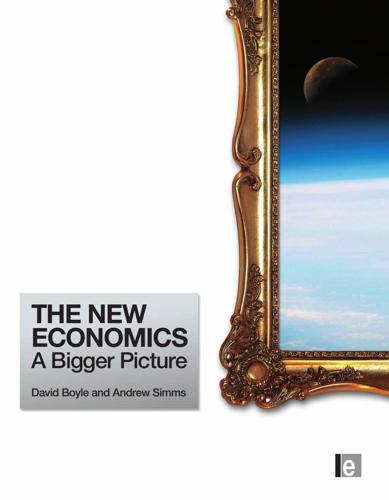
The New Economics: A Bigger Picture
by
David Boyle
and
Andrew Simms
Published 14 Jun 2009
If you helped some people get rich, then they would spend more and it would trickle down through the economy to the poorest. It survives to this day in most of the assumptions of mainstream regeneration and economic development, though it is even more obvious now than it was to Carville that wealth doesn’t trickle down, it floods up. In fact, of course, the great days of trickle down economics were still to come. Every government conditioned by the so-called Washington Consensus, as well as the all-powerful International Monetary Fund (IMF) and World Bank, believed that cutting taxes would in the end stimulate the economy, and – to start with – it did. But in the constant failure of regeneration, redistribution and community revitalization, it was increasingly obvious to most people outside that consensus that trickle down simply did not work.
…
This was an era dominated by the set of policies that became known as ‘neoliberal’, though they bore no relation to any liberalism worthy of the name. The heart of this consensus was a redoubled reliance on money as the only measurement tool, 28 THE NEW ECONOMICS and a major commitment to trickle down economics via private corporations. It was more accurately an application of Darwin’s evolutionary theories to economics: a kind of survival of the economically fittest. But their interpretation of the ‘fit’ – the marketable, the profitable, the global – was not only a misreading of Darwin, but deeply inadequate.
…
Despite this definitive statement, most economic policy is based on this flawed old economic dictum that helping the wealth-creators will automatically help everybody else. If that wealth is not productive, or if the bargain driven with the producers is manifestly unfair, then the wealth will not trickle. Even so, the complete failure of so-called ‘trickle down economics’ seems to require some other explanations. Why, despite the apparent success of recent decades, has that not benefited the poorest? Some possible explanations are covered in the previous chapter, but a glimpse at some of the workshops that manufacture clothes for the big brand names is enough to see that there is a problem.
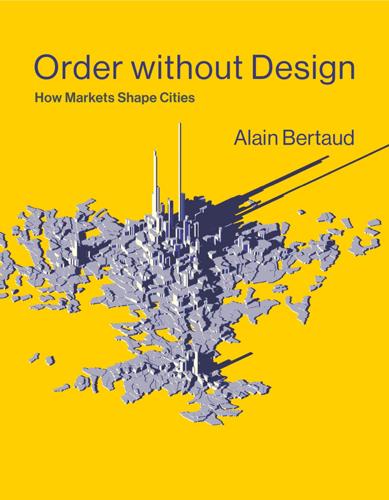
Order Without Design: How Markets Shape Cities
by
Alain Bertaud
Published 9 Nov 2018
However, if the same 10 percent increase in new housing units is built for households with incomes around 36,000 yuan (or about 10,000 new units), the increase in number of housing units will also trickle down toward lower-income groups but will soon have an insignificant impact because of the much larger number of households among the lower-income group. The trickle-down effect does occur in every case, but its effect will be completely diluted if the increase in dwelling units is targeted to households whose income is much to the right of the distribution mode (in the case of Shanghai shown in figure 6.8, the mode corresponds to households with incomes of about 22,000 yuan). If the number of households in each income interval were equal (if the bars were all of the same height), then the trickle down would work perfectly. Of course, the trickle-down effect could also become a trickle up. Imagine that a government constrains the housing supply of higher-income groups and favors exclusively the building of lower-cost housing units (say, for incomes of about 12,000 yuan in figure 6.8).
…
A city’s income distribution curve is an indispensable tool for analyzing and quantifying housing affordability issues. Figure 6.8 Shanghai household income distribution, 1998. Source: Jie Chen, Qianjin Hao, and Mark Stephens, Assessing Housing Affordability in Post-Reform China: A Case Study of Shanghai (London: Routledge, 2010). Housing Stock and Flow, and the Trickle-Down Theory The shape of the income distribution curve may also help anticipate the policy impact of affordability. The graph enables testing of whether the “trickle-down” affordability theory10 is likely to be relevant. For instance, imagine that developers increase by 10 percent the number of new housing units affordable to households with an income of about 14,000 yuan (or about 24,000 new units).
…
Adequate housing, 269–270 Affordability in China, 230–231, 230f, 293–300, 297f demand side subsidies in, 260–263, 262f, 267–268 Demographia International Housing Affordability Survey for, 224–225, 225f for developing countries, 372–373 economics of, 341–342 in Gauteng (South Africa), 268–271, 270f, 272f, 273–275, 275f government for, 220–221, 231–235, 232f–233f, 301–302, 304–306 household income in, 219–220, 222–224, 239, 240f, 242–244, 243f, 247, 248f, 249–251, 251f, 254–256, 255f housing policy and, 249–250, 252 housing typology in, 244–247, 245f, 302–303 incentives in, 283–284 in Indonesia, 288–292, 291f informal housing for, 256–260, 258f in land use, 334 minimum standards for, 235–236 in New York, 275–281, 278f, 280f–281f PIR in, 224–230, 225f, 227f–228f, 231 policy for, 267–268, 300–301, 328–329, 356–357, 357f poverty and, 236–239, 238f, 287–288 in South Africa, 366–367, 388n26 subletting in, 282–283 subsidies in, 303–304 supply side subsidies in, 264–267, 265f tax incentives in, 284–285 technology and, 345–346, 346f theory of, 49, 219, 301 trickle-down theory for, 240–241, 391n10 urban land supply in, 252–254, 253f zoning in, 281–282, 285–287 Affordable housing, 276–277, 281–282, 285–287 Agricultural land in Hanoi (Vietnam), 135–136 land price and, 135–136 land readjustment for, 385n7 spatial distribution of, 114–116, 115t, 118, 119f, 120–122, 121f–122f in urban economics, 122–124, 125f urban land compared to, 115–118, 117f, 119f, 122f Algeria, 4–6 Alonso, William, 95 Alterman, Rachelle, 367–368 Alternative urban shapes containment policy in, 334–335, 340–341 demographic projection in, 341–344 density and, 339–340, 340f economics of, 329–330, 330f government and, 332–333 markets and, 335–337 New York as, 317–326 Paris as, 310–317, 311f, 316f politics of, 337–339, 346–347 theory of, 307–310, 329–330, 333, 346–347 zoning for, 326–332, 328f, 330f Amsterdam, 338–339 Anas, Alex, 95 Angel, Shlomo, 21–22, 110, 116, 147–148, 339–340 Antifragile (Taleb), 308–309 Apple (company), 308, 351 Art Deco building (New York), 326 Asia.
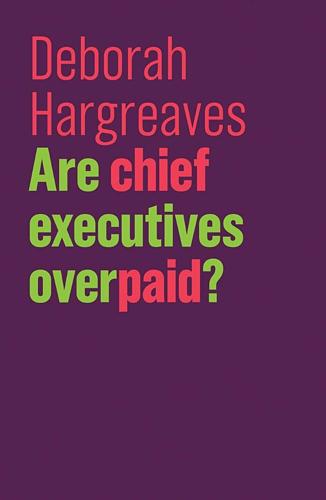
Are Chief Executives Overpaid?
by
Deborah Hargreaves
Published 29 Nov 2018
In one memorable exchange before the Brexit vote, a journalist quoted a woman in the north-east heckling a visiting professor who encouraged his audience to imagine the plunge in GDP if Britain left the EU. ‘That’s your bloody GDP, not ours’, the woman said.2 The woman was right in that the enrichment of those at the top has failed to spread beyond that small group in the way that was envisaged in the 1980s. The trickle-down theory of economics assumed that boosting rewards for people at the top of the income chain would stimulate economic growth as they employed more people and spent their increased income on goods and services. However, the theory has been thoroughly debunked in recent years and disowned by the very institutions that promoted it in the first place, who now say that it has created greater inequality.
…
Similarly, Ronald Reagan came to power during a period of deep recession and stagflation – characterized as double digit economic downturn accompanied by double digit rate of inflation – in 1981. He was convinced that tax cuts for the rich, deregulation of markets and business, and control of the money supply to counter inflation, would improve the economy for all through the so-called ‘trickle-down effect’. President Reagan gave his name to the branch of monetarist economics he popularized – Reaganomics – but much of his legacy has since been called into question. Time men of the year The concentration of wealth among top businessmen has a long legacy in America but a look at the choices made by Time magazine for its person of the year illustrates a flood of value to the top in recent years.
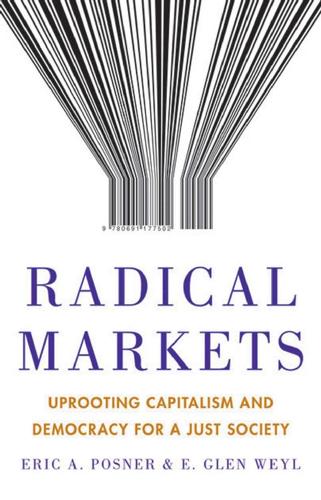
Radical Markets: Uprooting Capitalism and Democracy for a Just Society
by
Eric Posner
and
E. Weyl
Published 14 May 2018
We were promised economic dynamism in exchange for inequality. We got the inequality, but dynamism is actually declining. Call it stagnequality—lower growth combined with rising inequality rather than inflation. It is no surprise, then, that the public has rejected conventional economic wisdom. Conflict Given that leftists have long criticized “trickle-down economics,” it would be natural to expect a leftist populist backlash to stagnequality and a subsequent move to redistribute income. To some extent this prediction has been confirmed by recent events, as summarized in table I.1. Bernie Sanders nearly won the US Democratic primary despite identifying as a socialist earlier in his life and running for president as a social democrat.
…
INDEX Italic page numbers indicate figures and tables abortion, 27, 112–13, 116 Acemoglu, Daron, 240, 316n4 activism, 3, 124, 140, 176–77, 188, 193, 211, 232 Adachi, Kentaro, 80–81, 105–8 Africa, 136, 138 African Americans, 24, 89, 209–10 Airbnb, 70, 117 airlines, 171, 183, 189–91, 194 Akerlof, George, 66–67 algorithms, 208, 214, 219, 221, 281–82, 289–93, 307n7 Allen, Robert C., 240 Amazon, 112, 230–31, 234, 239, 248, 288, 290–91 American Constitution, 86–87 American Federation of Musicians, 210 American Tobacco Company, 174 America OnLine (AOL), 210 Anderson, Chris, 212 antitrust: Clayton Act and, 176–77, 197, 311n25; landlords and, 201–2; monopolies and, 23, 48, 174–77, 180, 184–86, 191, 197–203, 242, 255, 262, 286; resale price maintenance and, 200–201; social media and, 202 Apple, 117, 239, 289 Arginoussai Islands, 83 aristocracy, 16–17, 22–23, 36–38, 84–85, 87, 90, 135–36 Aristotle, 172 Arrow, Kenneth, 92, 303n17 Articles of Confederation, 88 artificial intelligence (AI), 202, 257, 287; Alexa and, 248; algorithms and, 208, 214, 219, 221, 281–82, 289–93; automated video editing and, 208; Cortana and, 219; data capacities and, 236; Deep Blue and, 213; democratization of, 219; diminishing returns and, 229–30; facial recognition and, 208, 216–19; factories for thinking machines and, 213–20; Google Assistant and, 219; human-produced data for, 208–9; marginal value and, 224–28, 247; Microsoft and, 219; neural networks and, 214–19; payment systems for, 224–30; recommendation systems and, 289–90; siren servers and, 220–24, 230–41, 243; Siri and, 219, 248; technofeudalism and, 230–33; techno-optimists and, 254–55, 316n2; techno-pessimists and, 254–55, 316n2; worker replacement and, 223 Athens, 55, 83–84, 131 Atwood, Margaret, 18–19 auctions, xv–xxi, 49–51, 70–71, 97, 99, 147–49, 156–57, 300n34 au pair program, 154–55, 161 Australia, 10, 12, 13, 159, 162 Austrian school, 2 Autor, David, 240 Azar, José, 185, 189, 310n24 Bahrain, 158 banking industry, 182–84, 183, 190 Bank of America, 183, 184 Becker, Gary, 147 Beckford, William, 95 behavioral finance, 180–81 Bénabou, Roland, 236–37 Bentham, Jeremy, 4, 35, 95–96, 98, 132 Berle, Adolf, 177–78, 183, 193–94 Berlin Wall, 1, 140 Berners-Lee, Tim, 210 big data, 213, 226, 293 Bing, xxi BlackRock, 171, 181–84, 183, 187, 191 Brazil, xiii–xvii, 105, 135 Brin, Sergey, 211 broadcast spectrum, xxi, 50–51, 71 Bush, George W., 78 Cabral, Luís, 202 Cadappster app, 31 Caesar, Julius, 84 Canada, 10, 13, 159, 182 capitalism, xvi; basic structure of, 24–25; competition and, 17 (see also competition); corporate planning and, 39–40; cultural consequences of, 270, 273; Engels on, 239–40; freedom and, 34–39; George on, 36–37; growth and, 3 (see also growth, economic); industrial revolution, 36, 255; inequality and, 3 (see also inequality); labor and, 136–37, 143, 159, 165, 211, 224, 231, 239–40, 316n4; laissez-faire, 45; liberalism and, 3, 17, 22–27; markets and, 278, 288, 304n36; Marx on, 239–40; monopolies and, 22–23, 34–39, 44, 46–49, 132, 136, 173, 177, 179, 199, 258, 262; monopsony and, 190, 199–201, 223, 234, 238–41, 255; ownership and, 34–36, 39, 45–49, 75, 78–79; property and, 34–36, 39, 45–49, 75, 78–79; Radical Markets and, 169, 180–85, 203, 273; regulations and, 262; Schumpeter on, 47; shareholders and, 118, 170, 178–84, 189, 193–95; technology and, 34, 203, 316n4; wealth and, 45, 75, 78–79, 136, 143, 239, 273 Capitalism and Freedom (Friedman), xiii Capitalism for the People, A (Luigi), 203 Capra, Frank, 17 Carroll, Lewis, 176 central planning: computers and, 277–85, 288–93; consumers and, 19; democracy and, 89; governance and, 19–20, 39–42, 46–48, 62, 89, 277–85, 288–90, 293; healthcare and, 290–91; liberalism and, 19–20; markets and, 277–85, 288–93; property and, 39–42, 46–48, 62; recommendation systems and, 289–90; socialism and, 39–42, 47, 277, 281 Chetty, Raj, 11 Chiang Kai-shek, 46 China, 15, 46, 56, 133–34, 138 Christensen, Clayton, 202 Chrysler, 193 Citigroup, 183, 184, 191 Clarke, Edward, 99, 102, 105 Clayton Act, 176–77, 197, 311n25 Clemens, Michael, 162 Coase, Ronald, 40, 48–51, 299n26 Cold War, xix, 25, 288 collective bargaining, 240–41 collective decisions: democracy and, 97–105, 110–11, 118–20, 122, 124, 273, 303n17, 304n36; manipulation of, 99; markets for, 97–105; public goods and, 98; Quadratic Voting (QV) and, 110–11, 118–20, 122, 124, 273, 303n17, 304n36; Vickrey and, 99, 102, 105 colonialism, 8, 131 Coming of the Third Reich, The (Evans), 93 common ownership self-assessed tax (COST): broader application of, 273–76; cybersquatters and, 72; education and, 258–59; efficiency and, 256, 261; equality and, 258; globalization and, 269–70; growth and, 73, 256; human capital and, 258–61; immigrants and, 261, 269, 273; inequality and, 256–59; international trade and, 270; investment and, 258–59, 270; legal issues and, 275; markets and, 286; methodology of, 63–66; monopolies and, 256–61, 270, 300n43; objections to, 300n43; optimality and, 61, 73, 75–79, 317n18; personal possessions and, 301n47, 317n18; political effects of, 261–64; predatory outsiders and, 300n43; prices and, 62–63, 67–77, 256, 258, 263, 275, 300n43, 317n18; property and, 31, 61–79, 271–74, 300n43, 301n47; public goods and, 256; public leases and, 69–72; Quadratic Voting (QV) and, 123–25, 194, 261–63, 273, 275, 286; Radical Markets and, 79, 123–26, 257–58, 271–72, 286; taxes and, 61–69, 73–76, 258–61, 275, 317n18; technology and, 71–72, 257–59; true market economy and, 72–75; voting and, 263; wealth and, 256–57, 261–64, 269–70, 275, 286 communism, 19–20, 46–47, 93–94, 125, 278 competition: antitrust policies and, 23, 48, 174–77, 180, 184–86, 191, 197–203, 242, 255, 262, 286; auctions and, xv–xix, 49–51, 70–71, 97, 99, 147–49, 156–57; bargaining and, 240–41, 299n26; democracy and, 109, 119–20; by design, 49–55; elitism and, 25–28; equilibrium and, 305n40; eternal vigilance and, 204; horizontal concentration and, 175; imperfect, 304n36; indexing and, 185–91, 302n63; innovation and, 202–3; investment and, 196–97; labor and, 145, 158, 162–63, 220, 234, 236, 239, 243, 245, 256, 266; laissez-faire and, 253; liberalism and, 6, 17, 20–28; lobbyists and, 262; monopolies and, 174; monopsony and, 190, 199–201, 223, 234, 238–41, 255; ownership and, 20–21, 41, 49–55, 79; perfect, 6, 25–28, 109; prices and, 20–22, 25, 173, 175, 180, 185–90, 193, 200–201, 204, 244; property and, 41, 49–55, 79; Quadratic Voting (QV) and, 304n36; regulations and, 262; resale price maintenance and, 200–201; restoring, 191–92; Section 7 and, 196–97, 311n25; selfishness and, 109, 270–71; Smith on, 17; tragedy of the commons and, 44 complexity, 218–20, 226–28, 274–75, 279, 281, 284, 287, 313n15 “Computer and the Market, The” (Lange), 277 computers: algorithms and, 208, 214, 219, 221, 281–82, 289–93; automation of labor and, 222–23, 251, 254; central planning and, 277–85, 288–93; data and, 213–14, 218, 222, 233, 244, 260; Deep Blue, 213; distributed computing and, 282–86, 293; growth in poor countries and, 255; as intermediaries, 274; machine learning (ML) and, 214 (see also machine learning [ML]); markets and, 277, 280–93; Mises and, 281; Moore’s Law and, 286–87; Open-Trac and, 31–32; parallel processing and, 282–86; prices of, 21; recommendation systems and, 289–90 Condorcet, Marquis de, 4, 90–93, 303n15, 306n51 conspicuous consumption, 78 Consumer Reports magazine, 291 consumers: antitrust suits and, 175, 197–98; central planning and, 19; data from, 47, 220, 238, 242–44, 248, 289; drone delivery to, 220; as entrepreneurs, 256; goods and services for, 27, 92, 123, 130, 175, 280, 292; institutional investment and, 190–91; international culture for, 270; lobbyists and, 262; machine learning (ML) and, 238; monopolies and, 175, 186, 197–98; preferences of, 280, 288–93; prices and, 172 (see also prices); recommendation systems and, 289–90; robots and, 287; sharing economy and, 117; Soviet collapse and, 289; technology and, 287 cooperatives, 118, 126, 261, 267, 299n24 Corbyn, Jeremy, 12, 13 corruption, 3, 23, 27, 57, 93, 122, 126, 157, 262 Cortana, 219 cost-benefit analysis, 2, 244 “Counterspeculation, Auctions and Competitive Sealed Tenders” (Vickrey), xx–xxi Cramton, Peter, 52, 54–55, 57 crowdsourcing, 235 crytocurrencies, 117–18 cybersquatters, 72 data: algorithms and, 208, 214, 219, 221, 281–82, 289–93; big, 213, 226, 293; computers and, 213–14, 218, 222, 233, 244, 260; consumer, 47, 220, 238, 242–44, 248, 289; diamond-water paradox and, 224–25; diminishing returns and, 226, 229–30; distribution of complexity and, 228; as entertainment, 233–39, 248–49; Facebook and, 28, 205–9, 212–13, 220–21, 231–48; feedback and, 114, 117, 233, 238, 245; free, 209, 211, 220, 224, 231–35, 239; Google and, 28, 202, 207–13, 219–20, 224, 231–36, 241–42, 246; investment in, 212, 224, 232, 244; labeled, 217–21, 227, 228, 230, 232, 234, 237; labor movement for, 241–43; Lanier and, 208, 220–24, 233, 237, 313n2, 315n48; marginal value and, 224–28, 247; network effects and, 211, 236, 238, 243; neural networks and, 214–19; online services and, 211, 235; overfitting and, 217–18; payment systems for, 210–13, 224–30; photographs and, 64, 214–15, 217, 219–21, 227–28, 291; programmers and, 163, 208–9, 214, 217, 219, 224; Radical Markets for, 246–49; reCAPTCHA and, 235–36; recommendation systems and, 289–90; rise of data work and, 209–13; sample complexity and, 217–18; siren servers and, 220–24, 230–41, 243; social networks and, 202, 212, 231, 233–36; technofeudalism and, 230–33; under-employment and, 256; value of, 243–45; venture capital and, 211, 224; virtual reality and, 206, 208, 229, 251, 253; women’s work and, 209, 313n4 Declaration of Independence, 86 Deep Blue, 213 DeFoe, Daniel, 132 Demanding Work (Gray and Suri), 233 democracy: 1p1v system and, 82–84, 94, 109, 119, 122–24, 304n36, 306n51; artificial intelligence (AI) and, 219; Athenians and, 55, 83–84, 131; auctions and, 97, 99; basic structure of, 24–25; central planning and, 89; check and balance systems and, 23, 25, 87, 92; collective decisions and, 97–105, 110–11, 118–20, 122, 124, 273, 303n17, 304n36; collective mediocrity and, 96; competition and, 109, 119–20; Declaration of Independence and, 86; efficiency and, 92, 110, 126; elections and, 22, 80, 93, 100, 115, 119–21, 124, 217–18, 296n20; elitism and, 89–91, 96, 124; Enlightenment and, 86, 95; Europe and, 90–96; France and, 90–95; governance and, 84, 117; gridlock and, 84, 88, 122–24, 261, 267; Hitler and, 93–94; House of Commons and, 84–85; House of Lords and, 85; impossibility theorem and, 92; inequality and, 123; Jury Theorem and, 90–92; liberalism and, 3–4, 25, 80, 86, 90; limits of, 85–86; majority rule and, 27, 83–89, 92–97, 100–101, 121, 306n51; markets and, 97–105, 262, 276; minorities and, 85–90, 93–97, 101, 106, 110; mixed constitution and, 84–85; multi-candidate, single-winner elections and, 119–20; origins of, 83–85; ownership and, 81–82, 89, 101, 105, 118, 124; public goods and, 28, 97–100, 107, 110, 120, 123, 126; Quadratic Voting (QV) and, 105–22; Radical Markets and, 82, 106, 123–26, 203; supermajorities and, 84–85, 88, 92; tyrannies and, 23, 25, 88, 96–100, 106, 108; United Kingdom and, 95–96; United States and, 86–90, 93, 95; voting and, 80–82, 85–93, 96, 99, 105, 108, 115–16, 119–20, 123–24, 303n14, 303n17, 303n20, 304n36, 305n39; wealth and, 83–84, 87, 95, 116 Demosthenes, 55 Denmark, 182 Department of Justice (DOJ), 176, 186, 191 deregulation, 3, 9, 24 Desmond, Matthew, 201–2 Dewey, John, 43 Dickens, Charles, 36 digital economy: data producers and, 208–9, 230–31; diamond-water paradox and, 224–25; as entertainment, 233–39; facial recognition and, 208, 216, 218–19; free access and, 211; Lanier and, 208, 220–24, 233, 237, 313n2, 315n48; machine learning (ML) and, 208–9, 213–14, 217–21, 226–31, 234–35, 238, 247, 289, 291, 315n48; payment systems for, 210–13, 221–30, 243–45; programmers and, 163, 208–9, 214, 217, 219, 224; rise of data work and, 209–13; siren servers and, 220–24, 230–41, 243; spam and, 210, 245; technofeudalism and, 230–33; virtual reality and, 206, 208, 229, 251, 253 diversification, 171–72, 180–81, 185, 191–92, 194–96, 310n22, 310n24 dot-com bubble, 211 double taxation, 65 Dupuit, Jules, 173 Durkheim, Émile, 297n23 Dworkin, Ronald, 305n40 dystopia, 18, 191, 273, 293 education, 114; common ownership self-assessed tax (COST) and, 258; data and, 229, 232, 248; elitism and, 260; equality in, 89; financing, 276; free compulsory, 23; immigrants and, 14, 143–44, 148; labor and, 140, 143–44, 148, 150, 158, 170–71, 232, 248, 258–60; Mill on, 96; populist movements and, 14; Stolper-Samuelson Theorem and, 143 efficient capital markets hypothesis, 180 elections, 80; data and, 217–18; democracy and, 22, 93, 100, 115, 119–21, 124, 217–18, 296n20; gridlock and, 124; Hitler and, 93; multi-candidate, single-winner, 119–20; polls and, 13, 111; Quadratic Voting (QV) and, 115, 119–21, 268, 306n52; U.S. 2016, 93, 296n20 Elhauge, Einer, 176, 197 elitism: aristocracy and, 16–17, 22–23, 36–38, 84–85, 87, 90, 135–36; bourgeoisie and, 36; bureaucrats and, 267; democracy and, 89–91, 96, 124; education and, 260; feudalism and, 16, 34–35, 37, 41, 61, 68, 136, 230–33, 239; financial deregulation and, 3; immigrants and, 146, 166; liberalism and, 3, 15–16, 25–28; minorities and, 12, 14–15, 19, 23–27, 85–90, 93–97, 101, 106, 110, 181, 194, 273, 303n14, 304n36; monarchies and, 85–86, 91, 95, 160 Emergency Economic Stabilization Act, 121 eminent domain, 33, 62, 89 Empire State Building, 45 Engels, Friedrich, 78, 240 Enlightenment, 86, 95 entrepreneurs, xiv; immigrants and, 144–45, 159, 256; labor and, 129, 144–45, 159, 173, 177, 203, 209–12, 224, 226, 256; ownership and, 35, 39 equality: common ownership self-assessed tax (COST) and, 258; education and, 89; immigrants and, 257; labor and, 147, 166, 239, 257; liberalism and, 4, 8, 24, 29; living standards and, 3, 11, 13, 133, 135, 148, 153, 254, 257; Quadratic Voting (QV) and, 264; Radical Markets and, 262, 276; trickle down theories and, 9, 12 Espinosa, Alejandro, 30–32 Ethereum, 117 Europe, 177, 201; democracy and, 88, 90–95; European Union and, 15; fiefdoms in, 34; government utilities and, 48; income patterns in, 5; instability in, 88; labor and, 11, 130–31, 136–47, 165, 245; social democrats and, 24; unemployment rates in, 11 Evans, Richard, 93 Evicted (Desmond), 201–2 Ex Machina (film), 208 Facebook, xxi; advertising and, 50, 202; data and, 28, 205–9, 212–13, 220–21, 231–48; monetization by, 28; news service of, 289; Vickrey Commons and, 50 facial recognition, 208, 216–19 family reunification programs, 150, 152 farms, 17, 34–35, 37–38, 61, 72, 135, 142, 179, 283–85 Federal Communications Commission (FCC), 50, 71 Federal Trade Commission (FTC), 176, 186 feedback, 114, 117, 233, 238, 245 feudalism, 16, 34–35, 37, 41, 61, 68, 136, 230–33, 239 Fidelity, 171, 181–82, 184 financial crisis of 2008, 3, 121 Fitzgerald, F.
…
European systems of, 143–44 Taylor, Fred, 280 Tea Party, 3 “Technique for the Measurement of Attitudes” (Likert), 111 technofeudalism, 230–33 technology, 2; artificial intelligence (AI), 202, 208–9, 213, 219–24, 226, 228, 230, 234, 236, 241, 246, 248, 254, 257, 287, 292; automated video editing and, 208; biotechnology, 254; capitalism and, 34, 203, 316n4; climate treaties and, 265; common ownership self-assessed tax (COST) and, 71–72, 257–59; computers, 21 (see also computers); consumers and, 287; cybersquatters and, 72; data and, 210–13, 219, 222–23, 236–41, 244; diminishing returns and, 226, 229–30; distribution of complexity and, 228; facial recognition and, 208, 216–19; growth and, 255; human capital and, 293; hyperlinks and, 210; Hyperloop and, 30–33; immigrants and, 256–57; income distribution of companies in, 223; information, 139, 210; innovation and, 30–32, 34, 71, 172, 187, 189, 202, 258; intellectual property and, 26, 38, 48, 72, 210, 212, 239; Internet and, 21, 27, 51, 71, 210–12, 224, 232, 235, 238–39, 242, 246–48; job displacement and, 222, 253, 316n4; labor and, 210–13, 219, 222–23, 236–41, 244, 251, 253–59, 265, 274, 293, 316n4; machine learning (ML) and, 208–9, 213–14, 217–21, 226–31, 234–35, 238, 247, 289, 291, 315n48; marginal value and, 224–28, 247; markets and, 203, 286–87, 292; medical, 291; Moore’s Law and, 286–87; network effects and, 211, 236, 238, 243; neural nets and, 214–19; overfitting and, 217–18; pencils and, 278–79; programmers and, 163, 208–9, 214, 217, 219, 224; property and, 34, 66, 70–71; Quadratic Voting (QV) and, 264; Radical Markets and, 277, 285–86; rapid advances in, 4, 173; recommendation systems and, 289–90; robots and, 222, 248, 251, 254, 287; sea power and, 131; self-driving cars and, 230; server farms and, 217; siren servers and, 220–24, 230–41, 243; social media and, 231, 236, 251; spam and, 210, 245; surveillance and, 237, 293; thinking machines and, 213–20; wealth and, 254; websites, 151, 155, 221; World Wide Web and, 210 techno-optimists, 254–55, 316n1 techno-pessimists, 254–55, 316n2 TEDz talk, 169 tenant farmers, 37–38, 41 Thaler, Richard, 67 Thales of Miletus, 172 Theory of Price, The (Stigler), 49 Theory of the Leisure Class (Veblen), 78 Three Principles of the People (Sun), 46 Through the Looking-Glass (Carroll), 176 Tirole, Jean, 236–37 Tom Sawyer (Twain), 233, 237 trade barriers, 14 tragedy of the commons, 44 transportation, 136, 139, 141, 174, 207, 288, 291 trickle down theories, 9, 12 Trump, Donald, 12–14, 120, 169, 296n20 Turkey, 15 turnover rate, 58–61, 64, 76 Twain, Mark, 233, 237 Twitter, 117, 221 Uber, xxi, 70, 77, 117, 288 unemployment, 9–11, 190, 200, 209, 223, 239, 255–56 unions, 23, 94, 118, 200, 240–45, 316n4 United Airlines, 171, 191 United Arab Emirates (UAE), 151–52, 158–59 United Kingdom: British East India Company and, 21, 173; Corbyn and, 12, 13; democracy and, 95–96; House of Commons and, 84–85; House of Lords and, 85; labor and, 133, 139, 144; Labor Party and, 45; national health system of, 290–91; Philosophical Radicals and, 95; rationing in, 20; voting and, 96 United States: American Constitution and, 86–87; American Independence and, 95; Articles of Confederation and, 88; checks and balances system of, 87; Civil War and, 88; Cold War and, xix, 25, 288; common ownership self-assessed tax (COST) and, 71–76; democracy and, 86–90, 93, 95; Gilded Age and, 174, 262; gun rights and, 15, 90; H1–B program and, 149, 154, 162–63; income distribution in, 4–6; Jackson and, 14; labor and, 9–10, 130, 135–54, 157–61, 164–65, 210, 222; liberalism and, 24 (see also liberalism); lobbyists and, 262; Long Depression of, 36; markets and, 272, 288, 290; monopolies and, 21; New Deal and, 176, 200; Nixon and, 288; Occupy Wall Street and, 3; political campaign contributions and, 15; political corruption and, 27; populist tradition of, 12; primary system and, 93; Progressive movement in, 45; property and, 36, 38, 45, 47–48, 51, 71–76; Radical Markets and, 177, 182–83, 196, 201; religious liberty and, 15; Revolutionary War and, 88; stop-and-frisk law and, 89; technology and, 71–72; Trump and, 12–14, 120, 169, 296n20 United States v.

Inequality and the 1%
by
Danny Dorling
Published 6 Oct 2014
Horsey, ‘Obscenely high CEO salaries are stark marker of U.S. wealth gap’, Los Angeles Times, 16 April 2014. 13. World Bank, ‘Ending poverty requires more than growth, says WBG’, World Bank Group (WBG) press release, 11 April 2014, at worldbank.org. 14. Z. Goldfarb and M. Boorstein, ‘Pope Francis Denounces “Trickle-Down” Economic Theories in Critique of Inequality’, Washington Post, 26 November 2013. 15. M. Haddad, ‘The Perfect Storm: Economic Stagnation, the Rising Cost of Living, Public Spending Cuts, and the Impact on UK Poverty’, Oxfam, 2012, at policy-practice.oxfam.org.uk. 16. B. Milanovic, The Haves and the Have Nots: A Brief and Idiosyncratic History of Global Inequality, (New York: Basic Books, 2012). 17.
…
In 2013 Daniel Boffey in the Observer reported how the incomes of the 1 per cent were moving away from the rest of the 10 per cent and how ‘a financial adviser and private wealth manager … was photographed last week spending £330,000 on a 30l bottle of champagne at the Monaco grand prix’.11 In 2014 David Horsey in the Los Angeles Times explained how wrong it was that a school teacher in California makes almost the same working for a year as the CEO of Oracle Corporation makes in an hour.12 A week before David’s article the World Bank had issued guidance stating that without a great reduction in inequality no amount of economic growth would reduce poverty.13 Source: Emmanuel Saez, 2013 Figure 3.1 Top incomes in the USA, 1913–2013: 1 per cent, next 4 per cent, and rest of the 10 per cent The Making of a Perfect Storm Some people continue to defend trickle-down theories which assume that economic growth, encouraged by a free market, will inevitably succeed in bringing about greater justice and inclusiveness in the world. This opinion, which has never been confirmed by the facts, expresses a crude and naive trust in the goodness of those wielding economic power and in the sacralized workings of the prevailing economic system.
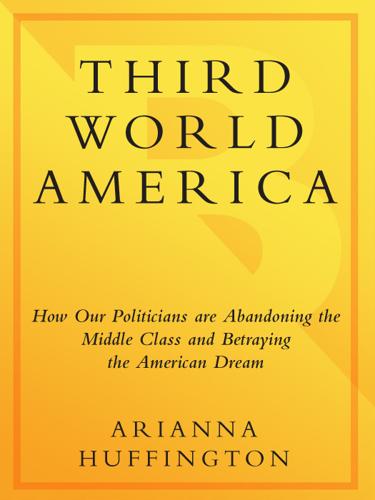
Third World America: How Our Politicians Are Abandoning the Middle Class and Betraying the American Dream
by
Arianna Huffington
Published 7 Sep 2010
The rate for those in the middle income range was 9 percent—not far off the national average. The rate for those in the bottom 10 percent of income was a staggering 31 percent. These numbers, according to the Wall Street Journal’s Robert Frank, “raise questions about the theory behind what is informally known as ‘trickle down’ economics, since full employment at the top doesn’t seem to be translating into more jobs below.”18 In fact, these numbers do more than raise questions—they also supply the answers. Does anyone believe that the sense of urgency coming out of Washington wouldn’t be wildly different if the unemployment rate for the top 10 percent of income earners was 31 percent?
…
Along the way, the social contract—especially the subsections protecting workers, poor people, and our air, water, and oceans—was fed into a shredder. Starting with the New Deal, we began constructing a social safety net to help the most vulnerable among us. But who needed a safety net when the laws of supply and demand were there to protect us, when the trickle-down theory would provide sustenance for us all? The missing tenet in this new free-market fundamentalism was the recognition, central to capitalism, that businessmen have responsibilities above and beyond the bottom line. Alfred Marshall, one of the founding fathers of modern capitalism, in an address to the British Economics Association in 1890, called it “economic chivalry.”15 He explained that “the desire of men for approval of their own conscience and for the esteem of others is an economic force of the first order of importance.”

McMindfulness: How Mindfulness Became the New Capitalist Spirituality
by
Ronald Purser
Published 8 Jul 2019
Instead, the practice is being sold to executives as a way to de-stress, improve productivity and focus, and bounce back from working eighty-hour weeks. They may well be “meditating,” but it works like taking an aspirin for a headache. Once the pain goes away, it is business as usual. Even if individuals become nicer people, the corporate agenda of maximizing profits does not change. Trickle-down mindfulness, like trickle-down economics, is a cover for the maintenance of power. Mindfulness is hostage to the neoliberal mindset: it must be put to use, it must be proved that it “works,” it must deliver the desired results. This prevents it being offered as a tool of resistance, restricting it instead to a technique for “selfcare.”
…
And that’s the crux of the supposed revolution: the world is slowly changed — one mindful individual at a time. This political philosophy is oddly reminiscent of George W. Bush’s “compassionate conservatism.” With the retreat to the private sphere, mindfulness becomes a religion of the self. The idea of a public sphere is being eroded, and any trickle-down effect of compassion is by chance. As a result, notes the political theorist Wendy Brown, “the body politic ceases to be a body, but is, rather, a group of individual entrepreneurs and consumers.”7 Mindfulness, like positive psychology and the broader happiness industry, has depoliticized and privatized stress.

Vanishing New York
by
Jeremiah Moss
Published 19 May 2017
The ideology crystallized in the 1990s, and by the dawn of the twenty-first century it had become a fait accompli of globalized life, largely unquestioned, barely visible, and resistant to critique. It has become the air we breathe. Both Democrat and Republican, neoliberals believe in the unfettered free market, deregulation, privatization, reduction in government, and trickle-down economics. They often deny that this powerful system even exists. As Naomi Klein points out in The Shock Doctrine, “the ideology is a shape-shifter, forever changing its name and switching identities.” Call it free-market fundamentalism, globalization, free trade, laissez-faire, it’s all neoliberalism.
…
The Post called the choice “a strong message of class consciousness that many listeners took to be a slap at the current billionaire mayor, if not all wealthy New Yorkers.” The slapping continued into Inauguration Day. In his address at City Hall, de Blasio spoke critically of the luxury city, the 1 percent, and trickle-down economics, saying, “We are called to put an end to economic and social inequalities that threaten to unravel the city we love. And so today, we commit to a new progressive direction in New York.” He invoked the names of Al Smith, Fiorello La Guardia, and Eleanor Roosevelt. Public Advocate Letitia James, the first woman of color elected to citywide office, put a sharper point on it, saying, “We live in a gilded age of inequality where decrepit homeless shelters and housing developments stand in the neglected shadow of gleaming multimillion-dollar condos.”
…
And again, in another radio interview, “If we could get every billionaire around the world to move here it would be a godsend that would create a much bigger income gap.” For the economic elite, billionaires are the saviors of the city. They consume goods and pay high taxes, the reasoning goes, and that trickles down to everyone. During the Reagan years, when trickle-down theory took hold, economist John Kenneth Galbraith likened it to the horse-and-sparrow theory of the first Gilded Age, explaining, “If you feed the horse enough oats, some will pass through to the road for the sparrows.” At least old Marie Antoinette offered cake. Attracted by generous tax breaks and other incentives, the oligarchs heeded Bloomberg’s call.

The Great Divergence: America's Growing Inequality Crisis and What We Can Do About It
by
Timothy Noah
Published 23 Apr 2012
There can be no question that Reagan and his Republican White House successors, in attempting to reduce government’s size, made it less beneficial to people at lower income levels and more accommodating to people at higher income levels. When Reagan publicly embraced supply-side theory (a since-discredited1 notion that lowering marginal income-tax rates would stimulate sufficient economic growth that the tax cut would pay for itself), his critics characterized it as “trickle-down economics,” a Marie Antoinetteish fantasy that tax cuts for the rich would somehow benefit everybody else. Reagan’s budget chief, David Stockman, later conceded the point when he stated, in a controversial 1981 Atlantic Monthly profile by William Greider, that the president’s bill phasing in across-the-board cuts in income tax rates was really “a Trojan horse to bring down the top rate.”
…
Reagan’s budget chief, David Stockman, later conceded the point when he stated, in a controversial 1981 Atlantic Monthly profile by William Greider, that the president’s bill phasing in across-the-board cuts in income tax rates was really “a Trojan horse to bring down the top rate.” Stockman elaborated: “It’s kind of hard to sell ‘trickle down,’ so the supply-side formula was the only way to get a tax policy that was really ‘trickle down.’ Supply-side is ‘trickle-down’ theory.”2 That same year, when congressional leaders asked President Reagan how he intended to make good on his promise to cut federal spending, he repeated a cherished, highly exaggerated, and racially inflammatory campaign chestnut about a “Chicago welfare queen” with “eighty names, thirty addresses, twelve Social Security cards,” and “four nonexisting deceased husbands” (on whom she collected veterans benefits) who amassed a tax-free income of more than $150,000.
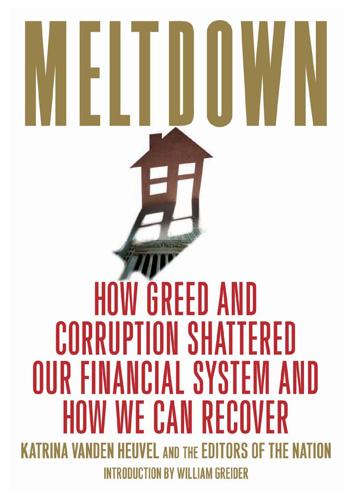
Meltdown: How Greed and Corruption Shattered Our Financial System and How We Can Recover
by
Katrina Vanden Heuvel
and
William Greider
Published 9 Jan 2009
With lack of oversight and transparency the cause of the current problem, how could they make a proposal so short in both? If a quick consensus is required, why not include provisions to stop the source of bleeding, to aid the millions of Americans that are losing their homes? Why not spend as much on them as on Wall Street? Do they still believe in trickle-down economics, when for the past eight years money has been trickling up to the wizards of Wall Street? Why not enact bankruptcy reform, to help Americans write down the value of the mortgage on their overvalued home? No one benefits from these costly foreclosures. The administration is once again holding a gun at our head, saying, “My way or the highway.”
…
I imagined yet another financial bubble floating down from Wall Street, filled with the gelatinous slime of adjustable interest rates; one that would inevitably pop somewhere over Poor People, U.S.A., blanketing the unsuspecting citizens below. I knew the country’s economic situation was bad, and as usual, the poor would suffer the most. However, I did not foresee the trickle-down effect of the subprime fiasco where even my peers—recent college graduates and first time homeowners—would feel the sting from predatory lenders. “They go after young adults because they know we have to start building our credit and that we need money,” says 25-year-old Vanessa Valenzuela from Norwalk, California.
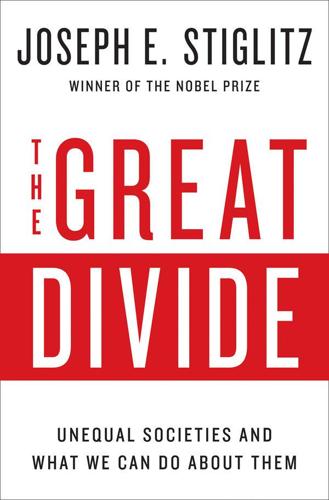
The Great Divide: Unequal Societies and What We Can Do About Them
by
Joseph E. Stiglitz
Published 15 Mar 2015
Today, inequality is growing dramatically again, and the past three decades or so have proved conclusively that one of the major culprits is trickle-down economics—the idea that the government can just step back and if the rich get richer and use their talents and resources to create jobs, everyone will benefit. It just doesn’t work; the historical data now prove that. But it has taken us far too long as a country to understand this danger. Changes in the distribution of income and wealth occur slowly, which is why it requires a grand historical perspective of the kind that Piketty provides to get a feel for what is happening. Ironically enough, the final proof debunking this very Republican idea of trickle-down economics has come from a Democratic administration.
…
It is an interview conducted by Cullen Murphy, my editor at Vanity Fair, in which I respond to one of the claims made by conservatives, that the rich are net job creators. Taking money away from the rich—or even forcing the rich to pay their fair share of taxes—would, in this view, be counterproductive. Ordinary Americans would suffer. This is just a 21st-century version of the old trickle-down economics, attempting to defend societal inequalities. My view was that trickle-down economics was totally wrong. Around the world there is a wealth of creativity, an abundance of entrepreneurship, if there is adequate demand (and if certain other preconditions are satisfied, such as access to capital and adequate infrastructure). In this view, the real “job creators” are consumers; and the reason that the American and European economies have not been creating jobs is that stagnant incomes mean stagnant demand.
…
Had the banks been charged what they should have been, our national debt would be lower and we would have more money to invest in education, technology, infrastructure—investments that would have led to a stronger economy with more shared prosperity. Like so many of the economic policies designed by the 1 percent and for the 1 percent, it relied on trickle-down economics: throw enough money at the banks, and everyone will benefit. It didn’t work out that way, and predictably so.15 I had argued, by contrast, that we should have tried a bit of trickle-up economics—help those in the middle and the bottom, and the entire economy will benefit. The crisis had begun in housing, and so it was natural to suggest that a robust recovery would require stemming the tide of foreclosures.
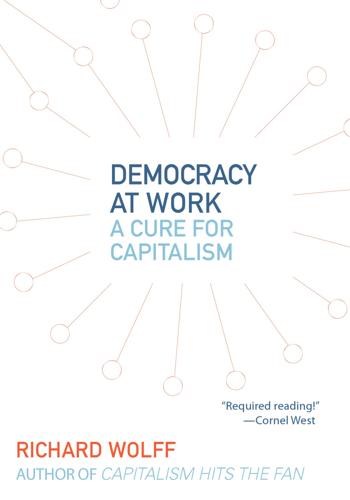
Democracy at Work: A Cure for Capitalism
by
Richard D. Wolff
Published 1 Oct 2012
This program seeks to save and bolster the largest businesses (both financial and nonfinancial), the stock markets, and the richest 5 percent of individuals who depend on those businesses and markets. These beneficiaries of public policy are also the key financiers for US political parties, candidates, and officials. The latter devise and execute this rather classic example of a “trickle-down economics” program. Large and direct government assistance for business and the rich is supposed to “trickle down” and provide a recovery for the mass of people, too. However, the trickle-down economics program hasn’t worked—and for reasons that are not hard to discern. The government-enhanced wealth at the top does not “trickle down” in the real world. Instead, boards of directors continue to see their self-interest in not sharing the recovery funds poured into their hands.
…
The purpose of these purchases was to enlarge the capital reserves of these corporations so that they would be more creditworthy and thus better able to obtain loans. A very small portion of funds went to the Making Home Affordable Program, which was introduced by the Obama administration in 2009 to assist homeowners facing foreclosures. However, this program was never well-funded or successful. TARP was a classic example of trickle-down economics: priming the pump mostly at the top of the economic pyramid in the hope that the resulting flow might trickle down to everyone else and thereby overcome the economic downturn. But the expected trickle failed to materialize. Calls for banks to use their government assistance to renew lending to small and medium-sized businesses and to individuals went unheeded.
…
This helped to finance the fiscal stimulus for the bottom—a kind of trickle-up economics—without exclusive dependence on fast-rising government debt. The strengths and weaknesses of FDR’s response to capitalist crisis and the strengths and weaknesses of the crisis responses deployed since 2007 have led many to prefer trickle-up to trickle-down economic policies. However, whatever a reasonable person’s preference, the tried-and-tested alternative program to debt and austerity certainly merited discussion and debate by policy makers in the United States after the crisis broke in 2007. Yet that never happened. Republicans and Democrats together repressed the few moves in that direction by various social groups and a handful of dissidents in Congress.

Bricks & Mortals: Ten Great Buildings and the People They Made
by
Tom Wilkinson
Published 21 Jul 2014
This bit of scaremongering was, characteristically, a sales pitch – he meant that unless governments levelled the playing field by improving the housing of their citizens, they’d have an insurrection on their hands. In the eighteenth century British philosopher Bernard Mandeville challenged such views with his Fable of the Bees, which championed the consumerist, trickle-down doctrine of Private Vices, Publick Benefits, as the subtitle of his poem puts it. He imagines human society as an enormous hive held together by the satisfaction of greed, pride and luxury: ‘Thus every part was full of vice / Yet the whole mass a paradise.’ And what would happen if society were to turn over a new leaf?

People, Power, and Profits: Progressive Capitalism for an Age of Discontent
by
Joseph E. Stiglitz
Published 22 Apr 2019
During my years in the Clinton administration—one seemingly concerned about the plight of blue-collar workers—it was hard, nonetheless, to find an economist who was worried about the impact of globalization on unskilled real wages. (Labor Secretary Robert Reich was a notable exception.) Seemingly, even good economists wanted to believe globalization was good for all—even if we didn’t introduce compensatory policies. Trickle-down economics, even by then, had become deeply ingrained. 40.That is, whether it was a delusion with trickle-down economics referred to in the previous note, or a delusion that, while recognizing that workers were actually worse off, the setback was only temporary. 41.An argument often put forward for regressive tax measures (which benefit the rich more than the poor), is that such measures give money to the rich, who are the job creators, and their job creation benefits all.
…
The benefits of reducing inequality are especially large when inequality reaches the extremes that it has in America and when it is created in the ways that it is, for instance, through exploitation of market power or discrimination. Thus, the goal of increased income equality does not come with a bill attached. We also need to abandon the mistaken faith in trickle-down economics, the notion that if the economy grows, everyone will benefit. This notion underpinned the supply-side economics policies of Republican presidents from Ronald Reagan on. The record is clear that the benefits of growth simply do not trickle down. Look at the broad swath of the population in America and elsewhere in the advanced world living in anger and despair after decades of the near stagnation in their incomes produced by supply-side policies, even as GDP has increased.
…
We have gone too far down the wrong road for that to be possible. We have to construct a new social contract that enables everyone in our rich country to live a decent, middle-class life. This book then is about this alternative way forward. Another world is possible—based not on the market fundamentalist belief in markets and trickle-down economics that got us into this mess; nor on the nativist, populist Trumpian economics, which repudiates the international rule of law, substituting “globalization with a club,” an approach which will actually make America worse off. I am hopeful that in the long run truth will win out: Trump’s policies will fail, and Trump’s supporters, both the corporates at the top and the workers whose interests he claims to be advancing, will begin to see it.
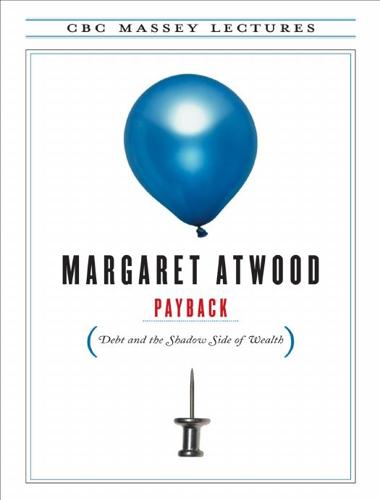
Payback: Debt and the Shadow Side of Wealth
by
Margaret Atwood
Published 15 Mar 2007
In general, the plots go in for overkill — quite literally — since one revenge leads to another, and the bodies pile up at an almost industrial rate. It’s not just tit for tat, it’s tit-for-tat for tit-for-tat for rat-a-tat-tat, as in the early crime stories of Dashiell Hammett. In previous chapters, I mentioned the trickle-down theory of wealth and the trickle-down theory of debt, but the Revenge Tragedy illustrates the trickle-down theory of revenge: relatively innocent bystanders get the stuff splashed all over them. Hamlet is among other things a Revenge Tragedy, but as usual Shakespeare takes something from elsewhere and redoes it in a surprising way: it’s the slowness of the revenge, not its rapidity, that results in the deadbody pyramid at play’s end.
…
When the great house tumbles down, these miserable wretches fall under it unnoticed: as they say in the old legends, before a man goes to the devil himself, he sends plenty of other souls thither. The trickle-down theory of economics has it that it’s good for rich people to get even richer because some of their wealth will trickle down, through their no doubt lavish spending, upon those who stand below them on the economic ladder. Notice that the metaphor is not that of a gushing waterfall but of a leaking tap: even the most optimistic endorsers of this concept do not picture very much real flow, as their language reveals. But everything in the human imagination and consequently in human life has both a positive and a negative version, and if the trickle-down theory of wealth is the positive, the negative is the trickle-down theory of debt.
…
But everything in the human imagination and consequently in human life has both a positive and a negative version, and if the trickle-down theory of wealth is the positive, the negative is the trickle-down theory of debt. The debts that trickle down from large debtors may not in themselves be large, but they are large for those upon whom they trickle. Poor Mr. Raggles, from whom the Crawleys rent their house without ever paying for it, is utterly and completely ruined when the Crawley household falls apart and its members decamp. Vanity Fair is named after the city of that same name in John Bunyan’s The Pilgrim’s Progress, where it stands not only for the “vanity of vanities, all is vanity” of the Book of Ecclesiastes, but especially for the realm of worldly goods, both material and spiritual, as well as for the state of mind in which absolutely everything is for sale.
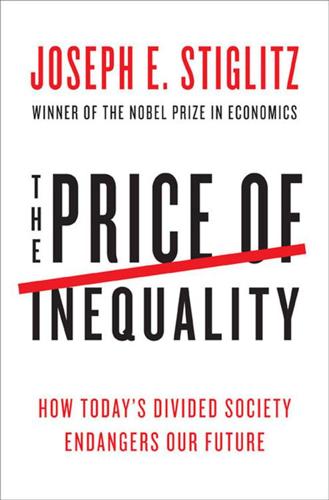
The Price of Inequality: How Today's Divided Society Endangers Our Future
by
Joseph E. Stiglitz
Published 10 Jun 2012
It is thus not surprising that our growth has been stronger in periods in which inequality has been lower and in which we have been growing together.19 This was true not only in the decades after World War II but, even in more recent times, in the 1990s.20 Trickle-down economics Inequality’s apologists—and they are many—argue to the contrary that giving more money to the top will benefit everyone, partly because it would lead to more growth. This is an idea called trickle-down economics. It has a long pedigree—and has long been discredited. As we’ve seen, higher inequality has not led to more growth, and most Americans have actually seen their incomes sink or stagnate. What America has been experiencing in recent years is the opposite of trickle-down economics: the riches accruing to the top have come at the expense of those down below.21 One can think of what’s been happening in terms of slices of a pie.
…
What America has been experiencing in recent years is the opposite of trickle-down economics: the riches accruing to the top have come at the expense of those down below.21 One can think of what’s been happening in terms of slices of a pie. If the pie were equally divided, everyone would get a slice of the same size, so the top 1 percent would get 1 percent of the pie. In fact, they get a very big slice, about a fifth of the entire pie. But that means everyone else gets a smaller slice. Now, those who believe in trickle-down economics call this the politics of envy. One should look not at the relative size of the slices but at the absolute size. Giving more to the rich leads to a larger pie, so though the poor and middle get a smaller share of the pie, the piece of pie they get is enlarged. I wish that were so, but it’s not.
…
In fact, it’s the opposite: as we noted, in the period of increasing inequality, growth has been slower—and the size of the slice given to most Americans has been diminishing.22 Young men (aged twenty-five to thirty-four) who are less educated have an even harder time; those who have only graduated from high school have seen their real incomes decline by more than a quarter in the last twenty-five years.23 But even households of individuals with a bachelor’s degree or higher have not done well—their median income (adjusted for inflation) fell by a tenth from 2000 to 2010.24 (Median income is the income such that half have an income greater than that number, half less.) We’ll show later that whereas trickle-down economics doesn’t work, trickle-up economics may: all—even those at the top—could benefit by giving more to those at the bottom and the middle. A snapshot of America’s inequality The simple story of America is this: the rich are getting richer, the richest of the rich are getting still richer, 25 the poor are becoming poorer and more numerous, and the middle class is being hollowed out.
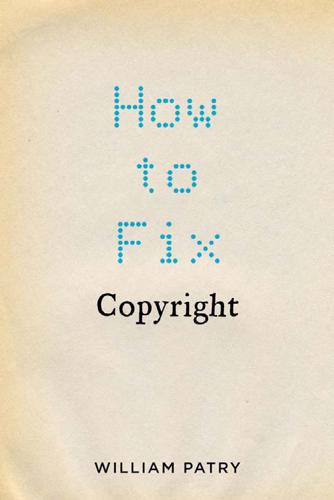
How to Fix Copyright
by
William Patry
Published 3 Jan 2012
109 performers sculptors, illustrators—shows that individuals engaged in these activities have lower incomes than others with similar training and education, have episodic employment, and fewer benefits such as health care.112 Trickle-down economics works just as poorly in the copyright market as it does in the general economy. The term “trickle-down” has been attributed to humorist Will Rogers, who said during the Great Depression of the late 1920s to 1930s that the “money was all appropriated for the top in hopes that it would trickle down to the needy. Mr. Hoover didn’t know that money trickled up. Give it to the people at the bottom and the people at the top will have it before night, anyhow. But it will at least have passed through the poor fellow’s hand.”113 Trickle-down economics is based on an ideology that reducing taxes on the already wealthy will cause them to re-invest the saved amount in new productive endeavors, especially hiring new workers, leading in turn to long-term higher economic growth for everyone.
…
Figure 3.1 sets out (1) the actual 110 HOW TO FIX COPYRIGHT distribution of wealth in the United States; (2) what Americans think the actual distribution is; and (3) what Americans say they would like the distribution to be. top 20% second 20% third 20% fourth 20% bottom 20% ACTUAL DISTRIBUTION OF WEALTH WHAT AMERICANS THINK IT IS WHAT THEY WOULD LIKE IT TO BE 0 FIGURE 3.1 20 40 60 80 100 Actual Distribution of Wealth in the United States Source: Michael I. Norton, Harvard Business School; Dan Ariely, Duke University Here are a few facts about how the income gap came about and how trickle-down economics is simply redistribution of wealth upwards.When Ronald Reagan began his Presidency in January 1981, the top marginal tax rate was dramatically reduced from 69.125 percent to 39.1 percent.115 The effective tax rate for a head of household earning the equivalent of $1 million on non-investment income in 2010 dollars is now 32.4 percent.116 Where did the money saved from lower taxes go?
…
After decades of studying authors’ and artists’ actual living conditions, economist Ruth Towse concluded that “strengthening copyright has not apparently resulted in boosting royalty payments.”123 Copyright is a trickle-up system in which increasing rights results in more money flowing up, away from creators. 114 HOW TO FIX COPYRIGHT Trickle-down Economics and Restoration of Cultural Works One justification for the current, almost perpetual, term of copyright concentrated in large corporations is that longer rights will cause them to invest in restoring cultural works. Here is a version of the argument given by Jack Valenti before the U.S. House of Representatives in 1995, in advocating for extending the term of copyright for twenty more years for existing motion pictures.

Chokepoint Capitalism
by
Rebecca Giblin
and
Cory Doctorow
Published 26 Sep 2022
That would facilitate a rich range of public interest activities that wouldn’t otherwise be possible, while simultaneously opening up a vast number of new paid uses. Big copyright buyers will tell you that, if rights reverted after twenty-five years, the system of cultural production would collapse because they could no longer reinvest their windfall profits into producing more works. But that’s just the same debunked trickle-down economics that oligarchs always insist really is true … this time. In the model we’ve sketched, the money would still be there—just allocated a bit differently from how it is now. So long as they have access to cash or capital markets, copyright buyers will continue funding the investments they think will make a profit and continue rejecting those they think will flop.
…
Monopolies bear much of the blame for this, too, especially when it comes to education, healthcare, and housing, which have all outpaced wages over the last half century. Over the last forty years, college tuition in the US has risen four times faster than inflation, and eight times faster than household income, leaving forty-five million Americans with $1.5 trillion in debt.13 This has trickle-down effects: “Balances carried further into mid-life, or taken on later in life to finance further education or a family member’s education, impairing economic wellbeing for a widening and diversifying swathe of the population, inhibiting savings, increasing precarity, and draining the very incomes the student debt was supposed to increase.”14 In health, monopolies are everywhere: emergency care, ambulance rides, kidney dialysis, nursing homes, and even saline bags.15 Health insurance is particularly concentrated, and, for families, premiums average over $20,000 a year—often with high deductibles if they actually have to use it.16 Employers pick up much of that cost for those in jobs with benefits, but that too is a form of lock-in: leaving an abusive job doesn’t just mean losing pay but potentially risks everything if someone in your family lives with a chronic illness, falls ill, or has an accident before you find a replacement.
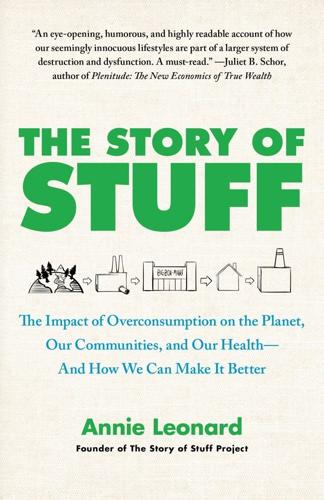
The Story of Stuff: The Impact of Overconsumption on the Planet, Our Communities, and Our Health-And How We Can Make It Better
by
Annie Leonard
Published 22 Feb 2011
The economy functions as a system, too, which is why there can be a domino effect inside it, as when people lose their jobs and then reduce their spending, which means that factories can’t sell as much Stuff, which means that more people get laid off... which is exactly what happened in 2008 and 2009. Systems thinking as related to the economy also explains a theory like “trickle-down” economics, in which benefits like tax cuts are given to the wealthy so that they’ll invest more in businesses, which would hypothetically in turn create more jobs for the middle and lower classes. If you didn’t believe these parts (money, jobs, people across classes) operated within a system, there’d be no basis for the trickle-down theory, or for beliefs about the interplay between supply and demand. All these examples assume interrelated parts within a larger system.
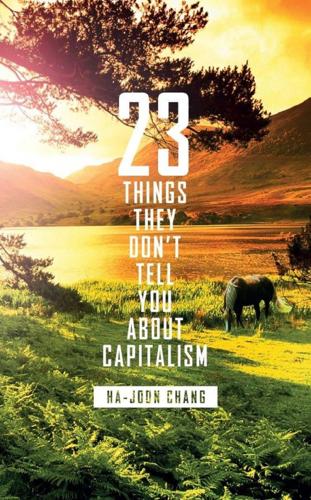
23 Things They Don't Tell You About Capitalism
by
Ha-Joon Chang
Published 1 Jan 2010
When you learn that large and active governments can promote, rather than dampen, economic dynamism, you will see that the widespread distrust of government is unwarranted (see Things 12 and 21). Knowing that we do not live in a post-industrial knowledge economy will make you question the wisdom of neglecting, or even implicitly welcoming, industrial decline of a country, as some governments have done (see Things 9 and 17). Once you realize that trickle-down economics does not work, you will see the excessive tax cuts for the rich for what they are – a simple upward redistribution of income, rather than a way to make all of us richer, as we were told (see Things 13 and 20). What has happened to the world economy was no accident or the outcome of an irresistible force of history.
…
It may sound harsh, but in the long run poor people can become richer only by making the rich even richer. When you give the rich a bigger slice of the pie, the slices of the others may become smaller in the short run, but the poor will enjoy bigger slices in absolute terms in the long run, because the pie will get bigger. What they don’t tell you The above idea, known as ‘trickle-down economics’, stumbles on its first hurdle. Despite the usual dichotomy of ‘growth-enhancing pro-rich policy’ and ‘growth-reducing pro-poor policy’, pro-rich policies have failed to accelerate growth in the last three decades. So the first step in this argument – that is, the view that giving a bigger slice of pie to the rich will make the pie bigger – does not hold.
…
Index active economic citizenship xvi, xvii Administrative Behaviour (Simon) 173–4 Africa see Sub-Saharan Africa AIG 172–3 Air France 131 AOL 132–3 apartheid 214–16 Argentina education and growth 181 growth 73 hyperinflation 53–4 Austria geography 121 government direction 132 protectionism 70 balance of payments 97–100, 101 Baldursson, Fridrik 235 Bangladesh entrepreneurship 159–60 and microfinance 161–2, 163, 164 Bank of England 252 (second) Bank of the USA 68 Bank for International Settlements (BIS) 262 bankruptcy law 227–8 Barad, Jill 154 Bard College 172 Bateman, Milford 162 Baugur 233 Baumol, William 250 Bebchuk, Lucian 154 behaviouralist school 173–4 Belgium ethnic division 122 income inequality 144, 146 manufacturing 70, 91 R&D funding 206 standard of living 109 Benin, entrepreneurship 159 Bennett, Alan 214 Besley, Tim 246 big government 221–2, 260–61 and growth 228–30 see also government direction; industrial policy BIS (Bank for International Settlements) 262 Black, Eugene 126 Blair, Tony 82, 143, 179 borderless world 39–40 bounded rationality theory 168, 170, 173–7, 250, 254 Brazilian inflation 55 Britain industrial dominance/decline 89–91 protectionism 69–70 British Academy 246–7 British Airways 131 brownfield investment 84 Brunei 258 Buffet, Warren 30, 239 Bukharin, Nikolai 139 Bunning, Senator Jim 8 Burkina Faso (formerly Upper Volta) 121, 200 Bush, George W. 8, 158, 159, 174 Bush Sr, George 207 business sector see corporate sector Cameroon 116 capital mobility 59–60 nationality 74–5, 76–7 capitalism Golden Age of 142, 147, 243 models 253–4 capitalists, vs. workers 140–42 captains of industry 16 Carnegie, Andrew 15 Case, Steve 132–3 Cassano, Joe 172–3 CDOs (collateralized debt obligations) 238 CDSs (credit default swaps) 238 CEO compensation see executive pay, in US Cerberus 77–8 Chavez, Hugo 68 chess, complexity of 175–6 child-labour regulation 2–3, 197 China business regulation 196 communes 216 economic officials 244 industrial predominance 89, 91, 93, 96 as planned economy 203–4 PPP income 107 protectionism and growth 63–4, 65 Chocolate mobile phone 129 Chrysler 77–8, 191 Chung, Ju-Yung 129 Churchill, Winston 253 climate factors 120–21 Clinton, Bill 143 cognitive psychology 173–4 collateralized debt obligations (CDOs) 238 collective entrepreneurship 165 communist system 200–204 Concorde project 130–31 conditions of trade 5 Confucianism 212–13 Congo (Democratic Republic) 116, 121 consumption smoothing 163 cooperatives 166 corporate sector importance 190–91 planning in 207–9 regulation effect 196–8 suspicion of 192–3 see also regulation; transnational corporations Cotton Factories Regulation Act 1819 2 credit default swaps (CDSs) 238 Crotty, Jim 236–8 culture issues 123, 212–13 Daimler-Benz 77–8 Darling, Alistair 172 de-industrialization 91 balance of payments 97–100, 101 causes 91–6 concerns 96–9 deflation, Japan 54 deliberation councils 134 Denmark cooperatives 166 protectionism 69 standard of living 104, 106, 232–3 deregulation see under regulation derivatives 239 Detroit car-makers 191–2 developing countries entrepreneurship and poverty 158–60 and free market policies 62–3, 71–3, 118–19, 261–2 policy space 262–3 digital divide 39 dishwashers 34 distribution of income see downward redistribution of income; income irregularity; upward redistribution of income domestic service 32–3 double-dip recession xiii downward redistribution of income 142–3, 146–7 Dubai 235 Duménil, Gérard 236 East Asia economic officials 249–50 educational achievements 180–81 ethnic divisions 122–3 government direction 131–2 growth 42, 56, 243–4 industrial policy 125–36, 205 École Nationale d’Administration (ENA) 133 economic crises 247 Economic Policy Institute (EPI) 144, 150 economists alternative schools 248–51 as bureaucrats 242–3 collective imagination 247 and economic growth 243–5 role in economic crises 247–8 Ecuador 73 Edgerton, David 37 Edison, Thomas 15, 165, 166 education and enterprise 188–9 higher education effect 185–8 importance 178–9 knowledge economy 183–5 mechanization effect 184–5 outcome equality 217–18 and productivity 179–81 relevance 182–3 Elizabeth II, Queen 245–7 ENA (École Nationale d’Administration) 133 enlightened self-interest 255–6 entrepreneurship, and poverty 157–8 and collective institutions 165–7 as developing country feature 158–60 finance see microfinance environmental regulations 3 EPI (Economic Policy Institute) 144, 150 equality of opportunity 210–11, 256–7 and equality of outcome 217–20, 257 and markets 213–15 socio-economic environment 215–17 equality of outcome 217–20 ethnic divisions 122–3 executive pay and non-market forces 153–6 international comparisons 152–3 relative to workers’ pay 149–53, 257 US 148–9 fair trade, vs. free trade 6–7 Fannie Mae 8 Far Eastern Economic Review 196 Federal Reserve Board (US) 171, 172, 246 female occupational structure 35–6 Fiat 78 financial crisis (2008) xiii, 155–6, 171–2, 233–4, 254 financial derivatives 239, 254–5 financial markets deregulation 234–8, 259–60 effects 239–41 efficiency 231–2, 240–41 sector growth 237–9 Finland government direction 133 income inequality 144 industrial production 100 protectionism 69, 70 R&D funding 206 welfare state and growth 229 Fischer, Stanley 54 Ford cars 191, 237 Ford, Henry 15, 200 foreign direct investment (FDI) 83–5 France and entrepreneurship 158 financial deregulation 236 government direction 132, 133–4, 135 indicative planning 204–5 protectionism 70 Frank, Robert H 151 Franklin, Benjamin 65–6, 67 Freddie Mac 8 free market boundaries 8–10 and developing countries 62–3, 71–3, 118–19, 261–2 labour see under labour nineteenth-century rhetoric 140–43 as political definition 1–2 rationale xiii–xiv, 169–70 results xiv–xv, xvi–xvii system redesign 252, 263 see also markets; neo-liberalism free trade, vs. fair trade 6–7 Fried, Jesse 154 Friedman, Milton 1, 169, 214 Galbraith, John Kenneth 16, 245 Garicano, Luis 245 Gates, Bill 165, 166, 200 General Electric (GE) 17, 45, 86, 237 General Motors Acceptance Corporation (GMAC) 194, 237 General Motors (GM) 20, 22, 45, 80, 86, 154, 190–98 decline 193–6 financialization 237 pre-eminence 191–2 geographical factors 121 Germany blitzkrieg mobility 191 CEO remuneration 152–3 cooperatives 166 emigration 69 hyperinflation 52–4 industrial policy 205 manufacturing 90 R&D funding 206 welfare state and growth 228–9 Ghana, entrepreneurship 159 Ghosn, Carlos 75–6, 78 globalization of management 75–6 and technological change 40 GM see General Motors GMAC (General Motors Acceptance Corporation) 194, 237 Golden Age of Capitalism 142, 147, 243 Goldilocks economy 246 Goodwin, Sir Fred 156 Gosplan 145 government direction balance of results 134–6 and business information 132–4 failure examples 130–31 and market discipline 44–5, 129–30, 134 share ownership 21 success examples 125–6, 131–4 see also big government; industrial policy Grameen Bank 161–4 Grant, Ulysses 67 Great Depression 1929 24, 192, 236, 249, 252 greenfield investment 84 Greenspan, Alan 172, 246 Hamilton, Alexander 66–7, 69 Hayami, Masaru 54 Hennessy, Peter 246–7 higher education 185–8 Hirschman, Albert 249 History Boys (Bennett) 214 Hitler, Adolf 54 home country bias 78–82, 83, 86–7 Honda 135 Hong Kong 71 household appliances 34–6, 37 HSBC 172 Human relations school 47 Hungary, hyperinflation 53–4 hyperinflation 52–4 see also inflation Hyundai Group 129, 244 Iceland financial crisis 232–4, 235 foreign debt 234 standard of living 104–5 ICT (Information and Communication Technology) 39 ILO (International Labour Organization) 32, 143–4 IMF see International Monetary Fund immigration control 5, 23, 26–8, 30 income per capita income 104–11 see also downward redistribution of income; income inequality; upward redistribution of income income inequality 18, 72–3, 102, 104–5, 108, 110, 143–5, 147, 247–8, 253, 262 India 99, 121 indicative planning 205 indicative planning 204–6 Indonesia 234 industrial policy 84, 125–36, 199, 205, 242, 259, 261 see also government direction Industrial Revolution 70, 90, 243 infant industry argument 66–8, 69–70, 71–2 inflation control 51–2 and growth 54–6, 60–61 hyperinflation 52–4 and stability 56–61 Information and Communication Technology (ICT) 39 institutional quality 29–30, 112–13, 115, 117, 123–4, 165–7 interest rate control 5–6 international dollar 106–7 International Labour Organization (ILO) 32, 143–4 International Monetary Fund (IMF) 54–5, 57, 66, 72, 244, 262 SAPs 118 International Year of Microcredit 162 internet revolution 31–2 impact 36–7, 38, 39 and rationality 174 investment brownfield/greenfield 84 foreign direct investment 83–5 share 18–19 invisible reward/sanction mechanisms 48–50 Ireland financial crisis 234–5 Italy cooperatives 166 emigrants to US 103 Jackson, Andrew 68 Japan business regulation 196 CEO remuneration 152–3 deflation 54 deliberation councils 134 government direction 133–4, 135, 259 indicative planning 205 industrial policy 131, 135, 242–5 industrial production 100 production system 47, 167 protectionism 62, 70 R&D funding 206 Jefferson, Thomas 67–8, 239 job security/insecurity 20, 58–61, 108–9, 111, 225–8, 247, 253, 259 Journal of Political Economy 34 Kaldor, Nicolas 249 Keynes, John Maynard 249 Kindleberger, Charles 249 knowledge economy 183–5 Kobe Steel 42–3, 46 Kong Tze (Confucius) 212 Korea traditional 211–13 see also North Korea; South Korea Koufax, Sandy 172 Kuwait 258 labour free market rewards 23–30 job security 58–60 in manufacturing 91–2 market flexibility 52 regulation 2–3 relative price 33, 34 Latin America 32–3, 55, 73, 112, 122, 140, 196–7, 211, 245, 262 Latvia 235 Lazonick, William 20 Lenin, Vladimir 138 Levin, Jerry 133 Lévy, Dominique 236 LG Group 129, 134 liberals neo-liberalism xv, 60, 73 nineteenth-century 140–42 limited liability 12–15, 21, 228, 239, 257 Lincoln, Abraham 37, 67 List, Friedrich 249 London School of Economics 245–6 LTCM (Long-Term Capital Management) 170–71 Luxemburg, standard of living 102, 104–5, 107, 109, 232–3, 258 macro-economic stability 51–61, 240, 259, 261 Madoff, Bernie 172 Malthus, Thomas 141 managerial capitalism 14–17 Mandelson, Lord (Peter) 82–3, 87 manufacturing industry comparative dynamism 96 employment changes 91–2 importance 88–101, 257–9 productivity rise 91–6, 184–5 relative prices 94–5 statistical changes 92–3 Mao Zedong 215–16 Marchionne, Sergio 78 markets and bounded rationality theory 168, 173–6, 177, 254 conditions of trade 5 and equality of opportunity 213–15 failure theories 250 financial see financial markets government direction 44–5, 125–36 government regulation 4–6, 168–9, 176–7 participation restrictions 4 price regulations 5–6 and self-interest 44–5 see also free market Marx, Karl 14, 198, 201, 208, 249 Marxism 80, 185, 201–3 mathematics 180, 182–3 MBSs (mortgage-backed securities) 238 medicine’s popularity 222–4 Merriwether, John 171 Merton, Robert 170–71 Michelin 75–6 microfinance critique 162 and development 160–62 Microsoft 135 Minsky, Hyman 249 Monaco 258 morality, as optical illusion 48–50 Morduch, Jonathan 162 mortgage-backed securities (MBSs) 238 motivation complexity 46–7 Mugabe, Robert 54 NAFTA (North American Free Trade Agreement) 67 National Health Service (UK) 261 nationality of capital 74–87 natural resources 69, 115–16, 119–20, 121–2 neo-liberalism xv, 60, 73, 145 neo-classical school 250 see also free market Nestlé 76–7, 79 Netherlands CEO remuneration 152–3 cooperatives 166 intellectual property rights 71 protectionism 71 welfare state and growth 228–9 New Public Management School 45 New York Times 37, 151 New York University 172 Nissan 75–6, 84, 135, 214 Nobel Peace Prize 162 Prize in economics 170, 171–2, 173, 208, 246 Nobel, Alfred 170 Nokia 135, 259–60 North American Free Trade Agreement (NAFTA) 67 North Korea 211 Norway government direction 132, 133, 205 standard of living 104 welfare state and growth 222, 229 Obama, Barack 149 OECD (Organization for Economic Cooperation and Development) 57, 159, 229 Oh, Won-Chul 244 Ohmae, Kenichi 39 Opel 191 Opium War 9 opportunities see equality of opportunity Organization for Economic Cooperation and Development (OECD) 57, 159, 229 organizational economy 208–9 outcomes equality 217–20 Palin, Sarah 113 Palma, Gabriel 237 Park, Chung-Hee 129 Park, Tae-Joon 127–8 participation restrictions 4 Perot, Ross 67 Peru 219 PGAM (Platinum Grove Asset Management) 171 Philippines, education and growth 180, 181 Phoenix Venture Holdings 86 Pigou, Arthur 250 Pinochet, Augusto 245 PISA (Program for International Student Assessment) 180 Plain English Campaign 175 planned economies communist system 200–204 indicative systems 204–6 survival 199–200, 208–9 Platinum Grove Asset Management (PGAM) 171 Pohang Iron and Steel Company (POSCO) 127–8 pollution 3, 9, 169 poor individuals 28–30, 140–42, 216–18 Portes, Richard 235 Portman, Natalie 162 POSCO (Pohang Iron and Steel Company) 127–8 post-industrial society 39, 88–9, 91–2, 96, 98, 101, 257–8 Poverty Reduction Strategy Papers (PRSPs) 118 see also SAPs PPP (purchasing power parity) 106–9 Preobrazhensky, Yevgeni 138–40, 141 price regulations 5–6 stability 51–61 Pritchett, Lant 181 private equity funds 85–6, 87 professional managers 14–22, 44–5, 166, 200 Program for International Student Assessment (PISA) 180 protectionism and growth 62–3, 72–3 infant industry argument 66–8, 69–70, 71–2 positive examples 63–5, 69 PRSPs see Poverty Reduction Strategy Papers purchasing power parity (PPP) 106–9 R&D see research and development (R&D) Rai, Aishwarya 162 Rania, Queen 162 rationality see bounded rationality theory RBS (Royal Bank of Scotland) 156 real demand effect 94 regulation business/corporate 196–8 child labour 2–3, 197 deregulation 234–8, 259–60 legitimacy 4–6 markets 4–6, 168–9, 176–7 price 5–6 Reinhart, Carmen 57, 59 Renault 21, 75–6 Report on the Subject of Manufactures (Hamilton) 66 The Rescuers (Disney animation) 113–14 research and development (R&D) 78–9, 87, 132, 166 funding 206 reward/sanction mechanisms 48–50 Ricardo, David 141 rich individuals 28–30, 140–42 river transport 121 Rogoff, Kenneth 57, 59 Roodman, David 162 Roosevelt, Franklin 191 Rover 86 Royal Bank of Scotland (RBS) 156 Rubinow, I.M. 34 Ruhr occupation 52 Rumsfeld, Donald 174–5 Rwanda 123 Santander 172 SAPs (Structural Adjustment Programs) 118, 124 Sarkozy, Nicolas 90 Scholes, Myron 170–71 Schumpeter, Joseph 16, 165–7, 249 Second World War planning 204 (second) Bank of the USA 68 self-interest 41–2, 45 critique 42–3 enlightened 255–6 invisible reward/sanction mechanisms 48–50 and market discipline 44–5 and motivation complexity 46–7 Sen, Amartya 250 Senegal 118 service industries 92–3 balance of payments 97–100, 101 comparative dynamism 94–5, 96–7 knowledge-based 98, 99 Seychelles 100 share buybacks 19–20 shareholder value maximisation 17–22 shareholders government 21 ownership of companies 11 short-term interests 11–12, 19–20 shipbuilders 219 Simon, Herbert 173–6, 208–9, 250 Singapore government direction 133 industrial production 100 PPP income 107 protectionism 70 SOEs 205 Sloan Jr, Alfred 191–2 Smith, Adam 13, 14, 15, 41, 43, 169, 239 social dumping 67 social mobility 103–4, 220 socio-economic environment 215–17 SOEs (state-owned enterprises) 127, 132, 133, 205–6 South Africa 55, 121 and apartheid 213–16 South Korea bank loans 81 economic officials 244 education and growth 181 ethnic divisions 123 financial drive 235 foreign debt 234 government direction 126–9, 133–4, 135, 136 indicative planning 205 industrial policy 125–36, 205, 242–5 inflation 55, 56 job insecurity effect 222–4, 226, 227 post-war 212–14 protectionism 62, 69, 70 R&D funding 206 regulation 196–7 Soviet Union 200–204 Spain 122 Spielberg, Steven 172 Sri Lanka 121 Stalin, Josef 139–40, 145 standard of living comparisons 105–7 US 102–11 Stanford, Alan 172 state owned enterprises (SOEs) 127, 132, 133, 205–6 steel mill subsidies 126–8 workers 219 Stiglitz, Joseph 250 Structural Adjustment Programs (SAPs) 118, 124 Sub-Saharan Africa 73, 112–24 culture issues 123 education and growth 181 ethnic divisions 122–3 free market policies 118–19, 262 geographical factors 121 growth rates 73, 112, 116–19 institutional quality 123 natural resources 119–20, 121–2 structural conditions 114–16, 119–24 underdevelopment 112–13, 124 Sutton, Willie 52 Sweden 15, 21–2 CEO remuneration 152 income inequality 144 industrial policy 205 industrial production 100 per capita income 104 R&D funding 206 welfare state and growth 229 Switzerland CEO remuneration 152–3 ethnic divisions 122 geography 121 higher education 185–6, 188 intellectual property rights 71 manufacturing 100, 258 protectionism 69, 71 standard of living 104–6, 232–3 Taiwan business regulation 196 economic officials 244 education and growth 180 government direction 136 indicative planning 205 protectionism 69, 70 Tanzania 116 TARP (Troubled Asset Relief Program) 8 tax havens 258 technological revolution 31–2, 38–40 telegraph 37–8 Telenor 164 Thatcher, Margaret 50, 225–6, 261 Time-Warner group 132–3 TIMSS (Trends in International Mathematics and Science Study) 180, 183 Toledo, Alejandro 219 Toyota and apartheid 214 production system 47 public money bail-out 80 trade restrictions 4 transnational corporations historical debts 80 home country bias 78–82, 83, 86–7 nationality of capital 74–5, 76–7 production movement 79, 81–2 see also corporate sector Trends in International Mathematics and Science Study (TIMSS) 180, 183 trickle-down economics 137–8 and upward distribution of income 144–7 Trotsky, Leon 138 Troubled Asset Relief Program (TARP) 8 2008 financial crisis xiii, 144, 155–6, 171–2, 197–8, 233–4, 236, , 238–9, 245–7, 249, 254 Uganda 115–16 uncertainty 174–5 unemployment 218–19 United Kingdom CEO remuneration 153, 155–6 financial deregulation 235–6, 237 NHS 261 shipbuilders 219 see also Britain United Nations 162 United States economic model 104 Federal Reserve Board 171, 172, 246 financial deregulation 235–8 immigrant expectations 103–4 income inequality 144 inequalities 107–11 protectionism and growth 64–8, 69 R&D funding 206 standard of living 102–11 steel workers 219 welfare state and growth 228–30 United States Agency for International Development (USAID) 136 university education effect 185–8 Upper Volta (now Burkina Faso) 200 upward redistribution of income 143–4 and trickle-down economics 144–7 Uruguay growth 73 income inequality 144 USAID (United States Agency for International Development) 136 vacuum cleaners 34 Venezuela 144 Versailles Treaty 52 Vietnam 203–4 Volkswagen government share ownership 21 public money bail-out 80 wage gaps political determination 23–8 and protectionism 23–6, 67 wage legislation 5 Wagoner, Rick 45 Wall Street Journal 68, 83 Walpole, Robert 69–70 washing machines 31–2, 34–6 Washington, George 65, 66–7 Welch, Jack 17, 22, 45 welfare economics 250 welfare states 59, 110–43, 146–7, 215, 220, 221–30 and growth 228–30 Wilson, Charlie 192, 193 Windows Vista system 135 woollen manufacturing industry 70 work to rule 46–7 working hours 2, 7, 109–10 World Bank and free market 262 and free trade 72 and POSCO 126–8 government intervention 42, 44, 66 macro-economic stability 56 SAPs 118 WTO (World Trade Organization) 66, 262 Yes, Minister/Prime Minister (comedy series) 44 Yunus, Muhammad 161–2 Zimbabwe, hyperinflation 53–4
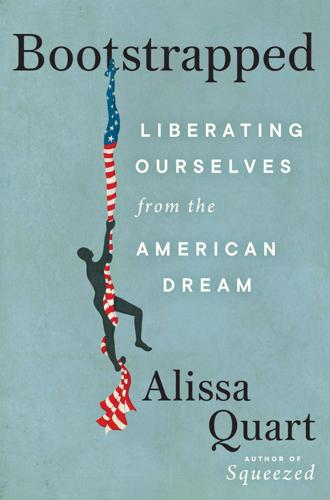
Bootstrapped: Liberating Ourselves From the American Dream
by
Alissa Quart
Published 14 Mar 2023
These influencer girlboss women seemed to be a new outcropping of the “feminist fallacy” where “images of powerful women in the media” imply empowerment of all women, as Andi Zeisler writes. The notion of the “trickle-down” corporate feminist can be a rich fiction all its own, even though it was an archetype whose logic seemed more fictive than usual during the pandemic. As the scholar Tressie McMillan Cottom puts it, “Trickle-down economics wasn’t the best experience for people like me. You will have to forgive me, then, if I have similar doubts about trickle-down feminism.” In other words, some women in America—maybe, sometimes—got to participate in the bootstrapping story: most working women did not. Cottom and other feminists, among them Black feminists who fought upstream for their place in the firmament and had to sacrifice to do so, didn’t relate to the girlboss story line or even the idea of female workers “having it all,” which Cottom observes “is not a feminist theory of change.”
…
This was a flashpoint, he said, for rejecting both that kind of racism and the illusion of merited White wealth. At college he further departed “from traditional Southern morals and values” and soon felt like “a weird bird” to be living there at all. Another defining period, Prince said, was the 1980s, when he “saw the inequality that was developing and knew that trickle-down economics were a lie. I know how rich guys are. They say, ‘I am going to make a whole bunch of money.’ They don’t say, ‘I am going to pay lots of people well because it’s the right thing to do.’” “My generation has screwed us up,” Prince told me. “Americans are a good people, but Reagan kicked something up in 1982, gave us all a pass to be selfish assholes; I don’t think that’s who we really are.”
…
See inequality income tax, xi, 10, 104, 146 on excess profit, 159, 220, 255n in Participatory Budgeting (PB), 210–15 as wealth tax, 54–56, 69, 76, 156–58, 160–63, 237n independence, 19–21, 30–32, 119–20, 125, 223, 230 See also individualism independent contractors, 146–50, 253n indigence, vii, x, 39, 166, 192, 219, 240n, 253n Indigenous people, 19, 25–26, 29–33, 171–72, 239n individualism, xii, 3–8, 13–20, 92–94, 172–74, 257n affluence and, 4, 48–50, 230 independent contractors and, 146–50, 253n libertarianism and, 46–47, 83, 243n limits of, 183–85, 188, 193, 215, 218 rugged, 14, 27–29, 32, 36, 238n inequality, 44, 54–59, 154–56, 181, 199, 254n as bootstrapping, 5–8, 217 as gender inequity, 4, 11, 22, 69, 123, 126, 145, 172, 252n in gig work, 138–43, 145–50, 179 in health care, 205–8 as product of trickle-down economics, 62–63, 68, 231 Inequality.org, 154 inherited wealth, 18, 56–57, 76, 153–57, 163, 218, 242n, 245n heiresses, 61–62 injustice, 21, 97, 115, 156 as administrative burden, 108–11 instability, financial, 7, 143, 147 and employment instability, 126, 132, 144, 181 student debt and, ix, 7, 11, 104, 163, 246n, 251n Instacart, 138, 140–41, 146–49, 253–54n Institute for Family Studies, 134 interdependence, art of, 8–10, 22–23, 219–23, 227–31 in health care, 206–9 in Kropotkin, 170–74 in local governance, 210–15 in mutual aid, 165–77 in worker cooperatives, 180–90 intersectionality, 195, 201, 218, 252n, 258n invisible labor, ix, 10, 18, 77, 201, 218, 238n, 247n Jane Eyre (Brontë), 20 Jenner, Kylie, 40 Jobs, Steve, 46, 58, 242n Johnson, Eric Michael, 173–74, 257n judgment, 7, 35, 55, 67–68, 125, 162, 171, 209 on laziness, 19, 78, 81–82 as moral injury, xi, 15, 59, 85, 104–5, 223, 238n, 260n justice, 65, 96–97, 149, 182, 211, 222 Workers for Justice, 162 “just-world” hypothesis, 65–67, 244n Kabat-Zinn, Jon, 91, 249n Kahneman, Daniel, 79, 199 Kalanick, Travis, 46 Karol, David, 74 Kawano, Emily, 181 KC Tenants (Kansas City), 224 Keeping Up with the Kardashians, 63 Kemper, Bob, 78–80 Kendall, Mikki, 188 Kerr, Camille, 180–81 Keywords: A Vocabulary of Culture and Society (Williams), 147–48 Keywords: The New Language of Capitalism (Leary), 141, 147–48 Kiatpongsan, Sorapop, 57 King, Martin Luther, Jr., 9–11, 237n Koch brothers (Charles and David), 243n Kolokotronis, Alexander, 214, 260n Kropotkin, Peter, 170–74, 188–89 Krugman, Paul, 55 Kucinskas, Jaime, 92 labor market, 9–10, 78–79, 95, 120 and invisible labor, 117–20, 124–26, 129–31, 228, 238n Laird, Pamela Walker, 7–9, 236n landlessness, 33–34, 37, 239n landlords, 8, 153–54, 224 Landon, Michael, 35, 240n Lane, Rose Wilder, 27–28, 238n Langone, Ken, 161 Lapham, Mike, 75 Latino Exit from the Democratic Party (LEXIT), 82–83 Law for Black Lives, 162 laziness, 19, 78, 81–82 Lean In (Sandberg), 46, 61, 127–28, 245 Leary, John Patrick, 141, 144, 147, 253n Lerner, Joshua, 211–12 Lerner, Melvin, 65–67, 244n A Fundamental Delusion, 65 liberation in child tax credit, 219–20 as community-mindedness, xi, 5, 9, 21, 167–70, 174, 228–30, 257n in counternarratives, 65, 133, 141, 218, 224–25, 231, 260–61n from disease, 205, 207 from fear, 193–96 in free community college, 11–12, 258n as freedom from, 47–49, 72, 239n and freelance gigs, 140–41, 145 and free lunch, 111, 123 and freethinking, 17–21, 230, 237n as medical insurance, 47, 112, 223–24 in mindfulness, 93–95 in mutual aid, 165–70, 176, 185, 215, 218, 220–21, 225–31 libertarianism, 27–28, 46–47, 59–60, 83, 238n, 240n, 243n The Limits of Self-Reliance (Read), 19 Linnemann, Esma, 93 Little House on the Prairie (Wilder), 25–37 log cabins, 25, 27, 29–30 Loper, Nick, 142 Loy, David, 93 Lululemon, 46–47 lunch program, 23, 78, 108–9, 114–15, 224 Mackey, John, 46, 241n Magee, Rhonda, 96–97 Making Volunteers: Civic Life at Welfare’s End (Eliasoph), 209, 259n Manchin, Joe, 69, 114, 134, 251n Manklang, Mo, 180, 184 market worship, 45, 50, 83, 90, 198, 239–40n, 248n, 259n Martel, James, 42, 50, 240n Marx, Leo, 19, 238n masks.
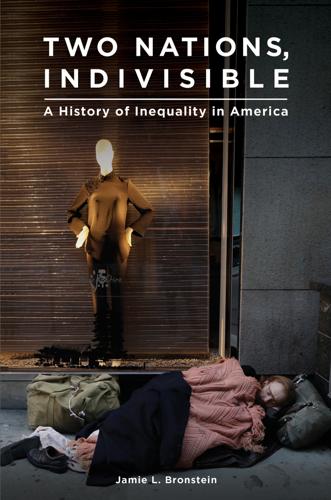
Two Nations, Indivisible: A History of Inequality in America: A History of Inequality in America
by
Jamie Bronstein
Published 29 Oct 2016
Over the course of the next decade, Ronald Reagan’s severe tax cuts and George H. W. Bush’s “trickle-down” economics promoted the idea that Americans should nurture and cultivate “job creators,” the wealthiest Americans, who, it was assumed, would reinvest in the economy and cause growth that would benefit all. The shift of much of the country’s industrial base to the southern tier of states, where unions had always been weak or nonexistent, led to the emergence of a united call for deregulation of the economy.1 However, not only did “trickle-down” economics fail to trickle down, but also many industrial jobs disappeared entirely, replaced by low-paid service jobs that relegated high-school graduates to poverty.2 Free trade continued to be an article of faith, and American manufacturers claimed that the only way to remain competitive in globalized markets was to move their manufacturing to countries like Mexico where labor commanded a lower wage.
…
Stagflation, the oil shocks of the 1970s, and deindustrialization brought malaise to the United States. These conditions enabled widespread acceptance of an alternative theory of prosperity, discussed in Chapter 7. Divorced from both equality of condition and equality of opportunity, Ronald Reagan’s tax cuts, military spending, safety-net slashing, and “trickle-down” economics promoted the idea that the freest markets were most efficient, and the most efficient markets produced the most prosperity. Although direct subsidies to income only represented a very small percentage of the annual U.S. budget, welfare programs and the people who used them came under attack.
…
Lower tax rates, Laffer claimed, would reduce tax avoidance.5 Tax cuts would energize the wealthiest, who were the most likely to invest in an expansion of productive capacity, thus increasing private employment.6 The notion that tax cuts for the wealthiest would hasten economic growth was called “supply side” or “trickle-down” economics. The 1981 Economic Recovery Tax Act slashed the top income tax rate from 70 percent to 50 percent. A second piece of Reagan-era legislation in 1987 capped the top rate at 28 percent.7 With the advocacy of groups like Grover Norquist’s Americans for Tax Reform, cutting taxes, or at the very least never raising taxes, became an article of Republican Party faith.
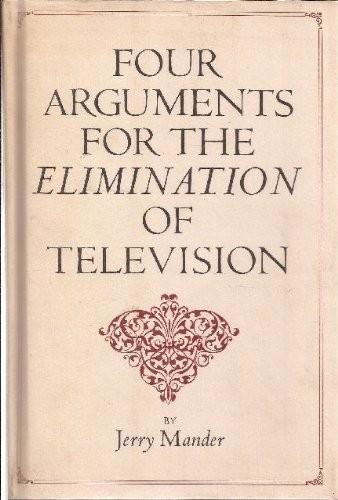
Four Arguments for the Elimination of Television
by
Jerry Mander
Published 1 Jan 1977
A few vears later at the Wharton School of Business at the University of Pennsylvania, I learned how and why this com- modity life and the economic growth it produces was sup- posed to be so good for absolutely everyone. I learned what they had been talking about in those boardrooms and at the Department of Commerce. It was called the "trickle-down theory. " The Trickle-Down Theory It goes more or less like this: Industrial expansion, rapid economic growth and the con- sumption economy benefit everyone. The theory-which is the basis of Keynesian American economics-has it that when people buy more and more commodities, they produce more 138 THE CENTRALIZATION OF CONTROL profits for industry, enabling it to expand.
…
THIS BOOK IS DEDICATED TO MY PARENTS, EVA MANDER AND HARRY MANDER . , , .)....", CONTENTS +.t. , . . ) INTRODUCTION I THE BELLY OF THE BEAST 13 Adman Manque - Engulfed by the Six- ties - The Replacement of Experience The Unification of Experience II WAR TO CONTROL THE UNITY MACHINE 29 Advancing from the Sixties to the Fifties Style Supersedes Content - Television at Black Mesa - The Illusion of Neutral Tech- nology - Before the Arguments: A Comment on Style FOUR ARGUMENTS FOR THE ELIMINATION OF TELEVISION Argument One THE MEDIATION OF EXPERIENCE III THE WALLING OF AWARENESS 53 Me{/iated Environments - Sensory-Depriva- tion Environments - Rooms inside Rooms IV EXPROPRIA TION OF KNOWLEDGE 69 Direct Education - Motel Education 7 CONTENTS V ADRIFT IN MENTAL SPACE 86 Science Fiction and A rbitrary Reality Eight Ideal Conditions for the Flowering of Autocracy - Popular Philosophy and Arbi- trary Reality - Schizophrenia and the Influ- encing Machine Argument Two THE COLONIZATION OF EXPERIENCE VI ADVERTISING: THE STANDARD-GAUGE RAILWAY 115 The Creation of "Value" - Redeveloping the Human Being - Commodity People - Breaking the Skin Barrier - The Inherent Need to Create Need - Buying Ourselves Back The Delivery System's Delivery System VII THE CENTRALIZATION OF CONTROL 134 Economic Growth and Patriotic Consumption - The Trickle-Down Theory - Benefici- aries of the Advertising Fantasy - The Ef- fect on Individuals - Flaws in the Fantasy - The Depression Never Ended - Domi- nation of the Influencing Machine Argument Three EFFECTS OF TELEVISION ON THE HUMAN BEING VIII ANECDOTAL REPORTS: SICK, CRAZY, MESMERIZED 157 8 CONTENTS Invisible Phenomenon - Dimming Out the Human Artificial Touch and Hyperac- tivity - Television Is Sensory Deprivation IX THE INGESTION OF ARTIFICIAL LIGHT 170 Health and Light Outdoors to Indoors Seeking the Light - Serious Research X How TELEVISION DIMS THE MIND 192 Hypnosis - Television Bypasses Conscious- ness Television Is Sleep Teaching Television Is Not Relaxing XI How WE TURN INTO OUR IMAGES 216 Humans Are Image Factories - The Con- crete Power of Images Metaphysics to Physics - Image Emulation: Are We All Taped Replays?
…
Jobs, money, prosperity, happiness, security, democracy, equality were an lumped together as inevitable results of this cycle. I believed in it. Wean believed in it. Most people believe in it sti11. Presidents get elected based on whether they can convince the public that they win stimulate the beautiful cycle. Jimmy Carter was elected for saying he knew how to do it. The trickle-down theory is the nice simple kind of economic model that can be sold to a mass population removed from any deeper understanding of how things real1y work. Trying to come to grips with economic nuance is for most of us no easier than trying to understand how much nuclear radiation is "safe." Who knows?
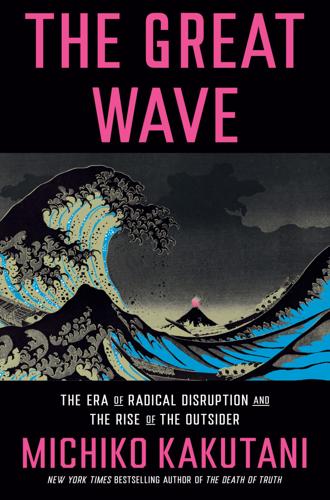
The Great Wave: The Era of Radical Disruption and the Rise of the Outsider
by
Michiko Kakutani
Published 20 Feb 2024
As for the spectacular fall of the former British prime minister Liz Truss—who resigned after just forty-five days in office—it read like a farcical morality play about the hazards of hubris and ideological blindness. In defiance of economic realities and the welfare of the public, Truss and her chancellor of the Exchequer, Kwasi Kwarteng—both hard-core believers in trickle-down economics and free-market fundamentalism—announced sweeping unfunded tax cuts for the rich (worth some £45 billion). The plan was like a parody of neoliberal budgetary policy: It would have massively increased inequality and simultaneously led to soaring interest and mortgage rates. Even the markets, which Truss had courted, responded with contempt.
…
For the historian Eric Foner, the financial crisis of 2008 “drove a stake through the heart of neoliberalism, the dominant ideology of the past generation.” And, as he saw it, growing disillusionment with the doctrine had created an opportunity for progressives to forge a new set of policies promoting political, social, and economic equality. Will disenchantment with neoliberal trickle-down economics lead to tangible political changes and a rebooting of trade and foreign policy? And what do these developments portend on the world stage? Will they lead other nations to embrace more interventionist economic policies by governments on the populist right or progressive left? Though still a work in progress, Chile offers a case study in the unpredictable zigzags of history.
…
Two other hits watched on Netflix during the COVID quarantine had similar themes: The South Korean movie Train to Busan is a zombie thriller in which the real villains are piggy, win-at-any-costs corporate types; while the Spanish horror film The Platform savagely explores the cannibalistic nature of trickle-down economics and old-fashioned greed. In their depiction of the evils of extreme capitalism, such films recall Jack London’s 1908 novel, The Iron Heel, which was published at the close of the Gilded Age and depicted a dystopian America as an autocratic plutocracy that has crushed the working class under an “iron heel.”

The New Class Conflict
by
Joel Kotkin
Published 31 Aug 2014
Seifert, “From Creative Economy to Creative Society,” Creativity & Change (The Reinvestment Fund and the Social Impact of the Arts Project), January 2008, http://www.trfund.com/wp-content/uploads/2013/06/Economy.pdf; “Jamie Peck on Struggling With the Creative Class,” interview, ScienceWatch, November 2010, http://archive.sciencewatch.com/dr/fmf/2010/10novfmf/10novfmfPeck; Jamie Peck, “Struggling with the Creative Class,” International Journal of Urban and Regional Research, vol. 29, no. 4 (December 2005): 740–70. 41. Aaron M. Renn, “Is Urbanism the New Trickle-Down Economics?” New Geography, February 7, 2013, http://www.newgeography.com/content/003470-is-urbanism-new-trickle-down-economics; Richard Florida, “More Losers Than Winners in America’s New Economic Geography,” CityLab, January 30, 2013, http://www.citylab.com/work/2013/01/more-losers-winners-americas-new-economic-geography/4465. 42. Joel Kotkin, “The Geography of Aging: Why Millennials Are Headed to the Suburbs,” New Geography, December 9, 2013, http://www.newgeography.com/content/004084-the-geography-of-aging-why-millennials-are-headed-to-the-suburbs. 43.
…
University of British Columbia’s Jamie Peck has described the current fashion of focusing on hipsters and the affluent as a “biscotti and circuses” approach that exacerbates poverty and inequality in urban centers.40 “To put it in political speak,” notes urban thinker Aaron Renn, “the creative class doesn’t have much in the way of coattails.” The new urbanism is a new, and equally ineffective, form of “trickle-down economics.” Even Florida, the guru of the “creative class,” admits that the benefits of the urban strategies he advocates “flow disproportionately to more highly-skilled knowledge, professional, and creative workers.” Yet many cities, including some unlikely cultural centers such as Detroit or Cleveland, have adopted the idea that sponsoring artists and “hip” urbanism are the keys to civic success.41 It seems clear that the current recipe for urban growth is destined to preserve and expand inequality, largely ignoring the needs of the lower and working classes.
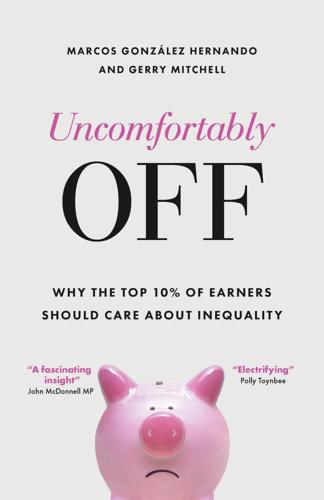
Uncomfortably Off: Why the Top 10% of Earners Should Care About Inequality
by
Marcos González Hernando
and
Gerry Mitchell
Published 23 May 2023
If pushed, we would say that many in the top 10% resent the left for promoting policies in the run-up to the 2019 general election that in their minds were irrational and harmful, forcing 97 Uncomfortably Off them to vote with the far right. In the conflict between their economic interests and their sociocultural inclinations, the former took precedence. Meanwhile, in the background, Brexit, one of the most impactful and radical policies of the last decades, continued to disrupt huge swathes of the economy, and trickle-down economics continued to drive concentration at the top. Most far-right parties propose precious little to avert these trends and instead espouse a Darwinian view of the economy, where those ‘out’ are punished for the benefit of those ‘in’. Most of the relatively affluent are generally considered ‘in’, but as the history of far-right movements shows us they are driven by the exclusion and scapegoating of one segment of society after another, and at some point they may find themselves the target.
…
A true Tory budget’,23 what’s surprising about this episode is the confluence of three phenomena: the brazenness of the proposals, which married tax cuts for the most affluent with spending cuts for the most vulnerable; the effect of the markets’ reaction to the government’s sudden lurch to the right, reflecting their increased power as quantitative easing starts to be reversed; and that all of this is happening in a context where the fallout of previous and ongoing crises (not least 2008, Brexit, COVID-19 and the Ukraine–Russia war) still afflict the UK economy. Ultimately, this represents a rift 105 Uncomfortably Off between the markets and their most die-hard advocates and the end of the idea that tax cuts are per se a responsible proposal to spur growth and address government debt. If we are lucky, this might be the end of the idea that ‘trickle-down economics’ brings benefits to anyone other than the already wealthy. Still, British people face mortgage rate rises, the costs of which will pass on to both owners and renters; rising costs of food, of which 50% is imported, and which in the context of a falling pound will continue to go up; and an estimated 80% increase in energy bills this winter.24 The effect of these cost rises, in combination with long-term wage stagnation and no uprating of benefits in line with inflation, means that many millions of people will be in ill health and food, energy and fuel poverty.
…
The Guardian. 3 October. www. theguardian.com/commentisfree/2022/oct/03/britain-minibudget-paying-with-our-health-stress-illness-food-povertycold-homes-financial-chaos Standing, G. (2019) Piloting basic income as common dividends. London: Progressive Economic Forum. Statista (2022) Number of people employed in the United Kingdom from July 1971 to July 2022 (in 1,000s). www.statista. com/statistics/281998/employment-figures-in-the-unitedkingdom-uk Stevenson, G. (2021) I made millions betting against trickle-down economics – now I’m tackling wealth inequality. Wellbeing Economy Alliance. https://weall.org/gary-stevenson 230 References Stewart, H. (2022) Rishi Sunak announces £5bn windfall tax on energy firms. The Guardian. 26 May. www.theguardian. com/politics/2022/may/26/sunak-announces-windfall-taxenergy-firms Stewart, M. (2018) The 9.9 percent is the new American aristocracy.
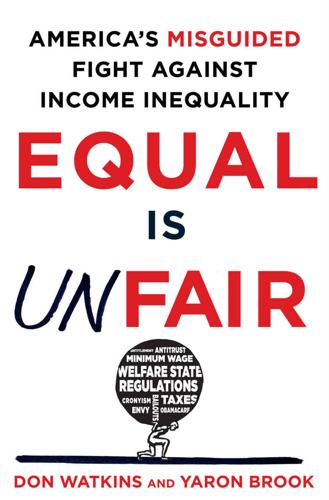
Equal Is Unfair: America's Misguided Fight Against Income Inequality
by
Don Watkins
and
Yaron Brook
Published 28 Mar 2016
But when people deal with one another as traders, on mutually beneficial terms or not at all, they enjoy a harmony of interests. And this is true regardless of their level of income or ability. In fact, it is those with less ability who benefit the most from this arrangement: the productive efforts of those at the top raise everyone else’s standard of living. This isn’t what is sometimes disparagingly called “trickle-down economics,” the theory that wealth will magically trickle down from rich people to poor people in a free market. What actually happens when trade is voluntary is that those with greater ability radically magnify the productivity of everyone, especially those with less ability. This is what Ayn Rand calls the Pyramid of Ability.
…
J., 59 Fanjul family, 150 finance, 36–8, 93–4, 153–7 Fleming, Alexander, 89 Folsom, Burton, 148–9 Ford, Henry, 89, 90, 106–7 Frank, Barney, 159–60, 163–4 Frank, Mark, 52 Frank, Robert, 9, 161–2, 179 Frank, Thomas, 32 free market capitalism, 61, 173, 190 and CEO pay, 163 and corporate welfare, 224 and education, 133 and finance, 156–7 free market myth, 31–8 and health care, 134 and trickle-down economics, 95 and unions, 128 and value creation, 156 freedom of contract, 103, 112 freedom of thought and speech, 103, 112 Fulton, Robert, 148–9 Galbraith, James, 47, 153, 167–9 Gates, Bill, 60, 66–7, 91, 131, 146–7, 151, 195 General Electric (GE), 151 Germany, 108–10, 161 Ghate, Onkar, 228 Gibbons v.
…
Hector, 10–11 Samphân, Khieu, 207 Sánchez, Yoani, 51–3 Sandefur, Timothy, 127–8 Say, Jean-Baptiste, 91 Scandinavian countries, 27, 107, 111–13 Schadenfreude (taking pleasure in other people’s misfortunes), 214 Schoeck, Helmut, 216 Sherk, James, 128 Short, Philip, 208–9 Sidney, Algernon, 100, 241n26 Silicon Valley, 130–2, 134, 194 Simon, Kosali I., 45–6 Singer, Peter, 201, 205 Smith, Adam, 160 Smith, Hedrick, 32, 181–2 Smith International, 158 social justice, 185–90 Social Security, 31, 35, 41, 69–70, 127, 138, 170, 181–3, 225 Solyndra, 150 Soviet Union, 51–2, 108 Sowell, Thomas, 29–30, 119 stagflation, 32 stagnation, 32, 38–48 standard of living, 39–41, 43, 45, 64, 84–5 and collectivism, 182, 216 and egalitarianism, 201 and finance, 155 and inequality, 175 and innovation, 102 and life expectancy, 24 and productivity, 95 and progress, 24, 26–8 and regulation, 126 and retirement, 181 and unions, 128 and the welfare state, 141 Stiglitz, Joseph, 4, 6, 8, 20, 38, 81, 117 Summers, Lawrence, 166 Sunstein, Cass, 183–4 tall poppy syndrome, 213–18 Tanner, Michael, 142 taxes and taxation and health care, 135–6 and income data, 44–5 in the inequality narrative, 20, 23, 27, 30–3 inheritance taxes, 79, 165–9 and mobility, 120–1 policy, 6–7, 20, 120, 138, 142–4 and poverty, 126–7, 143–4 and Scandinavian countries, 112–13 and stagnation, 44–7 and wealth, 169–73, 212 Temkin, Larry, 194, 206 Tesla, 150 Tesla, Nikola, 89 Thiel, Peter, 60, 130 Thompson, Don, 124 “too big to fail,” 157 Tooley, James, 133 trickle-down economics, 95 Uber, 101–2, 107, 155 Ubl, Stephen, 136 unions. See labor unions Vanderbilt, Cornelius, 148–9 Virgin Group, 198–9 voluntary trade, 12, 59–66, 186 wages, 23–4, 44, 46–7, 99–100, 106, 113 maximum wage, 52, 178, 212 minimum wage, 5, 7, 20, 24, 52, 62, 68–9, 114, 124–9, 139–42, 178, 180, 211, 213, 222, 224 and post-war era, 27–30 “slave” wages, 62–5 and stagnation, 38, 222 Wagner Act (National Labor Relations Act of 1935), 29 Warren, Elizabeth, 182, 188, 196, 210 Washington, George, 96–7 Watkins, Don, 66, 101, 219, 225 wealth and collectivism, 167–8 defined, 57 fixed pie assumption, 8–9, 87 group pie assumption, 9 redistribution of, 51, 108, 114, 144 and “the rich” as a label, 173–5 and taxation, 169–73, 212 Welfare Reform Act (1996), 35 welfare state, 68–9, 170, 174, 181, 189, 224–5 and the middle class, 30–1 and mobility, 120–1 vs. opportunity, 138–44 and Scandinavian countries, 111–13 See also entitlement programs Westinghouse, George, 105 Whitworth, Joseph, 107 Wilkinson, Richard, 7, 79, 118, 121, 123, 211–12 Winship, Scott, 46–7, 237n53 Wooldridge, Adrian, 32 Wozniak, Steve, 87–9, 91, 191, 193 Wright, Carroll D., 26 Yergin, Daniel, 11 Yglesias, Matthew, 212 “you didn’t build that,” 190–9, 213 Zingales, Luigi, 155 About the Authors © Amanda Patrice DON WATKINS, one of today’s most vocal opponents of the welfare state, is coauthor, with Yaron Brook, of the national bestseller, Free Market Revolution: How Ayn Rand’s Ideas Can End Big Government.

The View From Flyover Country: Dispatches From the Forgotten America
by
Sarah Kendzior
Published 24 Apr 2015
They want to move into a memory they have already made. Impoverished Suburbs In a sweeping analysis of displacement in San Francisco and its increasingly impoverished suburbs, journalist Adam Hudson notes that “gentrification is trickle-down economics applied to urban development: the idea being that as long as a neighborhood is made suitable for rich and predominantly white people, the benefits will trickle down to everyone else.” Like trickle-down economics itself, this theory does not play out in practice. Rich cities such as New York and San Francisco have become what journalist Simon Kuper calls gated citadels, “vast gated communities where the one percent reproduces itself.”
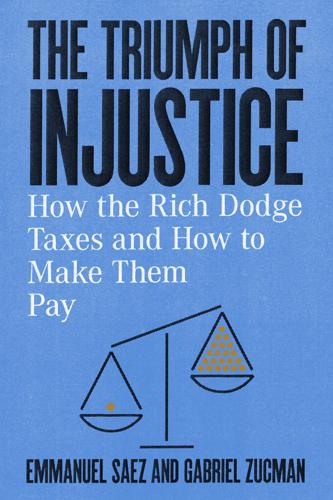
The Triumph of Injustice: How the Rich Dodge Taxes and How to Make Them Pay
by
Emmanuel Saez
and
Gabriel Zucman
Published 14 Oct 2019
We can’t, alas, time-travel back to 1980 and run an experiment where tax rates would remain at their 1980 level to see what would have happened. But a comparison with income growth in the post–World War II decades does not vindicate the trickle-down theory, to say the least. WORKING-CLASS INCOME GROWTH: A TALE OF TWO COUNTRIES Comparing US results with countries that have implemented other policies since 1980 does not vindicate trickle-down theory either. Let’s look at France, a country that is broadly representative of continental Europe. Average national income per adult is higher in the United States than in France: today, about 30% higher.
…
Maybe we all benefit from Bill Gates earning billions today and would all be worse off if these billions were taxed away—for instance because it would mean less funding for the Bill & Melinda Gates Foundation, which according to some observers spends its funds better than the government. This is a variation on the famous trickle-down theory, according to which the fortunes of the rich ultimately trickle down to the rest of society. To think more deeply about whether the theoretical case for going beyond Laffer has empirical merit today, we need one thing that’s too often missing from this debate: data. THE BENEFITS OF EXTREME WEALTH: A DEBATE WITHOUT DATA A scientific perspective on these questions requires a great deal of data.

Good Economics for Hard Times: Better Answers to Our Biggest Problems
by
Abhijit V. Banerjee
and
Esther Duflo
Published 12 Nov 2019
Since growth had stopped in 1973, the natural reaction was to turn to the critics of the Keynesian macroeconomic policies of the 1960s and 1970s, such as the (right-leaning) Chicago school of economics professors and Nobel Prize–winners Milton Friedman and Robert Lucas. Reaganomics, as the dominant economics of this period came to be called, was quite open about the fact that the benefits of growth would come at the cost of some inequality. The idea was that the rich would benefit first but the poor would eventually benefit. This is the famous trickle-down theory, never better described than by Harvard professor John Kenneth Galbraith, who claimed this was what used to be called the “horse and sparrow” theory in the 1890s: “If you feed the horse enough oats, some will pass through to the road for the sparrows.”28 Indeed, the 1980s ushered a dramatic change in the social contract in the US and the UK.
…
Over the same period (from 1979 to today), the real wages of the least educated workers actually fell. Among high school dropouts, high school graduates, and those with some college, real weekly earnings among full-time male workers in 2018 were 10 to 20 percent below their real levels in 1980.33 If there had been any trickle-down effect of lower taxes, as its advocates claimed, one would expect wage growth to have accelerated in the Reagan-Bush years. But the opposite happened. The labor share (the share of revenues used to pay wages) has continuously declined since the 1980s. In manufacturing, almost 50 percent of sales were used to pay workers in 1982; it had fallen to about 10 percent in 2012.34 The fact that this great reversal takes place during the Reagan and Thatcher years is probably not coincidental, but there is no reason to assume Reagan and Thatcher were the reason it happened.
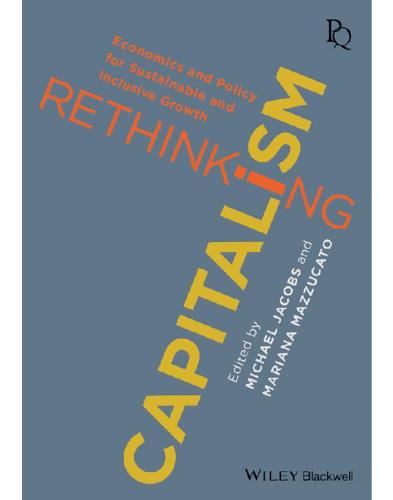
Rethinking Capitalism: Economics and Policy for Sustainable and Inclusive Growth
by
Michael Jacobs
and
Mariana Mazzucato
Published 31 Jul 2016
In the ensuing economic and political debate, this ‘rising-tide hypothesis’ evolved into a much more specific idea, according to which regressive economic policies—policies that favour the richer classes—would end up benefiting everyone. Resources given to the rich would inevitably ‘trickle down’ to the rest. It is important to clarify that this version of old-fashioned ‘trickle-down economics’ did not follow from the postwar evidence. The ‘rising-tide hypothesis’ was equally consistent with a ‘trickle-up’ theory—give more money to those at the bottom and everyone will benefit; or with a ‘build-out from the middle’ theory—help those at the centre, and both those above and below will benefit.
…
The US Treasury typically demands that when money is given to developing countries, conditions be imposed on them to ensure not only that the money is used well, but also that the country adopts economic policies that (according to the Treasury’s economic theories) will lead to growth. But no conditions were imposed on the banks—not even, for example, requirements that they lend more or stop abusive practices. The rescue worked in enriching those at the top; but the benefits did not trickle down to the rest of the economy. The Federal Reserve, too, tried trickle-down economics. One of the main channels by which quantitative easing was supposed to rekindle growth was by leading to higher stock market prices, which would generate higher wealth for the very rich, who would then spend some of that, which in turn would benefit the rest. As Yeva Nersisyan and Randall Wray argue in their chapter in this volume, both the Fed and the Administration could have tried policies that more directly benefited the rest of the economy: helping homeowners, lending to small and medium-sized enterprises and fixing the broken credit channel.
…
The role of institutions and politics The large influence of rent-seeking in the rise of top incomes undermines the marginal productivity theory of income distribution. The income and wealth of those at the top comes at least partly at the expense of others—just the opposite conclusion from that which emerges from trickle-down economics. When, for instance, a monopoly succeeds in raising the price of the goods which it sells, it lowers the real income of everyone else. This suggests that institutional and political factors play an important role in influencing the relative shares of capital and labour. As we noted earlier, in the past three decades wages have grown much less than productivity (Figure 1)—a fact which is hard to reconcile with marginal productivity theory39 but is consistent with increased exploitation.

The Quiet Coup: Neoliberalism and the Looting of America
by
Mehrsa Baradaran
Published 7 May 2024
—2 CORINTHIANS 3:6 MANY OF THE pillars of neoliberal economics—the theories developed and promulgated by members of the Mont Pelerin Society—have been discredited by events, primary among them the 2008 financial crisis (which I discuss in detail below). Yet neoliberal ideas refuse to die, a phenomenon commentators have called zombie economics. Among these undead ideas are the standard neoclassical economic models: the efficient market hypothesis, trickle-down economics, deregulation, and privatization. According to critics of zombie economics, these ideas need to be replaced with new and better “living ideas,” like democratic socialism, progressive taxation, and Keynesian fiscal stimulus. But, as this chapter argues, the zombie that walks and stalks the land is not in fact neoclassical economics, but rather the law.
…
Corporations’ increasing political sway then led to more profits through rent seeking. Buchanan’s fears about special interest vote-trading had come to life, only in reverse. From Reagan’s tax and spending cuts to Clinton’s tax and spending cuts, from Supreme Court decisions to Congress’s embrace of Chicago School economics, neoliberalism became the software of the state. Trickle-down economics was economics; shareholder maximization was the point of corporate law; government benefits were socialism, but corporate benefits were capitalism. The acts of legislation that helped define the era included Reagan’s 1986 Tax Reform Act; Clinton’s signing of the North American Free Trade Agreement (NAFTA), which accelerated offshoring; Clinton’s spending cuts in the Omnibus Budget Reconciliation Act of 1993; and his Personal Responsibility and Work Opportunity Act of 1996, cutting welfare.
…
The bailouts quickly returned banks and private equity firms to profitability and, before too long, capital resumed its exponential growth. Flush with funds, private equity firms even rushed to buy up all the homes lost through default. Homes they rented back to the people who had lost their mortgages when the banks had gone bust—a sort of trickle-down economics that tended, always, to point debt down and capital gains up. When Treasury Secretary Paulson asked Congress to authorize the $700 billion for TARP in October 2008, he pitched it as an “asset purchase.” The “troubled assets,” Congress was led to believe, were the underwater mortgages held by people.
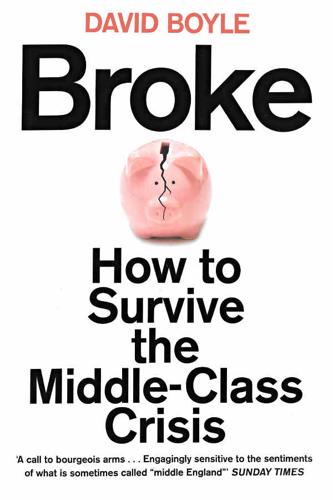
Broke: How to Survive the Middle Class Crisis
by
David Boyle
Published 15 Jan 2014
So it is not primarily our current economic difficulties that are causing the problem — the share of wealth of the middle 60 per cent of the population has been falling steadily everywhere except Denmark.[9] But they may be advancing a process that was already under way. The clues are all there, but the blame still has to be shared between the policymakers and the middle classes themselves. They made a disastrous political mistake over the past generation. They backed the idea of trickle-down economics that failed to trickle. They cheered the corrosive growth of financial services in the City of London and ignored their excesses. They believed those in charge of their financial institutions had their class interests at heart, when they had nothing of the kind. They did not understand where Big Bang would lead — and where it would inevitably lead: if the middle classes had been allowed to share in the new wealth, it would have caused rampant inflation.
…
It is now clear that neither Right nor Left in conventional politics represent the interests of either. The political parties in Westminster are to that extent the ‘slaves of some defunct economist’, as Keynes put it long ago.[12] They are trapped in a world of policy-making that still believes in trickle-down economics, unable to grasp any other way, and which continues to funnel wealth and power ever upwards. Margaret Thatcher and Tony Blair rose to power with the support of the middle classes. But the middle classes are at the very beginning of being able to articulate a challenge to that status quo, and to the way they have been treated by the financial forces — handing over the best years of their lives in indentured servitude to pay off the vast mortgage required to live a middle-class life, then finding that up to a third of their pension has been siphoned off in fees.
…
B., 37 property, investing in, 57, 168–71 public sector salaries, 268–9, 291 Public Service Agreement (PSA) targets, 264 public services, centralization of, 263–7 pubs, closure of, 252 Q ‘quangocracy’, 291 quant funds, 129 Quattrone, Frank, 114–15 Quilter Goodison, 134, 147 R Radley College, 59 railways, coming of, 35, 282 Raphael, Adam, 33 Rawnsley, Andrew, 225 Ray, Paul, 49 Raynsford, Nick, 265 Read, Peter, 217–19 remortgaging, 9–10 rents, 21, 68–9, 306 restrictive covenants, 302 retirement age, 180, 203, 302 Reynolds, Christina, 10–11 RIBA, 77–8 Richardson, Gordon, 62, 72 Richmond, 287 Riddell, Fred, 225 Ridley, Adam, 58–60, 63 Ritalin, 229 Roddick, Anita, 301 Rogers, Richard, 78 Roman Catholics, 39 Romania, 3, 68 Rothschild, Jacob, 146 Rowe & Pitman, 138, 146 Royal Bank of Scotland (RBS), 119, 122, 193 Royal Mail, 194 Royal Navy, 143, 264 Rutlish School, 213–14 S Sainsbury’s, 244, 246, 250 St Francis of Assisi, 59 St Paul’s Cathedral, 289 ‘salariat’, 17 Salomon Brothers, 149, 153 Samuel Montagu, 135, 146 Santander, 118, 122 Saratoga, New York, 253–4 Savage, Mike, 40, 44, 53 Scarborough, 265 Schiff, Andrew, 20 school catchment areas, 212–13 and house prices, 20, 210–11, 221 school fees, 19–20, 204, 212, 239 School for Social Entrepreneurs, 296 school meals, 294–5 school playing fields, 238 schools choice of, 230–4, 288 church schools, 211, 214, 216, 239–40 free schools, 216, 240–1 grammar schools, 36–7, 216–17, 219 grant-maintained schools, 221 investment in, 211–12 and league tables, 224–9, 231–3 237–8, 285, 302 Literacy Hour in, 265 nursery schools, 268–9 rural, 252 secondary moderns, 229, 237 size of, 234–8, 303, 328 special school units, 218 ‘super-selective’, 216 see also education Schwed, Fred, 186 SEAC (Stock Exchange Automated Quotations), 147 Seldon, Anthony, 232 self-employment, 5, 45, 184, 249, 292 self-help, 49 Shaw, George Bernard, 290 Shearlock, Peter, 150 Sheffield, 162 Shepherd, Gillian, 228 Shrewsbury, 252 Sibary, Shona, 9–11, 16 Sieff, Marcus, 243 silver, 278–9 Simmonds, Jane, 271 Sizer, Ted, 237 Skegness, 221 Skidelsky, Lord, 227 skiing, 169 Skinners’ School, 217 Smith, John, 225, 263 social care, 21, 85, 201, 296 software ERP and CRM, 256, 261 report-writing, 231 Somerset Food Links, 296 Sorbonne, 157 Soros, George, 131, 157 South London, 43 Southwark, 225 Spain, 56, 97, 294 Golden Age, 277–81 ‘squeezed middle’ (the term), 22 stamp duty, 149 Standard & Poor’s index, 198 Standard Life, 172 Standing, Guy, 17 Stewart, James, 255 Stiperstones Primary School, 252 Stock Market Crash (1987), 61 stockbrokers, 134, 136–40, 145–8, 150, 162, 247 Stockton, Earl of (Harold Macmillan), 288 Stockwell, Christopher, 27–34, 50 Stott, Martin, 44 student loans, 19, 300 subprime mortgage crisis, 140, 155 suicides, 32 Sunday Telegraph, 36, 60 Sunday Times, 33, 150 Surbiton, 73–4 Sure Start centres, 76 sustainable living, 78–9 Sutton Coldfield, 180 Swiss Cottage, 287 Switzerland, 97, 116, 180, 183 T Tasker, Mary, 234–5, 237 Tatler, 284 tax avoidance, 300 tax credits, 5, 164, 270–1 Taylor, Frederick Winslow, 248, 253–7, 261–3 Tea Party, 273 teaching unions, 224, 227–8 Tebbit, Norman, 149, 181 Tennant, Julian, 34 Tesco, 47, 243, 246, 250–1, 300 Thames Water, 202 Thatcher, Margaret, 1, 3, 36, 67, 70, 99, 109, 176–7, 221–2, 290 and City deregulation, 137–8 and financial reforms, 57–9, 63–4, 72–3 and pension reforms, 180, 183, 190 theatres, 126 Thornton, Clive, 71 ‘Tiger Parents’, 215 time banks, 299 Time Warner, 133 Times, The, 65, 67, 135, 147, 177, 226 Times Educational Supplement, 237, 269 Tokyo, 75, 78, 149 Tough, Paul, 234 Toulouse University, 127, 141 Tower Hamlets, 61 trade unions, 160, 255 transport costs, 18 Travelex, 126 trickle-down economics, 124, 157, 161, 286, 289–91 Trollope, Joanna, 79, 245 Truro, 18, 102 Tufnell Park, 80–1 Tunbridge Wells, 216–17 Turner, Adair, 152, 202 tutoring, 219 Tyco, 117 U UKIP, 273 unemployment, 271–2 Unilever, 194 United States of America and auditing culture, 261 banking, 92, 95–7 education, 215–16, 236, 238 housing developments, 85 inequalities of wealth, 23–4 influence of financial sector, 152 job creation, 249 middle classes, 22–3, 272, 282, 286 New Deal, 153 small-town life, 122–3 subprime lending, 75 universities, 212, 215, 242, 248–9 university fees, 18–19, 270 UnLtd, 296 utility bills, rising, 10–11 see also fuel bills V Valladolid, 277, 280–1 Van Reenen, John, 248 Vickers da Costa, 146 Vinson, Nigel, 179 voluntary organizations, 253, 260 W Waitrose, 242–4, 302, 306 Wakeham, John, 181 Walker, David, 137 Wall Street, deregulation of, 135 Wall Street Crash, 186 Warburg’s, 146 Wass, Sir Douglas, 62 Watt, James, 152 Wellington College, 232, 239 Wells, H.
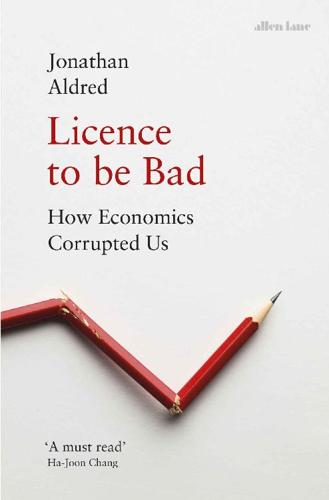
Licence to be Bad
by
Jonathan Aldred
Published 5 Jun 2019
Logically, there must be some tax rate between these two extremes which would maximize tax revenue. Although Laffer does not remember doing so, he apparently grabbed a napkin and drew a curve on it, representing the relationship between tax rates and revenues.fn2 The ‘Laffer curve’ was born and, with it, the idea of ‘trickle down economics’. The key implication which impressed Rumsfeld and Cheney was that, just in the way that tax rates lower than 100 per cent must raise more revenue, cuts in income tax rates more generally could raise revenue. In other words, there could be winners, and no losers, from tax cuts. But could does not mean will.
…
The resulting increase in GDP and income may be enough to generate higher tax revenues, even though the tax rate itself has fallen. Although the effects of the big Reagan tax cuts are still disputed (mainly because of disagreement over how the US economy would have performed without the cuts), even those sympathetic to trickle-down economics conceded that the cuts had negligible impact on GDP – and certainly not enough to outweigh the negative effect of the cuts on tax revenues. But the Laffer curve did remind economists that a ‘revenue-maximizing top tax rate’ somewhere between 0 per cent and 100 per cent must exist. Finding the magic number is another matter: the search continues today.
…
objection, 107, 119–20 Friedman, Milton, 4–5, 56, 69, 84, 88, 126, 189 awarded Nobel Prize, 132 and business responsibility, 2, 152 debate with Coase at Director’s house, 50, 132 as dominant Chicago thinker, 50, 132 on fairness and justice, 60 flawed arguments of, 132–3 influence on modern economics, 131–2 and monetarism, 87, 132, 232 at Mont Pèlerin, 5, 132 rejects need for realistic assumptions, 132–3 Sheraton Hall address (December 1967), 132 ‘The Methodology of Positive Economics’ (essay, 1953), 132–3 ‘The Social Responsibility of Business is to Increase Its Profits’ (article, 1970), 2, 152 Frost, Gerald, Antony Fisher: Champion of Liberty (2002), 7* Galbraith, John Kenneth, 242–3 game theory assumptions of ‘rational behaviour’, 18, 28, 29–32, 35–8, 41–3, 70, 124 Axelrod’s law of the instrument, 41 backward induction procedure, 36–7, 38 and Cold War nuclear strategy, 18, 20, 21–2, 24, 27, 33–4, 35, 70, 73, 198 focus on consequences alone, 43 as form of zombie science, 41 and human awareness, 21–3, 24–32 and interdependence, 23 limitations of, 32, 33–4, 37–40, 41–3 minimax solution, 22 multiplicity problem, 33–4, 35–7, 38 Nash equilibrium, 22–3, 24, 25, 27–8, 33–4, 41–2 the Nash program, 25 and nature of trust, 28–31, 41 the Prisoner’s Dilemma, 26–8, 29–32, 42–3 real world as problem for, 21–2, 24–5, 29, 31–2, 37–8, 39–40, 41–3 rise of in economics, 40–41 and Russell’s Chicken, 33–4 and Schelling, 138–9 and spectrum auctions, 39–40 theory of repeated games, 29–30, 35 tit-for-tat, 30–31 and trust, 29, 30–31, 32, 41 uses of, 23–4, 34, 38–9 view of humanity as non-cooperative/distrustful, 18, 21–2, 25–32, 36–8, 41–3 Von Neumann as father of, 18, 19, 20–22, 25, 26, 28, 30, 34, 41 zero-sum games, 21–2 Gates, Bill, 221–2 Geithner, Tim, 105 gender, 127–8, 130–31, 133, 156 General Electric, 159 General Motors (GM), 215–16 George, Prince of Cambridge, 98 Glass–Steagall Act, repeal of, 194 globalization, 215, 220 Goldman Sachs, 182, 184, 192 Google, 105 Gore, Al, 39 Great Reform Act (1832), 120 greed, 1–2, 196, 197, 204, 229, 238 Greenspan, Alan, 57, 203 Gruber, Jonathan, 245 Haifa, Israel, 158, 161 Harper, ‘Baldy’, 7 Harsanyi, John, 34–5, 40 Harvard Business Review, 153 Hayek, Friedrich and Arrow’s framework, 78–9 economics as all of life, 8 and Antony Fisher, 6–7 influence on Thatcher, 6, 7 and Keynesian economics, 5–6 and legal frameworks, 7* at LSE, 4 at Mont Pèlerin, 4, 5, 6, 15 and Olson’s analysis, 104 and public choice theory, 89 rejection of incentive schemes, 156 ‘spontaneous order’ idea, 30 The Road to Serfdom (1944), 4, 5, 6, 78–9, 94 healthcare, 91–2, 93, 178, 230, 236 hedge funds, 201, 219, 243–4 Heilbroner, Robert, The Worldly Philosophers, 252 Heller, Joseph, Catch-22, 98, 107, 243–4 Helmsley, Leona, 105 hero myths, 221–3, 224 Hewlett-Packard, 159 hippie countercultural, 100 Hoffman, Abbie, Steal This Book, 100 Holmström, Bengt, 229–30 homo economicus, 9, 10, 12, 140, 156–7 and Gary Becker, 126, 129, 133, 136 and behaviour of real people, 15, 136, 144–5, 171, 172, 173, 250–51 and behavioural economics, 170, 171, 172, 255 long shadow cast by, 248 and Nudge economists, 13, 172, 173, 174–5, 177 Hooke, Robert, 223 housing market, 128–9, 196, 240–41 separate doors for poor people, 243 Hume, David, 111 Huxley, Thomas, 114 IBM, 181, 222 identity, 32, 165–6, 168, 180 Illinois, state of, 46–7 immigration, 125, 146 Impossibility Theorem, 72, 73–4, 75, 89, 97 Arrow’s assumptions, 80, 81, 82 and Duncan Black, 77–8 and free marketeers, 78–9, 82 as misunderstood and misrepresented, 76–7, 79–82 ‘paradox of voting’, 75–7 as readily solved, 76–7, 79–80 Sen’s mathematical framework, 80–81 incentives adverse effect on autonomy, 164, 165–6, 168, 169–70, 180 authority figure–autonomy contradiction, 180 and behavioural economics, 171, 175, 176–7 cash and non-cash gifts, 161–2 context and culture, 175–6 contrast with rewards and punishments, 176–7 ‘crowding in’, 176 crowding out of prior motives, 160–61, 162–3, 164, 165–6, 171, 176 impact of economists’ ideas, 156–7, 178–80 and intrinsic motivations, 158–60, 161–3, 164, 165–6, 176 and moral disengagement, 162, 163, 164, 166 morally wrong/corrupting, 168–9 origins in behaviourism, 154 and orthodox theory of motivation, 157–8, 164, 166–7, 168–70, 178–9 payments to blood donors, 162–3, 164, 169, 176 as pervasive in modern era, 155–6 respectful use of, 175, 177–8 successful, 159–60 as tools of control/power, 155–7, 158–60, 161, 164, 167, 178 Indecent Proposal (film, 1993), 168 India, 123, 175 individualism, 82, 117 and Becker, 134, 135–8 see also freedom, individual Industrial Revolution, 223 inequality and access to lifeboats, 150–51 and climate change, 207–9 correlation with low social mobility, 227–8, 243 and demand for positional goods, 239–41 and economic imperialism, 145–7, 148, 151, 207 and efficiency wages, 237–8 entrenched self-deluding justifications for, 242–3 and executive pay, 215–16, 219, 224, 228–30, 234, 238 as falling in 1940–80 period, 215, 216 Great Gatsby Curve, 227–8, 243 hero myths, 221–3, 224 increases in as self-perpetuating, 227–8, 230–31, 243 as increasing since 1970s, 2–3, 215–16, 220–21 and lower growth levels, 239 mainstream political consensus on, 216, 217, 218, 219–21 marginal productivity theory, 223–4, 228 new doctrine on taxation since 1970s, 232–5 and Pareto, 217, 218–19, 220 poverty as waste of productive capacity, 238–9 public attitudes to, 221, 226–8 rises in as not inevitable, 220, 221, 242 role of luck downplayed, 222, 224–6, 243 scale-invariant nature of, 219, 220 ‘socialism for the rich’, 230 Thatcher’s praise of, 216 and top-rate tax cuts, 231, 233–5, 239 trickle-down economics, 232–3 US and European attitudes to, 226–7 ‘you deserve what you get’ belief, 223–6, 227–8, 236, 243 innovation, 222–3, 242 Inside Job (documentary, 2010), 88 Institute of Economic Affairs, 7–8, 15, 162–3 intellectual property law, 57, 68, 236 Ishiguro, Kazuo, Never Let Me Go, 148 Jensen, Michael, 229 Journal of Law and Economics, 49 justice, 1, 55, 57–62, 125, 137 Kahn, Herman, 18, 33 Kahneman, Daniel, 170–72, 173, 179, 202–3, 212, 226 Kennedy, President John, 139–40 Keynes, John Maynard, 11, 21, 162, 186, 204 and Buchanan’s ideology, 87 dentistry comparison, 258–9, 261 on economics as moral science, 252–3 Friedman’s challenge to orthodoxy of, 132 Hayek’s view of, 5–6 massive influence of, 3–4, 5–6 on power of economic ideas, 15 and probability, 185, 186–7, 188–9, 190, 210 vision of the ideal economist, 20 General Theory (1936), 15, 188–9 Khomeini, Ayatollah, 128 Khrushchev, Nikita, 139–40, 181 Kilburn Grammar School, 48 Kildall, Gary, 222 Kissinger, Henry, 184 Knight, Frank, 185–6, 212 Krugman, Paul, 248 Kubrick, Stanley, 35*, 139 labour child labour, 124, 146 and efficiency wages, 237–8 labour-intensive services, 90, 92–3 lumpenproletariat, 237 Olson’s hostility to unions, 104 Adam Smith’s ‘division of labour’ concept, 128 Laffer, Arthur, 232–3, 234 Lancet (medical journal), 257 Larkin, Philip, 67 law and economics movement, 40, 55, 56–63, 64–7 Lazear, Edward, ‘Economic Imperialism’, 246 legal system, 7* and blame for accidents, 55, 60–61 and Chicago School, 49, 50–52, 55 and Coase Theorem, 47, 49, 50–55, 63–6 criminal responsibility, 111, 137, 152 economic imperialist view of, 137 law and economics movement, 40, 55, 56–63, 64–7 ‘mimic the market’ approach, 61–3, 65 Posner’s wealth-maximization principle, 57–63, 64–7, 137 precautionary principle, 211–12, 214 transaction costs, 51–3, 54–5, 61, 62, 63–4, 68 Lehmann Brothers, 194 Lexecon, 58, 68 Linda Problem, 202–3 LineStanding.com, 123 Little Zheng, 123, 124 Lloyd Webber, Andrew, 234–5, 236 lobbying, 7, 8, 88, 115, 123, 125, 146, 230, 231, 238 loft-insulation schemes, 172–3 logic, mathematical, 74–5 The Logic of Life (Tim Harford, 2008), 130 London School of Economics (LSE), 4, 48 Long-Term Capital Management (LTCM), 201, 257 Machiavelli, Niccoló, 89, 94 Mafia, 30 malaria treatments, 125, 149 management science, 153–4, 155 Mandelbrot, Benoît, 195, 196, 201 Mankiw, Greg, 11 marginal productivity theory, 223–4 Markowitz, Harry, 196–7, 201, 213 Marx, Karl, 11, 101, 102, 104, 111, 223 lumpenproletariat, 237 mathematics, 9–10, 17–18, 19, 21–4, 26, 247, 248, 255, 259 of 2007 financial crash, 194, 195–6 and Ken Arrow, 71, 72, 73–5, 76–7, 82–3, 97 axioms (abstract assumptions), 198 fractals (scale-invariance), 194, 195–6, 201, 219 and orthodox decision theory, 190–91, 214 Ramsey Rule on discounting, 208–9, 212 and Savage, 189–90, 193, 197, 198, 199, 205 and Schelling, 139 Sen’s framework on voting systems, 80–81 standard deviation, 182, 192, 194 and stock market statistics, 190–91, 195–6 use of for military ends, 71–2 maximizing behaviour and Becker, 129–31, 133–4, 147 and catastrophe, 211 and Coase, 47, 55, 59, 61, 63–9 economic imperialism, 124–5, 129–31, 133–4, 147, 148–9 Posner’s wealth-maximization principle, 57–63, 64–7, 137 profit-maximizing firms, 228 see also wealth-maximization principle; welfare maximization McCluskey, Kirsty, 194 McNamara, Robert, 138 median voter theorem, 77, 95–6 Merton, Robert, 201 Meucci, Antonio, 222 microeconomics, 9, 232, 259 Microsoft, 222 Miles, David, 258 Mill, John Stuart, 102, 111, 243 minimum wage, national, 96 mobility, economic and social correlation with inequality, 226–8, 243 as low in UK, 227 as low in USA, 226–7 US–Europe comparisons, 226–7 Modern Times (Chaplin film, 1936), 154 modernism, 67 Moivre, Abraham de, 193 monetarism, 87, 89, 132, 232 monopolies and cartels, 101, 102, 103–4 public sector, 48–9, 50–51, 93–4 Mont Pèlerin Society, 3–9, 13, 15, 132 Morgenstern, Oskar, 20–22, 24–5, 28, 35, 124, 129, 189, 190 Mozart, Wolfgang Amadeus, 91, 92–3 Murphy, Kevin, 229 Mussolini, Benito, 216, 219 Nash equilibrium, 22–3, 24, 25, 27–8, 33–4, 41–2 Nash, John, 17–18, 22–3, 24, 25–6, 27–8, 33–4, 41–2 awarded Nobel Prize, 34–5, 38, 39, 40 mental health problems, 25, 26, 34 National Health Service, 106, 162 ‘neoliberalism’, avoidance of term, 3* Neumann, John von ambition to make economics a science, 20–21, 24–5, 26, 35, 125, 151, 189 as Cold War warrior, 20, 26, 138 and expansion of scope of economics, 124–5 as father of game theory, 18, 19, 20–22, 25, 26, 28, 30, 34, 41 final illness and death of, 19, 34, 35, 43–4 genius of, 19–20 as inspiration for Dr Strangelove, 19 and Nash’s equilibrium, 22–3, 25, 38* simplistic view of humanity, 28 theory of decision-making, 189, 190, 203 neuroscience, 14 New Deal, US, 4, 194, 231 Newton, Isaac, 223 Newtonian mechanics, 21, 24–5 Nixon, Richard, 56, 184, 200 NORAD, Colorado Springs, 181 nuclear weapons, 18–19, 20, 22, 27, 181 and Ellsberg, 200 and game theory, 18, 20, 21–2, 24, 27, 33–4, 35, 70, 73, 198 MAD (Mutually Assured Destruction), 35, 138 and Russell’s Chicken, 33–4 and Schelling, 138, 139 Nudge economists, 13, 171–5, 177–8, 179, 180, 251 Oaten, Mark, 121 Obama, Barack, 110, 121, 157, 172, 180 Olson, Mancur, 103, 108, 109, 119–20, 122 The Logic of Collective Action (1965), 103–4 On the Waterfront (Kazan film, 1954), 165 online invisibility, 100* organs, human, trade in, 65, 123, 124, 145, 147–8 Orwell, George, Nineteen Eighty-Four, 42–3 Osborne, George, 233–4 Packard, David, 159 Paine, Tom, 243 Pareto, Vilfredo 80/20 rule’ 218 and inequality, 217, 218–19, 220 life and background of, 216–17 Pareto efficiency, 217–18, 256* Paul the octopus (World Cup predictor, 2010), 133 pensions, workplace, 172, 174 physics envy, 9, 20–21, 41, 116, 175–6, 212, 247 Piketty, Thomas, 234, 235 plastic shopping bag tax, 159–60 Plato’s Republic, 100–101, 122 political scientists and Duncan Black, 78, 95–6 Black’s median voter theorem, 95–6 Buchanan’s ideology, 84–5 crises of the 1970s, 85–6 influence of Arrow, 72, 81–2, 83 see also public choice theory; social choice theory Posner, Richard, 54, 56–63, 137 ‘mimic the market’ approach, 61–3, 65 ‘The Economics of the Baby Shortage’ (1978), 61 precautionary principle, 211–12, 214 price-fixing, 101, 102, 103–4 Princeton University, 17, 19–20 Prisoner’s Dilemma, 26–8, 29–32, 42–3 prisons, cell upgrades in, 123 privatization, 50, 54, 88, 93–4 probability, 182–4 and Keynes, 185, 186–7, 188–9, 210 Linda Problem, 202–3 modern ideas of, 184–5 Ramsey’s personal probabilities (beliefs as probabilities), 187–8, 190, 197, 198, 199, 204–5 and Savage, 190, 193, 197, 198, 199, 203, 205 ‘Truth and Probability’ (Ramsey paper), 186–8, 189, 190 see also risk and uncertainty Proceedings of the National Academy of Sciences, 22 productivity Baumol’s cost disease, 90–92, 93, 94 and efficiency wages, 237–8 improvement in labour-intensive services, 92–3 labour input, 92 protectionism, 246, 255 psychology availability heuristic, 226 behaviourism, 154–8, 237 and behavioural economics, 12, 170–71 cognitive dissonance, 113–14 and financial incentives, 156–7, 158–60, 163–4, 171 framing effects, 170–71, 259 of free-riding, 113–14, 115 intrinsic motivations, 158–60, 161–3, 164, 165–6, 176 irrational behaviour, 12, 15, 171 learning of social behaviour, 163–4 moral disengagement, 162, 163, 164, 166 motivated beliefs, 227 ‘self-command’ strategies, 140 view of in game theory, 26–31 view of in public choice theory, 85–6 and welfare maximization, 149 ‘you deserve what you get’ belief, 223–6, 227–8, 236, 243 public choice theory as consensus view, 84–5 and crises of the 1970s, 85–6 foolish voter assumption, 86–8 ‘paradox of voter turnout’, 88–9, 95–6, 115–16 partial/self-contradictory application of, 86, 87–9 ‘political overload’ argument, 85, 86–7 ‘public bad, private good’ mantra, 93–4, 97 and resistance to tax rises, 94, 241 self-fulfilling prophecies, 95–7 and selfishness, 85–6, 87–8, 89, 94, 95–7 as time-bomb waiting to explode, 85 public expenditure in 1970s and ’80s, 89 Baumol’s cost disease, 90–92, 93, 94 and Keynesian economics, 4 and public choice theory, 85–8, 89, 241 and tax rises, 241–2 public-sector monopolies, 48–9, 50–51, 93–4 Puzzle of the Harmless Torturers, 118–19 queue-jumping, 123, 124 QWERTY layout, 42 racial discrimination, 126–7, 133, 136, 140 Ramsey, Frank, 186–8, 189, 190, 205, 208 Ramsey Rule, 208–9, 212 RAND Corporation, 17, 41, 103, 138, 139 and Ken Arrow, 70–71, 72–3, 74, 75–6, 77, 78 and behaviourism, 154 and Cold War military strategy, 18, 20, 21–2, 24, 27, 33–4, 70, 73, 75–6, 141, 200, 213 and Ellsberg, 182–4, 187, 197–8, 200 and Russell’s Chicken, 33 Santa Monica offices of, 18 self-image as defender of freedom, 78 rational behaviour assumptions in game theory, 18, 28, 29–32, 35–8, 41–3, 70, 124 axioms (abstract mathematical assumptions), 198 Becker’s version of, 128–9, 135, 140, 151 behavioural economics/Nudge view of, 173, 174–5 distinction between values and tastes, 136–8 economic imperialist view of, 135, 136–8, 140, 151 and free-riding theory, 100–101, 102, 103–4, 107–8, 109–10, 115–16 and orthodox decision theory, 198, 199 public choice theory relates selfishness to, 86 term as scientific-sounding cover, 12 see also homo economicus Reader’s Digest, 5, 6 Reagan, Ronald, 2, 87–8, 89, 104, 132 election of as turning point, 6, 216, 220–21 and top-rate tax cuts, 231, 233 regulators, 1–2 Chicago view of, 40 Reinhart, Carmen, 258 religion, decline of in modern societies, 15, 185 renewable energy, 116 rent-seeking, 230, 238 ‘right to recline’, 63–4 risk and uncertainty bell curve distribution, 191–4, 195, 196–7, 201, 203–4, 257 catastrophes, 181–2, 191, 192, 201, 203–4, 211–12 delusions of quantitative ‘risk management’, 196, 213 Ellsberg’s experiment (1961), 182–4, 187, 197, 198–200 errors in conventional thinking about, 191–2, 193–4, 195–7, 204–5, 213 financial orthodoxy on risk, 196–7, 201–2 and First World War, 185 and fractals (scale-invariance), 194, 195–6, 201 hasard and fortuit, 185* ‘making sense’ of through stories, 202–3 ‘measurable’ and ‘unmeasurable’ distinction, 185–6, 187–9, 190, 210–11, 212–13 measurement in numerical terms, 181–4, 187, 189, 190–94, 196–7, 201–2, 203–5, 212–13 orthodox decision theory, 183–4, 185–6, 189–91, 193–4, 201–2, 203–5, 211, 212–14 our contemporary orthodoxy, 189–91 personal probabilities (beliefs as probabilities), 187–8, 190, 197, 198, 199, 204–5 precautionary principle, 211–12, 214 pure uncertainty, 182–3, 185–6, 187–9, 190, 197, 198–9, 210, 211, 212, 214, 251 redefined as ‘volatility’, 197, 213 the Savage orthodoxy, 190–91, 197, 198–200, 203, 205 scenario planning as crucial, 251 Taleb’s black swans, 192, 194, 201, 203–4 ‘Truth and Probability’ (Ramsey paper), 186–8, 189, 190 urge to actuarial alchemy, 190–91, 197, 201 value of human life (‘statistical lives’), 141–5, 207 see also probability Robertson, Dennis, 13–14 Robinson, Joan, 260 Rodrik, Dani, 255, 260–61 Rogoff, Ken, 258 Rothko, Mark, 4–5 Rumsfeld, Donald, 232–3 Russell, Bertrand, 33–4, 74, 97, 186, 188 Ryanair, 106 Sachs, Jeffrey, 257 Santa Monica, California, 18 Sargent, Tom, 257–8 Savage, Leonard ‘Jimmie’, 189–90, 193, 203, 205scale-invariance, 194, 195–6, 201, 219 Scandinavian countries, 103, 149 Schelling, Thomas, 35* on access to lifeboats, 150–51 awarded Nobel Prize, 138–9 and Cold War nuclear strategy, 138, 139–40 and economic imperialism, 141–5 and game theory, 138–9 and Washington–Moscow hotline, 139–40 work on value of human life, 141–5, 207 ‘The Intimate Contest for Self-command’ (essay, 1980), 140, 145 ‘The Life You Save May be Your Own’ (essay, 1968), 142–5, 207 Schiphol Airport, Amsterdam, 172 Schmidt, Eric, 105 Scholes, Myron, 201 Schwarzman, Stephen, 235 Second World War, 3, 189, 210 selfishness, 41–3, 178–9 and Becker, 129–30 and defence of inequality, 242–3 as free marketeers’ starting point, 10–12, 13–14, 41, 86, 178–9 and game theory, 18 and public choice theory, 85–6, 87–8, 89, 94, 95–7 Selten, Reinhard, 34–5, 36, 38, 40 Sen, Amartya, 29, 80–81 service sector, 90–93, 94 Shakespeare, William, Measure for Measure, 169 Shaw, George Bernard, 101 Shiller, Robert, 247 Simon, Herbert, 223 Skinner, Burrhus, 154–5, 158 Smith, Adam, 101, 111, 122 The Wealth of Nations (1776), 10–11, 188–9 snowflakes, 195 social choice theory, 72 and Ken Arrow, 71–83, 89, 95, 97, 124–5, 129 and Duncan Black, 78, 95 and free marketeers, 79, 82 Sen’s mathematical framework, 80–81 social media, 100* solar panels, 116 Solow, Bob, 163, 223 Sorites paradox, 117–18, 119 sovereign fantasy, 116–17 Soviet Union, 20, 22, 70, 73, 82, 101, 104, 167, 237 spectrum auctions, 39–40, 47, 49 Stalin, Joseph, 70, 73, 101 the state anti-government attitudes in USA, 83–5 antitrust regulation, 56–8 dismissal of almost any role for, 94, 135, 235–6, 241 duty over full employment, 5 economic imperialist arguments for ‘small government’, 135 increased economic role from 1940s, 3–4, 5 interventions over ‘inefficient’ outcomes, 53 and monetarism, 87, 89 and Mont Pèlerin Society, 3, 4, 5 and privatization, 50, 54, 88, 93–4 public-sector monopolies, 48–50, 93–4 replacing of with markets, 79 vital role of, 236 statistical lives, 141–5, 207 Stern, Nick, 206, 209–10 Stigler, George, 50, 51, 56, 69, 88 De Gustibus Non Est Disputandum (with Becker, 1977), 135–6 Stiglitz, Joseph, 237 stock markets ‘Black Monday’ (1987), 192 and fractals (scale-invariance), 194, 195–6, 201 orthodox decision theory, 190–91, 193–4, 201 Strittmatter, Father, 43–4 Summers, Larry, 10, 14 Sunstein, Cass, 173 Nudge (with Richard Thaler, 2008), 171–2, 175 Taleb, Nassim, 192 Tarski, Alfred, 74–5 taxation and Baumol’s cost disease, 94 and demand for positional goods, 239–41 as good thing, 231, 241–2, 243 Laffer curve, 232–3, 234 new doctrine of since 1970s, 232–4 property rights as interdependent with, 235–6 public resistance to tax rises, 94, 239, 241–2 and public spending, 241–2 revenue-maximizing top tax rate, 233–4, 235 tax avoidance and evasion, 99, 105–6, 112–13, 175, 215 ‘tax revolt’ campaigns (1970s USA), 87 ‘tax as theft’ culture, 235–6 top-rate cuts and inequality, 231, 233–5, 239 whines from the super-rich, 234–5, 243 Taylor, Frederick Winslow, 153–4, 155, 167, 178, 237 Thaler, Richard, 13 Nudge (with Cass Sunstein, 2008), 171–2, 175 Thatcher, Margaret, 2, 88, 89, 104, 132 election of as turning point, 6, 216, 220–21 and Hayek, 6, 7 and inequality, 216, 227 privatization programme, 93–4 and top-rate tax cuts, 231 Theory of Games and Economic Behavior (Von Neumann and Morgenstern, 1944), 20, 21, 25, 189 Titanic, sinking of (1912), 150 Titmuss, Richard, The Gift Relationship, 162–3 tobacco-industry lobbyists, 8 totalitarian regimes, 4, 82, 167–8, 216, 219 see also Soviet Union trade union movement, 104 Tragedy of the Commons, 27 Truman, Harry, 20, 237 Trump, Donald, 233 Tucker, Albert, 26–7 Tversky, Amos, 170–72, 173, 202–3, 212, 226 Twitter, 100* Uber, 257 uncertainty see risk and uncertainty The Undercover Economist (Tim Harford, 2005), 130 unemployment and Coase Theorem, 45–7, 64 during Great Depression, 3–4 and Keynesian economics, 4, 5 United Nations, 96 universities auctioning of places, 124, 149–50 incentivization as pervasive, 156 Vietnam War, 56, 198, 200, 249 Villari, Pasquale, 30 Vinci, Leonardo da, 186 Viniar, David, 182, 192 Volkswagen scandal (2016), 2, 151–2 Vonnegut, Kurt, 243–4 voting systems, 72–4, 77, 80, 97 Arrow’s ‘Independence of Irrelevant Alternatives’, 81, 82 Arrow’s ‘Universal Domain’, 81, 82 and free marketeers, 79 ‘hanging chads’ in Florida (2000), 121 recount process in UK, 121 Sen’s mathematical framework, 80–81 Waldfogel, Joel, 161* Wanniski, Jude, 232 Watertown Arsenal, Massachusetts, 153–4 Watson Jr, Thomas J., 181 wealth-maximization principle, 57–63 and Coase, 47, 55, 59, 63–9 as core principle of current economics, 253 created markets, 65–7 extension of scope of, 124–5 and justice, 55, 57–62, 137 and knee space on planes, 63–4 practical problems with negotiations, 62–3 and values more important than efficiency, 64–5, 66–7 welfare maximization, 124–5, 129–31, 133–4, 148–9, 176 behavioural economics/Nudge view of, 173 and vulnerable/powerless people, 146–7, 150 welfare state, 4, 162 Wilson, Charlie, 215 Wittgenstein, Ludwig, 186, 188 Wolfenschiessen (Swiss village), 158, 166–7 Woolf, Virginia, 67 World Bank, 96 World Cup football tournament (2010), 133 World Health Organization, 207 Yale Saturday Evening Pest, 4–5 Yellen, Janet, 237 THE BEGINNING Let the conversation begin … Follow the Penguin twitter.com/penguinukbooks Keep up-to-date with all our stories youtube.com/penguinbooks Pin ‘Penguin Books’ to your pinterest.com/penguinukbooks Like ‘Penguin Books’ on facebook.com/penguinbooks Listen to Penguin at soundcloud.com/penguin-books Find out more about the author and discover more stories like this at penguin.co.uk ALLEN LANE UK | USA | Canada | Ireland | Australia India | New Zealand | South Africa Allen Lane is part of the Penguin Random House group of companies whose addresses can be found at global.penguinrandomhouse.com First published 2019 Copyright © Jonathan Aldred, 2019 The moral right of the author has been asserted Jacket photograph © Getty Images ISBN: 978-0-241-32544-5 This ebook is copyright material and must not be copied, reproduced, transferred, distributed, leased, licensed or publicly performed or used in any way except as specifically permitted in writing by the publishers, as allowed under the terms and conditions under which it was purchased or as strictly permitted by applicable copyright law.

The Health Gap: The Challenge of an Unequal World
by
Michael Marmot
Published 9 Sep 2015
Going back at least to Adam Smith, economists have argued that allowing some people to have a larger slice of the economic cake may lead to the whole cake enlarging. In other words, set the wealth producers free and, although they will benefit the most, people at the bottom will be somewhat better off – trickle-down economics. I hear the distant rumble of self-interest promoting this view. What does Rawls say, given that his difference principle states that greater inequalities are fairer provided that the worst off are better off than they could be under any alternative arrangement? Does that mean that greater health inequalities might be fairer provided those at the bottom have improved more than they could have under alternative arrangements?
…
Joseph Stiglitz, who I quoted on inequality, is concerned that increasing economic inequality in the US poses all sorts of burdens. No other country should be complacent that it has it right. The problem is, says Stiglitz, that we have been pursuing economic policy that benefits the 1 per cent. Trickle-down economics is defunct and does not work. Time is running out, but there are solutions. He lays out an economic reform agenda that curbs excesses at the top and invests in the rest of the population.9 While I have not addressed economic policy directly, many of his suggestions for social protection and investing in the population are entirely consistent with my recommendations in earlier chapters in this book.
…
W., here Lewis, Michael, here Lexington, Kentucky, here libertarians, here, here life expectancy, here, here, here, here among Australian aboriginals, here disability-free, here, here and education, here, here, here, here in former communist states, here and mental health, here and national income, here US compared with Cuba, here Lithuania, here, here, here Liverpool, here, here, here ‘living wage’, here loans, low-interest, here lobbying, here Los Angeles, here ‘lump of labour’ hypothesis, here Lundberg, Ole, here lung cancer, here, here lung disease, here, here, here, here luxury travel, here Macao, here, here McDonald’s, here McMunn, Anne, here Macoumbi, Pascoual, here Madrid, indignados protests, here, here Maimonides, here malaria, here, here, here, here, here Malawi, here male adult mortality, here, here Mali, here, here Malmö, here, here Malta, here Manchester, here, here, here Maoris, here, here, here, here Marmot Review, see Fair Society, Healthy Lives marriage, here Marx, Karl, here maternal mortality, here, here, here maternity leave, paid, here Matsumoto, Scott, here Meaney, Michael, here Medicaid, here Mediterranean diet, here Mengele, Joseph, here mental health, here, here, here, here, here, here, here and access to green space, here and adverse childhood experience, here and austerity, here and fear of crime, here and job insecurity, here and unemployment, here meritocracy, here Mexico, here, here, here, here, here education and cash transfers, here, here Millennium Birth Cohort Study, here, here Minimum Income for Healthy Living, here, here, here Mitchell, Richard, here Modern Times, here Morris, Jerry, here, here Moser, Kath, here Mozambique, infant mortality, here Mullainathan, Sendhil, here Murphy, Kevin, here, here Muscatelli, Anton, here Mustard, Fraser, here Mwana Mwende project, here Nathanson, Vivienne, here Native Americans, here Navarro, Vicente, here NEETs, here, here neoliberalism, here, here, here, here, here Nepal, here, here Neruda, Pablo, here Netherlands, here, here New Guinea, here, here NEWS group, here, here Nietzsche, Friedrich, here, here Niger, here nitrogen dioxide, here, here non-human primates, here Nordic countries and commission report, here and social protection, here, here, here, here, here see also individual countries Norway, here, here, here, here, here, here life expectancy and education, here, here Nottingham, here Nozick, Robert, here obesity, here, here, here, here, here, here, here, here in children, here, here and diabetes, here and disincentives, here food corporations and, here genetic and environmental factors in, here and migrant studies, here and rational choice theory, here social gradient in, here, here, here, here in women, here, here Office of Budget Responsibility, here Olympic Games, here opera, here Organisation for Economic Co-operation and Development (OECD), here, here, here, here, here, here, here organisational justice, here Orwell, George, here Osler, Sir William, here Panorama, here Papua New Guinea, here ‘paradox of thrift’, here Paraguay, here, here, here parenting, here, here, here, here and work–life balance, here pay, low, here pensions, here, here, here, here Perkins, Charlie, here Peru, here, here, here physical activity and cognitive function, here green space and, here Pickett, Kate, here Pierson, Paul, here, here Piketty, Thomas, here, here, here, here Pinker, Steven, here Pinochet, General Augusto, here PISA scores, here, here, here, here, here Poland, here, here, here, here Popham, Frank, here Porgy and Bess, here poverty, here, here, here, here, here, here, here and aboriginal populations, here, here absolute and relative, here, here child poverty, here, here, here, here, here and choice, here and early childhood development, here, here effect on cognitive function, here and urban unrest, here and work, here Power, Chris, here pregnancy, here preventive health care, here ‘proportionate universalism’, here puberty, and smoking here public transport, here, here, here, here, here, here, here, here Ramazzini, Bernardino, here RAND Corporation, here, here, here rational choice theory, here, here, here rats, and brain development, here Rawls, John, here, here Reid, Donald, here Reinhart, Carmen, here, here reproduction, control over, here retirement, here reverse causation, here Reykjavik Zoo, here Rio de Janeiro, here, here Rogoff, Kenneth, here, here Rolling Stones, here Romania, here Romney, Mitt, here Rose, Geoffrey, here Roth, Philip, here Royal College of Physicians, here Royal Swedish Academy of Science, here Russia, here, here, here and alcohol use, here life expectancy, here, here, here, here Sachs, Jeffrey, here, here St Andrews, here San Diego, here Sandel, Michael, here, here Sapolsky, Robert, here Scottish Health Survey, here Seattle, here Self Employed Women’s Association (SEWA), here, here, here, here Sen, Amartya, here, here, here, here, here, here, here, here, here, here, here and Jean Drèze, here, here, here, here serotonin, here sexuality, here, here see also reproduction, control over sexually transmitted infections, here, here Shafir, Eldar, here Shakespeare, William, here, here, here, here Shanghai, here Shaw, George Bernard, here, here Shepherd, Jonathan, here shootings, here Siegrist, Johannes, here Sierra Leone, here, here, here Singapore, here, here Slovakia, here Slovenia, here, here smallpox vaccinations, here Smith, Adam, here Smith, Jim, here smoking, here, here, here, here, here, here, here, here declining rates of, here, here and education, here and public policy, here social gradient in, here, here and tobacco companies, here and unemployment, here Snowdon, Christopher, here social cohesion, here, here, here, here, here, here, here social mobility, here, here social protection, here ‘social rights’, here Social Science and Medicine, here Soundarya Cleaning Cooperative, here South Korea, here, here, here, here Spain, here, here, here Spectator, here sports sponsorship, here Sri Lanka, here Stafford, Mai, here Steptoe, Andrew, here Stiglitz, Joseph, here, here, here, here, here stroke, here, here, here structural adjustments, here, here Stuckler, David, here suicide, here, here, here, here, here and aboriginal populations, here, here and Indian cotton farmers, here and unemployment, here, here suicide, attempted, here Sulabh International, here Sun, here Sure Start programme, here Surinam, here Sutton, Willie, here Swansea, here Sweden, here, here, here, here, here, here, here life expectancy and education, here, here male adult mortality, here, here Swedish Commission on Equity in Health, here Syme, Leonard, here, here, here Taiwan, here, here Tanzania, here taxation, here Thailand, here Thatcher, Margaret, here Theorell, Tores, here tobacco companies, here Topel Robert, here Tottenham riots, here Tower Hamlets, here, here Townsend, Peter, here trade unions, here, here, here, here traffic calming measures, here Tressell, Robert, here ‘Triangle that Moves the Mountain’, here, here trickle-down economics, here, here Truman, Harry S., here tuberculosis, here, here, here, here Tunisia, here Turandot, here, here Turkey, here, here Uganda, here, here unemployment, here, here, here, here, here, here, here and mental health, here and suicide, here, here youth unemployment, here, here, here, here UNICEF, here, here United Kingdom alcohol consumption, here capital:income ratio, here and child well-being, here cost of childcare, here and economic recovery, here, here education system, here, here disability-free life expectancy, here founding of welfare state, here health-care system, here income inequalities, here, here literacy levels, here male adult mortality, here PISA score, here politics and economics, here and poverty in work, here, here poverty levels, here, here prison population, here social attitudes, here and social interventions, here social mobility, here ‘strivers and scroungers’ rhetoric, here, here and taxation, here unemployment, here use of tables for meals, here United Nations Development Programme (UNDP), here, here, here, here United States of America air pollution, here, here alcohol consumption, here capital:income ratio, here child poverty, here and child well-being, here cotton subsidies, here and economic recovery, here education system, here, here, here female life expectancy, here and gang violence, here health-care system, here, here income inequalities, here, here, here, here international comparisons, here, here, here lack of paid maternity leave, here life expectancy and education, here male adult mortality, here, here, here maternal mortality, here, here obesity levels, here, here, here, here PISA score, here politics and economics, here and poverty in work, here poverty levels, here prison population, here race and disadvantage, here, here, here, here, here social disadvantage and health, here social mobility, here suicide rate, here and taxation, here US Centers for Disease Control and Prevention, here US Department of Justice, here US Federal Reserve Bank, here US National Academy of Science (NAS), here, here, here, here University of Sydney, here urban planning, here Uruguay, here, here, here, here utilitarianism, here, here, here Vågerö, Denny, here valuation of life, here Victoria Longitudinal Study, here Vietnam, here, here violence, here domestic (intimate partner), here, here, here Virchow, Rudolf, here vulture funds, here, here Wales, youth unemployment in, here walking speed, here Washington Consensus, here, here, here welfare spending, here West Arnhem College, here Westminster, life expectancy in, here Whitehall Studies, here, here, here, here, here, here, here wife-beating, here Wilde, Oscar, here, here Wilkinson, Richard, here willingness-to-pay methodology, here, here Wolfe, Tom, here, here women and alcohol use, here and cash-transfer schemes, here A Note on the Author Born in England and educated in Australia, Sir Michael Marmot is Professor of Epidemiology and Public Health at UCL.
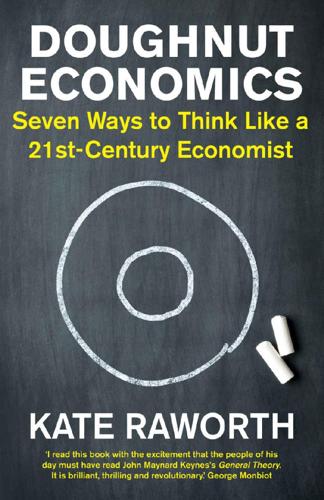
Doughnut Economics: Seven Ways to Think Like a 21st-Century Economist
by
Kate Raworth
Published 22 Mar 2017
Couple this proximity of city dwellers with worldwide communications transmitting news and views, data and ads, and what emerges is a dynamic global network-of-networks of human beings.33 For Veblen, one of the most pernicious effects of such social influence was the rise of what he called ‘conspicuous consumption’: the appeal of buying luxury products and services to signal our status to others in the hope of ‘keeping up with the Joneses’. Joseph Stiglitz points out that this effect is particularly concerning today in the context of high inequality, both within and between countries. There is a ‘well-documented lifestyle effect’, he notes, in which ‘people outside the top 1 percent increasingly live beyond their means. Trickle-down economics may be a chimera, but trickle-down behaviourism is very real.’34 What is the implication for economic policy aiming to influence how we behave? Economists have traditionally sought to change people’s behaviour by changing the relative price of things, be it through a tax on sugar or a discount on solar panels.
…
Kuznets’s first intuition had in fact been right: when wealth is concentrated in few hands – and when the returns to capital are growing faster than the economy itself – inequality does indeed tend to rise. Success to the Successful rules after all, unless governments take action to offset it. The Kuznets Curve may have been debunked, along with the claim that inequality is necessary for progress. But, like all powerful pictures, its memory lingers on, lending credence to the myth of trickle-down economics. In 2014 even economists at the International Monetary Fund (IMF) noted with frustration that, despite evidence to the contrary, ‘the notion of tradeoff between redistribution and growth seems deeply embedded in policymakers’ consciousness’.12 Perhaps that is why, in the midst of severe recession following the 2008 financial crash, the vice-chairman of Goldman Sachs, Lord Griffiths, felt he could justify a return to lavish bonuses for his city traders with the claim that, ‘We have to tolerate the inequality as a way to achieve greater prosperity and opportunity for all.’13 Why inequality matters Inequality may not be inevitable but, in line with the neoliberal script, it was until recently seen as no cause for alarm, and certainly not as an appropriate target for policy.
…
Page numbers in italics denote illustrations A Aalborg, Denmark, 290 Abbott, Anthony ‘Tony’, 31 ABCD group, 148 Abramovitz, Moses, 262 absolute decoupling, 260–61 Acemoglu, Daron, 86 advertising, 58, 106–7, 112, 281 Agbodjinou, Sénamé, 231 agriculture, 5, 46, 72–3, 148, 155, 178, 181, 183 Alaska, 9 Alaska Permanent Fund, 194 Alperovitz, Gar, 177 alternative enterprise designs, 190–91 altruism, 100, 104 Amazon, 192, 196, 276 Amazon rainforest, 105–6, 253 American Economic Association, 3 American Enterprise Institute, 67 American Tobacco Corporation, 107 Andes, 54 animal spirits, 110 Anthropocene epoch, 48, 253 anthropocentrism, 115 Apertuso, 230 Apple, 85, 192 Archer Daniels Midland (ADM), 148 Arendt, Hannah, 115–16 Argentina, 55, 274 Aristotle, 32, 272 Arrow, Kenneth, 134 Articles of Association and Memoranda, 233 Arusha, Tanzania, 202 Asia Wage Floor Alliance, 177 Asian financial crisis (1997), 90 Asknature.org, 232 Athens, 57 austerity, 163 Australia, 31, 103, 177, 180, 211, 224–6, 255, 260 Austria, 263, 274 availability bias, 112 AXIOM, 230 Axtell, Robert, 150 Ayres, Robert, 263 B B Corp, 241 Babylon, 13 Baker, Josephine, 157 balancing feedback loops, 138–41, 155, 271 Ballmer, Steve, 231 Bangla Pesa, 185–6, 293 Bangladesh, 10, 226 Bank for International Settlements, 256 Bank of America, 149 Bank of England, 145, 147, 256 banking, see under finance Barnes, Peter, 201 Barroso, José Manuel, 41 Bartlett, Albert Allen ‘Al’, 247 basic income, 177, 194, 199–201 basic personal values, 107–9 Basle, Switzerland, 80 Bauwens, Michel, 197 Beckerman, Wilfred, 258 Beckham, David, 171 Beech-Nut Packing Company, 107 behavioural economics, 11, 111–14 behavioural psychology, 103, 128 Beinhocker, Eric, 158 Belgium, 236, 252 Bentham, Jeremy, 98 Benyus, Janine, 116, 218, 223–4, 227, 232, 237, 241 Berger, John, 12, 281 Berlin Wall, 141 Bermuda, 277 Bernanke, Ben, 146 Bernays, Edward, 107, 112, 281–3 Bhopal gas disaster (1984), 9 Bible, 19, 114, 151 Big Bang (1986), 87 billionaires, 171, 200, 289 biodiversity, 10, 46, 48–9, 52, 85, 115, 155, 208, 210, 242, 299 as common pool resource, 201 and land conversion, 49 and inequality, 172 and reforesting, 50 biomass, 73, 118, 210, 212, 221 biomimicry, 116, 218, 227, 229 bioplastic, 224, 293 Birmingham, West Midlands, 10 Black, Fischer, 100–101 Blair, Anthony ‘Tony’, 171 Blockchain, 187, 192 blood donation, 104, 118 Body Shop, The, 232–4 Bogotá, Colombia, 119 Bolivia, 54 Boston, Massachusetts, 3 Bowen, Alex, 261 Bowles, Sam, 104 Box, George, 22 Boyce, James, 209 Brasselberg, Jacob, 187 Brazil, 124, 226, 281, 290 bread riots, 89 Brisbane, Australia, 31 Brown, Gordon, 146 Brynjolfsson, Erik, 193, 194, 258 Buddhism, 54 buen vivir, 54 Bullitt Center, Seattle, 217 Bunge, 148 Burkina Faso, 89 Burmark, Lynell, 13 business, 36, 43, 68, 88–9 automation, 191–5, 237, 258, 278 boom and bust, 246 and circular economy, 212, 215–19, 220, 224, 227–30, 232–4, 292 and complementary currencies, 184–5, 292 and core economy, 80 and creative destruction, 142 and feedback loops, 148 and finance, 183, 184 and green growth, 261, 265, 269 and households, 63, 68 living metrics, 241 and market, 68, 88 micro-businesses, 9 and neoliberalism, 67, 87 ownership, 190–91 and political funding, 91–2, 171–2 and taxation, 23, 276–7 workers’ rights, 88, 91, 269 butterfly economy, 220–42 C C–ROADS (Climate Rapid Overview and Decision Support), 153 C40 network, 280 calculating man, 98 California, United States, 213, 224, 293 Cambodia, 254 Cameron, David, 41 Canada, 196, 255, 260, 281, 282 cancer, 124, 159, 196 Capital Institute, 236 carbon emissions, 49–50, 59, 75 and decoupling, 260, 266 and forests, 50, 52 and inequality, 58 reduction of, 184, 201, 213, 216–18, 223–7, 239–41, 260, 266 stock–flow dynamics, 152–4 taxation, 201, 213 Cargill, 148 Carney, Mark, 256 Caterpillar, 228 Catholic Church, 15, 19 Cato Institute, 67 Celts, 54 central banks, 6, 87, 145, 146, 147, 183, 184, 256 Chang, Ha-Joon, 82, 86, 90 Chaplin, Charlie, 157 Chiapas, Mexico, 121–2 Chicago Board Options Exchange (CBOE), 100–101 Chicago School, 34, 99 Chile, 7, 42 China, 1, 7, 48, 154, 289–90 automation, 193 billionaires, 200, 289 greenhouse gas emissions, 153 inequality, 164 Lake Erhai doughnut analysis, 56 open-source design, 196 poverty reduction, 151, 198 renewable energy, 239 tiered pricing, 213 Chinese Development Bank, 239 chrematistics, 32, 273 Christianity, 15, 19, 114, 151 cigarettes, 107, 124 circular economy, 220–42, 257 Circular Flow diagram, 19–20, 28, 62–7, 64, 70, 78, 87, 91, 92, 93, 262 Citigroup, 149 Citizen Reaction Study, 102 civil rights movement, 77 Cleveland, Ohio, 190 climate change, 1, 3, 5, 29, 41, 45–53, 63, 74, 75–6, 91, 141, 144, 201 circular economy, 239, 241–2 dynamics of, 152–5 and G20, 31 and GDP growth, 255, 256, 260, 280 and heuristics, 114 and human rights, 10 and values, 126 climate positive cities, 239 closed systems, 74 coffee, 221 cognitive bias, 112–14 Colander, David, 137 Colombia, 119 common-pool resources, 82–3, 181, 201–2 commons, 69, 82–4, 287 collaborative, 78, 83, 191, 195, 196, 264, 292 cultural, 83 digital, 82, 83, 192, 197, 281 and distribution, 164, 180, 181–2, 205, 267 Embedded Economy, 71, 73, 77–8, 82–4, 85, 92 knowledge, 197, 201–2, 204, 229, 231, 292 commons and money creation, see complementary currencies natural, 82, 83, 180, 181–2, 201, 265 and regeneration, 229, 242, 267, 292 and state, 85, 93, 197, 237 and systems, 160 tragedy of, 28, 62, 69, 82, 181 triumph of, 83 and values, 106, 108 Commons Trusts, 201 complementary currencies, 158, 182–8, 236, 292 complex systems, 28, 129–62 complexity science, 136–7 Consumer Reaction Study, 102 consumerism, 58, 102, 121, 280–84 cooking, 45, 80, 186 Coote, Anna, 278 Copenhagen, Denmark, 124 Copernicus, Nicolaus, 14–15 copyright, 195, 197, 204 core economy, 79–80 Corporate To Do List, 215–19 Costa Rica, 172 Council of Economic Advisers, US, 6, 37 Cox, Jo, 117 cradle to cradle, 224 creative destruction, 142 Cree, 282 Crompton, Tom, 125–6 cross-border flows, 89–90 crowdsourcing, 204 cuckoos, 32, 35, 36, 38, 40, 54, 60, 159, 244, 256, 271 currencies, 182–8, 236, 274, 292 D da Vinci, Leonardo, 13, 94–5 Dallas, Texas, 120 Daly, Herman, 74, 143, 271 Danish Nudging Network, 124 Darwin, Charles, 14 Debreu, Gerard, 134 debt, 37, 146–7, 172–3, 182–5, 247, 255, 269 decoupling, 193, 210, 258–62, 273 defeat device software, 216 deforestation, 49–50, 74, 208, 210 degenerative linear economy, 211–19, 222–3, 237 degrowth, 244 DeMartino, George, 161 democracy, 77, 171–2, 258 demurrage, 274 Denmark, 180, 275, 290 deregulation, 82, 87, 269 derivatives, 100–101, 149 Devas, Charles Stanton, 97 Dey, Suchitra, 178 Diamond, Jared, 154 diarrhoea, 5 differential calculus, 131, 132 digital revolution, 191–2, 264 diversify–select–amplify, 158 double spiral, 54 Doughnut model, 10–11, 11, 23–5, 44, 51 and aspiration, 58–9, 280–84 big picture, 28, 42, 61–93 distribution, 29, 52, 57, 58, 76, 93, 158, 163–205 ecological ceiling, 10, 11, 44, 45, 46, 49, 51, 218, 254, 295, 298 goal, 25–8, 31–60 and governance, 57, 59 growth agnosticism, 29–30, 243–85 human nature, 28–9, 94–128 and population, 57–8 regeneration, 29, 158, 206–42 social foundation, 10, 11, 44, 45, 49, 51, 58, 77, 174, 200, 254, 295–6 systems, 28, 129–62 and technology, 57, 59 Douglas, Margaret, 78–9 Dreyfus, Louis, 148 ‘Dumb and Dumber in Macroeconomics’ (Solow), 135 Durban, South Africa, 214 E Earning by Learning, 120 Earth-system science, 44–53, 115, 216, 288, 298 Easter Island, 154 Easterlin, Richard, 265–6 eBay, 105, 192 eco-literacy, 115 ecological ceiling, 10, 11, 44, 45, 46, 49, 51, 218, 254, 295, 298 Ecological Performance Standards, 241 Econ 101 course, 8, 77 Economics (Lewis), 114 Economics (Samuelson), 19–20, 63–7, 70, 74, 78, 86, 91, 92, 93, 262 Economy for the Common Good, 241 ecosystem services, 7, 116, 269 Ecuador, 54 education, 9, 43, 45, 50–52, 85, 169–70, 176, 200, 249, 279 economic, 8, 11, 18, 22, 24, 36, 287–93 environmental, 115, 239–40 girls’, 57, 124, 178, 198 online, 83, 197, 264, 290 pricing, 118–19 efficient market hypothesis, 28, 62, 68, 87 Egypt, 48, 89 Eisenstein, Charles, 116 electricity, 9, 45, 236, 240 and Bangla Pesa, 186 cars, 231 Ethereum, 187–8 and MONIAC, 75, 262 pricing, 118, 213 see also renewable energy Elizabeth II, Queen of the United Kingdom, 145 Ellen MacArthur Foundation, 220 Embedded Economy, 71–93, 263 business, 88–9 commons, 82–4 Earth, 72–6 economy, 77–8 finance, 86–8 household, 78–81 market, 81–2 power, 91–92 society, 76–7 state, 84–6 trade, 89–90 employment, 36, 37, 51, 142, 176 automation, 191–5, 237, 258, 278 labour ownership, 188–91 workers’ rights, 88, 90, 269 Empty World, 74 Engels, Friedrich, 88 environment and circular economy, 220–42, 257 conservation, 121–2 and degenerative linear economy, 211–19, 222–3 degradation, 5, 9, 10, 29, 44–53, 74, 154, 172, 196, 206–42 education on, 115, 239–40 externalities, 152 fair share, 216–17 and finance, 234–7 generosity, 218–19, 223–7 green growth, 41, 210, 243–85 nudging, 123–5 taxation and quotas, 213–14, 215 zero impact, 217–18, 238, 241 Environmental Dashboard, 240–41 environmental economics, 7, 11, 114–16 Environmental Kuznets Curve, 207–11, 241 environmental space, 54 Epstein, Joshua, 150 equilibrium theory, 134–62 Ethereum, 187–8 ethics, 160–62 Ethiopia, 9, 226, 254 Etsy, 105 Euclid, 13, 15 European Central Bank, 145, 275 European Commission, 41 European Union (EU), 92, 153, 210, 222, 255, 258 Evergreen Cooperatives, 190 Evergreen Direct Investing (EDI), 273 exogenous shocks, 141 exponential growth, 39, 246–85 externalities, 143, 152, 213 Exxon Valdez oil spill (1989), 9 F Facebook, 192 fair share, 216–17 Fama, Eugene, 68, 87 fascism, 234, 277 Federal Reserve, US, 87, 145, 146, 271, 282 feedback loops, 138–41, 143, 148, 155, 250, 271 feminist economics, 11, 78–81, 160 Ferguson, Thomas, 91–2 finance animal spirits, 110 bank runs, 139 Black–Scholes model, 100–101 boom and bust, 28–9, 110, 144–7 and Circular Flow, 63–4, 87 and complex systems, 134, 138, 139, 140, 141, 145–7 cross-border flows, 89 deregulation, 87 derivatives, 100–101, 149 and distribution, 169, 170, 173, 182–4, 198–9, 201 and efficient market hypothesis, 63, 68 and Embedded Economy, 71, 86–8 and financial-instability hypothesis, 87, 146 and GDP growth, 38 and media, 7–8 mobile banking, 199–200 and money creation, 87, 182–5 and regeneration, 227, 229, 234–7 in service to life, 159, 234–7 stakeholder finance, 190 and sustainability, 216, 235–6, 239 financial crisis (2008), 1–4, 5, 40, 63, 86, 141, 144, 278, 290 and efficient market hypothesis, 87 and equilibrium theory, 134, 145 and financial-instability hypothesis, 87 and inequality, 90, 170, 172, 175 and money creation, 182 and worker’s rights, 278 financial flows, 89 Financial Times, 183, 266, 289 financial-instability hypothesis, 87, 146 First Green Bank, 236 First World War (1914–18), 166, 170 Fisher, Irving, 183 fluid values, 102, 106–9 food, 3, 43, 45, 50, 54, 58, 59, 89, 198 food banks, 165 food price crisis (2007–8), 89, 90, 180 Ford, 277–8 foreign direct investment, 89 forest conservation, 121–2 fossil fuels, 59, 73, 75, 92, 212, 260, 263 Foundations of Economic Analysis (Samuelson), 17–18 Foxconn, 193 framing, 22–3 France, 43, 165, 196, 238, 254, 256, 281, 290 Frank, Robert, 100 free market, 33, 37, 67, 68, 70, 81–2, 86, 90 free open-source hardware (FOSH), 196–7 free open-source software (FOSS), 196 free trade, 70, 90 Freeman, Ralph, 18–19 freshwater cycle, 48–9 Freud, Sigmund, 107, 281 Friedman, Benjamin, 258 Friedman, Milton, 34, 62, 66–9, 84–5, 88, 99, 183, 232 Friends of the Earth, 54 Full World, 75 Fuller, Buckminster, 4 Fullerton, John, 234–6, 273 G G20, 31, 56, 276, 279–80 G77, 55 Gal, Orit, 141 Gandhi, Mohandas, 42, 293 Gangnam Style, 145 Gardens of Democracy, The (Liu & Hanauer), 158 gender equality, 45, 51–2, 57, 78–9, 85, 88, 118–19, 124, 171, 198 generosity, 218–19, 223–9 geometry, 13, 15 George, Henry, 149, 179 Georgescu-Roegen, Nicholas, 252 geothermal energy, 221 Gerhardt, Sue, 283 Germany, 2, 41, 100, 118, 165, 189, 211, 213, 254, 256, 260, 274 Gessel, Silvio, 274 Ghent, Belgium, 236 Gift Relationship, The (Titmuss), 118–19 Gigerenzer, Gerd, 112–14 Gintis, Herb, 104 GiveDirectly, 200 Glass–Steagall Act (1933), 87 Glennon, Roger, 214 Global Alliance for Tax Justice, 277 global material footprints, 210–11 Global Village Construction Set, 196 globalisation, 89 Goerner, Sally, 175–6 Goffmann, Erving, 22 Going for Growth, 255 golden rule, 91 Goldman Sachs, 149, 170 Gómez-Baggethun, Erik, 122 Goodall, Chris, 211 Goodwin, Neva, 79 Goody, Jade, 124 Google, 192 Gore, Albert ‘Al’, 172 Gorgons, 244, 256, 257, 266 graffiti, 15, 25, 287 Great Acceleration, 46, 253–4 Great Depression (1929–39), 37, 70, 170, 173, 183, 275, 277, 278 Great Moderation, 146 Greece, Ancient, 4, 13, 32, 48, 54, 56–7, 160, 244 green growth, 41, 210, 243–85 Greenham, Tony, 185 greenhouse gas emissions, 31, 46, 50, 75–6, 141, 152–4 and decoupling, 260, 266 and Environmental Kuznets Curve, 208, 210 and forests, 50, 52 and G20, 31 and inequality, 58 reduction of, 184, 201–2, 213, 216–18, 223–7, 239–41, 256, 259–60, 266, 298 stock–flow dynamics, 152–4 and taxation, 201, 213 Greenland, 141, 154 Greenpeace, 9 Greenspan, Alan, 87 Greenwich, London, 290 Grenoble, France, 281 Griffiths, Brian, 170 gross domestic product (GDP), 25, 31–2, 35–43, 57, 60, 84, 164 as cuckoo, 32, 35, 36, 38, 40, 54, 60, 159, 244, 256, 271 and Environmental Kuznets Curve, 207–11 and exponential growth, 39, 53, 246–85 and growth agnosticism, 29–30, 240, 243–85 and inequality, 173 and Kuznets Curve, 167, 173, 188–9 gross national product (GNP), 36–40 Gross World Product, 248 Grossman, Gene, 207–8, 210 ‘grow now, clean up later’, 207 Guatemala, 196 H Haifa, Israel, 120 Haldane, Andrew, 146 Han Dynasty, 154 Hanauer, Nick, 158 Hansen, Pelle, 124 Happy Planet Index, 280 Hardin, Garrett, 69, 83, 181 Harvard University, 2, 271, 290 von Hayek, Friedrich, 7–8, 62, 66, 67, 143, 156, 158 healthcare, 43, 50, 57, 85, 123, 125, 170, 176, 200, 269, 279 Heilbroner, Robert, 53 Henry VIII, King of England and Ireland, 180 Hepburn, Cameron, 261 Herbert Simon, 111 heuristics, 113–14, 118, 123 high-income countries growth, 30, 244–5, 254–72, 282 inequality, 165, 168, 169, 171 labour, 177, 188–9, 278 overseas development assistance (ODA), 198–9 resource intensive lifestyles, 46, 210–11 trade, 90 Hippocrates, 160 History of Economic Analysis (Schumpeter), 21 HIV/AIDS, 123 Holocene epoch, 46–8, 75, 115, 253 Homo economicus, 94–103, 109, 127–8 Homo sapiens, 38, 104, 130 Hong Kong, 180 household, 78 housing, 45, 59, 176, 182–3, 269 Howe, Geoffrey, 67 Hudson, Michael, 183 Human Development Index, 9, 279 human nature, 28 human rights, 10, 25, 45, 49, 50, 95, 214, 233 humanistic economics, 42 hydropower, 118, 260, 263 I Illinois, United States, 179–80 Imago Mundi, 13 immigration, 82, 199, 236, 266 In Defense of Economic Growth (Beckerman), 258 Inclusive Wealth Index, 280 income, 51, 79–80, 82, 88, 176–8, 188–91, 194, 199–201 India, 2, 9, 10, 42, 124, 164, 178, 196, 206–7, 242, 290 Indonesia, 90, 105–6, 164, 168, 200 Indus Valley civilisation, 48 inequality, 1, 5, 25, 41, 63, 81, 88, 91, 148–52, 209 and consumerism, 111 and democracy, 171 and digital revolution, 191–5 and distribution, 163–205 and environmental degradation, 172 and GDP growth, 173 and greenhouse gas emissions, 58 and intellectual property, 195–8 and Kuznets Curve, 29, 166–70, 173–4 and labour ownership, 188–91 and land ownership, 178–82 and money creation, 182–8 and social welfare, 171 Success to the Successful, 148, 149, 151, 166 inflation, 36, 248, 256, 275 insect pollination services, 7 Institute of Economic Affairs, 67 institutional economics, 11 intellectual property rights, 195–8, 204 interest, 36, 177, 182, 184, 275–6 Intergovernmental Panel on Climate Change, 25 International Monetary Fund (IMF), 170, 172, 173, 183, 255, 258, 271 Internet, 83–4, 89, 105, 192, 202, 264 Ireland, 277 Iroquois Onondaga Nation, 116 Israel, 100, 103, 120 Italy, 165, 196, 254 J Jackson, Tim, 58 Jakubowski, Marcin, 196 Jalisco, Mexico, 217 Japan, 168, 180, 211, 222, 254, 256, 263, 275 Jevons, William Stanley, 16, 97–8, 131, 132, 137, 142 John Lewis Partnership, 190 Johnson, Lyndon Baines, 37 Johnson, Mark, 38 Johnson, Todd, 191 JPMorgan Chase, 149, 234 K Kahneman, Daniel, 111 Kamkwamba, William, 202, 204 Kasser, Tim, 125–6 Keen, Steve, 146, 147 Kelly, Marjorie, 190–91, 233 Kennedy, John Fitzgerald, 37, 250 Kennedy, Paul, 279 Kenya, 118, 123, 180, 185–6, 199–200, 226, 292 Keynes, John Maynard, 7–8, 22, 66, 69, 134, 184, 251, 277–8, 284, 288 Kick It Over movement, 3, 289 Kingston, London, 290 Knight, Frank, 66, 99 knowledge commons, 202–4, 229, 292 Kokstad, South Africa, 56 Kondratieff waves, 246 Korzybski, Alfred, 22 Krueger, Alan, 207–8, 210 Kuhn, Thomas, 22 Kumhof, Michael, 172 Kuwait, 255 Kuznets, Simon, 29, 36, 39–40, 166–70, 173, 174, 175, 204, 207 KwaZulu Natal, South Africa, 56 L labour ownership, 188–91 Lake Erhai, Yunnan, 56 Lakoff, George, 23, 38, 276 Lamelara, Indonesia, 105–6 land conversion, 49, 52, 299 land ownership, 178–82 land-value tax, 73, 149, 180 Landesa, 178 Landlord’s Game, The, 149 law of demand, 16 laws of motion, 13, 16–17, 34, 129, 131 Lehman Brothers, 141 Leopold, Aldo, 115 Lesotho, 118, 199 leverage points, 159 Lewis, Fay, 178 Lewis, Justin, 102 Lewis, William Arthur, 114, 167 Lietaer, Bernard, 175, 236 Limits to Growth, 40, 154, 258 Linux, 231 Liu, Eric, 158 living metrics, 240–42 living purpose, 233–4 Lomé, Togo, 231 London School of Economics (LSE), 2, 34, 65, 290 London Underground, 12 loss aversion, 112 low-income countries, 90, 164–5, 168, 173, 180, 199, 201, 209, 226, 254, 259 Lucas, Robert, 171 Lula da Silva, Luiz Inácio, 124 Luxembourg, 277 Lyle, John Tillman, 214 Lyons, Oren, 116 M M–PESA, 199–200 MacDonald, Tim, 273 Machiguenga, 105–6 MacKenzie, Donald, 101 macroeconomics, 36, 62–6, 76, 80, 134–5, 145, 147, 150, 244, 280 Magie, Elizabeth, 149, 153 Malala effect, 124 malaria, 5 Malawi, 118, 202, 204 Malaysia, 168 Mali, Taylor, 243 Malthus, Thomas, 252 Mamsera Rural Cooperative, 190 Manhattan, New York, 9, 41 Mani, Muthukumara, 206 Manitoba, 282 Mankiw, Gregory, 2, 34 Mannheim, Karl, 22 Maoris, 54 market, 81–2 and business, 88 circular flow, 64 and commons, 83, 93, 181, 200–201 efficiency of, 28, 62, 68, 87, 148, 181 and equilibrium theory, 131–5, 137, 143–7, 155, 156 free market, 33, 37, 67–70, 90, 208 and households, 63, 69, 78, 79 and maxi-max rule, 161 and pricing, 117–23, 131, 160 and rational economic man, 96, 100–101, 103, 104 and reciprocity, 105, 106 reflexivity of, 144–7 and society, 69–70 and state, 84–6, 200, 281 Marshall, Alfred, 17, 98, 133, 165, 253, 282 Marx, Karl, 88, 142, 165, 272 Massachusetts Institute of Technology (MIT), 17–20, 152–5 massive open online courses (MOOCs), 290 Matthew Effect, 151 Max-Neef, Manfred, 42 maxi-max rule, 161 maximum wage, 177 Maya civilisation, 48, 154 Mazzucato, Mariana, 85, 195, 238 McAfee, Andrew, 194, 258 McDonough, William, 217 Meadows, Donella, 40, 141, 159, 271, 292 Medusa, 244, 257, 266 Merkel, Angela, 41 Messerli, Elspeth, 187 Metaphors We Live By (Lakoff & Johnson), 38 Mexico, 121–2, 217 Michaels, Flora S., 6 micro-businesses, 9, 173, 178 microeconomics, 132–4 microgrids, 187–8 Micronesia, 153 Microsoft, 231 middle class, 6, 46, 58 middle-income countries, 90, 164, 168, 173, 180, 226, 254 migration, 82, 89–90, 166, 195, 199, 236, 266, 286 Milanovic, Branko, 171 Mill, John Stuart, 33–4, 73, 97, 250, 251, 283, 284, 288 Millo, Yuval, 101 minimum wage, 82, 88, 176 Minsky, Hyman, 87, 146 Mises, Ludwig von, 66 mission zero, 217 mobile banking, 199–200 mobile phones, 222 Model T revolution, 277–8 Moldova, 199 Mombasa, Kenya, 185–6 Mona Lisa (da Vinci), 94 money creation, 87, 164, 177, 182–8, 205 MONIAC (Monetary National Income Analogue Computer), 64–5, 75, 142, 262 Monoculture (Michaels), 6 Monopoly, 149 Mont Pelerin Society, 67, 93 Moral Consequences of Economic Growth, The (Friedman), 258 moral vacancy, 41 Morgan, Mary, 99 Morogoro, Tanzania, 121 Moyo, Dambisa, 258 Muirhead, Sam, 230, 231 MultiCapital Scorecard, 241 Murphy, David, 264 Murphy, Richard, 185 musical tastes, 110 Myriad Genetics, 196 N national basic income, 177 Native Americans, 115, 116, 282 natural capital, 7, 116, 269 Natural Economic Order, The (Gessel), 274 Nedbank, 216 negative externalities, 213 negative interest rates, 275–6 neoclassical economics, 134, 135 neoliberalism, 7, 62–3, 67–70, 81, 83, 84, 88, 93, 143, 170, 176 Nepal, 181, 199 Nestlé, 217 Netherlands, 211, 235, 224, 226, 238, 277 networks, 110–11, 117, 118, 123, 124–6, 174–6 neuroscience, 12–13 New Deal, 37 New Economics Foundation, 278, 283 New Year’s Day, 124 New York, United States, 9, 41, 55 Newlight Technologies, 224, 226, 293 Newton, Isaac, 13, 15–17, 32–3, 95, 97, 129, 131, 135–7, 142, 145, 162 Nicaragua, 196 Nigeria, 164 nitrogen, 49, 52, 212–13, 216, 218, 221, 226, 298 ‘no pain, no gain’, 163, 167, 173, 204, 209 Nobel Prize, 6–7, 43, 83, 101, 167 Norway, 281 nudging, 112, 113, 114, 123–6 O Obama, Barack, 41, 92 Oberlin, Ohio, 239, 240–41 Occupy movement, 40, 91 ocean acidification, 45, 46, 52, 155, 242, 298 Ohio, United States, 190, 239 Okun, Arthur, 37 onwards and upwards, 53 Open Building Institute, 196 Open Source Circular Economy (OSCE), 229–32 open systems, 74 open-source design, 158, 196–8, 265 open-source licensing, 204 Organisation for Economic Co-operation and Development (OECD), 38, 210, 255–6, 258 Origin of Species, The (Darwin), 14 Ormerod, Paul, 110, 111 Orr, David, 239 Ostrom, Elinor, 83, 84, 158, 160, 181–2 Ostry, Jonathan, 173 OSVehicle, 231 overseas development assistance (ODA), 198–200 ownership of wealth, 177–82 Oxfam, 9, 44 Oxford University, 1, 36 ozone layer, 9, 50, 115 P Pachamama, 54, 55 Pakistan, 124 Pareto, Vilfredo, 165–6, 175 Paris, France, 290 Park 20|20, Netherlands, 224, 226 Parker Brothers, 149 Patagonia, 56 patents, 195–6, 197, 204 patient capital, 235 Paypal, 192 Pearce, Joshua, 197, 203–4 peer-to-peer networks, 187, 192, 198, 203, 292 People’s QE, 184–5 Perseus, 244 Persia, 13 Peru, 2, 105–6 Phillips, Adam, 283 Phillips, William ‘Bill’, 64–6, 75, 142, 262 phosphorus, 49, 52, 212–13, 218, 298 Physiocrats, 73 Pickett, Kate, 171 pictures, 12–25 Piketty, Thomas, 169 Playfair, William, 16 Poincaré, Henri, 109, 127–8 Polanyi, Karl, 82, 272 political economy, 33–4, 42 political funding, 91–2, 171–2 political voice, 43, 45, 51–2, 77, 117 pollution, 29, 45, 52, 85, 143, 155, 206–17, 226, 238, 242, 254, 298 population, 5, 46, 57, 155, 199, 250, 252, 254 Portugal, 211 post-growth society, 250 poverty, 5, 9, 37, 41, 50, 88, 118, 148, 151 emotional, 283 and inequality, 164–5, 168–9, 178 and overseas development assistance (ODA), 198–200 and taxation, 277 power, 91–92 pre-analytic vision, 21–2 prescription medicines, 123 price-takers, 132 prices, 81, 118–23, 131, 160 Principles of Economics (Mankiw), 34 Principles of Economics (Marshall), 17, 98 Principles of Political Economy (Mill), 288 ProComposto, 226 Propaganda (Bernays), 107 public relations, 107, 281 public spending v. investment, 276 public–private patents, 195 Putnam, Robert, 76–7 Q quantitative easing (QE), 184–5 Quebec, 281 Quesnay, François, 16, 73 R Rabot, Ghent, 236 Rancière, Romain, 172 rating and review systems, 105 rational economic man, 94–103, 109, 111, 112, 126, 282 Reagan, Ronald, 67 reciprocity, 103–6, 117, 118, 123 reflexivity of markets, 144 reinforcing feedback loops, 138–41, 148, 250, 271 relative decoupling, 259 renewable energy biomass energy, 118, 221 and circular economy, 221, 224, 226, 235, 238–9, 274 and commons, 83, 85, 185, 187–8, 192, 203, 264 geothermal energy, 221 and green growth, 257, 260, 263, 264, 267 hydropower, 118, 260, 263 pricing, 118 solar energy, see solar energy wave energy, 221 wind energy, 75, 118, 196, 202–3, 221, 233, 239, 260, 263 rentier sector, 180, 183, 184 reregulation, 82, 87, 269 resource flows, 175 resource-intensive lifestyles, 46 Rethinking Economics, 289 Reynebeau, Guy, 237 Ricardo, David, 67, 68, 73, 89, 250 Richardson, Katherine, 53 Rifkin, Jeremy, 83, 264–5 Rise and Fall of the Great Powers, The (Kennedy), 279 risk, 112, 113–14 Robbins, Lionel, 34 Robinson, James, 86 Robinson, Joan, 142 robots, 191–5, 237, 258, 278 Rockefeller Foundation, 135 Rockford, Illinois, 179–80 Rockström, Johan, 48, 55 Roddick, Anita, 232–4 Rogoff, Kenneth, 271, 280 Roman Catholic Church, 15, 19 Rombo, Tanzania, 190 Rome, Ancient, 13, 48, 154 Romney, Mitt, 92 Roosevelt, Franklin Delano, 37 rooted membership, 190 Rostow, Walt, 248–50, 254, 257, 267–70, 284 Ruddick, Will, 185 rule of thumb, 113–14 Ruskin, John, 42, 223 Russia, 200 rust belt, 90, 239 S S curve, 251–6 Sainsbury’s, 56 Samuelson, Paul, 17–21, 24–5, 38, 62–7, 70, 74, 84, 91, 92, 93, 262, 290–91 Sandel, Michael, 41, 120–21 Sanergy, 226 sanitation, 5, 51, 59 Santa Fe, California, 213 Santinagar, West Bengal, 178 São Paolo, Brazil, 281 Sarkozy, Nicolas, 43 Saumweder, Philipp, 226 Scharmer, Otto, 115 Scholes, Myron, 100–101 Schumacher, Ernst Friedrich, 42, 142 Schumpeter, Joseph, 21 Schwartz, Shalom, 107–9 Schwarzenegger, Arnold, 163, 167, 204 ‘Science and Complexity’ (Weaver), 136 Scotland, 57 Seaman, David, 187 Seattle, Washington, 217 second machine age, 258 Second World War (1939–45), 18, 37, 70, 170 secular stagnation, 256 self-interest, 28, 68, 96–7, 99–100, 102–3 Selfish Society, The (Gerhardt), 283 Sen, Amartya, 43 Shakespeare, William, 61–3, 67, 93 shale gas, 264, 269 Shang Dynasty, 48 shareholders, 82, 88, 189, 191, 227, 234, 273, 292 sharing economy, 264 Sheraton Hotel, Boston, 3 Siegen, Germany, 290 Silicon Valley, 231 Simon, Julian, 70 Sinclair, Upton, 255 Sismondi, Jean, 42 slavery, 33, 77, 161 Slovenia, 177 Small Is Beautiful (Schumacher), 42 smart phones, 85 Smith, Adam, 33, 57, 67, 68, 73, 78–9, 81, 96–7, 103–4, 128, 133, 160, 181, 250 social capital, 76–7, 122, 125, 172 social contract, 120, 125 social foundation, 10, 11, 44, 45, 49, 51, 58, 77, 174, 200, 254, 295–6 social media, 83, 281 Social Progress Index, 280 social pyramid, 166 society, 76–7 solar energy, 59, 75, 111, 118, 187–8, 190 circular economy, 221, 222, 223, 224, 226–7, 239 commons, 203 zero-energy buildings, 217 zero-marginal-cost revolution, 84 Solow, Robert, 135, 150, 262–3 Soros, George, 144 South Africa, 56, 177, 214, 216 South Korea, 90, 168 South Sea Bubble (1720), 145 Soviet Union (1922–91), 37, 67, 161, 279 Spain, 211, 238, 256 Spirit Level, The (Wilkinson & Pickett), 171 Sraffa, Piero, 148 St Gallen, Switzerland, 186 Stages of Economic Growth, The (Rostow), 248–50, 254 stakeholder finance, 190 Standish, Russell, 147 state, 28, 33, 69–70, 78, 82, 160, 176, 180, 182–4, 188 and commons, 85, 93, 197, 237 and market, 84–6, 200, 281 partner state, 197, 237–9 and robots, 195 stationary state, 250 Steffen, Will, 46, 48 Sterman, John, 66, 143, 152–4 Steuart, James, 33 Stiglitz, Joseph, 43, 111, 196 stocks and flows, 138–41, 143, 144, 152 sub-prime mortgages, 141 Success to the Successful, 148, 149, 151, 166 Sugarscape, 150–51 Summers, Larry, 256 Sumner, Andy, 165 Sundrop Farms, 224–6 Sunstein, Cass, 112 supply and demand, 28, 132–6, 143, 253 supply chains, 10 Sweden, 6, 255, 275, 281 swishing, 264 Switzerland, 42, 66, 80, 131, 186–7, 275 T Tableau économique (Quesnay), 16 tabula rasa, 20, 25, 63, 291 takarangi, 54 Tanzania, 121, 190, 202 tar sands, 264, 269 taxation, 78, 111, 165, 170, 176, 177, 237–8, 276–9 annual wealth tax, 200 environment, 213–14, 215 global carbon tax, 201 global financial transactions tax, 201, 235 land-value tax, 73, 149, 180 non-renewable resources, 193, 237–8, 278–9 People’s QE, 185 tax relief v. tax justice, 23, 276–7 TED (Technology, Entertainment, Design), 202, 258 Tempest, The (Shakespeare), 61, 63, 93 Texas, United States, 120 Thailand, 90, 200 Thaler, Richard, 112 Thatcher, Margaret, 67, 69, 76 Theory of Moral Sentiments (Smith), 96 Thompson, Edward Palmer, 180 3D printing, 83–4, 192, 198, 231, 264 thriving-in-balance, 54–7, 62 tiered pricing, 213–14 Tigray, Ethiopia, 226 time banking, 186 Titmuss, Richard, 118–19 Toffler, Alvin, 12, 80 Togo, 231, 292 Torekes, 236–7 Torras, Mariano, 209 Torvalds, Linus, 231 trade, 62, 68–9, 70, 89–90 trade unions, 82, 176, 189 trademarks, 195, 204 Transatlantic Trade and Investment Partnership (TTIP), 92 transport, 59 trickle-down economics, 111, 170 Triodos, 235 Turkey, 200 Tversky, Amos, 111 Twain, Mark, 178–9 U Uganda, 118, 125 Ulanowicz, Robert, 175 Ultimatum Game, 105, 117 unemployment, 36, 37, 276, 277–9 United Kingdom Big Bang (1986), 87 blood donation, 118 carbon dioxide emissions, 260 free trade, 90 global material footprints, 211 money creation, 182 MONIAC (Monetary National Income Analogue Computer), 64–5, 75, 142, 262 New Economics Foundation, 278, 283 poverty, 165, 166 prescription medicines, 123 wages, 188 United Nations, 55, 198, 204, 255, 258, 279 G77 bloc, 55 Human Development Index, 9, 279 Sustainable Development Goals, 24, 45 United States American Economic Association meeting (2015), 3 blood donation, 118 carbon dioxide emissions, 260 Congress, 36 Council of Economic Advisers, 6, 37 Earning by Learning, 120 Econ 101 course, 8, 77 Exxon Valdez oil spill (1989), 9 Federal Reserve, 87, 145, 146, 271, 282 free trade, 90 Glass–Steagall Act (1933), 87 greenhouse gas emissions, 153 global material footprint, 211 gross national product (GNP), 36–40 inequality, 170, 171 land-value tax, 73, 149, 180 political funding, 91–2, 171 poverty, 165, 166 productivity and employment, 193 rust belt, 90, 239 Transatlantic Trade and Investment Partnership (TTIP), 92 wages, 188 universal basic income, 200 University of Berkeley, 116 University of Denver, 160 urbanisation, 58–9 utility, 35, 98, 133 V values, 6, 23, 34, 35, 42, 117, 118, 121, 123–6 altruism, 100, 104 anthropocentric, 115 extrinsic, 115 fluid, 28, 102, 106–9 and networks, 110–11, 117, 118, 123, 124–6 and nudging, 112, 113, 114, 123–6 and pricing, 81, 120–23 Veblen, Thorstein, 82, 109, 111, 142 Venice, 195 verbal framing, 23 Verhulst, Pierre, 252 Victor, Peter, 270 Viner, Jacob, 34 virtuous cycles, 138, 148 visual framing, 23 Vitruvian Man, 13–14 Volkswagen, 215–16 W Wacharia, John, 186 Wall Street, 149, 234, 273 Wallich, Henry, 282 Walras, Léon, 131, 132, 133–4, 137 Ward, Barbara, 53 Warr, Benjamin, 263 water, 5, 9, 45, 46, 51, 54, 59, 79, 213–14 wave energy, 221 Ways of Seeing (Berger), 12, 281 Wealth of Nations, The (Smith), 74, 78, 96, 104 wealth ownership, 177–82 Weaver, Warren, 135–6 weightless economy, 261–2 WEIRD (Western, educated, industrialised, rich, democratic), 103–5, 110, 112, 115, 117, 282 West Bengal, India, 124, 178 West, Darrell, 171–2 wetlands, 7 whale hunting, 106 Wiedmann, Tommy, 210 Wikipedia, 82, 223 Wilkinson, Richard, 171 win–win trade, 62, 68, 89 wind energy, 75, 118, 196, 202–3, 221, 233, 239, 260, 263 Wizard of Oz, The, 241 Woelab, 231, 293 Wolf, Martin, 183, 266 women’s rights, 33, 57, 107, 160, 201 and core economy, 69, 79–81 education, 57, 124, 178, 198 and land ownership, 178 see also gender equality workers’ rights, 88, 91, 269 World 3 model, 154–5 World Bank, 6, 41, 119, 164, 168, 171, 206, 255, 258 World No Tobacco Day, 124 World Trade Organization, 6, 89 worldview, 22, 54, 115 X xenophobia, 266, 277, 286 Xenophon, 4, 32, 56–7, 160 Y Yandle, Bruce, 208 Yang, Yuan, 1–3, 289–90 yin yang, 54 Yousafzai, Malala, 124 YouTube, 192 Yunnan, China, 56 Z Zambia, 10 Zanzibar, 9 Zara, 276 Zeitvorsoge, 186–7 zero environmental impact, 217–18, 238, 241 zero-hour contracts, 88 zero-humans-required production, 192 zero-interest loans, 183 zero-marginal-cost revolution, 84, 191, 264 zero-waste manufacturing, 227 Zinn, Howard, 77 PICTURE ACKNOWLEDGEMENTS Illustrations are reproduced by kind permission of: archive.org

The Limits of the Market: The Pendulum Between Government and Market
by
Paul de Grauwe
and
Anna Asbury
Published 12 Mar 2017
In countries such as the UK and US the income of top earners was almost completely siphoned off, with tax rates of ninety per cent or more on the highest incomes, reflecting a widespread view that the rich do not really contribute to economic prosperity. This flew in the face of the fundamentals of market thinking, namely that successful people contribute a great deal to material prosperity. According to this view (the ‘trickle-down theory’) the poor in a country benefit from the initiatives of the few who amass large fortunes. The rich should be pampered and protected, to everyone’s benefit. This theory was thrown out after the Great Depression. For many people in the post-war period the rise of governments as the controllers of economies seemed an inevitable and permanent % 90 80 70 60 50 40 30 20 10 0 1900 1903 1906 1909 1912 1915 1918 1921 1924 1927 1930 1933 1936 1939 1942 1945 1948 1951 1954 1957 1960 1963 1966 1969 1972 1975 1978 MARGINAL TAX RATES IN HIGHEST INCOME BRACKETS T HE GREAT ECONOM IC P ENDULUM US UK Germany France Figure ..
…
. South Korea liberalization and material prosperity real GDP per capita , f Soviet Union see Russia Spain eurozone and weakening of government – eurozone government bond spreads, ten-year f global financial crisis () government debt f, gross domestic product (GDP) per capita f interest rate on ten-year government bonds f labour costs, gross hourly f liquidity crisis Spartacus movement – specialization – stagnation , structural problems in currency union supply and demand , f Sweden employer contribution and labour costs INDEX labour costs, gross hourly f productivity, labour costs and public sector total income, share of received by top % f, f system I intuitive, emotional behaviour –, b, , –b, system II individuals’ rational, calculating capacities –, b, , b, taxation and environment , – external limits of governments increase progressive wealth tax see also income tax technological optimism , technological pessimism technological progress , –, – tipping points , , Tocqueville, A. de too big to fail banks top-down control mechanisms top managers/CEOs and winner-takesall – transaction costs trickle-down theory Tuymans, L. ultimatum game unemployment , , , , – United Kingdom , Bank of England , , , capital, share of belonging to top % and top % t debt issuance in own currency government control over currency government debt f, gross domestic product (GDP) in constant prices , f gross domestic product (GDP) per capita f income taxes f, , f, interest rate on ten-year government bonds f labour costs, gross hourly f social security spending as percentage of government spending f total income received by top % f, f United States , , capital, share of belonging to top % and top % t consumption per capita Federal Reserve (Fed) , , , n gross domestic product (GDP) in constant prices , f income, share of total received by top % f, f income taxes f, , f, New Deal productivity, annual growth in f, social security spending as percentage of government spending f taxation policies capping top incomes value added tax (VAT) –, virtuous circle wages –, , wealth inequalities , well-being , collective , , , , consumer , economic individual , , , Western Europe , gross domestic product (GDP) per capita, average annual economic growth of , f, f, growth growth production per capita since industrial revolution , f labour costs, high and prosperity social security willingness to pay , , b, b winner-takes-all phenomenon – World Bank World Economic Forum – world inequality, development of –b
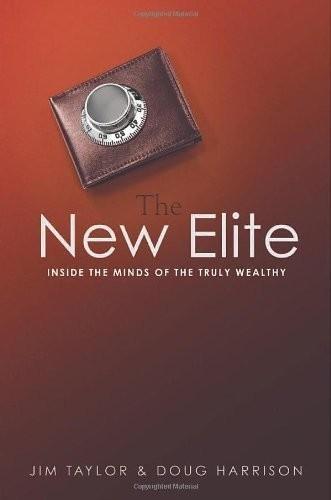
The New Elite: Inside the Minds of the Truly Wealthy
by
Dr. Jim Taylor
Published 9 Sep 2008
Kennedy popularized in responding to criticism that his tax cuts would mainly benefit the wealthy), and the gains of the wealthy elite are symptoms of overall economic growth that results in broad-based gains among all elements of the population. Certainly the economic expansion of the past several decades has been fueled in part by employment growth and technological innovation driven largely by entrepreneurial companies. Somewhere between these two scenarios is the trickle-down effect, a mildly derisive phrase used to describe the supply-side economic theories generally associated with Ronald Reagan. These theories postulate that the financial gains of the wealthy get spent largely on investments and services that, in turn, create jobs and support small businesses. In New York City, for example, it has been estimated that $200,000 spent on services—everything from drivers and decorators to personal trainers and psychologists—creates roughly five jobs, and that the top 1 percent of earners create over 150,000 service jobs by virtue of their spending.2 Assessing which of these scenarios best characterizes the current U.S. plutonomy is a complex economic task.
…
Even the esteemed biographer of the American spirit, Alexis de Tocqueville, who marveled at so many aspects of the American passion for equality and democracy, also marveled at American materialism and the resulting tolerance for inequality: ‘‘I know of no other country where love of money has such a grip on men’s hearts or where stronger scorn is expressed for the theory of permanent equality of property.’’5 Inequality in the United States has also tended to result from innovations that did have trickle-down effects, even if the financial gain from those innovations was concentrated at the top. The average American in 1920 didn’t see his income rise with that of John Rockefeller or Cornelius Vanderbilt, but he certainly saw tangible changes in his own life and that of his family as a result of railroads, electricity, telephones, radio, automobiles, and the like.
…
Ajay Kapur, Niall Macleod, and Narendra Singh, ‘‘Plutonomy: Buying Luxury, Explaining Global Imbalances,’’ research report, Citigroup Global Markets, http://www.billcara.com/archives/ Citi%20Oct%2016,%202005%20Plutonomy.pdf (accessed April 14, 2008). 2. Daniel Gross, ‘‘Don’t Hate Them Because They’re Rich: The Trickle-Down Effect of Ridiculous, Ostentatious Wealth,’’ New York magazine, April 11, 2005, http://nymag.com/nymetro/news/ culture/features/11721 (accessed April 14, 2008). 3. For example, see the Index of Social Health, published by the Institute for Innovation in Social Policy, http://iisp.vassar.edu/ index.html (accessed April 14, 2008).
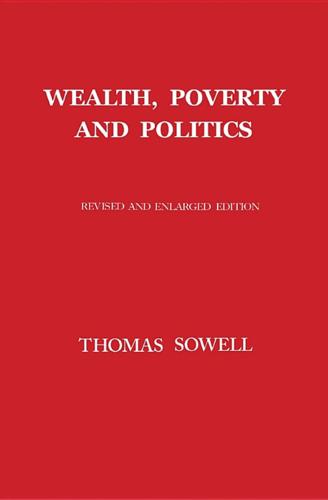
Wealth, Poverty and Politics
by
Thomas Sowell
Published 31 Aug 2015
Moreover, my happiness as I sat in that little eatery on the Lower East Side was not spoiled for a moment by thoughts that somebody else, somewhere else, in far more elegant surroundings, was probably enjoying a multi-course meal of the most exquisite food. b It is not that money income “trickles down” to the poor— a proposition advocated by no one, but used as a straw man by many. See my monograph, “Trickle-Down” Theory and “Tax Cuts for the Rich”. c If the twenty-year-old worker does not enter the workforce until after additional years spent completing college and postgraduate education, the disparities in years of experience would be even greater— and the annual income required to financially compensate such workers for the additional time, expense and delay of earnings, due to these extra years would increase the inequalities of annual incomes.
…
Michael Cox and Richard Alm, Myths of Rich & Poor: Why We’re Better Off Than We Think (New York: Basic Books, 1999), p. 16. 27. See, for example, Chapter 19 (“Government Finance”) in the 5th edition of my Basic Economics: A Common Sense Guide to the Economy (New York: Basic Books, 2015) or my monograph “Trickle Down” Theory and “Tax Cuts for the Rich” (Stanford: Hoover Institution Press, 2012), pp. 1–5. 28. Adrian Dungan and Michael Parisi, “Individual Income Tax Rates and Shares, 2011,” Statistics of Income Bulletin, Spring 2014, p. 43. 29. Thomas Piketty, Capital in the Twenty-First Century, p. 252. 30. Frank Bruni, Where You Go Is Not Who You’ll Be: An Antidote to the College Admissions Mania (New York: Grand Central Publishing, 2015), p. 105. 31.
…
Wolfgang Benz, A Concise History of the Third Reich, translated by Thomas Dunlap (Berkeley: University of California Press, 2006), pp. 30–31. 20. Donald L. Horowitz, Ethnic Groups in Conflict, p. 122. 21. Ibid., pp. 113–114. 22. Edward Gibbon, The Decline and Fall of the Roman Empire (New York: Modern Library, no date), Volume III, p. 105. 23. See my monograph “Trickle Down” Theory and “Tax Cuts for the Rich” (Stanford: Hoover Institution Press, 2012), pp. 1–5. 24. Theodore Caplow, Louis Hicks and Ben J. Wattenberg, The First Measured Century: An Illustrated Guide to Trends in America, 1900–2000 (Washington: The AEI Press, 2001), p. 99. 25. Stanley Lebergott, Pursuing Happiness: American Consumers in the Twentieth Century (Princeton: Princeton University Press, 1993), p. 120. 26.
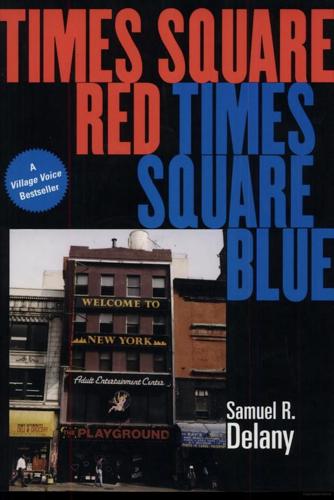
Times Square Red, Times Square Blue
by
Samuel R. Delany
Published 1 Jan 1999
In 1992 we emerged from twelve years of a national Republican administration that favored big business—with the result that we now have some very strong big businesses indeed. The argument the Reagan/Bush leaders used to convince the public that this was a Good Thing was the promise of tax cuts and the “trickle-down” economic theory. The “trickle-down” economic theory, you may recall, was the notion that somehow big business would be helpful and supportive to small businesses. 171 . . . T H R E E , T W O , O N E , C O N TA C T : T I M E S S Q U A R E R E D permanently closed Biltmore Theater on Forty-seventh Street, beside the metal gate the bottom of which has been eaten away with uric acid, and chat with one of the homeless men who regularly sleep on a piece of cardboard under the dark marquee during the summer.
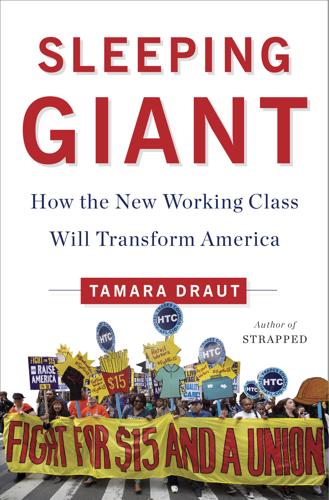
Sleeping Giant: How the New Working Class Will Transform America
by
Tamara Draut
Published 4 Apr 2016
In 1970 more than 70 percent of black workers held blue-collar jobs; by 1987 only 27 percent were employed in industrial jobs.45 Unemployment among black men soared, while black women did somewhat better in securing jobs in the exploding new service sector. As companies shipped entire industries overseas and the central cities lost white middle-class residents to the job-exploding suburbs, urban black people found little support or sympathy from our political elites. Laissez-faire, trickle-down economics was gaining prominence and power just as globalization tore through American manufacturing. After the widespread shedding of factories in the urban core, Ronald Reagan made it to the White House, in no small part thanks to his astute use of racial anxiety to win over white working-class voters.
…
The political hostility toward people who are down on their luck and need help buying food is delivered by the same politicians who drastically cut higher-education funding. The three biggest threats to the middle class are the same culprits behind the degradation of the working class: Wall Street, “trickle-down” economics, and antigovernment activism. These forces hit the working class first and hardest, but they inflict plenty of damage on the middle class too. So if we want to save the middle class, we’ve got to start from the bottom up. That means that the new working class, which will be primarily Latino and black in less than a generation if current trends hold, must be at the center of our public debate.
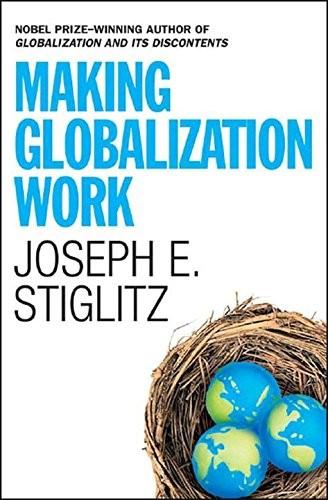
Making Globalization Work
by
Joseph E. Stiglitz
Published 16 Sep 2006
Even the advanced industrial countries are beginning to question globalization, as it brings with it economic insecurity and inequality; as economic materialism trumps other values; as countries realize that their well-being, even their survival, depends on others that they may not trust, such as the unstable oil regimes in the Middle East and elsewhere. There may be growth, but most of the people may be worse off. Trickle-down economics, which holds that so long as the economy as a whole grows everyone benefits, has been repeatedly shown to be wrong. Some say globalization is inevitable, that one has to simply accept it with its flaws. But as most of the world has come to live in democracies, if globalization does not benefit most of the people they will eventually react.
…
There was a large set of dos and don’ts: do privatize everything, from factories to social security; don’t have the government involved in promoting particular industries; do strengthen property rights; don’t be corrupt. Minimizing government meant lowering taxes—but keeping budgets in balance. In practice, the Washington Consensus put little emphasis on equity. Some of its advocates believed in trickle-down economics, that somehow all would benefit—though there was little evidence to support such a conclusion. Others believed that equity was the province of politics, not economics: economists should focus on efficiency, and the Washington Consensus policies, they believed, would deliver on that. The alternative view, which I hold, sees government having a more active role, in both promoting development and protecting the poor.2 Economic theory and historical experience provide guidance on what government needs to do.
…
Responding to the Challenges of Globalization There are three ways in which the advanced industrial countries can respond to these challenges. One is to ignore the problem and accept the growing inequality. Those who take this position (many of them proponents of the now-discredited theory of trickle-down economics, which holds that so long as there is growth, all will benefit) emphasize the underlying strengths of a market economy and its ability to respond to change: we may not know where the new jobs will be created, they say, but so long as we allow markets to work their magic, new jobs will be created.
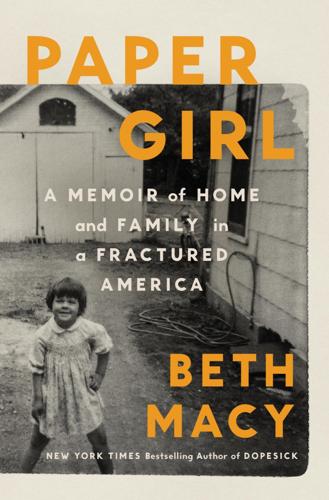
Paper Girl: A Memoir of Home and Family in a Fractured America
by
Beth Macy
Published 6 Oct 2025
By the 1970s, it was no longer respectable to be overtly racist, but you could still cuss the government. “And for fifty years that’s what they’ve done,” Branch said. “There’s no longer a shared noble purpose behind ‘We the people.’ Instead, people convince themselves that their liberty depends on taking a gun into Starbucks.”[5] When Democrats capitulated to Reagan’s trickle-down theory, the government surrendered its ability to respond to economic dislocation, including the decimation of Pell Grants. “We were never going to prevent deindustrialization or the rise of China, but for a generation we basically shut down the whole government apparatus that might have led to serious interventions to respond to those consequences,” the Harvard political scientist Steven Levitsky told me.
…
Even without a realistic immigration plan, blustery outrage is enough to light up an audience. It’s politically advantageous to keep calling immigrants rapists, vermin, and inhuman. Once people fear racial replacement, they become too distracted to think about the country’s real struggles, like small towns suffering from trickle-down theories that have failed regular Americans for generations. Like the democracy-quashing seduction of online conspiracists and their full-on hatred of journalists who fact-check lies. Outside the Depot, where I met Terri and many other Urbanans for interviews, I read and reread the historical marker erected to honor what transpired there on April 29, 1865.
…
See Church, Rachel Townsley trade, 46–48, 156, 182, 200, 202 Trade Adjustment Assistance program, 48 training, 66, 84, 203, 253, 298 jobs, 48, 186, 201, 212, 274 vocational, 11, 40, 200, 211, 222 trans community, 19, 63, 101, 138, 279, 292 gender-affirming care, 95, 288, 290, 291, 308 negative views of, 155, 255 suicide rates, 291, 306 with testosterone injections, 6, 95, 100, 103 transportation, 7, 108, 117, 212, 258, 303 barriers, 3, 17, 75–76, 92, 95, 102–3, 112, 116, 188, 194, 220, 221, 239, 273, 275 bicycles, 8, 75–76, 149, 220, 265 driver’s licenses, 67, 93, 99, 273, 274 trauma, 11, 25, 54, 87, 182, 216 ACEs and, 92, 154, 301 childhood, 75, 103–5, 131, 179, 190, 277–78 students with, 17, 221, 268 tribal security, 185 trickle-down theory, 80, 176 truancy, 1, 68, 90. See also absenteeism homeschooling and, 207–8 officers, 5, 193, 193–95, 207–9, 214–20, 295–97 Truman Commission Report (1947), 79–80 Trump, Donald, 14, 111, 171, 196, 205, 274 Christian nationalists and, 81, 160 fraud claims against, 174 immigrants and, 288, 292, 293, 307 with January 6 insurrection, 186, 305 porn-star hush money case, 114 presidential elections, 63, 183, 240, 247, 254–55, 273, 294–95, 305–6 prison and, 309 with “reservoir of hate,” 45–46 sexual assault claims against, 174 supporters, 33, 48, 50, 62, 81, 109–10, 113, 153, 168–69, 173, 177–78, 183–84, 186, 204, 228, 254, 257, 292–94, 305–6 with women, 183 trust, 58, 178, 179, 181, 184–85 tuition, 10, 12, 43, 46, 48, 78, 95, 200 tutoring programs, GED, 154, 156, 156, 263, 272, 272 2000 Mules (“documentary” film), 14 U UDC.

Rethinking Money: How New Currencies Turn Scarcity Into Prosperity
by
Bernard Lietaer
and
Jacqui Dunne
Published 4 Feb 2013
Policy making, whether in business or in politics, based on forecasts distorted by the conventional money system is at best shortsighted, if not outright erroneous. Classic economic solutions tend to fall into one of two categories: to depend on the vicissitudes of the free market and rely on trickle-down economics or to implement strategies that attempt to redistribute wealth. As long as conventional money retains its monopoly, there will always be insufficiency and untended needs. Indeed, this monopoly fuels both rampant fear of scarcity and its partner, greed. The traditional hyperrational explanations offered up for this ongoing universal suffering, disenfranchisement, and injustice fail to address the real issues.
…
See TimeBank Time Dollar Youth Court, 83 Time horizon, 44 Time-slot exchange, 195–197 Titus, 197–198 Token Exchange System, 193 Too big to fail, 96 Torekes, 74–75, 151, 151–153 Total system throughput (TST), 33 Totnes, 75 Trade reference currency. See Terra Trade Reference Currency Transmutation. See Alchemy Transportation, 126–128, 201, 218–219 Trash, 141–142, 143, 145, 165–166 Treaty of Maastricht, 231n14 Triangle, 171 Trickle-down economics, 217 Trueque club, 182–184, 183 Trust, 19–20, 46; creating community, 171–172; in Friendly Favors, 132; WIR and, 100 Tutoring, 82 Twister, 156–157 Two-body problem, 30– 31 Uang kepeng, 189, 237n4, 237n5 Underclass, 216 Unemployment, 15–18; college and, 226–227n13; JAK bank and, 113; LETS and, 76; Nazi Party fueled by, 180; Patch Adams Free Clinic and, 164; in Rabot, 151; in Weimar Republic, 236n10; Wörgl and, 175–178 UN Happiness Resolution, 131 Union, 16, 119 United Nations Environmental Program (UNEP), 144 260 INDEX Unit of account, 58; money defined as, 28; professionals describing, 1–2; time as, 80– 81.
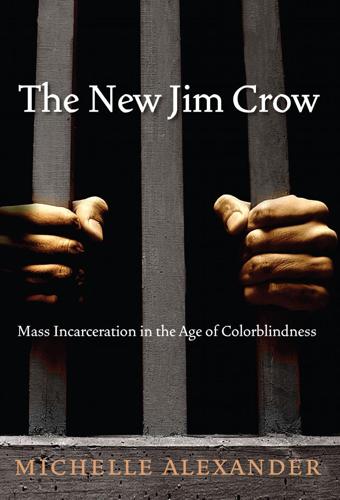
The New Jim Crow: Mass Incarceration in the Age of Colorblindness
by
Michelle Alexander
Published 24 Nov 2011
The claim is that racial justice advocates should reconsider the traditional approach to affirmative action because (a) it has helped to render a new caste system largely invisible; (b) it has helped to perpetuate the myth that anyone can make it if they try; (c) it has encouraged the embrace of a “trickle down theory of racial justice”; (d) it has greatly facilitated the divide-and-conquer tactics that gave rise to mass incarceration; and (e) it has inspired such polarization and media attention that the general public now (wrongly) assumes that affirmative action is the main battlefront in U.S. race relations.
…
People like Barack Obama who are truly exceptional by any standards, along with others who have been granted exceptional opportunities, legitimate a system that remains fraught with racial bias—especially when they fail to challenge, or even acknowledge, the prevailing racial order. In the current era, white Americans are often eager to embrace token or exceptional African Americans, particularly when they go out of their way not to talk about race or racial inequality. Affirmative action may be counterproductive in yet another sense: it lends credence to a trickle-down theory of racial justice. The notion that giving a relatively small number of people of color access to key positions or institutions will inevitably redound to the benefit of the larger group is belied by the evidence. It also seems to disregard Martin Luther King Jr.’s stern warnings that racial justice requires the complete transformation of social institutions and a dramatic restructuring of our economy, not superficial changes that can purchased on the cheap.
…
Acevedo California’s Proposition California’s Proposition Campbell, Richard Capital Times (Madison, Wisconsin) Carroll, David Carrollton bus disaster (1988) Cato Institute Central Intelligence Agency (CIA) Chain Reaction (Edsall and Edsall) Chemerinsky, Erwin Cheney, Dick Chicago, Illinois: ex-offenders; police presence in ghetto communities; re-entry programs child-support debts chokeholds, lethal Chunn, Gwendolyn Civil Asset Forfeiture Reform Act (2000) Civil Rights Act (1866) Civil Rights Act (1964); Title VI civil rights advocacy, future of; changing the culture of law enforcement; collective denial by civil rights advocates; dismantling the mass incarceration system; and flawed public consensus; grassroots activism by formerly incarcerated men and women; human rights paradigm/ approach; Obama presidency; poor and working-class whites; and problem of colorblind advocacy; reconsidering affirmative action; reform work and movement building; reluctance to advocate on behalf of criminals; and sentencing; and trickle-down theories of racial justice Civil Rights Movement; backlash against; and black people who defied racial stereotypes; desegregation protests; and economic justice; and end of Jim Crow system; and federal legislation; and human rights approach; initial resistance from some African Americans; and King’s call for complete restructuring of society; Poor People’s Movement civil rights organizations/community; collective denial by; professionalization and conversion of grassroots movement into legal crusade; reluctance to advocate on behalf of criminals.

Ground Control: Fear and Happiness in the Twenty First Century City
by
Anna Minton
Published 24 Jun 2009
So it was out-of-town development, as much as decline in industry, which contributed to the perception of a rotting inner city. What really happened is far more complex than the appealing message that, following years of urban decay, the ‘urban renaissance’ transformed city life. The decline of the inner city and the ‘renaissance’, which is based on discredited ‘trickle-down’ economics, were not so straightforward, because trickle-down produces a very uneven pattern of growth, even when the boom and bust cycle is in an upswing. ECONOMICALLY VIABLE? Part of the ‘decay to renaissance’ story of the city is that during the 1970s, as the post-war industrial economy faltered, there simply wasn’t the money to allow local government to invest properly in cities.
…
‘Defensible space’ determines the look and feel of privatized streets and plazas, and homes are built according to strict Secured by Design principles. Side by side with privately owned places devoted to shopping and city-centre apartment living are enclaves of poverty, giving the lie to the promise of ‘trickle-down’ economics. The really appalling pockets of poverty are in the minority. What are far more common are the social housing estates of relative deprivation which are also designed with fear and security just as much in mind. The aim of all this security is to make people feel safer, but fear of crime is soaring.
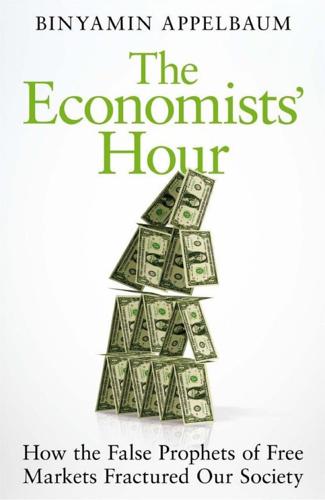
The Economists' Hour: How the False Prophets of Free Markets Fractured Our Society
by
Binyamin Appelbaum
Published 4 Sep 2019
When Rousselot, the congressman from southern California who had questioned Rivlin, rose on the House floor during the final debate, Democrats expected an argument against profligacy. Instead, Rousselot proposed to replace the Democratic plan with a supply-side stimulus: a uniform 5 percent reduction in personal income tax rates. Astonished Democrats dismissed the idea as “trickle-down economic theory,” and the amendment was easily voted down, but the supply-siders were just getting started. Kemp, seeking to upstage Rousselot, introduced legislation with Senator William Roth a few months later to reduce tax rates by 10 percent a year for three years: “10-10-10.”47 In September 1977, the Republican National Committee endorsed the bill despite the discomfort of fiscal conservatives.
…
He warned spending would work only if the government devoted the money to investment rather than consumption. See James Tobin, “Growth Through Taxation,” New Republic, July 25, 1960. 28. Many traditional Keynesians, by contrast, hated Heller’s plan. Leon Keyserling, Harry Truman’s chief economic adviser, said Kennedy had embraced “trickle down” economics, invoking imagery that has a long history in American politics. William Safire, in his Political Dictionary, credits William Jennings Bryan, who blasted Republicans in his famous 1896 “Cross of Gold” speech for serving the rich and promising that “their prosperity will leak through on those below.”
…
P., ref1 technology sector, ref1 Teichman, Judith, ref1 telecommunications industry, ref1, ref2 Thailand, ref1, ref2 Thaler, Richard, ref1, ref2 Thatcher, Margaret: on deregulation, ref1, ref2, ref3, ref4, ref5; economic policy of, ref6, ref7, ref8, ref9, ref10, ref11; and elimination of capital controls, ref12; and Alan Greenspan, ref13; and monetarism, ref14, ref15 Thiessen, Gordon, ref1 Thorbjornsdottir, Sandra, ref2 Tobin, James, ref1, ref2, ref3, ref4, ref5, ref6, ref7, ref8 Tozzi, Jim, ref1, ref2, ref3 trade: balance of, ref1; and Chile, ref2, ref3, ref4, ref5; and China, ref6, ref7, ref8, ref9; and common interests, ref10, ref11; daily currency trading, ref12, ref13; economists on, ref14, ref15, ref16; and fixed exchange rates, ref17, ref18, ref19; and floating rates, ref20, ref21, ref22, ref23, ref24, ref25, ref26; and Iceland, ref27, ref28, ref29, ref30; and Japan, ref31, ref32, ref33, ref34, ref35, ref36; and Richard Nixon, ref37, ref38; and Ronald Reagan, ref39; David Ricardo on, ref40, ref41; and Taiwan, ref42, ref43, ref44; and U.S. foreign exchange policy, ref45; U.S. promotion of, ref46, ref47, ref48, ref49; value of, ref50, ref51; and West Germany, ref52, ref53, ref54, ref55 trickle-down economics, ref1, ref2, ref3 trucking industry, ref1, ref2, ref3, ref4, ref5 Truman, Harry S., ref1, ref2, ref3, ref4, ref5, ref6 Trump, Donald, ref1, ref2 Tsiang, S. C., ref1, ref2 Ture, Norman B., ref1, ref2, ref3, ref4, ref5, ref6, ref7 Turner, Donald, ref1 Turner, Grace-Marie Arnett, ref1 unemployment: average rate of, ref1, ref2, ref3; and Jimmy Carter, ref4, ref5, ref6, ref7, ref8; causes of, ref9; and Bill Clinton, ref10; effects of, ref11; and Federal Reserve Bank, ref12, ref13; and Milton Friedman, ref14, ref15, ref16, ref17, ref18, ref19; and Great Depression, ref20, ref21; and Great Recession, ref22; and Lyndon Johnson, ref23; and John F.

The Global Minotaur
by
Yanis Varoufakis
and
Paul Mason
Published 4 Jul 2015
When dissident voices pointed out that tax cuts favoured the rich (especially when combined with cuts in social provisions for the poor), the standard reply came in the form of the so-called trickle-down effect: as the rich enrich themselves further (the theory went), their spending and investment will trickle down to the less privileged more effectively than it would through transfers financed by taxing the rich. Box 5.4 The trickle-up effect The trickle-down effect was meant to legitimize reductions in tax rates for the rich, by suggesting that their extra cash would eventually trickle down to the poor. All empirical evidence conspires against this hypothesis.
…
A new phase thus began. The United States could now run an increasing trade deficit with impunity, while the new Reagan administration could also finance its hugely expanded defence budget and its gigantic tax cuts for the richest Americans. The 1980s ideology of supply-side economics, the fabled trickle-down effect, the reckless tax cuts, the dominance of greed as a form of virtue, etc. – all these were just manifestations of America’s new ‘exorbitant privilege’: the opportunity to expand its twin deficits almost without limit, courtesy of the capital inflows from the rest of the world. American hegemony had taken a new turn.

Trixie and Katya's Guide to Modern Womanhood
by
Trixie Mattel
and
Katya
Published 15 Nov 2020
Just like hookers would do in the olden days, all you need in lieu of an actual bath or shower is eighteen to twenty generous spritzes of a very strong and penetrating high-quality eau de parfum to mask the stench of your nasty ass. WASH YOUR LEGS! You wouldn’t believe how many people do not bother to wash their legs while in the shower. History has proven that trickle-down economics didn’t pan out for the working class, and the same applies here: Trickle-down soap and shampoo will not clean those gams, so do yourself a favor and give your soiled stems the due diligence they deserve. YOU CAN LEAD A HORSE TO WATER, BUT YOU CAN’T MAKE IT BRUSH ITS TEETH.
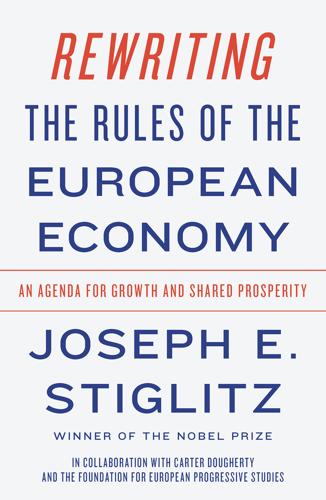
Rewriting the Rules of the European Economy: An Agenda for Growth and Shared Prosperity
by
Joseph E. Stiglitz
Published 28 Jan 2020
This is especially true as Europe has expanded trade with countries where wages are much lower and from whom it imports labor-intensive goods. The resulting decrease in demand for labor, and especially unskilled labor, inevitably drives down wages and increases unemployment unless government takes counteracting measures. Too often governments do nothing, guided by mistaken notions of trickle-down economics. A rising tide does not necessarily lift all boats. Taken together, theoretical advances have undermined the notion that markets are efficient and stable on their own so long as the government keeps out of the way and keeps its own house in order. They have also helped us understand why, even as GDP increased, so many people were worse off.
…
Three propositions are at its core: the economy is not an end in itself but a means; a country’s economic growth, on its own, will not necessarily translate into the well-being of all (or even most) of its citizens; and finally, the government can make a difference both in enhancing sustainable growth and ensuring that the fruits of that growth are equitably shared. A variant of the theory of trickle-down economics holds that high growth will redound to the benefit of all and therefore that economic policy should be directed at maximizing growth. The evidence of the past 40 years has thoroughly discredited this idea. A high rate of GDP growth does not necessarily mean that most within the country see an increase in their living standards.

Extreme Money: Masters of the Universe and the Cult of Risk
by
Satyajit Das
Published 14 Oct 2011
Ford argued that paying people more would enable workers to afford the cars that they were producing. The U.S. auto industry pioneered the basic wage in 1948. Harley Shaiken, a labor economist at the University of California at Berkeley, observed: “The most important model that rolled off the Detroit assembly lines in the 20th century was the middle class for blue-collar workers.”5 In trickle-down economics, benefits flow down from the top to the bottom. During the Great Depression, Will Rogers, the humorist, defined it as: “Money was all appropriated for the top in hopes that it would trickle down to the needy.” In the 1970s, the process went into reverse. The auto industry and heavy industries in the United States and developed countries declined.
…
A buoyant global economy ensured a growing market for China’s exports. Deng represented a change in philosophy: “Poverty is not socialism. To be rich is glorious.” The strategy proved startlingly effective, bringing about profound change. By 2011, Colonel Sanders and KFC were better recognized than Chairman Mao in China. The strategy was decidedly trickle-down economics, as Deng himself acknowledged: “Let some people get rich first.” Later, Deng would grouse: “Young leading cadres have risen up by helicopter. They should really rise step by step.” Foreign Treasure China exported more than it imported, creating large foreign reserves that by 2011 totaled over $2.7 trillion.
…
See also mortgages shorting (2005/2006), 256 subsidies, 334, 348 Suma Oriental, 82 Sumitomo, 227 Summers, Lawrence, 116, 129, 214, 300, 304, 315 Sunday Times, 364 super jumbo loans, 182 Super Return annual industry conference, 162 super senior tranches, 175 supply of assets, 267 survivorship bias, 243 suspension of deep-water drilling, 362 Suze Orman Show, The, 93 Suze Orman’s Financial Freedom, 93 swaps correlation, 255 credit default swaps (CDS), 232, 237 dispersion, 255 Fiat, 222-223 first-to-default (FtD), 220-221 gamma, 255 total return swap (TRS), 209 Swensen, David, 124 Swift, Jonathon, 130 Sydney Airport, 159 synchronous lateral excitation, 273 synthetic securitization, 173, 176 systematic risk, 118 T TAC (target amortization class) bonds, 178 TAF (term auction facility), 340 tail risk, 246 Tainter, Joseph, 349 takeovers (risk arb), 242 Taleb, Nicholas Nassim, 126, 246 Talking Heads, The, 46 taming risk, 120-122 Tang dynasty, 351 tansu savings, 39 Tao Jones Averages, The, 96 TARDIS (Time And Relative Dimension(s) In Space) trades, 217-218 target redemption forwards, 217 Tavakoli, Janet, 177 taxes avoidance, 48-49 cuts, 348 Dubai International Financial Centre (DIFC), 82-83 favorable regimes, 41 leveraged buyouts (LBOs), 138 VAT (value added tax), 262 tchotchkes, 162 Teenage Cancer Trust, 262 Teledyn, 60 television, financial news, 91-99 Templars, 32 temporary suspension of deep-water drilling, 362 Terra Firma Capital Partners, 154, 157, 162, 165 terrorism, 44 Texas Instruments (TI), 122 Texas International, 146 Texas Pacific Group, 154 Textron, 60 Thain, John, 291, 319, 330 Thaler, Richard, 126 Thatcher, Margaret, 66, 81, 158 the Government National Mortgage Association (GNMA or Ginnie Mae), 179 theoretical profits, 231 theories, bubbles, 277-278 Theory of the Leisure Class, The, 41 This American Life, 185 Thompson, Todd, 93 Thoreau, Henry David, 359 Thornton, John, 76 Thorp, Edward, 121 thought leaders, 90 thundering herd, the, 66 TICKETs (tradable interest bearing convertible to equity trust securities), 160 Tierney, John, 98 Tiger Fund, 243 Time, 45, 129 Time Warner, 58 Tobias, Seth, 322 TOBs (tender option bonds), 222 toggle loans, 154 toilets, Japanese, 38 Tokyo as a financial center, 78 tools, six sigma, 60 Torii, Mayumi, 43 Toscanini, Arturo, 157 total return swap (TRS), 209 Tourre, Fabrice, 199 toxic currency structures, 218-219 toxic waste, 172 Toynbee, Arnold, 354 Toys R Us, 155 TPG, 156 trade protectionism, 334, 349 trading, 23-24 alleys, 92 banks, 73 proprietary, 352 securities, 66 stabilization of global trade, 349 traditional banking models, 68 tranches, 169 AAA, 203 equity, 192 innovation of, 178 super senior, 175 synthetic CDOs, 174 Z, 170, 178 transfers risk, central banks, 281-282 systems, money, 22 Transformers, 278 Travelers, merger of with Citicorp, 75 Treynor, Jack, 117 trickle-down economics, 42-43 Triffin dilemma, 31 Triffin, Robert, 31 Trollope, Anthony, 173 Troubled Asset Relief Program (TARP), 340 troy ounce bars, 25. See also gold TSLP (term securities lending facility), 340 tunnels, 158 turn-of-the-year effect, 126 Turner Broadcasting, 146 Turner, Lord Adair, 236, 280, 298 Tversky, Amos, 125-126 Twain, Mark, 123 Tweedie, David, 289 Twilight, 327 Tyco, 154 types of money, 21-23 U U.S.
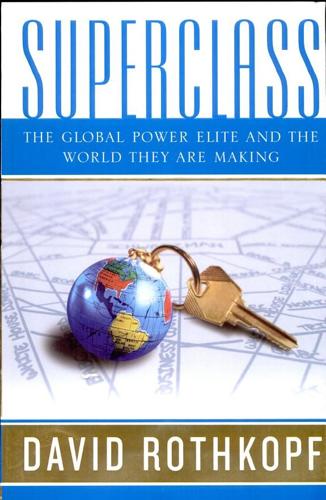
Superclass: The Global Power Elite and the World They Are Making
by
David Rothkopf
Published 18 Mar 2008
But the message that he and many others in the Chilean business establishment offer in conversation, directly or by implication, is a particularly distilled version of the economic prescriptions from the 1980s: “Leave it to the markets. Be patient. Keep taxes low for those who create the jobs.” They adhere to the axiom of trickle-down, twenty-five years after the term was coined, even as compelling evidence has built up that, as Cornell University economist Robert H. Frank has written, trickle-down theory is “supported neither by economic theory nor by empirical evidence.” NOT JUST A CHILEAN PARADOX Our taxi finally arrived at our destination, a modern white stone apartment building. From the front door, a maid ushered us across a pristine marble lobby and into a tiny elevator, which took us up to the apartment of the chairman of Chilectra (one of two major electric utilities in Chile).
…
Saunders, “Why ‘Globalization’ Didn’t Rescue Russia,” Policy Review, February 1, 2001. 54 The top 20 percent of Chileans “Economic Indicators: Chile,” World Resources Institute, earthtrends.wri.org/pdf_library/country_proflles/eco_cou_152.pdf, 2003. 54 the worst inequality indicators on the planet World Bank, “Table 2.7: Distribution of Income or Consumption,” World Development Indicators 2005. 56 His perspective was clear Andrónico Luksic, interview with the author, 2006. 56 “We cannot be complacent” Alvaro Saieh, interview with the author, 2006. 58 Cornell University economist Robert H. Frank Robert H. Frank, “In the Real World of Work and Wages, Trickle-Down Theories Don’t Hold Up,” New York Times, April 12, 2007. 59 It obviously troubled him Andrés Velasco, interview with the author, 2006. 59 “the group that has the most power” Jorge Rosenblut, interview with the author, 2006. 61 Marshall tackled the issue another way Jorge Marshall, interview with the author, 2006. 63 Newsweek editor Fareed Zakaria Fareed Zakaria, “The Rise of Illiberal Democracy,” Foreign Affairs, November/December 1997. 63 As Harvard’s Dani Rodrik has written Dani Rodrik, “The Cheerleaders’ Threat to Global Trade,” Financial Times, March 27, 2007. 63 Columbia University professor Joseph Stiglitz Joseph E.
…
Croix, Geoffrey de Stein, Rob Stelzer, Irwin Stevens, Robert Stewart, Jon Stiglitz, Joseph Stockholm International Peace Research Institute (SIPRI); Stone, Oliver Straw, Jack Sugar, Ronald Sultan, Prince Bandar bin Summers, Lawrence superclass access and exclusivity concerns agenda-setting and backlash against, potential for balance issues “class” issue, compounding impact of elite interaction conspiracy theories about plotting elites the disenfranchised and as elite within the elite emerging superclass existence of fluidity among ranks of global government and global institutions/governance and how to become a member inequitable distributions of wealth and power, attitudes toward influence of informal institutions and international character internationalism-nationalism conflict and members of networks and order and organizations of personal characteristics of members philanthropy by political potency on cross-border basis positive global developments attributable to private aviation and psychopathology of the supersuccessful Rothkopf’s familiarity with size of watchdog for global public interests, unreliability as women and see also corporate elites; information elites; military-industrial elites; political elites; power of the superclass Sutherland, Peter Sutton, Michael Syriana (film) Taft, William Howard Talbott, Strobe Tata, Ratan Teets, Peter Tenet, George terrorism information flows and terrorist leaders as military elites threat to United States war on terror Thain, John Thani, Sheikh Hamad bin Thamer Al- Thatcher, Margaret think tanks Thomas-Graham, Pamela Thucydides Tillerson, Rex W. trade liberalization Trichet, Jean-Claude trickle-down theory Trilateral Commission Trump, Donald Tsouli, Younis Tucker, James Turner, Mike Twilight of Sovereignty, The (Wriston) Tymoshenko, Yuliya Tyson, Laura Unger, Craig United Defense company United Nations (UN) Uribe, Alvaro U.S. Chamber of Commerce U.S. Information Services (USIS) Veblen, Thorstein Velasco, Andrés Venter, Craig Villemarest, Pierre and Danièle de Vinnell Corporation Vinson & Elkins law firm Viola, Roberto Eduardo Volcker, Paul voters’ disengagement from politics Wales, Jimmy Walker, George Herbert, Jr.

Beyond Outrage: Expanded Edition: What Has Gone Wrong With Our Economy and Our Democracy, and How to Fix It
by
Robert B. Reich
Published 3 Sep 2012
The rich are “job creators,” so tax cuts for the rich trickle down to everyone else while higher taxes on the rich hurt the economy and slow job growth. Untrue. Look at recent history. George W. Bush cut taxes on the rich, and what happened? A fraction of the number of jobs were created under Bush than had been created under Bill Clinton, and the median wage dropped, adjusted for inflation. Trickle-down economics is a cruel joke. As I’ve said, from the end of World War II until 1981, the richest Americans faced a top marginal tax rate of 70 percent or above. Under Dwight Eisenhower it was 91 percent. Even after all deductions and credits, the top taxes on the very rich were more than 52 percent—far higher than they’ve been since.
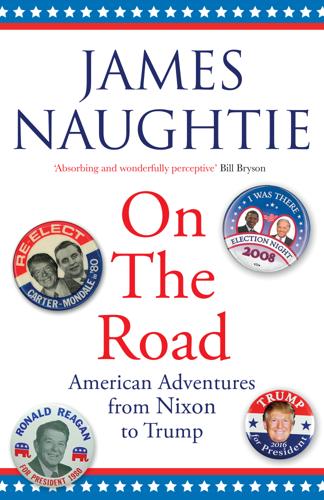
On the Road: Adventures From Nixon to Trump
by
James Naughtie
Published 1 Apr 2020
One reason for that suspicion was that one of my editors at the Post, William Greider, pulled off a journalistic coup by winning the trust of David Stockman, whom Reagan had appointed his budget director, and who was a fervent evangelist for supply-side economics based on a formula of tax cuts and huge reductions in government spending. But, as he acknowledged to Bill Greider in a series of long private conversations over many months, the policy was far less coherent than he (and Reagan) liked to make it appear. Supply-side policies were, he said, a Trojan horse for ‘trickle-down economics’ in which those at the bottom of the heap had to hope some benefits would eventually come their way, on a wing and a prayer. It was precisely what Bush, now vice president, had meant in the primaries with his jibe about ‘voodoo economics’. When Bill’s long article appeared in The Atlantic in late 1981 – running to nearly 20,000 words – it was called ‘The Education of David Stockman’, and the subtitle quoted him saying, ‘None of us really understands what’s going on with all these numbers.’
…
(‘FDR’), 41, 92, 104, 132, 145, 175, 200, 219, 264 Rostropovich, Mstislav, 95 Rothkopf, David, 195 Rove, Karl, 142, 154 Rubio, Marco, 179 Rumsfeld, Donald, 143 Runyon, Damon, 2 Ruth, Babe, 105 Sablière, Jean-Marc de la, 150 Sadat, Anwar, 69 Saddam Hussein, 110, 141, 142, 144, 147, 149, 151 St Andrew’s Society of New York, 36, 37, 48–9, 63 Sanders, Bernie, 185, 258, 268 Sandy Hook massacre, 185, 271 Saturday Night Massacre, 34, 51 Saudi Arabia, 279, 290 Savalas, George, 68 Savalas, Telly, 68 Scalia, Justice Antonin, 127 Scaramucci, Anthony (‘The Mooch’), 177, 178, 189–90, 192 Schiff, Adam, 208, 291 Schlicke, Pauk, 37 Schwartzwalder, Ben, 45 Scotsman, The, 5, 80 Scott, Hugh, 54 Scowcroft, Brent, 97 Seattle Post-Intelligencer, 55 Second World War, 14, 35, 95, 109, 131, 132, 139, 176, 194, 208, 237 segregation, 14, 24, 26, 40–2, 216, 249, 264, 288 Seinfeld, Jerry, 15 Sergeant, John, 117 Serpico, Frank, 32 Sessions, Jeff, 197 Seward, William, 256 Shapiro, Ilya, 285 Sharp, Rhod, 63, 154 Sheen, Martin, 152 Shrum, Bob, 74 Sick, Gary, 86 Simon, Neil, 139 Sinatra, Frank, 16, 44, 78 Sirica, Judge, 53 Six-Day War, 114 Sky, 111 Sloman, Anne, 112 Smith, Evan, 272–3 Smyth, Ted, 134 Solomon, Mr and Mrs, 16 Sorensen, Theodore, 168, 169 Sorkin, Aaron, 295 Stalin, Joseph, 92 Starr, Ken, 120 Stennis, John C., 52 Stephanopoulos, George, 103 Stern, Larry, 78–9 Stevenson, Coke, 270 Stewart, Sir Iain Maxwell, 49 Stockman, David, 81, 82 Stone, Roger, 182–4, 289 Stovall, Dwayne, 271, 277–9 Straw, Jack, 143, 149 Streisand, Barbra, 16, 121 Sunday Telegraph, 50 Sunday Times, 37, 76 supply-side economics, 81–2 Swift Boat Veterans for Truth, 153 ‘taking a knee’ protest, 268 Talese, Gay, 42 Talmadge, Herman, 42 taxation, 81, 104, 114, 119, 146, 182, 183, 200, 202, 218, 290 Tea Party movement, 146, 170, 175, 176 Texas Tribune, 273 Thanksgiving, 47, 133–41 Thatcher, Margaret, 81, 83–5, 90, 92, 93, 117, 175, 274 Thomson Regional Newspapers, 37 Thorpe, Jeremy, 50 Times, The, 37, 93 Times-Picayune, 56 Today, 5, 95, 113, 116, 117, 122, 125, 191 Toledo Blade, 56 trickle-down economics, 81–2 Tripp, Linda, 119 Truman, Harry S., 40, 126 Trump, Donald, 1, 31, 51, 88, 120, 127, 143, 144, 146, 160, 167, 170, 171, 175, 176–92 Achilles’ heel of, 213 becomes POTUS, 157, 158, 192, 193–6, 262, 267 ‘currency of contempt’ of, 220 ‘draining the swamp’ rhetoric, 230–1 federal regulations despised by, 245–6 foreign policy of, 217, 255, 294 and government shutdown, 230, 232 Huntington rally of, 211 impeachment trial of, 5, 218, 266, 282–3, 291–3, 294 inauguration of, 193–7, 202, 203, 221 lack of knowledge of, 4–5 McCain opposes, 200–1 MAGA slogan of, 180, 211–12 Mexican border wall promise of, 188, 200, 206, 211, 244, 250, 267, 287 moral compass of, 274–7 presidency of ‘self’ created by, 218 presidential power excesses of, 284 stream-of-consciousness style of, 187 tweets of, 4, 161, 189–90, 193, 199–200, 205, 208, 217, 251 unorthodox approach of, 197–206, 213–16, 250–1, 287 Trump, Fred, 211 Tsongas, Paul, 104 Ukraine, 183, 217, 283, 289, 291 ‘Unite the Right’ rally, 216–17, 250 United Automobile Workers (UAW), 88–9 United Nations (UN), 112, 131, 133, 141–2, 144, 147–51, 203, 220, 262 United States (US): ‘blue wall’, 190, 192 Charlottesville rally, 216–17, 250 Civil War, 3, 6, 40, 41, 134, 172, 202, 207, 212, 231, 260, 278 coal-mining, 209–10 constitution, 40, 51–2, 55–6, 99, 193, 206, 212, 218, 260, 263–4, 266, 271, 272, 277–9, 283–5 counting regime discredited in, 126–7 culture war within, 104, 119, 176, 262, 271, 276, 280 Declaration of Independence, 64, 263 ‘Dreamers’ 287–8 Founding Fathers, 27, 193, 263, 284, 285, 293 Gettysburg Address, 2–3 Green Deal, 197 labour relations in, 88–9 middle-income, 114, 159, 222–3 midterm elections, 116, 122, 175, 205, 208–10, 253–4, 261, 266–7, 280, 283, 286, 289 Naughtie first arrives in, 7, 9–33 New Deal, 145, 258, 264 New Frontier, 71, 75 opioid addiction in, 209, 230, 244–5 ‘pathway to citizenship’, 200 post-Reagan, 104 President of (POTUS), see by name rainbow coalition, 91 religion within, 118–19 Russian interference in, 184, 188–9, 197, 201, 205, 217, 221, 247, 254, 255, 279, 284, 286, 289–90 sanctuary cities, 207, 250 Second Amendment, 271, 272 Supreme Court, 39, 58, 117, 120, 127, 178, 270, 278–9, 285 TV culture informs, 100, 110, 111, 241–2, 243, 265 ‘white flight’, 249 ‘United States v.
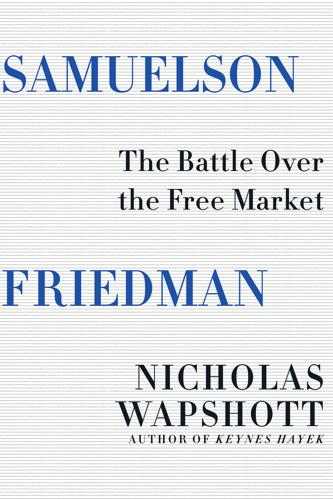
Samuelson Friedman: The Battle Over the Free Market
by
Nicholas Wapshott
Published 2 Aug 2021
If it is, that is a failure of monetary policy, not of fiscal policy.41 In the event, the Reagan tax cuts—making income tax lower than at any time since the 1920s—were not matched by cuts in spending: on the contrary. Above all, his ambition to bring the Cold War to an end by outspending the Soviet Union on defense made balancing the budget impossible. Therefore, despite the promise of the Laffer Curve and “trickle-down economics,” in which the taxes saved by the rich were claimed to eventually benefit those further down the economic food chain, Reagan’s tax cuts did not increase revenue but led to a ballooning of the federal deficit—funded by borrowing, or printing money. Before long, with federal tax revenues slumping by 6 percent in real terms—a reduction of at least $200 billion in 2012 dollars over the first four years—Reagan agreed that taxes should be slyly increased.
…
Bush tax cuts, 258–59 on government regulations, 158 on government spending, 78, 208–9 Hansen-Samuelson model, 14, 304 at Harvard, 15–17 on higher interest rates to control inflation, 122, 123 on hyperinflation, 121, 152 hypertension, 17, 284 impact of Newsweek debate with Friedman, 9, 53, 56 on improbability of another Depression, 277–78 on inflation during recovery, 279 on interest rate effects, 83 on intervention by government, 65, 87, 88–90 Joint Economic Committee of Congress hearing, 152–56 Kennedy and, 6, 21–24, 120, 138 on Keynesianism, 41 on laissez-faire system, 69–70, 77, 88, 221–22 Lawrence Summers and, 24, 267–68, 273–74, 294, 306–7, 340 legacy of, 294–95 limited effect of Fed’s actions, 135–36 on long-term deficits, 136 macroeconomics, 19, 84, 268, 277 on market forces, 82–83, 89 mathematical economics, 14, 16, 58, 61, 105, 161–62, 294 methodology used, 105 mockery of Friedman, 83–84, 87 monetary theory and, 20–21, 41, 101, 102, 125–27, 132–35 neoclassical synthesis, 20–21, 97, 281, 284, 287, 294 on Nixon’s hit list of enemies, 151–52, 326 Nobel Prize for economics, 161–64, 302, 328 note to Friedman in 1995, 254 PhD dissertation, 16, 162 Phillips Curve and, 114, 115 as a post-Keynesian, 41, 132, 134, 136, 323 price system seen as coercion, 80 on problem of inflation, 74, 118–22, 123, 176 on property rights, 80 on provoking man-made recession, 176, 191, 192–93, 194 on quantity theory of money, 99–100, 102, 125–26, 132–33, 171–73 on raising taxes to fight inflation, 123–24 reaction to Thatcher’s policies, 240 Red Scare and, 219–20 remedies for inflation, 122–25 “Revealed Preference” theory, 163 rivalry with Friedman, 10, 27, 34, 71, 83, 132, 295–96 role of individual in society, 90–91 similarities to Friedman, 11 snub by Harvard, 16–17, 282 social contract and, 81 socialism explained by, 217–19 Soviet economy and, 218–21 stagflation and, 118–20, 152, 282, 322 on supply-side economics, 205, 206–7 suspected of communist tendencies, 19–20 on taxation, 85–86 tax cuts recommended by, 23 and A Tract by Keynes, 97 traffic lights, 81, 87 tributes after death, 284–85 on unemployment, 15, 20, 23, 88, 120, 264 and University of Chicago (Chicago School), 13–14, 27–28, 33–34, 70, 82, 99–100, 254 on usefulness of theories, 61 view of Greenspan, 260–61 on Volcker’s Fed policies, 191, 192–93, 194, 196–97 on wage and price controls, 152, 154 on the welfare state, 80–81, 88, 173 World War II scientific work, 17–18 writing style of Newsweek columns, 10, 56–60 see also specific titles Say, Jean-Baptiste, 332 Say’s Law, 205 Schlesinger, Arthur Jr., 6, 302 Schultz, Henry, 28, 308 Schultz, Theodore, 82, 304 Schumpeter, Joseph, 15, 16, 282, 305 Schwartz, Anna death, 309 Krugman and, 322 Monetary History of the United States, 34, 44–45, 103–5, 134, 144, 262–63, 309 papers archived at Duke, 283 research, 34, 103–5, 107, 262, 280, 320 September 11, 2001, attacks, 255 Sherman Act, 90, 318 Sherman, Alfred, 233, 236, 239, 335–36 “shock treatment” in Chile, 160–61, 169, 327 Shoup, Carl, 32, 308 Shultz, George, 59, 144, 149, 151, 200, 201, 313–14 Simon, Norton, 3, 301 Simons, Henry, 14, 28, 82, 83, 99, 304 Skidelsky, Robert, 94, 319 Smith, Adam, 43, 90–91, 318 Smith, Richard M., 226 Socialism (von Mises), 62 Solidarity (Poland), 215, 334 Solow, Robert, 58, 60, 114, 282, 290, 313, 321 Solzhenitsyn, Alexander, 163 “sound money” policy in Britain, 234, 237–38, 240 Soviet Union arms race with U.S., 209–10, 215 black market, 219 collapse, 214–15, 252 economy of, 218–21 unreliable government data, 218, 334 Spencer, Herbert, 222, 335 Sraffa, Piero, 41, 102, 320 stagflation Friedman and, 119, 170–71, 207, 289, 322 Samuelson on, 118–20, 152, 282, 322 term origins, 322 Volcker and, 186, 202 see also inflation Stein, Herbert, 144, 157, 205–6, 325 sterling M3 (£M3), 231, 240, 244, 246, 247 Sternlight, Peter, 187–88 Stevenson, Adlai, 21, 306 Stigler, George Joseph Chicago School, 28, 82, 303, 304 Friedman and, 9, 34, 36, 171 Samuelson and, 20, 84 stimulus money, effects of, 100, 319 Structure of Scientific Revolutions, The (Kuhn), 94, 319 subprime loans, 273 Summers, Anita, 294, 343 Summers, Lawrence, 24, 267–68, 273–74, 294, 306–7, 340 Summers, Robert, 294, 306–7, 343 supply-side economics, 204–6, 207–8, 259, 332 Tarshis, Lorie, 19–20 Taussig, Frank, 29, 308 taxes cuts recommended by Keynes, 23 cuts recommended by Samuelson, 23 Friedman on, 32, 79, 85, 155–56, 208, 290 Friedman on tax cuts, 44, 155–56, 208, 209, 211, 252 inflation as hidden tax, 77–78 Laffer Curve and, 205, 206, 208, 209, 332 negative income tax plan, 143, 173, 292 payroll withholding tax, 32–33 progressive income tax, 47 Samuelson on, 85–86 Value Added Tax, 239 in wartime, 32, 309 Taxing to Prevent Inflation, 32 Tax Reform Act of 1986, 333 Tea Party, 288, 291, 293 Teller, Edward, 265, 339, 340 Thatcher, Margaret Centre for Policy Studies (CPS), 233 Conservative Party leadership, 216, 235–36 elected as prime minister in 1979, 227, 239 esteem for Friedman, 216, 240, 337, 338 firing of the “wets,” 244–45 interest in ideas for their own sake, 238–39 monetarism, 216, 237–39, 240, 243–44, 246, 247 see also British monetarism Theory and Measurement of Demand, The (Schultz), 28 Theory of the Consumption Function, A (Friedman), 29, 44, 100, 103 Thorneycroft, Peter, 237, 336 Thurow, Lester, 226, 335 Time magazine, 3–4, 74–76 Time on the Cross: The Economics of American Negro Slavery (Fogel and Engerman), 224 Titanic sinking, 2 Tobin, James, 102, 320, 323 Tract on Monetary Reform, A (Keynes), 78, 94–97, 106, 109, 129 traffic lights, 81, 87 trickle-down economics, 210 Troubled Asset Relief Program (TARP), 276, 278 Truman, Harry S., 5, 306 Trump, Donald J., 291–92, 333, 342 unemployment after financial freeze, 278–79 in Britain after World War I, 40, 63, 234 COVID-19 pandemic, 342 Federal Reserve mandate, 108, 178 financial freeze of 2007–8, 278–79 Friedman on, 110–11, 304–5 Hayek on, 199 Joseph on, 234–35 Keynes on, 15, 64, 234–35 “natural rate” of, 110–11, 114–15 rates in U.S., 1975–1980, 175 Samuelson on, 15, 20, 23, 88, 120, 264 universal basic income, 292 Value Added Tax, 239 Veblen, Thorstein, 164, 328 velocity of money Friedman on, 61, 93–94, 106, 109 Keynes on, 63, 94, 97, 98 Samuelson on, 172 Volcker on, 185, 212 Vietnam War draft dodgers, 49 Galbraith and, 7, 312 and inflation, 121, 145 Johnson and, 7, 52 Vincent Astor Foundation, 3, 4 Viner, Jacob, 14, 28, 33, 99, 304 Volcker, Paul about, 177, 329 AEA address, 181 appointment as Fed chairman, 177–78, 186 at Camp David summit, 148 Carter’s reaction to Fed policies, 191 consumer credit controls, 192 on Friedman’s computer algorithm idea, 200 interest rates under, 181, 186–87, 188, 190–92, 194–95, 199, 212 monetarism abandoned by, 212, 246 monetary policy to fight inflation, 186–92, 194–95, 202–4 monetary targets, 181, 182–83, 184–86, 188–89, 192–93, 195–96 Reagan support for, 202, 212 recession provoked by, 191–92, 193, 194, 195–96, 202, 211–12 skepticism about monetarism, 178–80, 181–85, 189, 235 stagflation and, 186, 202 on velocity of money, 185, 212 wage and price controls, 149 Volker Foundation, 45, 66 von Mises, Ludwig, 36, 37, 62, 73–74, 163, 172, 309 wage and price controls controls in U.S., 149–51, 152, 154–55, 156–57, 326 incomes and pay policies in U.K., 228, 229, 232–33, 235 Wald, George, 169 Wałęsa, Lech, 215, 334 Wallace, George, 142 Wallich, Henry, 5, 7, 54, 302 Wallis, W.

The Extreme Centre: A Warning
by
Tariq Ali
Published 22 Jan 2015
The value of stocks tripled in real terms between 1990 and 1998, an extraordinary windfall for those who were already rich. By 2000 the top 1 per cent netted 42.5 per cent and the richest 10 per cent netted 85.8 per cent of the national wealth, leaving the bottom 80 per cent with peanuts. This is the famous trickle-down economics of neoliberal fantasists. When we are told the US economy is flourishing, this is true, but only for the well-off. In the United States, 25 per cent of all children live in poverty. This number is double that of any other advanced capitalist economy, except one – Britain. Where elderly poverty is concerned, the United States scores 20 per cent, but in this field, at least, it has been overtaken by its British emulators: in England, 24 per cent of old people now live in poverty.

The System: Who Rigged It, How We Fix It
by
Robert B. Reich
Published 24 Mar 2020
In 2019, Trump-appointed regulators gave JPMorgan the go-ahead to open branches in additional states as part of the bank’s ambitious national expansion, and to acquire InstaMed—a medical payments technology firm—JPMorgan’s biggest purchase since the financial crisis. Other big banks have joined the acquisitions race. In the first five months of 2019, they announced more mergers and acquisitions than during any full-year period since 2008. Deregulation is another form of trickle-down economics in which gains go upward and losses trickle downward. It frees businesses to be more profitable but increases the risk the public will be harmed, fleeced, shafted, injured, or sickened by corporate products and services. After heavy lobbying by the chemical industry, Trump’s Environmental Protection Agency scaled back the way the government decides whether some of the most dangerous chemicals on the market pose health and safety risks.

The Euro: How a Common Currency Threatens the Future of Europe
by
Joseph E. Stiglitz
and
Alex Hyde-White
Published 24 Oct 2016
Though central banks are only supposed to lend to solvent but illiquid institutions, necessarily, in doing so, they are putting their judgment against that of the market. 27 In the United States, almost all of the hundreds of billions of bailout dollars went to help the banks and their bondholders and shareholders. A negligible amount went to help homeowners, even though the crisis had begun as a housing crisis. The administration and the Fed believed in trickle-down economics: throw enough money at the banks, and the whole economy will benefit. It would have been far better for the economy had they tried a larger dose of trickle-up economics: help the homeowners, and everyone will benefit. 28 The Troika, in effect, threatened to bankrupt Ireland if the government tried to make bondholders bear some of the costs of bank restructuring.
…
Africa, 10, 95, 381 globalization and, 51 aggregate demand, 98, 107, 111, 118–19, 189, 367 deflation and, 290 lowered by inequality, 212 surpluses and, 187, 253 tech bubble slump in, 250 as weakened by imports, 111 aggregate supply, 99, 104, 189 agricultural subsidies, 45, 197 agriculture, 89, 224, 346 airlines, 259 Akerlof, George, 132 American Express, 287 Apple, 81, 376 Argentina, 18, 100, 110, 117, 371 bailout of, 113 debt restructuring by, 205–6, 266, 267 Arrow-Debreu competitive equilibrium theory, 303 Asia, globalization and, 51 asset price bubbles, 172 Athens airport, 191, 367–68 austerity, xvi–xvii, 9, 18–19, 20, 21, 28–29, 54, 69–70, 95, 96, 98, 97, 103, 106, 140, 150, 178, 185–88, 206, 211, 235, 316–17 academics for, 208–13 debt restructuring and, 203–6 design of programs of, 188–90 Germany’s push for, 186, 232 government investment curtailed by, 217 opposition to, 59–62, 69–70, 207–8, 315, 332, 392 private, 126–27, 241–42 reform of, 263–65 Austria, 331, 343 automatic destabilizers, see built-in destabilizers automatic stabilizers, 142, 244, 247–48, 357 flexible exchange rate as, 248 bail-ins, 113 bailouts, 91–92, 111, 112–13, 201–3, 354, 362–63, 370 of banks, 127–28, 196, 279, 362–63 of East Asia, 202 of Latin America, 202 of Mexico, 202 of Portugal, 178–79 of Spanish banks, 179, 199–200, 206 see also programs balanced-budget multiplier, 188–90, 265 Balkans, 320 bank capital, 284–85 banking system, in US, 91 banking union, 129–30, 241–42, 248, 263 and common regulations, 241 and deposit insurance, 241, 242, 246 Bank of England, 359 inflation target of, 157 Bank of Italy, 158 bankruptcies, 77, 94, 102, 104, 346, 390 super–chapter 11 for, 259–60 banks, 198–201 bailouts of, 127–28, 196, 279, 362–63 capital requirements of, 152, 249 closing of, 378 credit creation by, 280–82 development, 137–38 evolution of, 386–87 forbearance of regulations on, 130–31 Greek, 200–201, 228–29, 231, 270, 276, 367, 368 lending contracted by, 126–27, 246, 282–84 money supply increased by, 277 restructuring of, 113 small, 171 in Spain, 23, 186, 199, 200, 242, 270, 354 too-big-to-fail, 360 bank transfers, 49 Barclays, 131 behavioral economics, 335 Belgium, 6, 331, 343 belief systems, 53 Berlin Wall, 6 Bernanke, Ben, 251, 351, 363, 381 bilateral investment agreement, 369 Bill of Rights, 319 bimetallic standard, 275, 277 Blanchard, Olivier, 211 bonds, 4, 114, 150, 363 confidence in, 127, 145 Draghi’s promise to support, 127, 200, 201 GDP-indexed, 267 inflation and, 161 long-term, 94 restructuring of, 159 bonds, corporate, ECB’s purchase of, 141 borrowing, excessive, 243 Brazil, 138, 370 bailout of, 113 bread, 218, 230 Bretton Woods monetary system, 32, 325 Brunnermeier, Markus K., 361 Bryan, William Jennings, xii bubbles, 249, 381 credit, 122–123 real estate, see real estate bubble stability threatened by, 264 stock market, 200–201 tech, 250 tools for controlling, 250 budget, capital, 245 Buffett, Warren, 287, 290 built-in destabilizers, 96, 142, 188, 244, 248, 357–58 common regulatory framework as, 241 Bulgaria, 46, 331 Bundesbank, 42 Bush, George W., 266 Camdessus, Michel, 314 campaign contributions, 195, 355 Canada, 96 early 1990s expansion of, 209 in NAFTA, xiv railroad privatization in, 55 tax system in, 191 US’s free trade with, 45–46, 47 capital, 76–77 bank, 284–85 human, 78, 137 return to, 388 societal vs. physical, 77–78 tax on, 356 unemployment increased by, 264 capital adequacy standards, 152 capital budget, 245 capital controls, 389–90 capital flight, 126–34, 217, 354, 359 austerity and, 140 and labor flows, 135 capital flows, 14, 15, 25, 26, 27–28, 40, 116, 125, 128, 131, 351 economic volatility exacerbated by, 28, 274 and foreign ownership, 195 and technology, 139 capital inflows, 110–11 capitalism: crises in, xviii, 148–49 inclusive, 317 capital requirements, 152, 249, 378 Caprio, Gerry, 387 capture, 158–60 carbon price, 230, 260, 265, 368 cash, 39 cash flow, 194 Catalonia, xi CDU party, 314 central banks, 59, 354, 387–88 balance sheets of, 386 capture of, 158–59 credit auctions by, 282–84 credit creation by, 277–78 expertise of, 363 independence of, 157–63 inequality created by, 154 inflation and, 153, 166–67 as lender of last resort, 85, 362 as political institutions, 160–62 regulations and, 153 stability and, 8 unemployment and, 8, 94, 97, 106, 147, 153 CEO compensation, 383 Chapter 11, 259–60, 291 childhood poverty, 72 Chile, 55, 152–53 China, 81, 98, 164, 319, 352 exchange-rate policy of, 251, 254, 350–51 global integration of, 49–50 low prices of, 251 rise of, 75 savings in, 257 trade surplus of, 118, 121, 350–52 wages controlled in, 254 as world’s largest economy, 318, 327 chits, 287–88, 290, 299–300, 387, 388–389 Citigroup, 355 climate change, 229–30, 251, 282, 319 Clinton, Bill, xiv, xv, 187 closing hours, 220 cloves, 230 cognitive capture, 159 Cohesion Fund, 243 Cold War, 6 collateral, 364 collective action, 41–44, 51–52 and inequality, 338 and stabilization, 246 collective bargaining, 221 collective goods, 40 Common Agricultural Policy, 338 common regulatory framework, 241 communism, 10 Community Reinvestment Act (CRA), 360, 382 comparative advantage, 12, 171 competition, 12 competitive devaluation, 104–6, 254 compromise, 22–23 confidence, 95, 200–201, 384 in banks, 127 in bonds, 145 and structural reforms, 232 and 2008 crisis, 280 confirmation bias, 309, 335 Congress, US, 319, 355 connected lending, 280 connectedness, 68–69 Connecticut, GDP of, 92 Constitutional Court, Greek, 198 consumption, 94, 278 consumption tax, 193–94 contract enforcement, 24 convergence, 13, 92–93, 124, 125, 139, 254, 300–301 convergence criteria, 15, 87, 89, 96–97, 99, 123, 244 copper mines, 55 corporate income tax, 189–90, 227 corporate taxes, 189–90, 227, 251 corporations, 323 regulations opposed by, xvi and shutdown of Greek banks, 229 corruption, 74, 112 privatization and, 194–95 Costa, António, 332 Council of Economic Advisers, 358 Council of State, Greek, 198 countercyclical fiscal policy, 244 counterfactuals, 80 Countrywide Financial, 91 credit, 276–85 “divorce”’s effect on, 278–79 excessive, 250, 274 credit auctions, 282–84 credit bubbles, 122–123 credit cards, 39, 49, 153 credit creation, 248–50, 277–78, 386 by banks, 280–82 domestic control over, 279–82 regulation of, 277–78 credit default swaps (CDSs), 159–60 crisis policy reforms, 262–67 austerity to growth, 263–65 debt restructuring and, 265–67 Croatia, 46, 331, 338 currency crises, 349 currency pegs, xii current account, 333–34 current account deficits, 19, 88, 108, 110, 120–121, 221, 294 and exit from euro, 273, 285–89 see also trade deficit Cyprus, 16, 30, 140, 177, 331, 386 capital controls in, 390 debt-to-GDP ratio of, 231 “haircut” of, 350, 367 Czech Republic, 46, 331 debit cards, 39, 49 debtors’ prison, 204 debt restructuring, 201, 203–6, 265–67, 290–92, 372, 390 of private debt, 291 debts, xx, 15, 93, 96, 183 corporate, 93–94 crisis in, 110–18 in deflation, xii and exit from eurozone, 273 with foreign currency, 115–18 household, 93–94 increase in, 18 inherited, 134 limits of, 42, 87, 122, 141, 346, 367 monetization of, 42 mutualization of, 242–43, 263 place-based, 134, 242 reprofiling of, 32 restructuring of, 259 debt-to-GDP ratio, 202, 210–11, 231, 266, 324 Declaration of Independence, 319 defaults, 102, 241, 338, 348 and debt mutualization, 243 deficit fetishism, 96 deficits, fiscal, xx, 15, 20, 93, 96, 106, 107–8, 122, 182, 384 and balanced-budget multiplier, 188–90, 265 constitutional amendment on, 339 and exit from euro, 273, 289–90 in Greece, 16, 186, 215, 233, 285–86, 289 limit of, 42, 87, 94–95, 122, 138, 141, 186, 243, 244, 265, 346, 367 primary, 188 problems financing, 110–12 structural, 245 deficits, trade, see trade deficits deflation, xii, 147, 148, 151, 166, 169, 277, 290 Delors, Jacques, 7, 332 democracy, lack of faith in, 312–14 Democracy in America (Tocqueville), xiii democratic deficit, 26–27, 35, 57–62, 145 democratic participation, xix Denmark, 45, 307, 313, 331 euro referendum of, 58 deposit insurance, 31, 44, 129, 199, 301, 354–55, 386–87 common in eurozone, 241, 242, 246, 248 derivatives, 131, 355 Deutsche Bank, 283, 355 devaluation, 98, 104–6, 254, 344 see also internal devaluation developing countries, and Washington Consensus, xvi discretion, 262–63 discriminatory lending practices, 283 disintermediation, 258 divergence, 15, 123, 124–44, 255–56, 300, 321 in absence of crisis, 128–31 capital flight and, 126–34 crisis policies’ exacerbation of, 140–43 free mobility of labor and, 134–36, 142–44, 242 in public investment, 136–38 reforms to prevent, 243 single-market principle and, 125–26 in technology, 138–39 in wealth, 139–40 see also capital flows; labor movement diversification, of production, 47 Dodd-Frank Wall Street Reform and Consumer Protection Act, 355 dollar peg, 50 downsizing, 133 Draghi, Mario, 127, 145, 156, 158, 165, 269, 363 bond market supported by, 127, 200, 201 Drago, Luis María, 371 drug prices, 219 Duisenberg, Willem Frederik “Wim,” 251 Dynamic Stochastic Equilibrium model, 331 East Asia, 18, 25, 95, 102–3, 112, 123, 202, 364, 381 convergence in, 138 Eastern Europe, 10 Economic Adjustment Programme, 178 economic distortions, 191 economic growth, xii, 34 confidence and, 232 in Europe, 63–64, 69, 73–74, 74, 75, 163 lowered by inequality, 212–13 reform of, 263–65 and structural reforms, 232–35 economic integration, xiv–xx, 23, 39–50 euro and, 46–47 political integration vs., 51–57 single currency and, 45–46 economic rents, 226, 280 economics, politics and, 308–18 economic security, 68 economies of scale, 12, 39, 55, 138 economists, poor forecasting by, 307 education, 20, 76, 344 investment in, 40, 69, 137, 186, 211, 217, 251, 255, 300 electricity, 217 electronic currency, 298–99, 389 electronics payment mechanism, 274–76, 283–84 emigration, 4, 68–69 see also migration employment: central banks and, 8, 94, 97 structural reforms and, 257–60 see also unemployment Employment Act (1946), 148 energy subsidies, 197 Enlightenment, 3, 318–19 environment, 41, 257, 260, 323 equality, 225–26 equilibrium, xviii–xix Erasmus program, 45 Estonia, 90, 331, 346 euro, xiv, 325 adjustments impeded by, 13–14 case for, 35–39 creation of, xii, 5–6, 7, 10, 333 creation of institutions required by, 10–11 divergence and, see divergence divorce of, 272–95, 307 economic integration and, 46–47, 268 as entailing fixed exchange rate, 8, 42–43, 46–47, 86–87, 92, 93, 94, 102, 105, 143, 193, 215–16, 240, 244, 249, 252, 254, 286, 297 as entailing single interest rate, 8, 85–88, 92, 93, 94, 105, 129, 152, 240, 244, 249 and European identification, 38–39 financial instability caused by, 131–32 growth promised by, 235 growth slowed by, 73 hopes for, 34 inequality increased by, xviii interest rates lowered by, 235 internal devaluation of, see internal devaluation literature on, 327–28 as means to end, xix peace and, 38 proponents of, 13 referenda on, 58, 339–40 reforms needed for, xii–xiii, 28–31 risk of, 49–50 weakness of, 224 see also flexible euro Eurobond, 356 euro crisis, xiii, 3, 4, 9 catastrophic consequences of, 11–12 euro-euphoria, 116–17 Europe, 151 free trade area in, 44–45 growth rates in, 63–64, 69, 73–74, 74, 75, 163 military conflicts in, 196 social models of, 21 European Central Bank (ECB), 7, 17, 80, 112–13, 117, 144, 145–73, 274, 313, 362, 368, 380 capture of, 158–59 confidence in, 200–201 corporate bonds bought by, 141 creation of, 8, 85 democratic deficit and, 26, 27 excessive expansion controlled by, 250 flexibility of, 269 funds to Greece cut off by, 59 German challenges to, 117, 164 governance and, 157–63 inequality created by, 154–55 inflation controlled by, 8, 25, 97, 106, 115, 145, 146–50, 151, 163, 165, 169–70, 172, 250, 256, 266 interest rates set by, 85–86, 152, 249, 302, 348 Ireland forced to socialize losses by, 134, 156, 165 new mandate needed by, 256 as political institution, 160–62 political nature of, 153–56 quantitative easing opposed by, 151 quantitative easing undertaken by, 164, 165–66, 170, 171 regulations by, 249, 250 unemployment and, 163 as unrepresentative, 163 European Commission, 17, 58, 161, 313, 332 European Court of Human Rights, 45 European Economic Community (EEC), 6 European Exchange Rate Mechanism (ERM), 30, 335 European Exchange Rate Mechanism II (ERM II), 336 European Free Trade Association, 44 European Free Trade Association Court, 44 European Investment Bank (EIB), 137, 247, 255, 301 European Regional Development Fund, 243 European Stability Mechanism, 23, 246, 357 European Union: budget of, 8, 45, 91 creation of, 4 debt and deficit limits in, 87–88 democratic deficit in, 26–27 economic growth in, 215 GDP of, xiii and lower rates of war, 196 migration in, 90 proposed exit of UK from, 4 stereotypes in, 12 subsidiarity in, 8, 41–42, 263 taxes in, 8, 261 Euro Summit Statement, 373 eurozone: austerity in, see austerity banking union in, see banking union counterfactual in, 235–36 double-dip recessions in, 234–35 Draghi’s speech and, 145 economic integration and, xiv–xx, 23, 39–50, 51–57 as flawed at birth, 7–9 framework for stability of, 244–52 German departure from, 32, 292–93 Greece’s possible exit from, 124 hours worked in, 71–72 lack of fiscal policy in, 152 and move to political integration, xvi, 34, 35, 51–57 Mundell’s work on dangers of, 87 policies of, 15–17 possible breakup of, 29–30 privatization avoided in, 194 saving, 323–26 stagnant GDP in, 12, 65–68, 66, 67 structure of, 8–9 surpluses in, 120–22 theory of, 95–97 unemployment in, 71, 135, 163, 177–78, 181, 331 working-age population of, 70 eurozone, proposed structural reforms for, 239–71 common financial system, see banking union excessive fiscal responsibility, 163 exchange-rate risks, 13, 47, 48, 49–50, 125, 235 exchange rates, 80, 85, 288, 300, 338, 382, 389 of China, 251, 254, 350–51 and competitive devaluation, 105–6 after departure of northern countries, 292–93 of euro, 8, 42–43, 46–47, 86–87, 92, 93, 94, 102, 105, 215–16, 240, 244, 249, 252, 254, 286, 297 flexible, 50, 248, 349 and full employment, 94 of Germany, 254–55, 351 gold and, 344–45 imports and, 86 interest rates and, 86 quantitative easing’s lowering of, 151 real, 105–6 and single currencies, 8, 42–43, 46–47, 86–87, 92, 93, 94, 97–98 stabilizing, 299–301 and trade deficits, 107, 118 expansionary contractions, 95–96, 208–9 exports, 86, 88, 97–99, 98 disappointing performance of, 103–5 external imbalances, 97–98, 101, 109 externalities, 42–43, 121, 153, 301–2 surpluses as, 253 extremism, xx, 4 Fannie Mae, 91 farmers, US, in deflation, xii Federal Deposit Insurance Corporation (FDIC), 91 Federal Reserve, US, 349 alleged independence of, 157 interest rates lowered by, 150 mandate of, 8, 147, 172 money pumped into economy by, 278 quantitative easing used by, 151, 170 reform of, 146 fiat currency, 148, 275 and taxes, 284 financial markets: lobbyists from, 132 reform of, 214, 228–29 short-sighted, 112–13 financial systems: necessity of, xix real economy of, 149 reform of, 257–58 regulations needed by, xix financial transaction system, 275–76 Finland, 16, 81, 122, 126, 292, 296, 331, 343 growth in, 296–97 growth rate of, 75, 76, 234–35 fire departments, 41 firms, 138, 186–87, 245, 248 fiscal balance: and cutting spending, 196–98 tax revenue and, 190–96 Fiscal Compact, 141, 357 fiscal consolidation, 310 fiscal deficits, see deficits, fiscal fiscal policy, 148, 245, 264 in center of macro-stabilization, 251 countercyclical, 244 in EU, 8 expansionary, 254–55 stabilization of, 250–52 fiscal prudence, 15 fiscal responsibility, 163 flexibility, 262–63, 269 flexible euro, 30–31, 272, 296–305, 307 cooperation needed for, 304–5 food prices, 169 forbearance, 130–31 forecasts, 307 foreclosure proposal, 180 foreign ownership, privatization and, 195 forestry, 81 France, 6, 14, 16, 114, 120, 141, 181–82, 331, 339–40, 343 banks of, 202, 203, 231, 373 corporate income tax in, 189–90 euro creation regretted in, 340 European Constitution referendum of, 58 extreme right in, xi growth in, 247 Freddie Mac, 91 Freefall (Stiglitz), 264, 335 free mobility of labor, xiv, 26, 40, 125, 134–36, 142–44, 242 Friedman, Milton, 151, 152–53, 167, 339 full employment, 94–97, 379 G-20, 121 gas: import of, 230 from Russia, 37, 81, 93 Gates Foundation, 276 GDP-indexed bonds, 267 German bonds, 114, 323 German Council of Economic Experts, 179, 365 Germany, xxi, 14, 30, 65, 108, 114, 141, 181–82, 207, 220, 286, 307, 331, 343, 346, 374 austerity pushed by, 186, 232 banks of, 202, 203, 231–32, 373 costs to taxpayers of, 184 as creditor, 140, 187, 267 debt collection by, 117 debt in, 105 and debt restructuring, 205, 311 in departure from eurozone, 32, 292–93 as dependent on Russian gas, 37 desire to leave eurozone, 314 ECB criticized by, 164 EU economic practices controlled by, 17 euro creation regretted in, 340 exchange rate of, 254–55, 351 failure of, 13, 78–79 flexible exchange of, 304 GDP of, xviii, 92 in Great Depression, 187 growing poverty in, 79 growth of, 78, 106, 247 hours worked per worker in, 72 inequality in, 79, 333 inflation in, 42, 338, 358 internal solidarity of, 334 lack of alternative to euro seen by, 11 migrants to, 320–21, 334–35, 393 minimum wage in, 42, 120, 254 neoliberalism in, 10 and place-based debt, 136 productivity in, 71 programs designed by, 53, 60, 61, 202, 336, 338 reparations paid by, 187 reunification of, 6 rules as important to, 57, 241–42, 262 share of global employment in, 224 shrinking working-age population of, 70, 78–79 and Stability and Growth Pact, 245 and structural reforms, 19–20 “there is no alternative” and, 306, 311–12 trade surplus of, 117, 118–19, 120, 139, 253, 293, 299, 350–52, 381–82, 391 “transfer union” rejected by, 22 US loans to, 187 victims blamed by, 9, 15–17, 177–78, 309 wages constrained by, 41, 42–43 wages lowered in, 105, 333 global financial crisis, xi, xiii–xiv, 3, 12, 17, 24, 67, 73, 75, 114, 124, 146, 148, 274, 364, 387 and central bank independence, 157–58 and confidence, 280 and cost of failure of financial institutions, 131 lessons of, 249 monetary policy in, 151 and need for structural reform, 214 originating in US, 65, 68, 79–80, 112, 128, 296, 302 globalization, 51, 321–23 and diminishing share of employment in advanced countries, 224 economic vs. political, xvii failures of, xvii Globalization and Its Discontents (Stig-litz), 234, 335, 369 global savings glut, 257 global secular stagnation, 120 global warming, 229–30, 251, 282, 319 gold, 257, 275, 277, 345 Goldman Sachs, 158, 366 gold standard, 148, 291, 347, 358 in Great Depression, xii, 100 goods: free movement of, 40, 143, 260–61 nontraded, 102, 103, 169, 213, 217, 359 traded, 102, 103, 216 Gordon, Robert, 251 governance, 157–63, 258–59 government spending, trade deficits and, 107–8 gravity principle, 124, 127–28 Great Depression, 42, 67, 105, 148, 149, 168, 313 Friedman on causes of, 151 gold standard in, xii, 100 Great Malaise, 264 Greece, 14, 30, 41, 64, 81, 100, 117, 123, 142, 160, 177, 265–66, 278, 307, 331, 343, 366, 367–68, 374–75, 386 austerity opposed by, 59, 60–62, 69–70, 207–8, 392 balance of payments, 219 banks in, 200–201, 228–29, 231, 270, 276, 367, 368 blaming of, 16, 17 bread in, 218, 230 capital controls in, 390 consumption tax and, 193–94 counterfactual scenario of, 80 current account surplus of, 287–88 and debt restructuring, 205–7 debt-to-GDP ratio of, 231 debt write-offs in, 291 decline in labor costs in, 56, 103 ECB’s cutting of funds to, 59 economic growth in, 215, 247 emigration from, 68–69 fiscal deficits in, 16, 186, 215, 233, 285–86, 289 GDP of, xviii, 183, 309 hours worked per worker in, 72 inequality in, 72 inherited debt in, 134 lack of faith in democracy in, 312–13 living standards in, 216 loans in, 127 loans to, 310 migrants and, 320–21 milk in, 218, 223, 230 new currency in, 291, 300 oligarchs in, 16, 227 output per working-age person in, 70–71 past downturns in, 235–36 pensions in, 16, 78, 188, 197–98, 226 pharmacies in, 218–20 population decline in, 69, 89 possible exit from eurozone of, 124, 197, 273, 274, 275 poverty in, 226, 261, 376 primary surplus of, 187–88, 312 privatization in, 55, 195–96 productivity in, 71, 342 programs imposed on, xv, 21, 27, 60–62, 140, 155–56, 179–80, 181, 182–83, 184–85, 187–88, 190–93, 195–96, 197–98, 202–3, 205, 206, 214–16, 218–23, 225–28, 229, 230, 231, 233–34, 273, 278, 308, 309–11, 312, 315–16, 336, 338 renewable energy in, 193, 229 social capital destroyed in, 78 sovereign spread of, 200 spread in, 332 and structural reforms, 20, 70, 188, 191 tax revenue in, 16, 142, 192, 227, 367–368 tools lacking for recovery of, 246 tourism in, 192, 286 trade deficits in, 81, 194, 216–17, 222, 285–86 unemployment in, xi, 71, 236, 267, 332, 338, 342 urgency in, 214–15 victim-blaming of, 309–11 wages in, 216–17 youth unemployment in, xi, 332 Greek bonds, 116, 126 interest rates on, 4, 114, 181–82, 201–2, 323 restructuring of, 206–7 green investments, 260 Greenspan, Alan, 251, 359, 363 Grexit, see Greece, possible exit from eurozone of grocery stores, 219 gross domestic product (GDP), xvii decline in, 3 measurement of, 341 Growth and Stability Pact, 87 hedge funds, 282, 363 highways, 41 Hitler, Adolf, 338, 358 Hochtief, 367–68 Hoover, Herbert, 18, 95 human capital, 78, 137 human rights, 44–45, 319 Hungary, 46, 331, 338 hysteresis, 270 Iceland, 44, 111, 307, 354–55 banks in, 91 capital controls in, 390 ideology, 308–9, 315–18 imports, 86, 88, 97–99, 98, 107 incentives, 158–59 inclusive capitalism, 317 income, unemployment and, 77 income tax, 45 Independent Commission for the Reform of International Corporate Taxation, 376–377 Indonesia, 113, 230–31, 314, 350, 364, 378 industrial policies, 138–39, 301 and restructuring, 217, 221, 223–25 Industrial Revolution, 3, 224 industry, 89 inequality, 45, 72–73, 333 aggregate demand lowered by, 212 created by central banks, 154 ECB’s creation of, 154–55 economic performance affected by, xvii euro’s increasing of, xviii growth’s lowering of, 212 hurt by collective action, 338 increased by neoliberalism, xviii increase in, 64, 154–55 inequality in, 72, 212 as moral issue, xviii in Spain, 72, 212, 225–26 and tax harmonization, 260–61 and tax system, 191 inflation, 277, 290, 314, 388 in aftermath of tech bubble, 251 bonds and, 161 central banks and, 153, 166–67 consequences of fixation on, 149–50, 151 costs of, 270 and debt monetization, 42 ECB and, 8, 25, 97, 106, 115, 145, 146–50, 151, 163, 165, 169–70, 172, 255, 256, 266 and food prices, 169 in Germany, 42, 338, 358 interest rates and, 43–44 in late 1970s, 168 and natural rate hypothesis, 172–73 political decisions and, 146 inflation targeting, 157, 168–70, 364 information, 335 informational capital, 77 infrastructure, xvi–xvii, 47, 137, 186, 211, 255, 258, 265, 268, 300 inheritance tax, 368 inherited debt, 134 innovation, 138 innovation economy, 317–18 inputs, 217 instability, xix institutions, 93, 247 poorly designed, 163–64 insurance, 355–356 deposit, see deposit insurance mutual, 247 unemployment, 91, 186, 246, 247–48 integration, 322 interest rates, 43–44, 86, 282, 345, 354 in aftermath of tech bubble, 251 ECB’s determination of, 85–86, 152, 249, 302, 348 and employment, 94 euro’s lowering of, 235 Fed’s lowering of, 150 on German bonds, 114 on Greek bonds, 4, 114, 181–82 on Italian bonds, 114 in late 1970s, 168 long-term, 151, 200 negative, 316, 348–49 quantitative easing and, 151, 170 short-term, 249 single, eurozone’s entailing of, 8, 85–88, 92, 93, 94, 105, 129, 152, 240, 244, 249 on Spanish bonds, 114, 199 spread in, 332 stock prices increased by, 264 at zero lower bound, 106 intermediation, 258 internal devaluation, 98–109, 122, 126, 220, 255, 388 supply-side effects of, 99, 103–4 International Commission on the Measurement of Economic Performance and Social Progress, 79, 341 International Labor Organization, 56 International Monetary Fund (IMF), xv, xvii, 10, 17, 18, 55, 61, 65–66, 96, 111, 112–13, 115–16, 119, 154, 234, 289, 309, 316, 337, 349, 350, 370, 371, 381 and Argentine debt, 206 conditions of, 201 creation of, 105 danger of high taxation warnings of, 190 debt reduction pushed by, 95 and debt restructuring, 205, 311 and failure to restore credit, 201 global imbalances discussed by, 252 and Greek debts, 205, 206, 310–11 on Greek surplus, 188 and Indonesian crisis, 230–31, 364 on inequality’s lowering of growth, 212–13 Ireland’s socialization of losses opposed by, 156–57 mistakes admitted by, 262, 312 on New Mediocre, 264 Portuguese bailout of, 178–79 tax measures of, 185 investment, 76–77, 111, 189, 217, 251, 264, 278, 367 confidence and, 94 divergence in, 136–38 in education, 137, 186, 211, 217, 251, 255, 300 infrastructure in, xvi–xvii, 47, 137, 186, 211, 255, 258, 265, 268, 300 lowered by disintermediation, 258 public, 99 real estate, 199 in renewable energy, 229–30 return on, 186, 245 stimulation of, 94 in technology, 137, 138–39, 186, 211, 217, 251, 258, 265, 300 investor state dispute settlement (ISDS), 393–94 invisible hand, xviii Iraq, refugees from, 320 Iraq War, 36, 37 Ireland, 14, 16, 44, 113, 114–15, 122, 178, 234, 296, 312, 331, 339–40, 343, 362 austerity opposed in, 207 debt of, 196 emigrants from, 68–69 GDP of, 18, 231 growth in, 64, 231, 247, 340 inherited debt in, 134 losses socialized in, 134, 156–57, 165 low debt in, 88 real estate bubble in, 108, 114–15, 126 surplus in, 17, 88 taxes in, 142–43, 376 trade deficits in, 119 unemployment in, 178 irrational exuberance, 14, 114, 116–17, 149, 334, 359 ISIS, 319 Italian bonds, 114, 165, 323 Italy, 6, 14, 16, 120, 125, 331, 343 austerity opposed in, 59 GDP per capita in, 352 growth in, 247 sovereign spread of, 200 Japan, 151, 333, 342 bubble in, 359 debt of, 202 growth in, 78 quantitative easing used by, 151, 359 shrinking working-age population of, 70 Java, unemployment on, 230 jobs gap, 120 Juncker, Jean-Claude, 228 Keynes, John Maynard, 118, 120, 172, 187, 351 convergence policy suggested by, 254 Keynesian economics, 64, 95, 108, 153, 253 King, Mervyn, 390 knowledge, 137, 138–39, 337–38 Kohl, Helmut, 6–7, 337 krona, 287 labor, marginal product of, 356 labor laws, 75 labor markets, 9, 74 friction in, 336 reforms of, 214, 221 labor movement, 26, 40, 125, 134–36, 320 austerity and, 140 capital flows and, 135 see also migration labor rights, 56 Lamers, Karl, 314 Lancaster, Kelvin, 27 land tax, 191 Latin America, 10, 55, 95, 112, 202 lost decade in, 168 Latvia, 331, 346 GDP of, 92 law of diminishing returns, 40 learning by doing, 77 Lehman Brothers, 182 lender of last resort, 85, 362, 368 lending, 280, 380 discriminatory, 283 predatory, 274, 310 lending rates, 278 leverage, 102 Lichtenstein, 44 Lipsey, Richard, 27 liquidity, 201, 264, 278, 354 ECB’s expansion of, 256 lira, 14 Lithuania, 331 living standards, 68–70 loans: contraction of, 126–27, 246 nonperforming, 241 for small and medium-size businesses, 246–47 lobbyists, from financial sector, 132 location, 76 London interbank lending rate (LIBOR), 131, 355 Long-Term Refinancing Operation, 360–361 Lucas, Robert, xi Luxembourg, 6, 94, 142–43, 331, 343 as tax avoidance center, 228, 261 luxury cars, 265 Maastricht Treaty, xiii, 6, 87, 115, 146, 244, 298, 339, 340 macro-prudential regulations, 249 Malta, 331, 340 manufacturing, 89, 223–24 market failures, 48–49, 86, 148, 149, 335 rigidities, 101 tax policy’s correction of, 193 market fundamentalism, see neoliberalism market irrationality, 110, 125–26, 149 markets, limitations of, 10 Meade, James, 27 Medicaid, 91 medical care, 196 Medicare, 90, 91 Mellon, Andrew, 95 Memorandum of Agreement, 233–34 Merkel, Angela, 186 Mexico, 202, 369 bailout of, 113 in NAFTA, xiv Middle East, 321 migrant crisis, 44 migration, 26, 40, 68–69, 90, 125, 320–21, 334–35, 342, 356, 393 unemployment and, 69, 90, 135, 140 see also labor movement military power, 36–37 milk, 218, 223, 230 minimum wage, 42, 120, 254, 255, 351 mining, 257 Mississippi, GDP of, 92 Mitsotakis, Constantine, 377–78 Mitsotakis, Kyriakos, 377–78 Mitterrand, François, 6–7 monetarism, 167–68, 169, 364 monetary policy, 24, 85–86, 148, 264, 325, 345, 364 as allegedly technocratic, 146, 161–62 conservative theory of, 151, 153 in early 1980s US, 168, 210 flexibility of, 244 in global financial crisis, 151 political nature of, 146, 153–54 recent developments in theory of, 166–73 see also interest rates monetary union, see single currencies money laundering, 354 monopolists, privatization and, 194 moral hazard, 202, 203 mortgage rates, 170 mortgages, 302 multinational chains, 219 multinational development banks, 137 multinationals, 127, 223, 376 multipliers, 211–12, 248 balanced-budget, 188–90, 265 Mundell, Robert, 87 mutual insurance, 247 mutualization of debt, 242–43, 263 national development banks, 137–38 natural monopolies, 55 natural rate hypothesis, 172 negative shocks, 248 neoliberalism, xvi, 24–26, 33, 34, 98–99, 109, 257, 265, 332–33, 335, 354 on bubbles, 381 and capital flows, 28 and central bank independence, 162–63 in Germany, 10 inequality increased by, xviii low inflation desired by, 147 recent scholarship against, 24 Netherlands, 6, 44, 292, 331, 339–40, 343 European Constitution referendum of, 58 New Democracy Party, Greek, 61, 185, 377–78 New Mediocre, 264 New World, 148 New Zealand, 364 Nokia, 81, 234, 297 nonaccelerating inflation rate of unemployment (NAIRU), 379–80 nonaccelerating wage rate of unemployment (NAWRU), 379–80 nongovernmental organizations (NGOs), 276 nonperforming loans, 241 nontraded goods sector, 102, 103, 169, 213, 217, 359 North American Free Trade Agreement (NAFTA), xiv North Atlantic Treaty Organization (NATO), 196 Norway, 12, 44, 307 referendum on joining EU, 58 nuclear deterrence, 38 Obama, Barack, 319 oil, import of, 230 oil firms, 36 oil prices, 89, 168, 259, 359 oligarchs: in Greece, 16, 227 in Russia, 280 optimal currency area, 345 output, 70–71, 111 after recessions, 76 Outright Monetary Transactions program, 361 overregulate, 132 Oxfam, 72 panic of 1907, 147 Papandreou, Andreas, 366 Papandreou, George, xiv, 60–61, 184, 185, 220, 221, 226–27, 309, 312, 366, 373 reform of banks suggested by, 229 paradox of thrift, 120 peace, 34 pensions, 9, 16, 78, 177, 188, 197–98, 226, 276, 370 People’s Party, Portugal, 392 periphery, 14, 32, 171, 200, 296, 301, 318 see also specific countries peseta, 14 pharmacies, 218–20 Phishing for Phools (Akerlof and Shiller), 132 physical capital, 77–78 Pinochet, Augusto, 152–53 place-based debt, 134, 242 Pleios, George, 377 Poland, 46, 333, 339 assistance to, 243 in Iraq War, 37 police, 41 political integration, xvi, 34, 35 economic integration vs., 51–57 politics, economics and, 308–18 pollution, 260 populism, xx Portugal, 14, 16, 64, 177, 178, 331, 343, 346 austerity opposed by, 59, 207–8, 315, 332, 392 GDP of, 92 IMF bailout of, 178–79 loans in, 127 poverty in, 261 sovereign spread of, 200 Portuguese bonds, 179 POSCO, 55 pound, 287, 335, 346 poverty, 72 in Greece, 226, 261 in Portugal, 261 in Spain, 261 predatory lending, 274, 310 present discount value, 343 Price of Inequality, The (Stiglitz), 154 prices, 19, 24 adjustment of, 48, 338, 361 price stability, 161 primary deficit, 188, 389 primary surpluses, 187–88 private austerity, 126–27, 241–42 private sector involvement, 113 privatization, 55, 194–96, 369 production costs, 39, 43, 50 production function, 343 productivity, 71, 332, 348 in manufacturing, 223–24 after recessions, 76–77 programs, 17–18 Germany’s design of, 53, 60, 61, 187–88, 205, 336, 338 imposed on Greece, xv, 21, 27, 60–62, 140, 155–56, 179–80, 181, 182–83, 184–85, 187–88, 190–93, 195–96, 197–98, 202–3, 205, 206, 214–16, 218–23, 225–28, 229, 230, 231, 233–34, 273, 278, 308, 309–11, 312, 315–16, 336, 338 of Troika, 17–18, 21, 155–57, 179–80, 181, 182–83, 184–85, 187–93, 196, 202, 205, 207, 208, 214–16, 217, 218–23, 225–28, 229, 231, 233–34, 273, 278, 308, 309–11, 312, 313, 314, 315–16, 323–24, 346, 366, 379, 392 progressive automatic stabilizers, 244 progressive taxes, 248 property rights, 24 property taxes, 192–93, 227 public entities, 195 public goods, 40, 337–38 quantitative easing (QE), 151, 164, 165–66, 170–72, 264, 359, 361, 386 railroads, 55 Reagan, Ronald, 168, 209 real estate bubble, 25, 108, 109, 111, 114–15, 126, 148, 172, 250, 301, 302 cause of, 198 real estate investment, 199 real exchange rate, 105–6, 215–16 recessions, recovery from, 94–95 recovery, 76 reform, 75 theories of, 27–28 regulations, 24, 149, 152, 162, 250, 354, 355–356, 378 and Bush administration, 250–51 common, 241 corporate opposition to, xvi difficulties in, 132–33 of finance, xix forbearance on, 130–31 importance of, 152–53 macro-prudential, 249 in race to bottom, 131–34 Reinhardt, Carmen, 210 renewable energy, 193, 229–30 Republican Party, US, 319 research and development (R&D), 77, 138, 217, 251, 317–18 Ricardo, David, 40, 41 risk, 104, 153, 285 excessive, 250 risk markets, 27 Rogoff, Kenneth, 210 Romania, 46, 331, 338 Royal Bank of Scotland, 355 rules, 57, 241–42, 262, 296 Russia, 36, 264, 296 containment of, 318 economic rents in, 280 gas from, 37, 81, 93, 378 safety nets, 99, 141, 223 Samaras, Antonis, 61, 309, 377 savings, 120 global, 257 savings and loan crisis, 360 Schäuble, Wolfgang, 57, 220, 314, 317 Schengen area, 44 schools, 41, 196 Schröeder, Gerhard, 254 self-regulation, 131, 159 service sector, 224 shadow banking system, 133 shareholder capitalism, 21 Shiller, Rob, 132, 359 shipping taxes, 227, 228 short-termism, 77, 258–59 Silicon Valley, 224 silver, 275, 277 single currencies: conflicts and, 38 as entailing fixed exchange rates, 8, 42–43, 46–47, 86–87, 92, 93, 94, 97–98 external imbalances and, 97–98 and financial crises, 110–18 integration and, 45–46, 50 interest rates and, 8, 86, 87–88, 92, 93, 94 Mundell’s work on, 87 requirements for, 5, 52–53, 88–89, 92–94, 97–98 and similarities among countries, 15 trade integration vs., 393 in US, 35, 36, 88, 89–92 see also euro single-market principle, 125–26, 231 skilled workers, 134–35 skills, 77 Slovakia, 331 Slovenia, 331 small and medium-sized enterprises (SMEs), 127, 138, 171, 229 small and medium-size lending facility, 246–47, 300, 301, 382 Small Business Administration, 246 small businesses, 153 Smith, Adam, xviii, 24, 39–40, 41 social cohesion, 22 Social Democratic Party, Portugal, 392 social program, 196 Social Security, 90, 91 social solidarity, xix societal capital, 77–78 solar energy, 193, 229 solidarity fund, 373 solidarity fund for stabilization, 244, 254, 264, 301 Soros, George, 390 South Dakota, 90, 346 South Korea, 55 bailout of, 113 sovereign risk, 14, 353 sovereign spreads, 200 sovereign wealth funds, 258 Soviet Union, 10 Spain, 14, 16, 114, 177, 178, 278, 331, 335, 343 austerity opposed by, 59, 207–8, 315 bank bailout of, 179, 199–200, 206 banks in, 23, 186, 199, 200, 242, 270, 354 debt of, 196 debt-to-GDP ratio of, 231 deficits of, 109 economic growth in, 215, 231, 247 gold supply in, 277 independence movement in, xi inequality in, 72, 212, 225–26 inherited debt in, 134 labor reforms proposed for, 155 loans in, 127 low debt in, 87 poverty in, 261 real estate bubble in, 25, 108, 109, 114–15, 126, 198, 301, 302 regional independence demanded in, 307 renewable energy in, 229 sovereign spread of, 200 spread in, 332 structural reform in, 70 surplus in, 17, 88 threat of breakup of, 270 trade deficits in, 81, 119 unemployment in, 63, 161, 231, 235, 332, 338 Spanish bonds, 114, 199, 200 spending, cutting, 196–98 spread, 332 stability, 147, 172, 261, 301, 364 automatic, 244 bubble and, 264 central banks and, 8 as collective action problem, 246 solidarity fund for, 54, 244, 264 Stability and Growth Pact, 245 standard models, 211–13 state development banks, 138 steel companies, 55 stock market, 151 stock market bubble, 200–201 stock market crash (1929), 18, 95 stock options, 259, 359 structural deficit, 245 Structural Funds, 243 structural impediments, 215 structural realignment, 252–56 structural reforms, 9, 18, 19–20, 26–27, 214–36, 239–71, 307 from austerity to growth, 263–65 banking union, 241–44 and climate change, 229–30 common framework for stability, 244–52 counterproductive, 222–23 debt restructuring and, 265–67 of finance, 228–29 full employment and growth, 256–57 in Greece, 20, 70, 188, 191, 214–36 growth and, 232–35 shared prosperity and, 260–61 and structural realignment, 252–56 of trade deficits, 216–17 trauma of, 224 as trivial, 214–15, 217–20, 233 subsidiarity, 8, 41–42, 263 subsidies: agricultural, 45, 197 energy, 197 sudden stops, 111 Suharto, 314 suicide, 82, 344 Supplemental Nutrition Assistance Program (SNAP), 91 supply-side effects: in Greece, 191, 215–16 of investments, 367 surpluses, fiscal, 17, 96, 312, 379 primary, 187–88 surpluses, trade, see trade surpluses “Swabian housewife,” 186, 245 Sweden, 12, 46, 307, 313, 331, 335, 339 euro referendum of, 58 refugees into, 320 Switzerland, 44, 307 Syria, 321, 342 Syriza party, 309, 311, 312–13, 315, 377 Taiwan, 55 tariffs, 40 tax avoiders, 74, 142–43, 227–28, 261 taxes, 142, 290, 315 in Canada, 191 on capital, 356 on carbon, 230, 260, 265, 368 consumption, 193–94 corporate, 189–90, 227, 251 cross-border, 319, 384 and distortions, 191 in EU, 8, 261 and fiat currency, 284 and free mobility of goods and capital, 260–61 in Greece, 16, 142, 192, 193–94, 227, 367–68 ideal system for, 191 IMF’s warning about high, 190 income, 45 increase in, 190–94 inequality and, 191 inheritance, 368 land, 191 on luxury cars, 265 progressive, 248 property, 192–93, 227 Reagan cuts to, 168, 210 shipping, 227, 228 as stimulative, 368 on trade surpluses, 254 value-added, 190, 192 tax evasion, in Greece, 190–91 tax laws, 75 tax revenue, 190–96 Taylor, John, 169 Taylor rule, 169 tech bubble, 250 technology, 137, 138–39, 186, 211, 217, 251, 258, 265, 300 and new financial system, 274–76, 283–84 telecoms, 55 Telmex, 369 terrorism, 319 Thailand, 113 theory of the second best, 27–28, 48 “there is no alternative” (TINA), 306, 311–12 Tocqueville, Alexis de, xiii too-big-to-fail banks, 360 tourism, 192, 286 trade: and contractionary expansion, 209 US push for, 323 trade agreements, xiv–xvi, 357 trade balance, 81, 93, 100, 109 as allegedly self-correcting, 98–99, 101–3 and wage flexibility, 104–5 trade barriers, 40 trade deficits, 89, 139 aggregate demand weakened by, 111 chit solution to, 287–88, 290, 299–300, 387, 388–89 control of, 109–10, 122 with currency pegs, 110 and fixed exchange rates, 107–8, 118 and government spending, 107–8, 108 of Greece, 81, 194, 215–16, 222, 285–86 structural reform of, 216–17 traded goods, 102, 103, 216 trade integration, 393 trade surpluses, 88, 118–21, 139–40, 350–52 discouragement of, 282–84, 299–300 of Germany, 118–19, 120, 139, 253, 293, 299, 350–52, 381–82, 391 tax on, 254, 351, 381–82 Transatlantic Trade and Investment Partnership, xv, 323 transfer price system, 376 Trans-Pacific Partnership, xv, 323 Treasury bills, US, 204 Trichet, Jean-Claude, 100–101, 155, 156, 164–65, 251 trickle-down economics, 362 Troika, 19, 20, 26, 55, 56, 58, 60, 69, 99, 101–3, 117, 119, 135, 140–42, 178, 179, 184, 195, 274, 294, 317, 362, 370–71, 373, 376, 377, 386 banks weakened by, 229 conditions of, 201 discretion of, 262 failure to learn, 312 Greek incomes lowered by, 80 Greek loan set up by, 202 inequality created by, 225–26 poor forecasting of, 307 predictions by, 249 primary surpluses and, 187–88 privatization avoided by, 194 programs of, 17–18, 21, 155–57, 179–80, 181, 182–83, 184–85, 187–93, 196, 197–98, 202, 204, 205, 207, 208, 214–16, 217, 218–23, 225–28, 229, 231, 233–34, 273, 278, 308, 309–11, 312, 313, 314, 315–16, 323–24, 348, 366, 379, 392 social contract torn up by, 78 structural reforms imposed by, 214–16, 217, 218–23, 225–38 tax demand of, 192 and tax evasion, 367 see also European Central Bank (ECB); European Commission; International Monetary Fund (IMF) trust, xix, 280 Tsipras, Alexis, 61–62, 221, 273, 314 Turkey, 321 UBS, 355 Ukraine, 36 unemployment, 3, 64, 68, 71–72, 110, 111, 122, 323, 336, 342 as allegedly self-correcting, 98–101 in Argentina, 267 austerity and, 209 central banks and, 8, 94, 97, 106, 147 ECB and, 163 in eurozone, 71, 135, 163, 177–78, 181, 331 and financing investments, 186 in Finland, 296 and future income, 77 in Greece, xi, 71, 236, 267, 331, 338, 342 increased by capital, 264 interest rates and, 43–44 and internal devaluation, 98–101, 104–6 migration and, 69, 90, 135, 140 natural rate of, 172–73 present-day, in Europe, 210 and rise of Hitler, 338, 358 and single currency, 88 in Spain, 63, 161, 231, 235, 332, 338 and structural reforms, 19 and trade deficits, 108 in US, 3 youth, 3, 64, 71 unemployment insurance, 91, 186, 246, 247–48 UNICEF, 72–73 unions, 101, 254, 335 United Kingdom, 14, 44, 46, 131, 307, 331, 332, 340 colonies of, 36 debt of, 202 inflation target set in, 157 in Iraq War, 37 light regulations in, 131 proposed exit from EU by, 4, 270 United Nations, 337, 350, 384–85 creation of, 38 and lower rates of war, 196 United States: banking system in, 91 budget of, 8, 45 and Canada’s 1990 expansion, 209 Canada’s free trade with, 45–46, 47 central bank governance in, 161 debt-to-GDP of, 202, 210–11 financial crisis originating in, 65, 68, 79–80, 128, 296, 302 financial system in, 228 founding of, 319 GDP of, xiii Germany’s borrowing from, 187 growing working-age population of, 70 growth in, 68 housing bubble in, 108 immigration into, 320 migration in, 90, 136, 346 monetary policy in financial crisis of, 151 in NAFTA, xiv 1980–1981 recessions in, 76 predatory lending in, 310 productivity in, 71 recovery of, xiii, 12 rising inequality in, xvii, 333 shareholder capitalism of, 21 Small Business Administration in, 246 structural reforms needed in, 20 surpluses in, 96, 187 trade agenda of, 323 unemployment in, 3, 178 united currency in, 35, 36, 88, 89–92 United States bonds, 350 unskilled workers, 134–35 value-added tax, 190, 192 values, 57–58 Varoufakis, Yanis, 61, 221, 309 velocity of circulation, 167 Venezuela, 371 Versaille, Treaty of, 187 victim blaming, 9, 15–17, 177–78, 309–11 volatility: and capital market integration, 28 in exchange rates, 48–49 Volcker, Paul, 157, 168 wage adjustments, 100–101, 103, 104–5, 155, 216–17, 220–22, 338, 361 wages, 19, 348 expansionary policies on, 284–85 Germany’s constraining of, 41, 42–43 lowered in Germany, 105, 333 wage stagnation, in Germany, 13 war, change in attitude to, 38, 196 Washington Consensus, xvi Washington Mutual, 91 wealth, divergence in, 139–40 Weil, Jonathan, 360 welfare, 196 West Germany, 6 Whitney, Meredith, 360 wind energy, 193, 229 Wolf, Martin, 385 worker protection, 56 workers’ bargaining rights, 19, 221, 255 World Bank, xv, xvii, 10, 61, 337, 357, 371 World Trade Organization, xiv youth: future of, xx–xxi unemployment of, 3, 64, 71 Zapatero, José Luis Rodríguez, xiv, 155, 362 zero lower bound, 106 ALSO BY JOSEPH E.

Who Owns England?: How We Lost Our Green and Pleasant Land, and How to Take It Back
by
Guy Shrubsole
Published 1 May 2019
By the time of the Victorian Return of Owners of Land, the landed aristocracy was at the peak of its political power. A mere 4,217 peers, great landowners and squires owned 18 million acres of land – half of England and Wales, possessed by 0.01 per cent of the population. In a triumph for trickle-down economics, it had taken eight centuries for England’s landowning elite to broaden out from around 200 Norman barons to 4,200 Victorian nobles and gentry. ‘In terms of territory, it seems likely that the notables owned a greater proportion of the British Isles than almost any other elite owned of almost any other country,’ writes the historian David Cannadine.
…
Or we can point to the fact that just thirty landowners own nearly half of West Berkshire (Chapter 1), or that fifteen landowners own almost all the moorland in the North York Moors (Chapter 9). Land ownership in England is astonishingly unequal, heavily concentrated in the hands of a tiny elite. Perhaps worse is how little has changed over the centuries. At the time of the Domesday Book in 1086, some 200 Norman barons owned half of England. Thanks to the miracle of trickle-down economics, that elite expanded over time – so that a mere eight centuries later, half of England lay in the hands of 4,000 aristocrats and members of the gentry. It’s certainly the case that the aristocracy subsequently declined from their late-Victorian heyday. For a while, between the 1920s and the 1970s, there was greater equality of land ownership in England as some of the old estates were broken up and a new generation of tenant farmers were able to buy their own farms.

Narrative Economics: How Stories Go Viral and Drive Major Economic Events
by
Robert J. Shiller
Published 14 Oct 2019
Obviously, to fund the government, it is better to apply the lower of the two tax rates, not the higher. The notion that taxes might reduce the incentive to earn income and create jobs was hardly new. Adam Smith expressed the idea in the eighteenth century.6 Andrew Mellon, US treasury secretary from 1921 to 1932, was famous for his “trickle-down” economics, and, along with US president Calvin Coolidge (1923–29), successfully argued for reduction of income taxes that had remained high for a while after World War I. But then the Mellon name began to fade (outside of Carnegie-Mellon University), and the narrative lost its momentum. The story of the Laffer curve did not go viral in 1974, the reputed year that Laffer first introduced it.
…
See also databases for studying narratives; searching digitized data Thaler, Richard, 277–78 Thatcher, Margaret, 42, 51 Theobald, Robert, 210 theory of mind, 63–64 The Theory of the Leisure Class (Veblen), 310n1 “They say that …,” 92 Think and Grow Rich (Hill), 122 Think Big and Kick Ass in Business and Life (Trump with Zanker), 150 Thompson, Anne Kinsella, 226, 285 ticker projector, 228–29 time and motion studies, 184 Tmall Genie (Alibaba), 8, 207 Tobias, Ronald B., 16 Tracy, Spencer, 201 traffic light, replacing policemen, 182–83 Trans-Lux Movie Ticker, 228–29 “trending now,” x trickle-down economics, 44 Triumph of the Will (film), 122 Trohan, Walter, 51 Trulia, 218 Trump, Donald J.: bigly and yuge coined by, 244; downplaying modesty and compassion, 150; gold standard and, 156, 173; modeling ostentatious living, 272; narrative of, xii, 225–26 Trump administration, less generosity toward the poor during, 272 Trump supporters, resembling Silverites, 162–63 Trump University, 226 trust, in business dealings, 101 trusts, public anger about, 181 tulip mania in 1630s, 4, 5 Tversky, Amos, 66 Twain, Mark, 124 Twitter: meme quickly going viral on, 88; retweeting of mostly false stories on, 96–97 Typhoid Mary, 20 tyranny of metrics, 75, 306n5 Uchitelle, Louis, 150 Uncharted: Big Data as a Lens on Human Culture (Aiden and Michel), 24 Uncle Tom’s Cabin (Stowe), 33 underconsumption theory, 187–92 Understanding the Process of Economic Change (North), 14 unemployment: artificial intelligence narrative and, 273; automation and, 199–200, 204; constant reminders of possibility of, 89; crime and, 141, 142; in depression during 1890s, 111; employee morale and, 147; gold standard and, 172; in Great Depression of 1930s, xiv, 111, 132, 141, 142, 143, 146–47, 172, 187, 189–91, 193; Kiplinger’s 1930 list of causes of, 130, 132; labor-saving machinery narrative and, xiv, 9, 130, 177–81, 187–88, 191–92; narratives focused on massive occurrence of, 129–31; Nazi Party’s rise in Germany and, 195; robotics and, 209; technology raising specter of, 8–9, 130; underconsumption theory and, 187–91.
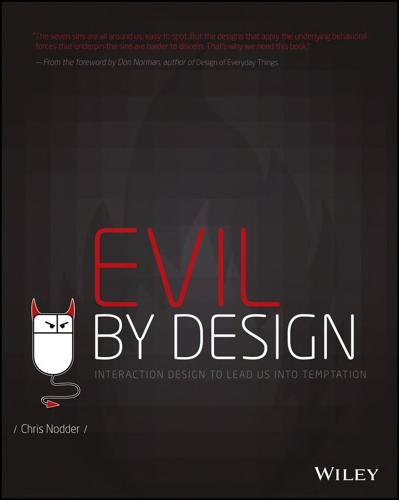
Evil by Design: Interaction Design to Lead Us Into Temptation
by
Chris Nodder
Published 4 Jun 2013
What’s interesting is that like the findings about wine appreciation, the average cyclist would probably actually be happier and more comfortable on a lower-end bike that was more forgiving in the corners and more compliant in its frame. So why does Specialized produce this model? The company has several reasons. First, there are people out there who’ll buy the bike just for its exclusivity. Second, there is a technological trickle-down effect that sees all the manufacturer’s other bikes benefitting from the research done on this one. Third is the psychological trickle-down effect on the bike-buying public’s perception of other models from the same company. Advertising the superbike brings brand awareness and knowledge that similar engineering is used to build the other bikes in the line, including the ones that cost only $1,800.
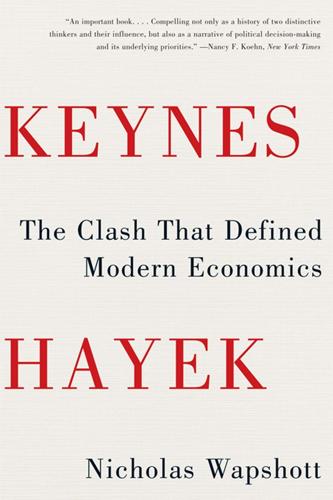
Keynes Hayek: The Clash That Defined Modern Economics
by
Nicholas Wapshott
Published 10 Oct 2011
He illustrated his reasoning by drawing a bell curve on a napkin, showing where the sweet spot might lie. The “Laffer curve” instantly became the hastily drawn device used by economists around Reagan to convince others that tax cuts would boost revenues. Sharply cutting income taxes, the Reaganites argued, would increase personal spending, which would in turn increase demand through a “trickle-down” effect on the whole economy. A third key element to Reaganomics, also promoted by Laffer, was “supply-side economics,” the notion that a booming economy could best be achieved by encouraging producers to supply more and cheaper goods by cutting industry regulations and corporate taxes rather than relying on “demand-led” growth spurred by Keynesian public spending.
…
“Nor should the argument seem strange that taxation may be so high as to defeat its object,” Keynes had written in 1933, “and that, given sufficient time to gather the fruits, a reduction of taxation will run a better chance than an increase of balancing the budget.” Keynes likened those who kept raising taxes to a manufacturer who, “wrapping himself in the rectitude of plain arithmetic,” kept raising his prices, even though no one was buying because prices were too high.61 The “trickle-down effect” had a Keynesian derivation too, drawing on the logic of Richard Kahn’s multiplier, that those who bought goods created jobs and more spending down the line. However, Reagan’s tax cuts made Hayek distinctly nervous. “On the scale on which it is being tried, I’m a little apprehensive,” he said in 1982.
…
M., 140 Tooke, Thomas, 74 “total effective circulation,” velocity as, 104–5 totalitarianism, xiii, 87, 91, 144–45, 150–51, 193–205, 218–19, 221, 241, 266, 287, 288–90 Tract on Monetary Reform, A (Keynes), 23, 24, 32, 41, 53, 115, 286 trade: —balance of, 32, 144, 245 —cycles of, 110–11, 112 —exports vs. imports in, 32, 131, 245 —free, 35–36, 61–62, 82–83, 144, 243, 267, 272 —global, 4 —Keynes’s views on, 61–64, 82–83, 86, 131 —money supply and, 73 —prices and, 23, 24 —tariffs on, 61–64, 82–83, 86, 247 trade unions, 33, 38, 39–40, 60, 187, 247, 268 Treasury, British, xii, 7–11, 24, 32, 57–58, 60–61, 62, 72, 82–83, 85–87, 129, 149–50, 191, 193 Treasury, U.S., 163, 236, 242–43, 280, 281 Treatise on Money, A (Keynes), 31, 53–57, 59, 66, 67, 70, 71, 75, 87–122, 123, 127–28, 132, 139, 146, 168, 172, 174, 317n trench warfare, 4, 6–7 “trickle-down” effect, 262–63 Trinity College, 5, 67 Truman, Harry S., 229, 230, 231, 274 trust funds, 52, 57–58 trusts, 166, 222, 244 Turati, Filippo, 114 unemployment: —benefits paid for (“dole”), 57–58, 60, 61, 134, 199–200, 237, 253, 283–84, 291 —consumer spending and, 81–82 —currency rates and, 31–32, 38–40, 56, 85–87 —economic impact of, 81–82, 85, 131, 133 —in Great Britain, 38, 56, 57–58, 81–82, 85–87, 128, 134, 178–79, 189, 191, 203, 260 —Hayek’s views on, xiii, 2, 70–71, 77–78, 108, 110, 143–44, 178, 184–85, 187, 194–95, 198–99, 257 —inflation and, 131, 159, 232, 238–39, 244, 263, 271 —job creation programs for, 49, 52, 57–58, 70–71, 129–30, 133, 134, 150–51, 163, 184–85, 187, 189, 228–30, 241–42, 272, 280 —Keynes’s views on, 2, 31–32, 52, 55, 56, 57–58, 70–71, 77–78, 81–82, 85, 94, 110, 123–24, 125, 127, 128, 129–37, 143–46, 148, 149–51, 153, 154–64, 170, 184–85, 187, 194–95, 198, 226, 296 —natural level of, 249 —prices and, 26, 41, 229–30 —public spending and, 26, 33–34, 49, 50, 77–78, 85, 260 —taxation and, 130, 163, 191 —in U.S., 128, 157, 170, 178–79, 199, 228–30, 232, 236–46, 251, 253, 261, 277, 282, 283 —wage levels and, 148 United Nations, 228, 229 United States: —banking system of, 28, 41, 84–85 —capitalism in, 46, 144–46 —domestic programs of, 157–70, 202, 205, 228, 231–32, 240, 248, 253, 256, 320n —economy of, 46, 52–53, 62, 106, 111, 141–42, 188–90, 228–46, 253–55, 261–65, 269–72 —foreign aid of, 136, 228 —Hayek’s influence in, xiii–xiv, 201–11, 234, 246, 247–65, 267–74 —inflation rate of, 230, 232, 236, 238–39, 242–46, 248, 251, 255, 261–62, 263, 267, 271 —infrastructure of, 159, 163, 189, 281 —interest rates in, 232, 235, 236, 246, 277, 280, 282, 284 —Keynesianism in, 146–47, 154–70, 188–90, 228–46, 276–84 —military spending of, 190, 231–34, 237, 241, 261, 264, 274, 276–78 —national security of, 233–34, 237, 276–77 —space program of, 234, 237 taxation in, 231, 262–63 —unemployment rate in, 128, 157, 170, 178–79, 199, 228–30, 232, 236–46, 251, 253, 261, 277, 282, 283 —Versailles Treaty and, 4–5, 155–57 —welfare programs in, 240, 264 —in World War II, 189–90, 229, 234 University of Chicago Press, 194, 201–2, 212, 216, 247 utilities, 291 utopias, 290–91, 292 value: —of currency, 22–23 —determination of, 5, 22–23 —of equipment (depreciation), 105–6, 118–19 —of goods, 74–75, 101, 117 —monetary, 22–23, 74–75, 120–21, 161 Vanity Fair, 157 “velocity of circulation,” 26, 33, 104, 136 Versailles Treaty, xii, xiii, 3, 4–5, 8–14, 17, 28, 56, 68, 84, 136, 137, 155–57, 158, 189 Vienna, xi–xiii, 1–3, 15–16, 17, 18–21, 27, 29–30, 40, 44, 111, 145, 214–15 Vienna, University of, 3, 15, 19, 20–22, 140 Vietnam War, 241 Viner, Jacob, 216, 221–22, 329n Volcker, Paul, 246, 261, 263, 286 voluntary savings, 104, 107 von Szeliski, Victor, 164 voting rights, 140 wages, 32, 38–39, 60, 63, 118, 119–20, 134, 135, 148, 188, 241 —controls on, 243–44 —increases in, 118, 119–20, 134 —production costs and, 119–20 Walras, Léon, 74 war debt, 4–5, 8–14, 21–22, 31–32, 84, 155–57, 206 warfare, 4, 137, 138, 190–92, 194, 229, 231–34 war on poverty, 240 war on terror, 276–78 “War Potential and War Finance” (Keynes), 191–92 Watergate scandal, 244 wealth accumulation, 56–57, 117–20, 127, 143–44, 149–50, 222, 241, 279, 287 Wealth of Nations, The (Smith), 218 Webb, Beatrice, 24, 64 Webb, Sidney, 24 Weber, Max, 21, 304n Wedgwood, Veronica, 212, 329n weights and measures, 201 Weimar Republic, 9 welfare state, 199–200, 201, 222, 227, 233, 234–35, 240, 249–50, 253, 258–61, 264, 267, 288–89, 295 Westminster Abbey, 226 wholesale prices, 62 “Why I Am Not a Conservative” (Hayek), 220 Wicksell, Knut, 42, 43, 48, 55, 74, 91, 100, 103, 120 “widow’s cruse,” 127 Wieser, Friedrich von, 20, 21–22 Wilhelm II, Emperor of Germany, 9 William Volcker Charities Fund, 211, 216, 218 Wilson, Woodrow, 4–5, 11, 28, 155–57, 161 Winant, John, 226 Wittgenstein, Ludwig, 3, 114, 300n Wolfson, Adam, 288–89, 292 Woolf, Leonard, 53, 226 Woolf, Virginia, 5, 53, 301n Wootton, Barbara, 202–3, 320n, 326n “Working of the Price Mechanism in the Course of the Credit Cycle, The” (Hayek), 76–78 World Bank, 136, 193 WorldCom, 278 World War I, 3–5, 16, 19–20, 22, 55–56, 68, 69, 72, 84, 155–57, 189 World War II, 136, 189–92, 229, 234 Wright, Quincy, 85 Yale University, 271 Yom Kippur War, 244 Yugoslavia, 16, 17 Zionism, 158 More praise for KEYNES HAYEK “An essential primer on the two men who shaped modern finance.”
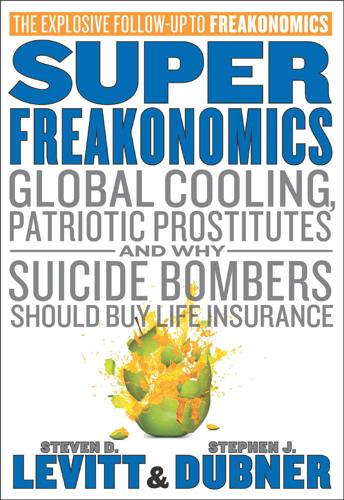
SuperFreakonomics
by
Steven D. Levitt
and
Stephen J. Dubner
Published 19 Oct 2009
In which we discuss compelling aspects of birth and death, though primarily death. The worst month to have a baby…The natal roulette affects horses too…Why Albert Aab will outshine Albert Zyzmor…The birthdate bulge…Where does talent come from?…Some families produce baseball players; others produce terrorists…Why terrorism is so cheap and easy…The trickle-down effects of September 11…The man who fixes hospitals…Why the newest ERs are already obsolete…How can you tell a good doctor from a bad one?…“Bitten by a client at work”…Why you want your ER doc to be a woman…A variety of ways to postpone death…Why is chemotherapy so widely used when it so rarely works?
…
Furthermore, these fatalities were more likely than usual to involve drunken and reckless driving. These facts, along with myriad psychological studies of terrorism’s aftereffects, suggest that the September 11 attacks led to a spike in alcohol abuse and post-traumatic stress that translated into, among other things, extra driving deaths. Such trickle-down effects are nearly endless. Thousands of foreign-born university students and professors were kept out of the United States because of new visa restrictions after the September 11 attacks. At least 140 U.S. corporations exploited the ensuing stock-market decline by illegally backdating stock options.
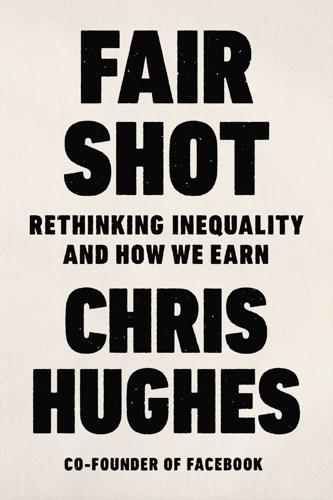
Fair Shot: Rethinking Inequality and How We Earn
by
Chris Hughes
Published 20 Feb 2018
But in the late 1970s, that pivotal moment when we changed some of the fundamental structures of our economy, the wealth share of the richest families in the United States began to grow, and the trend has not abated. Today, the top one percent of Americans controls nearly 40 percent of the wealth in our country—one and a half times more wealth than the entire bottom 90 percent own. The debunked “trickle-down economics” of the 1980s created the most unequal economy in over a century. We now know that prosperity in America does not flow from low taxes on the ultra-wealthy, but mostly from growth in consumer spending. When middle-class families make money, they spend money, fueling economic growth and improving the lives of everyone—the poor and the wealthy alike.

Evil Geniuses: The Unmaking of America: A Recent History
by
Kurt Andersen
Published 14 Sep 2020
A 35 percent tax on $2 million in income generates the same amount as a 70 percent tax on $1 million. Everybody wins! Theoretically. Because only the rich would definitely and immediately win. Wanniski made up a legitimate-sounding name—supply-side economics. For anyone else to benefit, what Democrats since the Depression had called trickle-down economics also had to operate—that is, the supply-side tax cuts (and deregulation) would have to make businesses boom and rich people profit so gloriously that some of that money trickled down to produce jobs and better paychecks for the little people. During the 1970s Bartley, Wanniski, and Laffer had regular dinners, often weekly, sometimes with Kristol, near the Journal’s offices in Manhattan’s financial district.
…
Focusing only on our American experience, when you compare what happened after federal taxes on the well-to-do were raised (by Clinton and Obama in their first terms) or cut (by George W. Bush), the result seems to have been the opposite—more overall growth and jobs after taxes went up, no trickle-down benefits after they went down. We’ve now had four decades to judge the failure of laissez-faire supply-side trickle-down economics for most Americans, yet the right sticks to its story, unrevised. As Republicans rewrote the tax code in 2017—cutting the tax rate on all income above half a million dollars significantly, cutting the effective tax rate on corporations by half—they insisted, just as they had all the previous times, that despite appearances, the rewrite was really all about helping ordinary people, creating jobs, and raising the incomes of the majority of Americans who, as even the Republican Speaker of the House admitted then, “live paycheck to paycheck” with “a lot of economic anxiety.”
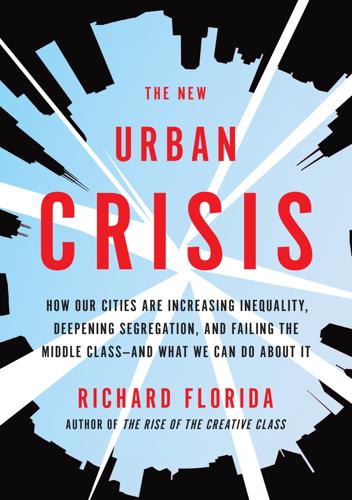
The New Urban Crisis: How Our Cities Are Increasing Inequality, Deepening Segregation, and Failing the Middle Class?and What We Can Do About It
by
Richard Florida
Published 9 May 2016
The worst consequences for the less advantaged occur not in gentrifying neighborhoods per se but in the far more disadvantaged neighborhoods where the great majority of the poor actually live. The way gentrification hurts the poor in these less advantaged places is through its trickle-down or ripple effects on housing prices. A 2015 study using detailed credit-score data to trace the impact of gentrification in Philadelphia between 2002 and 2014 showed how these trickle-down effects work.26 Overall, just 15 percent of the city’s census tracts experienced gentrification over that period. Like Lance Freeman, the researchers in this study found little evidence that direct displacement was a significant problem. The economic conditions of Philadelphia’s gentrifying neighborhoods improved substantially, with household incomes growing by 42 percent over the study period, compared to a 20 percent decline in non-gentrifying neighborhoods.
…
In New York City, for example, the share of rent-burdened households spending 30 percent or more of their pretax income on rent rose from 41 percent in 2000 to 52 percent in 2014. The share of rent-burdened households in gentrifying neighborhoods increased from 42 percent to 53 percent over the same period. It grew even more, from 46 percent to nearly 60 percent of households, in non-gentrifying neighborhoods, another indication of gentrification’s trickle-down effect. And the increase in housing prices hits hardest at the least advantaged households, more than three-quarters of which were rent burdened by 2014.27 The threat of displacement itself may be growing in some rapidly gentrifying cities as well. Over a quarter of neighborhoods in San Francisco are at risk for substantial displacement, according to a 2015 study.28 By 2030, the study predicts, displacement is likely to increase substantially more as the competition for scarce and ever more expensive space continues to accelerate.
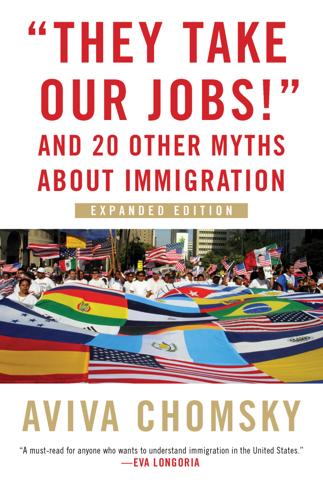
"They Take Our Jobs!": And 20 Other Myths About Immigration
by
Aviva Chomsky
Published 23 Apr 2018
In other words, the role of governments in the Third World should be to create optimum conditions for foreign investors, in hopes that investment will bring economic development that will eventually benefit the poor. In the United States these kinds of policies are often called “Reaganomics,” after Ronald Reagan, or “trickle-down economics”: by offering the rich greater ability to increase their wealth, benefits will eventually trickle down to the poor. Prior to the 1970s, most Latin American countries had followed a very different economic path, one that looked a bit more like the New Deal. The mid-century policies were different from the New Deal because Latin American countries in general had a low level of industrialization, and a lot of emphasis was placed on state-sponsored industrialization.
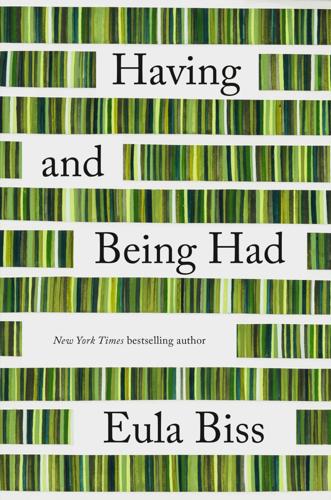
Having and Being Had
by
Eula Biss
Published 15 Jan 2020
Looking at the map this morning, John noticed that affluence is the French word for the tributaries of a river. He wonders if the word once suggested a great river of wealth flowing into smaller affluences. Was it comforting for people to think of money replenishing itself in a regenerative cycle with the rains? Along with affluence, there are liquid assets, and trickle-down economics, and the rising tides that float all boats. Why is water so often a metaphor for money? Perhaps because we like to believe that our economic system is naturally occurring, not man-made. Maybe the movement of money feels inevitable if you imagine it as water, with only blameless gravity participating in the accumulation of wealth.

The Red and the Blue: The 1990s and the Birth of Political Tribalism
by
Steve Kornacki
Published 1 Oct 2018
Tsongas, he charged, was protecting Wall Street and the wealthy at the expense of the middle class—just as Reagan and the Republicans had in the eighties. “We cannot put off fairness under the guise of promoting growth,” he said. Clinton had a big edge in campaign cash and now he put it to work, bombarding the airwaves with attack ads. The Tsongas plan, one of them declared, “smacks of trickle-down economics.” This was the language liberals had been using to attack Reagan Republicans for more than a decade. It was also the language liberals had been using to attack the DLC—and the language that Clinton had once assumed would be used against him in this campaign. But now he was the one running from the left, and it became his weapon as he rallied the old guard to thwart a hostile takeover of their party.
…
Could the Democratic Party as it had long been constituted continue to exist in a country like this? Was this what extinction looked like? It sounded too dramatic, perhaps, but in the midst of such devastation, who could really say? Crisscrossing the country just before the vote, Clinton had argued the GOP contract would return the country to the “trickle-down economics” of the Reagan years. Now the eighty-four-year-old Gipper, less than a week after revealing his diagnosis with Alzheimer’s disease in an open letter to the public, spoke up one final time. “The American people have sent an unmistakable message about the direction they want our country to take,” he said in a statement.

Digital Dead End: Fighting for Social Justice in the Information Age
by
Virginia Eubanks
Published 1 Feb 2011
What might a more just minimum wage and public assistance program take into account? Conversation (20 minutes) Myths of the minimum wage: Myth 1: Working steadily at a job is enough to stay out of poverty. Myth 2: Voodoo economics: the poor will get richer if the rich get richer, through the trickle-down effect. Myth 3: Poor folks in the United States are better off than pretty much everyone else in the world. Myth 4: Only the poor get public assistance. Break for Ice Cream (15 minutes) Play the Oprah Winfrey interview with Ben Cohen. (5 minutes) Myth 5: Good wages are bad business. What might be some of the benefits for businesses of paying good wages?
…
But now, a household’s Appendix C 199 heaviest financial burden is housing. . . . The minimum wage doesn’t bring one worker with one child above that the poverty line line. The minimum wage is now a poverty wage. Myth 2: Voodoo economics: the poor will get richer if the rich get richer, through the trickle-down effect. Actually, the United States has one of the most extreme inequalities in wealth of the industrialized countries, and it’s getting worse, not better. Inequality is bad for your health. The United States is the richest nation on earth, but it is the only major industrialized nation not to assure health care for all its citizens, whether through a public, private, or mixed system.
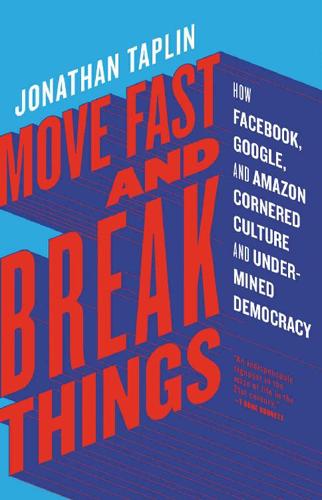
Move Fast and Break Things: How Facebook, Google, and Amazon Cornered Culture and Undermined Democracy
by
Jonathan Taplin
Published 17 Apr 2017
In a video series, Ryan said, “Ayn Rand, more than anyone else, did a fantastic job of explaining the morality of capitalism, the morality of individualism, and this, to me, is what matters most.” But as Paul Krugman has written, the Republican elite is “too committed to an Ayn Rand story line about heroic job creators versus moochers to admit either that trickle-down economics can fail to deliver good jobs, or that sometimes government aid is a crucial lifeline.” The notion of altruism and cooperation is not something that Peter Thiel believes in. He is as confident as an Ayn Rand hero that “achievement of your happiness is the only moral purpose of your life.”

The Great American Stickup: How Reagan Republicans and Clinton Democrats Enriched Wall Street While Mugging Main Street
by
Robert Scheer
Published 14 Apr 2010
The bulk of the benefits of these expansions go to the workers that receive them, not to the corporations that employ them. This may be an ingenious argument in defense of Wal-Mart’s profits abetted by Clinton’s economic policy, but it should have been a clue to Obama’s own views that the community organizer would pick the author of that rationalization to run the economic side of his campaign. It is trickle-down economics of the sort that would guide the banking bailout: Serve Wall Street a banquet, and hope the crumbs fall to distressed homeowners and the jobless. The die was cast in the weeks after his election, when Obama made it clear that he would not only appoint others from Robert Rubin’s team but also endorse an expansion of the enormously costly bailout of Citigroup.
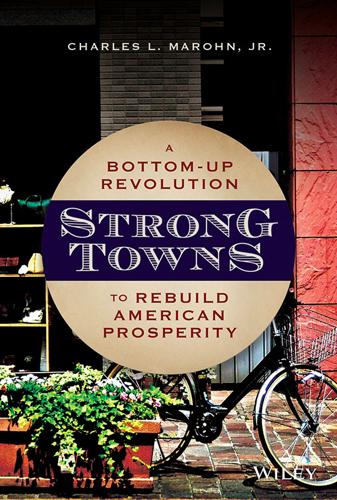
Strong Towns: A Bottom-Up Revolution to Rebuild American Prosperity
by
Charles L. Marohn, Jr.
Published 24 Sep 2019
Francis Catholic Church (Brainerd, Minnesota), 212–213 Sales tax, 49–50 Samuelson, Paul, 91 San Diego, California, 164–167 San Francisco, California, xi Santa Ana, California, ix–xii “Second ring” suburbs, 94 Sedlacek, Tomas, 104 Shovel-ready building sites, 32 Shreveport, Louisiana, 219–221 Sidewalk maintenance, 183, 203 Silos, in local government, 174–176 Simply Complexity (Johnson), 12 Sinclair, Upton, 50 Single-family housing, 144–145 Site-specific infrastructure, 130 Small businesses: importance of, in wealth creation, 162–163 productivity of, 133–134 Social return on investment, 78–79 Speck, Jeff, 206 Spooky wisdom: defining, 4 of farmers, 85 in human habitats, 5–10 in incremental growth of cities, 26 “Sprawl Repair,” 168 Stagflation, 94 State government: debt taken on by, 113–114 funding of local government by, 95 impact of infrastructure on, 79 limiting of municipal debt by, 191 relationship of local and, 197–198 Stewart, Paul, 152 Strategic retreats, 108–109 Strongest Town competition, 161 Strong Towns (organization), 226 Strong Towns movement, 225–226 Strong Towns Podcast, 152, 214–215 Subsidiarity principle, 195–198 Suburban development, 27–30 as growth, 100 urban infrastructure supporting, 114–115 Suburban Retrofit, 168–169 Summers, Lawrence, 63, 78 Sussman, Ann, 8, 9 Symmetry, 9 Systems: anti-fragile, 4, 6 cities as complicated, 11–14 complex, adaptive, see Complex, adaptive systems critical, 182–183 fragile, 4 maintenance-free, 112–113 maintenance required to continue, 115 noncritical, 182 redundant, 182 T Taco John's, 132–134 Tactical Urbanism, 158–159 Tactical Urbanism (Lydon and Garcia), 158 Taleb, Nassim, 4, 59, 120–121, 193 Taxation, 46–50 Tax subsidies, for redevelopment, 133–134 Team approach, in local governments, 175–176, 179–180 Temporal discounting, 57 Tents, 160–161 Thigmotaxis, 8 “Tiny homes,” 163 Traditional city development: as lead by private investment, 34 as low-risk investments, 149 productivity of, 131–134, 140–141 as series of little bets, 16–18 Transit coordinator, 178t–179t Transit projects, 73–74 Transportation: human habitats build around, 1–3 in Santa Ana, California, xi–xii Triage, 119–120 Tribe (Junger), 216 Trickle-down economics, 101 Trump, Donald, 63, 207 U United States: development pattern in Costa Rica vs., 126–127 Urban3, 138, 140, 142, 161 U.S.dollar, as basis for trade, 90–91 Use-based codes, 193–194 V Value: of infrastructure, 70 Value capture approach, 76–77 Value per acre analysis, 135, 138–144 determining productivity with, 138–142 of high-productivity neighborhoods, 150–151 for Lafayette, Louisiana, 141–144 and personal preferences, 144–145 of small businesses, 162 W Walkability: “General Theory of Walkability,” 206 improving, in Shreveport, 220 Walkable City, How Downtown Can Save America One Step at a Time (Speck), 206 Walking: in communities, 203–206 finding gaps in cities by, 160 human habitats build around, 1, 2 in suburbs, 111–112 Walmart, financial productivity of, 139–140, 139t Walt Disney Corporation, 151 Washington, George, 108 Watches, 11 Wealth: growth vs., 102–104 illusion of, 57–60 Wealth creation, in place-oriented government, 176–180, 177t–179t White flight, 111 Why Liberalism Failed (Deneen), 211 Whyte, William “Holly,” 158 Wikipedia, 196 Women, in workplace, 95–96 The World Until Yesterday (Diamond), 58, 84 World War I, 86–87 World War II: confirmation bias of Pacific Islanders after, 183–185 economic stability following, 89–91 Z Zoning: and changes in building use, 137 as constraint on growth, 167–168 and neighborhoods, 21 neighborhoods atrophied by, 163 and urban renewal, 117 WILEY END USER LICENSE AGREEMENT Go to www.wiley.com/go/eula to access Wiley’s ebook EULA.

The Age of Illusions: How America Squandered Its Cold War Victory
by
Andrew J. Bacevich
Published 7 Jan 2020
The casualties of this war are counted in lost jobs and lost dreams.”14 Perot’s self-assigned mission was to awaken his fellow citizens to the way that ill-conceived policies formulated by “out of touch” officials beholden to special interests were gutting the American economy. The rich were getting richer while the wages of ordinary people were stagnating. “That’s not fair,” he contended. Under President Bush and his predecessor, “we got into trickle down economics and it didn’t trickle down.” “Millions of jobs” were being shipped overseas, replaced, if at all, by minimum-wage work in the service sector. If the United States was to remain a great nation, Perot insisted, “we’ve got to go back to building and making things.”15 Perot’s participation alongside Bush and Clinton in three presidential debates in October 1992 offered him an opportunity to expound at length on his message.
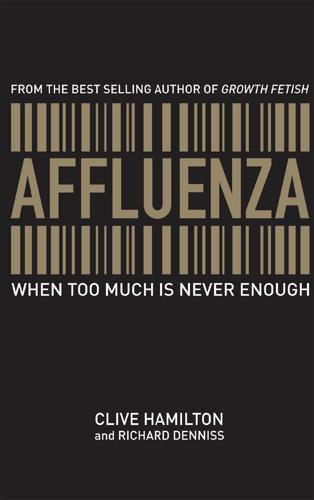
Affluenza: When Too Much Is Never Enough
by
Clive Hamilton
and
Richard Denniss
Published 31 May 2005
CHAPTER 11 1 Lambesis Agency 2004, L Style Report, 9th edn, <http://www.lstylereport.com> [11 January 2005]. 209 INDEX Abbott, Tony, 133 advertising, 4, 28, 36–40, 41, 43, 55, 61, 101, 109, 120, 126,172, 187 and neuroscience, 41–2 fake memories in, 46 children and, 47, 50–51 of breakfast cereals, 48–50, 150–1 of cars, 10, 45 of junk food, 51 of margarine, 43 of tobacco, 51–2, 125 of vitamins, 94 restrictions on, 188 use of nagging, 53–4 affluenza, defined, 3, 7 alcohol, 115–17, 180 annual leave see holiday leave anorexia, 16 appliances, 22–3, 37, 38 attention deficit hyperactivity disorder, 55 Aussie battler, 3, 133–4, 136, 139, 151, 180, see also politics Australian Labor Party, 3, 137–9, 151, 191 bankruptcy, 72–3, 175 banks, 12, 75–6, 77–80 barbecues, 23–4 210 INDEX Blair, Tony, 191 botox, 37, 128 brands, 23, 34, 38–40, 41–33, 45, 53, 55, 56, 110, 187 brand loyalty, 39, 55, 189 brand disloyalty, 190 see also advertising; marketing Bray, Robert, 66 Buddhism, 17 caesareans, 34 Calvinism, 16, 17 cars, 10, 13, 45 4WDs, 44–5, 188 see also advertising celebrity, need for, 56–7 children, 21 advertising and, 47–57, 150 and clothes, 33–4 as fashion accessories, 33 behavioural problems of, 55 financial calculus of having, 34–5, 142–5, impact of materialism on, 149–50 sexualisation of, 57 tinys, 52–3 tweens, 55–7 see also downshifting choice, alleged benefits of, 40–1 clothes, 13, 45, 166 see also children Coalition Government, 136–9 see also Liberal Party community, 95, 119, 146, 148, 183 compulsive shopping, 15, 61 see also oniomania conscious consumption, 166, 186–90 conspicuous consumption, 8, 88, 96 cosmetic surgery, 10, 57, 127–9, see also botox cosmetics, 37 Costello, Peter, 35, 141 credit cards, 10–2, 19, 72–81, 102, 103 see also debt debt, 71 passim, 137, 179 attitudes to, 74, 75 Debtors Anonymous, 61, 80–1 foreign debt truck, 82 home equity loans, 79–80 marketing of, 71, 75–7 national debt, 81–4 211 AFFLUENZA deferred happiness syndrome, 89–2, 98, 169 deferrers, 175–6 see also deferred happiness syndrome democratisation of luxury, 26 depression, 16, 38, 93, 114 deprivation, 3, 66, 192, see also poverty, hardship disease-mongering, 120–7 doorbuster sales, 78 downshifters characteristics of, 154–6 motivations of, 156–7, 158 passim new lifestyle of, 165–7 regrets of, 173 downshifting, 17, 152, 153 passim, 180 children and, 156, 159, 160, 166–7 defined, 153 for dogs, 33 politics of, 175, 183–6 reactions to, 176–70 drugs, 114–16, 118 Easterlin, Richard, 6 Eckersley, Richard, 148 economic growth, 3, 4–5, 62–3, 114, 118, 136, 141, 159, 185, 190, 193 environment, 111, 112, 157, 179, 190, 193, 194 evangelical Christianity, 182–3 family size, 20–1 federal election 2004, 3, 136–8 female sexual dysfunction, 121–3 feminism, 27 flexible work hours see work hours Frank, Robert, 9 Frey, Bruno, 63 full employment, 192 gratifiers, 175 growth fetishism, viii, 18, 142, 193 Guevara, Che, 28 happiness, 58, 63–4, 113, 118, 127, 146, 152, 175–6 hardship imagined, 64 genuine, 66 212 INDEX Hayek, Friedrich, 186 health, 113, 156, 157, 164, 166, 179, 193 see also work hours hedonic treadmill, 6, 58, 184 holiday leave, 87, 88, 93 Hood, Robin, 190 houses, 13, 20, 60, 101 size of, 20, 21–2, 37 prices of, 20, 21–2, 134, 137, 179 Howard, John, 82, 138, 141, 142 Idell, Cheryl, 53 identity, 13–4, 45 imports, 73, 83–4 incomes, 4, 58–9, 112 Indigenous Australians, 113 intermittent husband syndrome, 91 karoshi, 92 Kasser, Tim, 14 Klein, Naomi, 38 Latham, Mark, 137, 138 Liberal Party, 136, 138, 139, 151 Luis Vuitton, 9, 28 luxury fever, 8–10, 12, 19, 135, 143, 178 luxury goods, 9–10, 13, 16, 19, 21, 26, 127, 170 Mandelson, Peter, 191 marketing, 13, 28, 37–8, 42, 45, 47, 53, 104, 110–1, 118, 120, 126, 179 see also advertising materialism, 14–5, 17, 47, 55, 89, 119, 154, 184 and values, 146–52 meningococcal disease, 120 middle class, 8–9, 59, 74, 136 middle-class welfare, 139-42, 180 Mill, John Stuart, 138, 186 money, 5, 7, 11, 16–7, 19, 58, 63, 67–8, 80, 97, 98–9, 103, 107, 112, 120, 139, 143–4, 148, 152, 159, 166, 171, 175–7, 178, 187 hunger for, 6, 17, 18, 137, 146, 180, 183–4 see also debt money coma, 80 Moynihan, Ray, 121, 123 213 AFFLUENZA needs, 4, 7, 29, 59–63, 65, 66, 100, 147, 148 neoliberalism, 7, 17, 36, 39–40, 79, 138 as new form of oppression, 186 of relationships, 182 of tax cuts, 136, 139 of the Aussie battler, 133–5, 151 of welfare, 139, 140, 141, 180 of wellbeing, 193–4 progressive, 181, 182 pornography, 151 post-materialism, 4, 155, 157, 184 poverty, 18, 181, 190–2 poverty line, 66–7 presenteeism, 94 privatisation, 40 psychology, role in marketing, 36–41, 46, 51, 53–4, 61 obesity, 118 obsolescence, 110 oniomania, 15–6 see also compulsive shopping Olsen twins, 57 O’Neill, Jessie, 7 ovens, 22–3 overconsumption, 7, 19 passim, 72, 96, 122, 178 overwork see work hours Pavlov, Ivan, 41, 47 plastic bag levy, 103 pets, 28–33 humanisation of, 30, 33 pharmaceutical companies, 120–1, 126 Pocock, Barbara, 98 politics, 60–1, 66, 119, 183 conservative, 144, 181, 190 of choice, 168, 172 relationships, 14, 81, 97, 179, 193, 194 relationship debts, 175 see also work hours retail therapy, 16, 100–1 retirement anxiety, 92, 173–4 right-hand ring, 27 Ritalin, 118 Roberts, Kevin, 39 saving, 71, 82 see also debt 214 INDEX Schor, Juliet, 48 sea change, 153, 155 see also downshifting self-storage industry, 25, 102 social anxiety disorder, 124–6 status, 170 Stutzer, Alois, 63 suffering rich, 63 sunglasses, 25–6 television, 9, 21, 22, 60, 183, 188 lifestyle programs, 37 sales, 24–5 Trapaga, Monica, 49–50 trickle down theory, 191 twin deficits theory, 83 values, 180–3 see also materialism Veblen, Thorstein, 8 Vidal, Gore, 6 voluntary simplicity, 154, 187 see also downshifting wasteful consumption, 100 passim, 179, 190, 194 and guilt, 106–8, 112 wealth, 81–2 whitegoods, 23 see also appliances wellbeing, 14, 40, 54, 58, 113, 115, 118, 142, 163, 190 wellbeing manifesto, 193, 217–24 work hours, 81, 91, 95–6, 158, 161, 163, 174, 179 and children, 90–1 excessive, 85–9, 158 impact on communities, 95–7 impact on health, 90–4, 122 impact on relationships, 85, 90, 91, 97–9, 122, 149 working class, 8–9 workophiles, 87 215 A political manifesto for wellbeing Preamble Australians are three times richer than their parents and grandparents were in the 1950s, but they are not happier.

The Global Auction: The Broken Promises of Education, Jobs, and Incomes
by
Phillip Brown
,
Hugh Lauder
and
David Ashton
Published 3 Nov 2010
See also BRIC (Brazil, Russia, India, and China) nations rust belt, 99 property rights, 68 prosperity, 2–4, 16, 26–27, 64, 132–33, 146, 152, 154–58, 164, 185n4 protectionism, 13, 149–52 public sector workforce, 17–18, 115, 127 salaries, 55, 59, 71, 78, 85, 114, 117, 118, 118–19, 120, 123, 176n9 Salzman, Harold, 37 Samsung, 95 Samuelson, Paul, 152 Index Saez, Emmanuel, 116, 125 safety net, 12, 24 Saudi Arabia, 30 Savery, Thomas, 66 Saxenian, Anna Lee, 38 STEM (science, technology, engineering, or math) subjects, 36–40, 39, 45, 153, 155 Stembridge, Bob, 45 Schneider, Craig, 79 Schultz, Theodore, 16–17, 166n8 Schumpeter, Joseph, 113 scientific management, 8, 65–66, 69, 71–72, 76, 80–81, 160 Stimpson, Herbert, 69–71 stock options, 159, 162 Summers, Lawrence, 115, 126 supply chains, 40, 77, 104–5 supply side economics, 17 Scientific Office Management, 72 Scott, Robert, 108–9, 112 self-interest, 4, 24, 26, 40, 156 self-regulation, 13 surveillance, 74, 174n33 Sweden, 124–25 symbolic-analytic services, 15 self-reliance, 19 Sennett, Richard, 142 talented workers, 25–26 Tate, Jay, 65–66 Serco, 115 service industries, 50, 73–80, 109, 152, 170–71n2 tax policies, 125, 162 Taylor, Fredrick Winslow, 8, 65–66, 68–69, 71–72 Shanghai Nanotechnology Promotion Center, 44 technology, 166n3 technology transfer, 41 shareholders, 67, 98, 104, 106, 124–25, 159, 162 Shierholz, Heidi, 122, 180n25 shipping containers, 57–58 telecommunications industry, 53–54, 61–62, 107 Temesek Holdings, 42 Shukla, Rajesh, 130 Silicon Valley, 39, 163 Thatcher, Margaret, 4, 24, 125 time and motion studies, 69, 71 Simmel, Georg, 137 Singapore, 38, 42, 158 Singh, Manmohan, 33–34 Time magazine, 145 Times newspaper group, 95 trade barriers, 99 skilled workforce, 25, 47–50, 84–87, 90–92, 127, 166n3, 170n44. See also high-skill, trade unions, 110, 125, 160 transaction costs, 107 low-wage workforce Smith, Adam, 16, 67, 76, 81–82, 166n3 social amnesia, 163 transnational companies, 3, 36, 40–41, 49–50, 52, 87, 98–100, 107, 112 trickle down economics, 24 social capital, 134–35 social conflict, 146 trust relations, 107 Tulgan, Bruce, 177n25 social congestion, 135–36, 139, 146 social inequalities, 148, 162 social justice, 3, 17, 27, 64, 146, 148, 150, unemployment, 24, 31, 41, 47, 92, 114, 118, 119, 136–37, 163 152, 154, 160–64, 185n4 social mobility, 12, 17, 34 socialism, 187n31 soft currencies, 140 software, 72, 74, 77, 79–80, 100, 114–15, 175n38.

How to Run the World: Charting a Course to the Next Renaissance
by
Parag Khanna
Published 11 Jan 2011
One migrant returning from Shanghai wrote, “It was a leap from post- to pre-modernism, from the 21st century back into the medieval world.”1 Statistics actually matter little amid such volatility. As Mark Twain said, “There are three kinds of lies: lies, damn lies, and statistics.” Touting economic growth percentages, for example, without taking into account population growth and resource consumption, makes a mockery of any meaning numbers might have. Trickle-down economics doesn’t work in third world–sized populations. Ethiopia has eighty-five million people today but is growing by almost two million per year. Many Arab and African states have little idea how to manage populations that are so much larger than only several decades ago, so they barely even try.
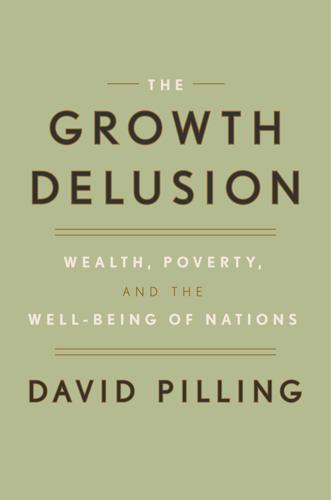
The Growth Delusion: Wealth, Poverty, and the Well-Being of Nations
by
David Pilling
Published 30 Jan 2018
By 2016 India was vying with China as the fastest-growing large economy on earth.7 In a 2010 speech to the Lok Sabha, India’s lower house of parliament, Jagdish Bhagwati, a prominent and rambunctious Indian economist with a twinkle of mischief in his eye, praised the impact of growth on the life of ordinary Indians, some 200 million of whom he said had been lifted out of poverty. The architects of liberal reform, he said, had never intended to create growth for growth’s sake. Rather growth was viewed as an enabler, a means of attacking poverty. He denied that such policies had anything to do with the discredited trickle-down economics popularized by Ronald Reagan with his aggressive tax cuts for the rich. Instead, he told parliament, growth was “a strategy for pulling the poor out of poverty through gainful employment, not as an end in itself.” Bhagwati’s position was different from that of another prominent Indian economist, Amartya Sen, recipient of the 1998 Nobel Prize for economics and a contemporary of Bhagwati’s at Cambridge back in the 1950s.
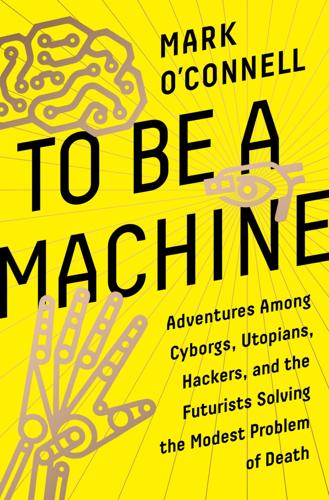
To Be a Machine: Adventures Among Cyborgs, Utopians, Hackers, and the Futurists Solving the Modest Problem of Death
by
Mark O'Connell
Published 28 Feb 2017
He addressed the questions of social justice that arose from this—questions of what he called “the fair distribution of brains”—given that those in a position to afford enhanced brains were likely to be those people already occupying an elite position within society. His suggestion, though, was that less intelligent people would wind up benefiting more from enhancement technologies than those who were already very intelligent, and that the overall effects of increased general intelligence would inevitably benefit society as a whole—a kind of trickle-down economics of intelligence. All of this—the setup, the situation—was utterly familiar to me, and yet utterly strange. I had lately abandoned the sinking ship of an academic career for the hardly less precarious vessel of freelance writing. I had used up several years of my unextended life span getting a PhD in English literature, only to confirm my suspicion that a PhD in English literature was never going to lead me to the promised land of actual employment.

Do Nothing: How to Break Away From Overworking, Overdoing, and Underliving
by
Celeste Headlee
Published 10 Mar 2020
During the Reagan/Thatcher era, the working world was transformed once more, not as extensively as was seen during the Industrial Revolution, but through an aggressive heightening of the attitudes toward labor that had been evolving for more than a hundred years. The United States began to follow policies based on so-called trickle-down economics: the idea that growth in income and wealth for the highest earners in a society will also help the poor and middle class because the money will “trickle down” from the top. This was also the era during which the belief in constant growth really took hold. The health of national economies was measured in terms of GDP (gross domestic product), and the value of a stock was often heavily based on forecasts of profit growth instead of stability or resilience.
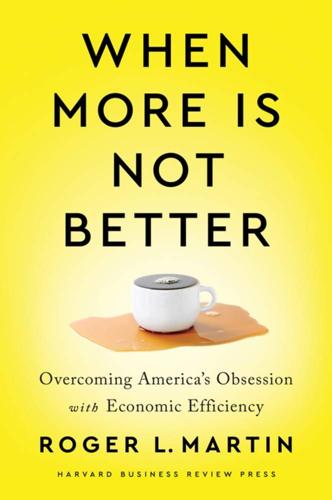
When More Is Not Better: Overcoming America's Obsession With Economic Efficiency
by
Roger L. Martin
Published 28 Sep 2020
See educators teaching See also educators certainty, 170–173, 181, 185 integrative approach to, 174 reductionism, 173–178 technology, 65, 66, 88–89 tenure-based voting rights, 157–159 theorizing, 178–179 Third Congressional District of Maryland, 202, 203 third-party candidates, 201–202 3G Capital, 123–124, 126, 187 tightly coupled systems, 106–107 Tilly, Charles, 192, 194 time-and-motion studies, 42 time horizons, 155–159 Tobin, James, 92 Tobin tax, 92, 103 Tocqueville, Alexis de, 198–199 Ton, Zeynep, 124–126 total quality management, 43 Toyota Production System, 43 Toys “R” Us, 97–98, 99, 101 trade free, 41–42, 56, 63, 66, 150–152 productive friction in, 150–152 trade barriers, 150 trade policy, 56, 150, 151 Trader Joe’s, 125 trade wars, 41 trading technology, 88–91 training, 125 transaction costs, 106 trickle-down economics, 161 Troubled Asset Relief Program (TARP), 138, 144 two-sided markets, 152–153 Uber, 192 unemployment, 24 United States, metaphor for, 26 University of Chicago, 24 US Census Bureau, 4 US Constitution, 40 US economy achieving balance in, 97–114 efficiency in, 63 as efficient machine, 21–44, 94, 100, 210 gaming the system and, 84–94 growth of, 33–38 imbalances in, 1–17 models of, 22–25 as natural system, 77–94 of 1970s, 5–12, 24 proxies in, 45–57 sectors, 22 user-experience (UX) design, 180 value creation, 130 Verizon, 53–54 voter registration, 205–206, 207 voters, 201–206 Voters Not Politicians, 204 wage growth, 9, 10, 68 wages, 67–70, 125, 150 Wagner School, 180 Wallace, George, 201 Wallenstein Feed & Supply (WFS), 133–134 Washington Mutual, 137 Waste Management Inc.

What Went Wrong: How the 1% Hijacked the American Middle Class . . . And What Other Countries Got Right
by
George R. Tyler
Published 15 Jul 2013
Third, some might argue that this skewed allocation of the gains from growth is temporary. The major principle of Reaganomics is that by freeing up business to maximize profitability, wealth will be created, which—ultimately—will benefit all. If you are old enough to remember the beginning of the Reagan era, you’ll recall that this was once called “trickle-down economics.” Well, thirty years on, most families are still waiting for trickle down to deliver. It’s Not Reaganomics, It’s Globalization Another argument is that globalization and outsourcing of jobs, not Reaganomics, are responsible for weak wages. But as I noted previously, this argument is belied by the experience of the family capitalism countries.
…
about, 25, 35–37, 65, 105, 146, 149 Adam Smith was the antithesis of, 111 Alan Greenspan and, 36, 81–82, 85, 119, 219, 387 Atlas Shrugged, 35 The Fountainhead, 35 Milton Friedman and 102–4, 205 Pearlstein, Steven (Washington Post journalist) on, 36 Phillips-Fein, Kim on, 35 philosophy of narcissism, self-absorption and pseudoscientific social Darwinism, 37, 40, 102, 104, 111 Reagan and Rand’s philosophy, 35–36, 66 Reaganomics and, 35–37, 65, 104–5, 149 Rappaport, Alfred (professor), 101 Rauner, Felix (University of Bremen), 334 Rawls, John, 267, 289, 401 Rayment, Paul, 64 Reagan, Ronald (President) 33, 37 big government threatening, 181–84 budget spending and deficits, 185, 204, 207–8 deregulation and donations from executives, 32 Greenspan, Alan, 35, 81 national debt, tripled the, 42, 207, 211 savings and Loan crisis, 29 wildcat banker as, 200, 212 Reagan era Adam Smith’s capitalism, rejection of, 64, 104, 149 attitudes towards employees and investors, 115–21 Australia, rejection of, 58 borrowing and spending during, 184–6, 201–06 class warfare, 272–73 corporate philanthropy rejected by, 105 corporate pay-for-performance, collapse of, 135–37 credit bubble, leverage during, 41, 42, 105, 210–211, 215, 217–9 greatest credit bubble in history, 201 debt crisis created by, 210–11 deferred prosecution of, 88–89 deindustrialization, 347, 381–400 deregulation of electricity generation and Enron, 72 dysfunctional corporate governance, 27–28, 127–32, 398–400 economic mobility decline, 291–96 employee protection against arbitrary dismissal, 419 financialization of America, 77, 383–86 low-wage model in America fails in Europe, 246–50 manufacturing jobs and lost multiplier impacts, 389–92 monetary policy manipulated for political gain, 219–21 myths of Reaganomics, 225–42, 288–91 pseudoscientific rationale, 126 subprime home mortgages, 68–69 supply-side economics, 225–26 taxes alternative minimum tax, 194 lower on corporations, 276 payroll tax, 195–96 relaxed enforcement of, 275–76 tax structure, flat, 190–4 trickle-down economics, 10 Wall Street fraud, failure to punish, 87–88 Reaganomics. See also corporate governance; family capitalism; Friedman, Milton; Greenspan, Alan; Reagan era; Red Queens; shareholder capitalism antigrowth, 163, 373, 398, 428 growth ceiling, 400 management behavior is anti-growth, 373 big government spending, 41, 65, 184–87 borrowing and spending, 201–4 Cold War, exploited the, 32 corporate governance is America’s Achilles’ Heel, 40, 393, 441–2 credit crises of 2007/2008 and, 242 culture of self-absorption, 37, 46, 48 “deficits don’t matter,” 41–42 economic growth slowed by, 213 eleven characteristics of, 37–45 Feldstein, Martin, 34, 123, 178 globalization is blamed for the sins of, 230–32 Hubbard, Glen, 34, 460 impact of, 4–7 industrial performance, erosion in relative, 177, 398 infrastructure investment has been starved, government, 396 Jensen, Michael C.
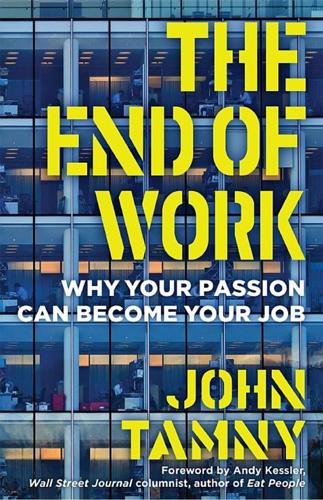
The End of Work: Why Your Passion Can Become Your Job
by
John Tamny
Published 6 May 2018
With the purses growing and sponsorships from name-brand companies like Geico, Red Bull, and HTC, budgets for the major North American teams are in the three-to-five-million-dollar range.9 At this point, you’ve probably already guessed that the surging interest of fans and corporate sponsors in video gaming is having a “trickle down” effect. “Video game coach” is now a career for some. The Wall Street Journal reported in 2015, “Some e-sports coaches make between $30,000 and $50,000 a year.” John Thorn, Major League Baseball’s official historian, acknowledged that compensation for video game coaches is in line with that of minor league baseball coaches.10 Imagine where compensation will head if the phenomenon grows.
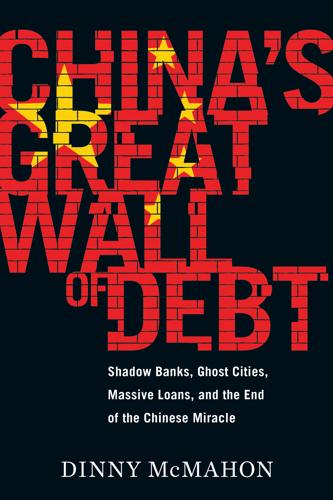
China's Great Wall of Debt: Shadow Banks, Ghost Cities, Massive Loans, and the End of the Chinese Miracle
by
Dinny McMahon
Published 13 Mar 2018
See enforcers and enforcement pollution, 38–39, 98, 154, 186–87, 207 population, 171–73 price fixing, salt, 145–46 private companies Chinese interests and, 13–18 proliferation of, 103 raising money, 99–100, 130 product safety scandals, 204–5 propaganda department, Erzhong, 46 proprietary technology, 180 protectionism, 43, 183–87 protests of confiscated goods, 157–61 corruption, 150 of expropriation of land, 75–76, 81–82, 83 investment failures, 112 of laid-off workers, 34–35, 36 political system and, 202–3 pollution and product safety, 207 Pu Guolin, 40 Pudong, 57–58 Q Qiao Runling, 59 Qiu Zhiming, 178 quotas, 167 R R&D spending, 180–83 Raleigh, NC, 69–70 Rather, Dan, 118 Ravens, Robert, 191–93, 197–98, 203–4 Reagan, Ronald, 175–76 real estate, companies investing in, 131, 189–90 Ren Hongbin, 34 resources, for aging population, 171–73 resources, imported clothing brands, 138 cotton and wool, 138 iron ore, x-xi state-owned firms and, 28 “restless hand,” 12 Rio Tinto, 28 Rise and Fall of Nations, The (Sharma), xiii risk taking at Erzhong, 29 investments, 113 WMPs, 110 See also innovation Romero, George A., 35 rules, relationship to, 23–24, 103, 109 S salt market, 144–47, 151–52, 157–61 savings, 123, 176–77 Schultz, Howard, 197 shadow banking, 105–12, 135–36 Shandong Province, 37, 138 Shandong Ruyi Science and Technology Group, 138 Shang Fulin, 130 Sharma, Ruchir, xiii Shenfu, 72 Shenyang, 125–26 Shenzhen,180 Shi Changxu, 27–28, 31–32 Shiyan, 39–40 short selling, of Chinese companies, 4 Sichuan Province, 25, 45, 150–51 silver mining, corruption in, 1–6, 15–18 Silvercorp Metals, 3–6, 15–18 Sinomach, 33–35 skyscrapers, 125–28 smartphones, 67 social stability, 12, 36, 208–11 commitment to, 137 corruption, 150 land expropriations, 76 threats to, 153–54, 155 Soros, George, xv South Carolina, 168 South Korea, 47 Springs, Leroy, 166 Stahl, Lesley, 66 Starbucks, 197 state vs. private interests blurring of, 11–13 police and, 5, 6–7 state-owned firms, 6–7 China vs. elsewhere, 30–35 debt held by, 31–32 housing for, 84–86 lending and, 130 purpose of, 28 steel industry, 43, 183–86 stimulus, xiii-xiv stimulus (economic), 80, 108, 124 subprime mortgage crisis, 69–73, 86–87, 108, 111, 194 subsidies, 38 land, 41–42 paper, 184 steel industry, 184 Subsidies to Chinese Industry (Haley), 184 Sun Liping, 150, 155–56 supply-side structural reform, 175–78 Switzerland, pen industry, 179–80 T Taobao, 206 Tasmania, 191–93, 204 taxes, 19–21 construction, 65–66 incentives, 67 infrastructure, 73 land development, 92 Liaoning Province, 21–24 salt and, 144–45 urbanization and, 54–56 zombie companies, 36–37 teddy bears, lavender, 191–93 Tencent, 180 textiles manufacturing, 166–70, 173–75, 188–90 threats. See enforcers and enforcement Three Gorges Dam, 77, 128 Tieling, 49–51, 54–56, 61–65, 68–69, 71–72 tourism, 72 transportation growth of, 52–53 as obstacle, 45, 170 salt, 145 trickle-down economics, 175–76 Trump, Donald, 185–86 trust companies, 108–9 U Under the Dome (documentary), 154, 156–57 Unirule, 38 United States challenges working in, 173–75 Chinese protectionism, 185–87 cotton, 174 exports to China, 196 global economic activity, 195 infrastructure, 70 iodine deficiency, 146 job loss to China, 167, 185 land prices, 169–70 shadow banking, 135–36 steel industry, 184 subprime mortgage crisis, 93, 111 textiles manufacturing, 166–67 vested interests, 156 unregulated lending, 100, 105–12, 132 urbanization, 53–54 ambitions, 58 consumerism, 193–97 housing stock, 90 view of, 59–68 See also ghost cities V vested interests, 149–51, 154–55, 161–62, 211 Volvo, 40 voodoo economics, 175–76 W wages.
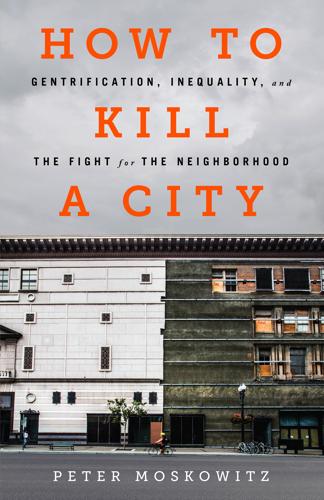
How to Kill a City: The Real Story of Gentrification
by
Peter Moskowitz
Published 7 Mar 2017
Dan Gilbert’s favorite business phrase—“Do well by doing good”—seems to be the official slogan of the new Detroit, embraced by hundreds of young white entrepreneurs who believe they’re not only making money but helping rescue an entire city. That’s why speaking with Midtown Inc.’s Sue Mosey was refreshing. She can talk about the profit motive of the new Detroit without resorting to euphemisms for trickle-down economics. The biggest problem, Mosey told me, is that there is practically no city government left in Detroit. Midtown Inc., which has no accountability to anyone except those who fund it (developers and nonprofits such as the Kresge Foundation), has become the de facto department of planning for its section of the city.

Affluence Without Abundance: The Disappearing World of the Bushmen
by
James Suzman
Published 10 Jul 2017
Smith believed that trade and enterprise in pursuit of personal enrichment and unburdened by regulatory interference ensured the fairest and most effective “distribution of the necessaries of life” and so advanced the interests of society. As much as the inequality associated with unfettered capital growth suggests that the reason Smith’s hand is invisible is because it isn’t there, the metaphor continues to be invoked by enthusiastic advocates of the free market and repackaged as trickle-down economics. Yet, ironically, hunter-gatherer egalitarianism suggests that even if Smith’s hidden hand is nonsense, his belief that the sum of individual self-interests can ensure the fairest distribution of the “necessaries of life” was right, albeit in a very different way from how he imagined it.

Less Is More: How Degrowth Will Save the World
by
Jason Hickel
Published 12 Aug 2020
All told, they contribute the vast majority of the labour and resources that go into the global economy.35 And yet in return for this they receive literally pennies. The poorest 60% of humanity receives only about 5% of total global income.36 Over the course of the past four decades since 1980, their daily incomes have increased by an average of about 2 cents per year.37 Forget ‘trickle-down’ economics – this is barely even a vapour. By contrast, the vast majority of new income from global growth has gone to the world’s rich. The richest 1% alone capture $19 trillion in income every year, which represents nearly a quarter of global GDP.38 That adds up to more than the GDP of the ‘poorest’ 169 countries combined – a list that includes Norway, Sweden, Switzerland, Argentina, all of the Middle East and the entire continent of Africa.
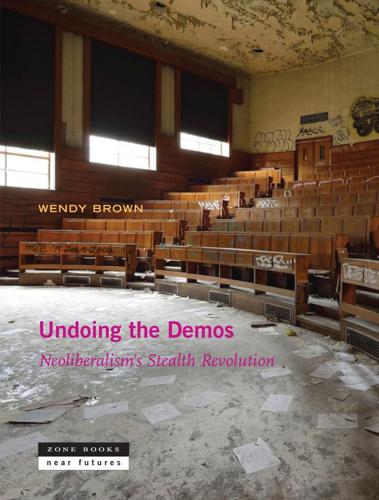
Undoing the Demos: Neoliberalism's Stealth Revolution
by
Wendy Brown
Published 6 Feb 2015
Thus, while neoliberalism formally promises to liberate the citizen from the state, from politics, and even from concern with the social, practically, it integrates both state and citizenship into serving the economy and morally fuses hyperbolic self-reliance with readiness to be sacrificed. 212 u n d o in g t h e d e m o s The “shared sacrifice” discourse of neoliberalism’s austerity epoch differs sharply from that accompanying the “trickle-down” economics of the 1980s. The Reagan-Thatcher era promised that wealth generated by the giants would benefit the small; today’s sacrificial citizen receives no such promise. Economic ends are delinked from the general welfare of the population but, in addition, as citizens are integrated into these ends via governance, they may be sacrificed to its needs, vicissitudes, and contingencies in a nation, just as they are in a firm.
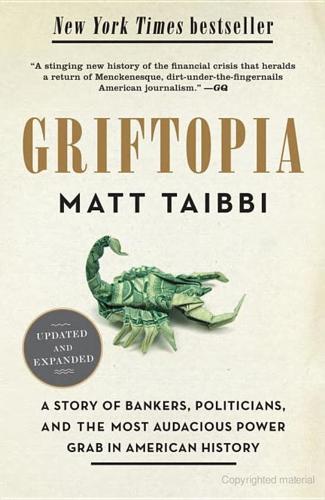
Griftopia: Bubble Machines, Vampire Squids, and the Long Con That Is Breaking America
by
Matt Taibbi
Published 15 Feb 2010
Even after the rich almost destroyed the entire global economy through their sheer unrestrained greed and stupidity, we can’t shake the peasant mentality that says we should go easy on them, because the best hope for our collective prosperity is in them creating wealth for us all. That’s the idea at the core of trickle-down economics and the basis for American economic policy for a generation. The entire premise—that the way society works is for the productive rich to feed the needy poor and that any attempt by the latter to punish the former for their excesses might inspire Atlas to shrug his way out of town and leave the rest of us on our own to starve—should be insulting to people so proud to call themselves the “water carriers.”
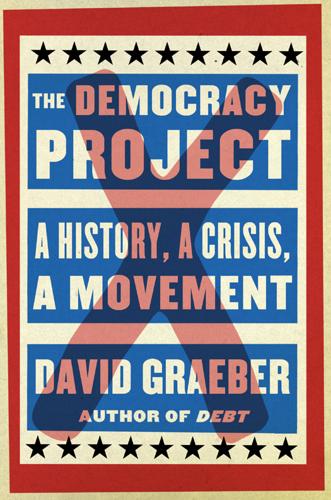
The Democracy Project: A History, a Crisis, a Movement
by
David Graeber
Published 13 Aug 2012
I still remember during Ronald Reagan’s administration being startled by exchanges like this one on TV: ADMINISTRATION OFFICIAL: Our main priority is to enact cuts in the capital gains tax to stimulate the economy. INTERVIEWER: But how would you respond to a host of recent economic studies that show this kind of “trickle-down” economics doesn’t really work? That it doesn’t stimulate further hiring on the part of the wealthy? OFFICIAL: Well, it’s true, the real reasons for the economic benefits of tax cuts remain to be fully understood. In other words, the discipline of economics does not exist to determine what is the best policy.

Heartland: A Memoir of Working Hard and Being Broke in the Richest Country on Earth
by
Sarah Smarsh
Published 17 Sep 2018
Once they paid off the wholesale supplier, the county permit, and the family help, they had a fortune of a few thousand dollars. It would come in handy, as Mom’s belly was large with a baby that would be born in the fall. Mom and Dad had their first fireworks stand the year Reagan was reelected—selling American pride in a field next to a two-lane blacktop while think tanks sold “trickle-down” economics. It’s funny that both of their children were born weeks before an election that Reagan won. We would be able to map our lives against the destruction of the working class: the demise of the family farm, the dismantling of public health care, the defunding of public schools, wages so stagnant that full-time workers could no longer pay the bills.
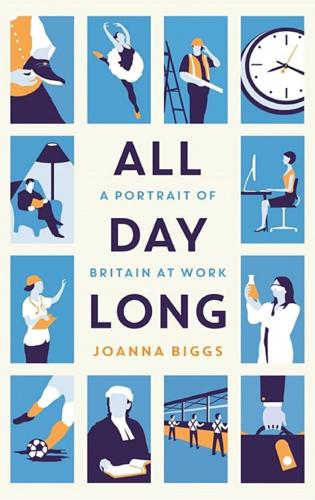
All Day Long: A Portrait of Britain at Work
by
Joanna Biggs
Published 8 Apr 2015
They’ve given us all this money and we’re doing great,” but that hides the overall picture’ of what’s happening across the country. He paused. ‘The government’s taken a stance where they’re making cuts to areas that are already hurting, and protecting all the people who already have enough money. That’s the Conservative way of doing things. Trickle-down economics, which we know doesn’t work.’ If politics runs on a five-year electoral cycle, science runs on a twenty-year cycle. ‘Nobody really thinks that far ahead any more,’ Vijayaraghavan said. In the twentieth century, industry developed new technologies in basic labs such as Bell Labs in the USA and the IG Farben in Germany, but as companies looked to increase profit in an increasingly global marketplace in the 1970s, they began to rely on publicly funded universities for research.

There Is No Planet B: A Handbook for the Make or Break Years
by
Mike Berners-Lee
Published 27 Feb 2019
The metric incorporates four core principles: wellbeing, inequality, happiness and sustainability. http://happyplanetindex.org/ Bioregional’s One Planet Living on the other hand encompasses ten principles, with a greater breadth of environmental issues, including: health and happiness; equity and local economy; culture and community; land and nature; sustainable water; local and sustainable food; materials and products; travel and transport; zero waste; zero carbon. https://www.bioregional.com 6 For a powerful and entertaining illustration of the failings of the planned economy, try Francis Spufford’s novel Red Plenty: Inside the Fifties Soviet Dream. 7 Common Cause: The Case for Working with our Cultural Values, Tom Crompton, 2010: https://tinyurl.com/ccTomCromp 8 See, for example, this piece by Max Lawson, Head of Advocacy and Public Policy, Oxfam Great Britain, on the World Economic Forum website http://tinyurl.com/gsmfx6x. See also Wikipedia’s posts on supply side economics and trickle-down economics. 9 Credit Suisse 2017 Global Wealth Report https://tinyurl.com/globalhwealth By wealth, we mean the sum of all assets; house, money, pension fund, clothes, toothbrush – the lot. 10 See endnote 9 above. 11 Using data compiled by on Giving What We Can from https://tinyurl.com/meanmedianwealth as well as Credit Suisse.
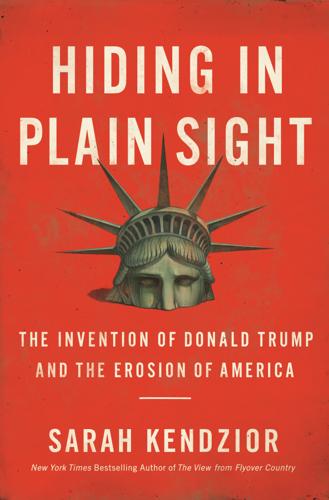
Hiding in Plain Sight: The Invention of Donald Trump and the Erosion of America
by
Sarah Kendzior
Published 6 Apr 2020
Trump was introduced into the corrupt world he now inhabits and developed the tactics he now employs to evade consequences, just as the world itself was changing to reward white-collar criminals like himself. In the 1980s, he became symbolic of this era and its rapacious greed, but the extent to which he showcases wealth as raw power is distressingly literal. He was not merely an outcome of the economic restructuring ushered in by Reagan’s union-busting and trickle-down economics, and he was not merely a brazen player in the corporate raiding and glitzy rebuilding of New York City. Trump may have been involved in an unparalleled and inexplicable pact with the US government to remain above the law, one that was likely buffered by criminal actors and hostile foreign states.
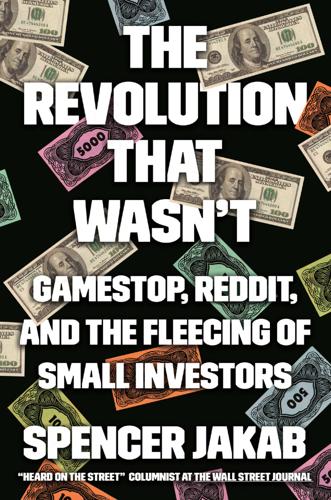
The Revolution That Wasn't: GameStop, Reddit, and the Fleecing of Small Investors
by
Spencer Jakab
Published 1 Feb 2022
“There are PLENTY of these opportunities to come in the future, just pay attention, be patient and be even more retarded,” wrote another. “Exactly! Like next week’s big opportunity: GME,” responded another poster, using GameStop’s ticker symbol. He had no idea how right he was. Chapter 13 Rise of the Apes Who said trickle-down economics is dead? Two months after the meme-stock squeeze, the Dian Fossey Gorilla Fund received news that a member of the WallStreetBets subreddit had symbolically adopted a baby gorilla, Urungano. In the next six days, there was a torrent of thirty-five hundred further adoptions from the group raising $377,000.
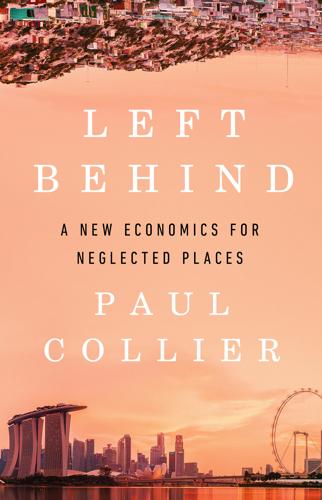
Left Behind
by
Paul Collier
Published 6 Aug 2024
Footnotes i President Biden’s recent speeches are consistent with his State of the Union address repudiating past decades of policies which had negligently caused the emergence of hereditary disadvantage. See his speech on ‘Bidenomics’ in Chicago on 3 July 2023, which repudiated ‘40 years of trickle-down economics’. Note that the forty years since 1983 includes the Clinton and Obama presidencies. See also the rather clearer articulation of the same argument by his National Security Advisor. ii See Chapter 2 on the cohort of modest wartime leaders who rose to the severe challenges of the times but were leaving public office by the 1970s.
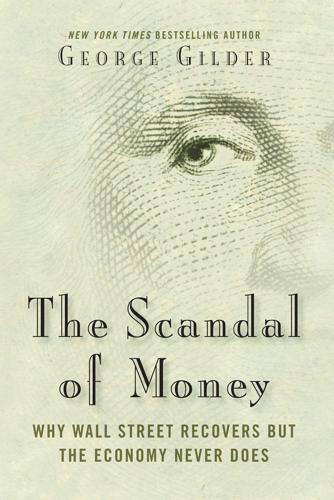
The Scandal of Money
by
George Gilder
Published 23 Feb 2016
Perhaps negative interest rates could be contrived, requiring holders of cash to buy stamps every month to attach to their dollars. If five years of quantitative easing—some $4.6 trillion worth of bond purchases—could not reverse the five-year decline in real median incomes, perhaps another year would yield a trickle-down effect. The middle class might finally benefit. Or perhaps adding to the Fed’s $1.7 trillion portfolio of mortgage-backed securities could rev up middle-class housing values.2 It sure worked last time. The entire system is backing, blindly and unguided, into the future. While professors and politicians inveigh against the depredations of the “rich,” the rich, carefully disguised in bleached denim, slink away to their tax shelters.
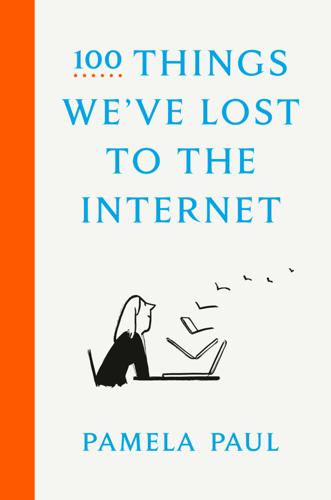
100 Things We've Lost to the Internet
by
Pamela Paul
Published 14 Oct 2021
We are all well aware of the weighty effects of the Internet on democracy, on citizen participation and fair elections and government accountability, on the fate of small businesses and the lives of workers; we have gone through the repeated realization that every time the Internet swings the door wide open, the consequences are at once liberating and dire. We know too well the Internet’s trickle-down effects on our daily existence, from the screen we tap rather than the button we press when we wake in the morning; from what we do upon rising from bed to what we worry about as we drift off at night; from the particulars of our commute and what happens once we get to work and how we gather as a family when we return home.
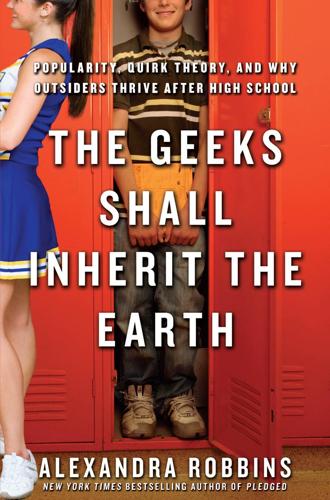
The Geeks Shall Inherit the Earth: Popularity, Quirk Theory, and Why Outsiders Thrive After High School
by
Alexandra Robbins
Published 31 Mar 2009
The massive mainstreaming of spheres that once were the domains of nerds and geeks—video games, Internet destinations like Wikipedia, YouTube, MySpace, Facebook, Skype; technological gear like Bluetooth headsets and BlackBerries; the literary genres that encompass Lord of the Rings, Harry Potter, and Twilight; pop culture remixes like Transformers and X-Men; activities like forwarding or embedding viral videos and blogging—provide ample evidence that a once-stigmatized subculture is now embraced and thriving. So, too, can teenage nerds and geeks find this acceptance. While there have been surprisingly few trickle-down effects from the adult Age of the Nerd to the student world, they have been positive. Some student bodies have acknowledged a “cool nerd” subset, for example. More important, many teenage nerds and geeks now choose to celebrate their label rather than allow it to imprison them. These outcasts are rising up, exulting in the “geek cred” that differentiates them from other groups and the knowledge and precision that, as Geoffrey suggested, eventually will enable them to profit financially (as have, to name a few, Paul Allen, Sergey Brin, Larry Ellison, Bill Gates, Steve Jobs, Larry Page, and Steve Wozniak, some of whom themselves exemplify quirk theory).
…
nerdcore hip-hop artists: See, for example, Tocci, Jason. “The Well-Dressed Geek: Media Appropriation and Subcultural Style,” paper presented at MiT5, Massachusetts Institute of Technology, April 29, 2007. “the social pariah outcast aesthetic”: Ibid. massive mainstreaming of spheres: Ibid. few trickle-down effects: Interviews. a “cool nerd” subset: Interviews. Paul Allen, Sergey Brin: These names are cited in many places; this particular list was in Varma, Roli. “Women in Computing: the Role of Geek Culture,” Science as Culture, Vol. 16, No. 4, December 2007. Steve Jobs: Jobs, an outsider in school whom classmates viewed as odd, intense, and a loner—and who is now called “arguably the greatest innovator of the digital age”—is also an example of quirk theory.

Why We Can't Afford the Rich
by
Andrew Sayer
Published 6 Nov 2014
Don’t entrepreneurs like Bill Gates deserve their wealth for having introduced products that benefit millions? Aren’t the rich entitled to spend what they have earned how they like? What right has anyone to say their consumption is excessive? Couldn’t the rich cut their carbon footprints by switching to low-carbon consumption? Wouldn’t the world miss their philanthropy and the ‘trickle-down effects’ of their spending? In fact, isn’t this book just an example of ‘the politics of envy’ – directed at those whom former UK Prime Minister Tony Blair used to call ‘the successful’? Shouldn’t we thank, rather than begrudge, these ‘high net worth individuals’? It’s the objections regarding the alleged role of the rich in wealth extraction, as opposed to wealth creation, that present the biggest challenge and occupy the bulk of this book, though I’ll attempt to answer other objections too.
…
Yes, the rich employ a few servants and provide demand for accountants, tax advisors and luxury services, but far fewer jobs result from this than would be case if their income were redistributed back to ordinary people with a much higher propensity to consume. The best way to get money to cascade down from the rich to the rest is to tax them – or stop them extracting it in the first place! As Ann Pettifor argues, any trickle-down effect is dwarfed by the reverse ‘hoovering up’ effect of rent and interest in directing money to the wealthy.144 So, to come back to the Tea Party slogan: jobs are created by those who control the means of production and finance, subject to the constraints of demand and costs. Those with little money don’t create jobs because they lack the means of production to employ anyone to work; where would they get the capital to do so?
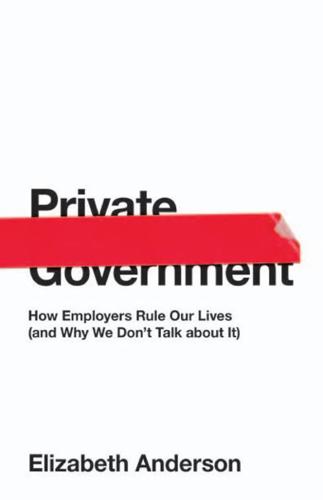
Private Government: How Employers Rule Our Lives (And Why We Don't Talk About It)
by
Elizabeth S. Anderson
Published 22 May 2017
Department of Labor, US Labor Department Seeks Enforcement of Subpoena Issued to Forever 21 (Washington, D.C., 2012), https://www.dol.gov/opa/media/press/whd/WHD20121989.htm#.UIrdYfmfG31. 21. Oxfam America, No Relief: Denial of Bathroom Breaks in the Poultry Industry, 2–3. 22. Marc Linder, Void Where Prohibited Revisited: The Trickle-Down Effect of OSHA’s at-Will Bathroom-Break Regulation (Iowa City, IA: Fănpìhuà Press, 2003). 23. Hertel-Fernandez and Secunda, “Citizens Coerced: A Legislative Fix for Workplace Political Intimidation Post-Citizens United,” 6. 24. U.S. Government Accountability Office, Enhancing OSHA’s Records Audit Process Could Improve the Accuracy of Worker Injury and Illness Data (Washington, D.C., 2009), 22, https://coreyrobin.files.wordpress.com/2012/05/gao-report-on-osha-october-2009.pdf. 25.
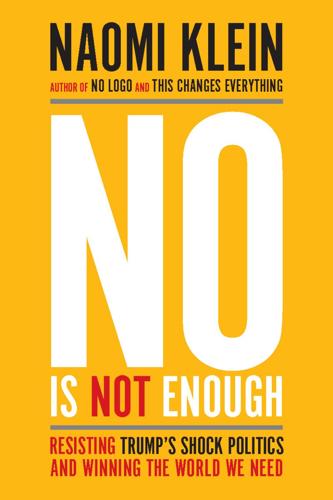
No Is Not Enough: Resisting Trump’s Shock Politics and Winning the World We Need
by
Naomi Klein
Published 12 Jun 2017
So, yes to marriage equality and abortion access and transgender bathrooms, but forget about the right to housing, the right to a wage that supports a family (Clinton resisted the calls for a $15 minimum wage), the universal right to free health care, or anything else that requires serious redistribution of wealth from top to bottom and would mean challenging the neoliberal playbook. On the campaign trail, Clinton mocked her opponent’s “Trumped-up trickle-down economics,” but her own philosophy is what we might call “trickle-down identity politics”: tweak the system just enough to change the genders, colors, and sexual orientation of some of the people at the top, and wait for the justice to trickle down to everyone else. And it turns out that trickle-down works about as well in the identity sphere as it does in the economic one.

Against Everything: Essays
by
Mark Greif
Published 5 Sep 2016
These so-called individualists will then be led, by the common standard of the dollar, to common interests, common desires, and little that’s individual at all. Some say the more the rich are rich, the better off everyone will be. But really the Dick Cheneys of this world are obese because they’re eating everybody else’s dinner. Trickle-down economics is an alimentary philosophy: the more the rich eat, the more crusts they stuff in their maws, the more they create for the benefit of all the rest of us underneath them. Even if it worked, one could not forget that what they pass on to us is predigested, already traveling through their stomachs and fattening them first, giving excess nutriment to the undeserving.

Zero-Sum Future: American Power in an Age of Anxiety
by
Gideon Rachman
Published 1 Feb 2011
It also cut the marginal rate of tax for top earners further from 50 to 28 percent—bringing it down to less than half the level when Reagan took office. Corporate taxes were cut from 48 to 34 percent. Liberals complained that the poor were being made to pay for these cuts and that a welfare state was being replaced with “trickle-down economics.” Sean Wilentz, a historian of the period, laments that “important social programs for the needy and the underprivileged—public assistance, food stamps, school lunch and job training programs, Social Security disability payments—had been slashed.”6 Conservatives, however, still remember this assault on the welfare state as a high point of the Reagan era.
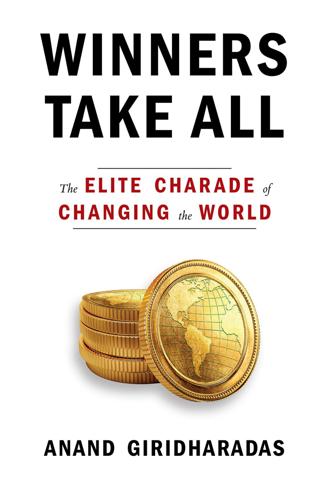
Winners Take All: The Elite Charade of Changing the World
by
Anand Giridharadas
Published 27 Aug 2018
They are led by an invisible hand to make nearly the same distribution of the necessaries of life, which would have been made, had the earth been divided into equal portions among all its inhabitants, and thus without intending it, without knowing it, advance the interest of the society. The selfish pursuit of prosperity, Smith is arguing, takes care of everyone just as well as actually attempting to take care of everyone. From this general idea familiar theories derive. Trickle-down economics. A rising tide lifts all boats. Entrepreneurs expand the pie. Smith tells the rich man to focus on running his business on the assumption that positive social consequences will occur automatically, as a happy by-product of his selfishness. Through the magic of the “free market”—an oxymoron ever since the first regulation was imposed on it—he unwittingly arranges for the common good.
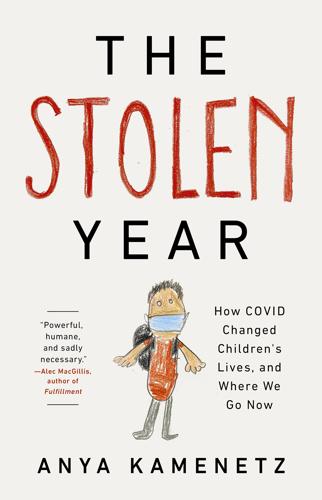
The Stolen Year
by
Anya Kamenetz
Published 23 Aug 2022
This was a Denali of federal spending—a mountain even higher than the New Deal. It had some crucial provisions for children and families. Like a third round of stimulus checks, $1,400 per family, which rolled out as tax returns were processed. In a desperate hour, the federal government had turned its pockets inside out. And for once, “trickle-down economics” became more like a refreshing waterfall. Between direct stimulus, extra unemployment benefits, and more food stamp money offered under both Trump and Biden, the Urban Institute calculated that pandemic aid would drive down US poverty in 2021 to the lowest level on record. Children are the age group most likely to be living in poverty, and correspondingly, the poverty rate among children fell the most of any group: from 15 percent in 2018 to 5 percent in 2021.

The End of Cheap China: Economic and Cultural Trends That Will Disrupt the World
by
Shaun Rein
Published 27 Mar 2012
Private foundations also financially supported such people as my Harvard classmate Wang Dan, who was one of the student leaders during the Tiananmen protests in 1989. Wang Dan has continued to be one of China’s foremost critics. Backed by Taiwanese money with specific agendas, he will be unlikely to voice anything but opposition to China. This cooptation of the academic class and its students, which has a trickle-down effect that affects policies governing military exchanges and weapons sales, helps Taiwan advance its agenda. China, on the other hand, is poor at this and does not have a strong lobbying effort within the Western world. China needs to start funding more academic research and exchange. They should also promote the establishment of foundations using private Chinese money.

Dead Aid: Why Aid Is Not Working and How There Is a Better Way for Africa
by
Dambisa Moyo
Published 17 Mar 2009
Survey results are similar in Ethiopia, Ivory Coast and Mali.9 Indeed, not only are the benefits of China’s African presence acknowledged, but they are also being spread more widely. Traditionally China was narrowly focused on resource interests, benefiting only a few. However, as discussed earlier, in recent years China broadened its investment horizons (now encompassing other sectors) and people are benefiting from the trickle-down effect of its resource investments – employment, housing and better standards of living. For many Africans the benefits are all too real – there are now roads where there were no roads, and jobs where there were no jobs. Instead of staring at the destructive desert of aid they can, at last, see the fruits of China’s involvement, the latter clearly a factor in Africa’s posting a 5 per cent growth rate in recent years.
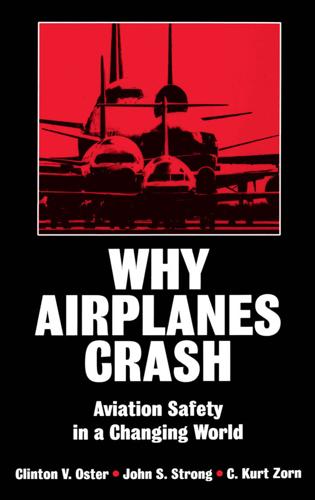
Why Airplanes Crash: Aviation Safety in a Changing World
by
Clinton V. Oster
,
John S. Strong
and
C. Kurt Zorn
Published 28 May 1992
This issue has further implications, to the degree that the oldest equipment is concentrated in the hands of weaker carriers whose financial performance may preclude modernization. Internationally, the aging aircraft problem assumes an additional dimension to the extent that the oldest planes are not scrapped, but rather are sold or leased to the airlines in the developing world. This "trickle-down" effect could have the effect of putting aged, less reliable aircraft in service in the world's most difficult operating environments and in the hands of those perhaps least able to maintain the aircraft. HOW OLD IS THE FLEET? How "old" the aircraft fleet is depends on how "age" is measured. Jets currently in service have engineering design lives that are shown in Table 7.2.
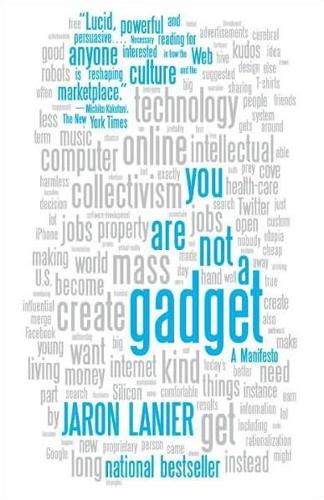
You Are Not a Gadget
by
Jaron Lanier
Published 12 Jan 2010
The freelance studio session musician faces diminished prospects, for instance. Another example, outside of the world of music, is the stringer selling reports to newspapers from a war zone. These are both crucial contributors to culture and democracy. Each pays painful dues and devotes years to honing a craft. They used to live off the trickle-down effects of the old system, and, like the middle class at large, they are precious. They get nothing from the new system. This is astonishing to me. By now, a decade and a half into the web era, when iTunes has become the biggest music store, in a period when companies like Google are the beacons of Wall Street, shouldn’t there at least be a few thousand initial pioneers of a new kind of musical career who can survive in our utopia?

The Raging 2020s: Companies, Countries, People - and the Fight for Our Future
by
Alec Ross
Published 13 Sep 2021
Economists pointed to government regulation and inefficient management as the problems, and discontent opened the door for Friedman’s ideas to circulate. Then, in the 1980s, his philosophy hit the mainstream. Shareholder primacy melded perfectly with the Reagan and Thatcher eras, providing an intellectual cornerstone for deregulation and trickle-down economics. Soon, clear opposition to the New Deal–era checks on corporate power emerged. These critics argued that government had kept a lid on business for too long: managers of big businesses had grown complacent and had stopped driving profits, and the whole economy was stagnating as a result. If companies were turbocharged to maximize profits, it would jolt the whole country and the whole world into growth.
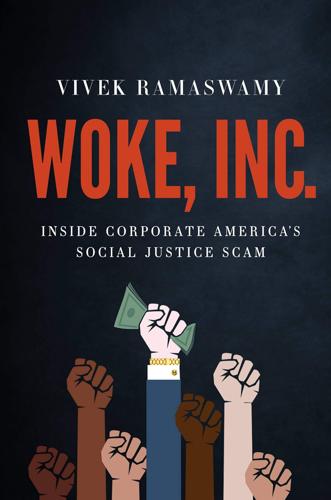
Woke, Inc: Inside Corporate America's Social Justice Scam
by
Vivek Ramaswamy
Published 16 Aug 2021
But there’s something about going out and chanting “End Summer Break” that doesn’t quite have the same moral ring to it as “Defund the police.” It’s boring to campaign against long summer breaks. It’s much easier and more satisfying to say that we should just end structural racism and then everything else will follow. Liberals complain about trickle-down economics, but they believe in trickle-down politics—don’t worry about boring little policy fixes, just raise your voice against racism instead. My problem with complaints of systemic racism isn’t that they’re wrong, it’s that they’re lazy. Saying that the root problem is pervasive and overwhelming racism can perversely make it seem as if someone’s missing the big picture when they focus on narrow policy solutions rather than fighting all the evil racists.

Into the Raging Sea
by
Rachel Slade
Published 4 Apr 2018
In a wild storm, one could quickly sink or capsize while the other would get knocked around, but stay afloat. Sun Ship discontinued new shipbuilding on January 9, 1981, the victim of appalling mismanagement in the preceding years and a shady sale to an entity Schorsch is convinced had some connection to the CIA. Enter the go-go ’80s, trickle-down economics, and the golden age of management consulting and offshoring. After the ownership change, executives determined that the land Sun Ship occupied was more valuable than the ability to build and repair ships. The whole factory shut down, and a year later, its parts were sold for cash. Sun Ship’s sixty-year story speaks to America’s great maritime boom and bust.

The Hidden Globe: How Wealth Hacks the World
by
Atossa Araxia Abrahamian
Published 7 Oct 2024
This surge of interest is turning theoretical questions that were once the domain of sci-fi novels and dorm-room thought experiments into pressing legal, regulatory, and commercial concerns. Who can lay claim to an asteroid and all its extractable wealth? Should space be colonized, privatized, and commercialized? What kind of power do individual states have this far from their own borders? Do trickle-down economics apply in zero-gravity conditions? Following previous frontiers, from colonial conquests to the high seas, space is the latest testing ground for these thorny ethical and legal questions. It could also wind up being host to a full-on gold rush. So while major powers such as China and India plow increasing sums of money into developing space programs to rival NASA’s, and the United States and Russia militarize the stars to prepare for future warfare, wily states like Luxembourg are making a different bet: that they can become home to a multinational cast of entrepreneurs who want to go into space in order to make money.

Aerotropolis
by
John D. Kasarda
and
Greg Lindsay
Published 2 Jan 2009
They’re worth as much as $250 million a year to the greater D.C. economy, according to research conducted at George Mason University. Just this one route will create 1,760 new jobs, with a median salary of $81,000, or about $140 million in wages. The rest will come when they spread that wealth around, generating another $100 million in trickle-down effects. That will stem from Chinese companies on the prowl for the programmers and consultants who can bring them up to speed in the Instant Age. “China is a developing nation that is experiencing very rapid growth and is an importer of information and high technology products,” the George Mason report noted.
…
For this reason, “countries should view air routes as highways in the sky,” he wrote, a “public good whose capacity is limited only by the number of routes and the seats or tonnage traveling on them.” A simulation sponsored by Boeing went further, asking what would happen if the skies were to open on some of the most lucrative off-limits routes, China’s among them. The results were unequivocal: traffic would soar 63 percent, and the trickle-down effects would create twenty-four million jobs in tourism and trade. They would add $490 billion to the global economy—the equivalent of dropping another Thailand on the map. If Japan needs another stimulus, this could be it. China already treats its airlines as a public good, to a fault. Deng’s reforms somehow missed aviation, as it wasn’t until 2005 that China’s first privately owned airline, Okay Airways, started flying.

The Price of Time: The Real Story of Interest
by
Edward Chancellor
Published 15 Aug 2022
The Widow Chaumont, who was said to have gained a fortune of 60 million livres, kept an open house ‘consuming every day a cow, two veal calves, six sheep, besides fowl and game, with plenty of Champagne and Burgundy’.38 Paris thronged with new carriages, out of which stepped finely dressed persons dripping with jewels.39 Weavers and watchmakers were imported from abroad to meet the surging demand for fine tapestries and fancy time-pieces.40 The Duke of Bourbon spent his Mississippi profits on new stables at his house in Chantilly, with capacity for more than two hundred horses and twenty-three carriages. The editor of the Mercure de France welcomed the general prosperity brought about by such extravagance: ‘we should admire the divine wisdom which … permits cupidity to exercise on this occasion the duties of charity.’41 Today, we call it the trickle-down effect. Yet no sooner had Law’s great edifice been put together than it started to collapse. The reasons for this failure are complex. The Scottish interloper had created powerful enemies, among them the financiers who previously farmed the royal taxes and were eager to make a comeback. Members of the Paris Parlement also loathed Law, whose reforms threatened to end their venal existence.
…
(ketchup-maker), 161, 169 helicopter money, 112, 131 Hilferding, Rudolf, Finance Capital (1910), 158 Hilton, Paris, 178 Hirst, Damian, ‘Golden Calf’, 208 Hoag, David, 246 Hoenig, Thomas, 116 Holland, Henry Lancelot, 75 Holmes, Elizabeth, 149 Homer, Sydney, 4, 11, 68, 109 Hong Kong, 175 Hoover, Herbert, 92, 100, 141–2 Horan, Hubert, 149 d’Horn, Antoine-Joseph, Count, 51 Houellebecq, Michel, 309 Hudson, Michael, 9* Hume, David, 12, 27, 41, 45, 85*, 130–31, 132–3 Hungary, 253 IBM, 166 Iceland, 252, 253, 253*, 262, 300–301 Icelandic Central Bank (ICB), 300 Immelt, Jeff, 170–71 India, 254–5, 258 Indonesia, 258 industrial sector: canal construction mania (1790s), 69, 74; Chinese dumping of surpluses, 277, 280–81; electrification, 89; expansion from 1750s in Britain, 62–3; extended supply chains, 261; high demand in developing world, 128; impact of Great Depression on, 142–3; mining stocks, 79; new technologies in 1920s, 89, 90, 96, 100; production gluts in China, 276–7, 280–81; time in production, 14–15, 22, 95, 95† inequality: Bastiat’s view, xviii–xix; central bankers and responsibility for, 214–17; in China, 287–8, 287†; and Covid-19 pandemic, 309–10; and elite displays of wealth, 209–10, 212; and ‘financial repression’, 287–8; and financialization, 203–8; good and bad types of, 299; and Hayek, 296, 299; impact of crisis on the 99 per cent, 210–13, 215–17, 237; and inflation targeting, 123; interest as always about justice, 202; Marshall on deflation, 99–100; moral arguments over interest, 17, 201–2; multi-decade decline in from Great Depression, 203; multi-decade increase from early 1980s, 203–17, 204*; Piketty’s theory on, 216–17; in post-crisis Iceland, 301; rich as benefitting from easy money, 12*, 44, 202–5, 205, 206–10, 211, 214–17, 237; as rising in post-crisis decade, 44, 206–17, and secular stagnation argument, 205–6; seventeenth century writers on, 34, 36; stress levels after 2008 crisis, 210–11; trickle-down effect, 55; unequal access to credit, xxii, xxv, 14, 15, 215; in USA of 1920s, 203 inflation, xxiii, xxv; and asset price bubbles, xxiii, 134, 135; ‘Cantillon effect’, 60*; case against, 108*; and Covid-19 pandemic, 310; global aspect of, 122; Greenspan’s focus on, 110–14; Hayek on, 302; inflation targeting, 119–20, 121–3, 241; and Law’s ‘System’, 56–7, 58, 59–61; and low rates of interest, 42, 43, 56–7, 58, 59–61; and ‘natural rate’ of interest, 133–5; in post-Great War period, 84; purged by high interest rates, 84; return of in 1960s, 302; after Second World War, 311; in USA during 1970s, 108–9; Volcker’s ‘practical monetarism’, 109–10; and Wicksell’s view of interest, 42 insurance: ‘catastrophe bonds’, 222; credit default swaps (CDS), 219, 221; ever-escalating life premiums, 198–9, 199*; and low-interest regimes, xxi, 193, 195, 196*, 245; and moral hazard, 220, 233; underwriting, 219–20, 219†, 233 interest: ancient connection with rent, 7; Austrian school’s view, 95–6, 100, 101, 105, 108; calculating of how much due, 6, 14; central banks’ influence on long-term rates, 133, 134–5; concealed in bills of exchange, 24; and ‘creative destruction’ idea, 140–43, 143*; determining of rate level, 10–13; feedback loop with globalization, 260–61, 311; as hard to predict, 310–11; Hazlitt on price system, xx; as at heart of capitalism, xxii, xxv, 16, 28, 141, 297; high levels under Volcker at Fed, 109; and inequality in modern capitalism, 17; inversely related to capital value, 31, 43, 44, 52–61, 88, 116*, 158, 172–5; and length of ‘time in production’, xxiv, 14–15, 16, 22, 95, 95†; loans related to consumption, 6, 9*, 25, 28–9, 30; long-term rates in US (1945–2021), 134; lucrum cessans (foregone profit) concept, 25; moral arguments over inequality, 17, 201–2; paid by taking possession of collateral, 6–7; politicization of rate setting, 85–6; rate of and cultural level of a nation, 13, 29; rates set by custom and law, 11, 12; ‘real’ and ‘monetary’ factors, xxiv, 10, 12–13, 41, 131, 132–3, 133*, 138–9; as the ‘time value of money’, xxiv, xxv–xxvi, 10, 14–15, 16, 20, 22, 26–7, 28–32; variety of different rates, xxv, 12, 13, 14; Thomas Wilson’s definition, 26–7, 28, 30 see also ‘natural rate’ of interest; usury interest, functions of, xxiii–xxvi; allocation of capital, xxi, xxiv, xxv, 11, 15–16, 32, 139, 141–50, 151–5, 264, 266; capitalization of wealth, 139, 173–87; discounted value of asset’s future income, 28, 90–91, 173, 297; distribution of wealth, xxv, 139, 201–17, 237; financing of companies, 139, 157–71; level of savings, xxiv, xxv, 139, 188–93, 194–9; measurement of risk, xxv, 139, 176–7, 218–19, 220–34; as the ‘price of leverage’, xxiv, xxv, 135; regulation of international capital flows, xxv, 139; Schumpeter’s view, 141; valuing of long-lasting assets, 15 interest, history of, xxii–xxiii; 1825 banking crisis, 64–7, 75; anticretic interest, 6; attitudes to usury, 17–24, 25–6, 200–201, 219; Babylonian origins, 3–4, 14–15; barter-to-money myth, 14; Child’s abatement of interest proposals, 33–4, 35, 36–7, 38–40, 41, 43, 44; consumer and commercial lending distinction, 6, 9*, 25–6; decline of rates in late Middle Ages, 35, 36; defence of interest in seventeenth century, 37, 38–41, 42–4, 236†; emergence of modern credit cycle, 62–4; etymologies of interest, xvii–xviii, 4–5, 7, 11, 17, 18, 25, 26, 200; European rates (1200–1800), 36; Fed’s tightening (1928), 108, 261; ‘forgotten depression’ (1921), 84, 86, 100, 143; gradual rate decline in early modern Europe, 49; interest as much older than coined money, 3–4, 14; invention of compound interest, 8–9; low rates in Amsterdam, 35–6, 39; low rates in late-nineteenth century USA, 157, 158–9; new concept of at start of modern era, 27–8; post-1571 debates on excessively high rates, 34–40; post-Great War period, 84, 85–6; Proudhon-Bastiat debate, xvii–xix, xxi, xxii, xxv, 9; speculative manias (1630s-1890s), 64–6, 67–72, 73, 74, 75–6, 77–8, 79–80; stability of rates in ancient world, 10–12 see also Mesopotamia, ancient; Middle Ages; Mississippi bubble; Near East, Ancient; price-stabilization policy of 1920s interest, ultra-low/excessively low rates: and 1825 banking crisis, 64–7, 75; in 1980s/1990s Japan, 105–7, 106; Bagehot’s views, 64, 66, 67, 68, 69, 72, 73, 80–81, 220, 233; under Bernanke after 2008 crisis, 124, 131, 133, 137–8, 153, 155, 181–3, 207, 215, 230, 238–9, 240, 243–4, 262; under Bernanke before 2008 crisis, 111–12, 113, 115–17, 115†, 118–19; and British government debt conversions, 65, 65*, 69, 79; Buffett on, 308*; buyout barons as beneficiaries of, 160–63, 161*, 183†, 204, 207, 222, 237; Cantillon’s warning over, 58, 60–61; and capital-intensive industries, 62–3; as common feature of asset bubbles, xxiii, 116*, 123, 135, 172–87, 180, 220; consumer behaviour affected by, 32; and ‘financial repression’ in China, 266–81, 268*, 277*, 283, 292; ‘financial repression’ term, 191; under Alan Greenspan, 111, 112, 113, 114, 115, 117, 134–5, 162, 186, 190–91, 204, 226–7, 238, 252–3, 267; Icelandic Counterfactual, 300–301; impact on emerging markets, xxiii, 253–60, 262–3; impact on stock market/bond investors, 193–4; and inequality, 205–17, 299; in late nineteenth century, 78–80; and Law, 49, 52–4, 56*, 58–61; ‘low rates beget lower rates’ thesis, 44, 135, 136, 139, 206, 231, 234; low real rates in 1920s USA, 87–91, 89, 92–4, 96–8, 203; misallocation of capital by, xxi, 32, 43, 114, 136, 141–50, 151–5, 266–81, 289; during Napoleonic Wars, 69–70; productivity collapse in post-crisis decade, 150–51, 152–3; ‘reversal interest rate’, 236; rich as benefitting from, 44, 202–10, 211, 214–17, 237; and rising profits in post-crisis USA, 183, 185, 211; and risk taking, xxi, 52–61, 64–73, 77–81, 121–2, 135–9, 145, 149, 176–9, 220–34, 283, 285, 291–2; robber baron era in USA, 156–9, 203; and saving, 44, 77, 190–93, 194–9, 205–6; and secular stagnation narratives, 126–7, 129, 131, 132–9; seventeenth-century debates on, 34–44, 236†; trouble exiting from policy, xxi–xxii, 57–9, 60–61; ‘unicorns’ feed on, 148–50, 153, 155, 173, 176–7; unintended consequences, xxi–xxii, 32, 44, 137–9, 238, 297–8; Paul Volcker’s view of, 108–9; as warning sign, 13, 114; warnings from economists at BIS, 113–14, 131–4, 135–9, 153; William White on, 114; and ‘yield-chasing’, 65–6, 67–9, 114, 116, 136, 221–6, 230–31, 230*, 233–4, 237–8, 256, 305; zero interest rate policy (ZIRP), xxi, 123, 131, 137–8, 141, 146, 172–3, 191, 192; and zombification, 146–8, 153, 155, 237, 240, 277, 289 see also Mississippi bubble; negative interest rates International Dynamite Trust, 159 International Monetary Fund, 119, 144, 147, 168 investment: and China’s rapid expansion, 266–7, 269–70, 271–81; Chinese stimulus plan (2008/9), 270, 271–81, 282, 289, 292; collapse of in post-crisis decade, 152; easy money as incentive for undue risks, xxi, 136, 149, 220, 221–4, 230–31, 283, 285, 291–2; ‘equity risk premium’, 176*; in listed ‘yieldcos, 222; long-term bonds, 69, 131*, 193, 224–6; ‘malinvestment’ term, 32, 95, 148; meme stocks, 307; and production gluts in China, 276–7, 280–81; with returns in distant future, 148–50, 158, 176–7; Terborgh on, 125*; ‘unicorn’ start-up companies, 148–50, 153, 155, 173, 176–7; valuation of by interest, xxiv, xxv, 30–31, 173; White on impact of low interest rates, xxi see also asset price bubbles Ireland, 144–5, 225, 253, 279 Irving, Washington, 55† Israel, ancient, 9, 17, 200 Istel, Yves-André, 214 Italy, 21–3, 23, 35, 144–5, 147–8, 225, 293, 304 Japan: ageing population in, xxiv, 29, 198; deflation since the early 1990s, 100–101, 107–8, 114, 119, 135, 136, 145–6, 147, 148, 182, 191, 193; falling savings levels in, 192; first foreign loan (1870), 78; great bubble economy (1980s), xxiii, 105–8, 145, 182, 184, 271, 273, 279, 285–6; inflation targeting in, 119, 122, 241; negative interest rates in, xxi, 29, 122, 224, 225, 242, 244–5; public debt in, 291*; quantitative easing in, 241, 242, 294; ‘retirement gap’ in, 198; zaitech practitioners, 106, 182, 185; zombification of economy, 145–6, 147 Jevons, W.

Makers
by
Chris Anderson
Published 1 Oct 2012
Pisano and Shih, in their Harvard Business Review article on American competitiveness, called for a rebuilding of an “industrial commons”—the collective R&D, engineering, and manufacturing ability that can sustain innovation. Not just the ability to make stuff, but also the ability to invent it, the ability to make the parts that go into it, and the ability to train the generation who will do all that. Successful technological companies can do this. Their trickle-down effects are not measured in dry cleaners and local pizza franchises serving their workers’ families, but rather in the tools they sell that make other companies around them more powerful. In other words, they are not just creating new jobs, but creating new companies that create more jobs. Sparkfun, a very modern factory, is the hub of one such new industrial commons.

The Fair Trade Scandal: Marketing Poverty to Benefit the Rich
by
Ndongo Sylla
Published 21 Jan 2014
On this basis, growth objectors challenge the concept of ‘development’ and its underlying paradigm, ‘developmentism’, on the basis in particular of the deconstruction work undertaken by Serge Latouche in his numerous publications. Serge Latouche (2004) argues that under the appearance of universalism, development is in fact a Western belief saturated with ethnocentrism. Synonymous with the accumulation of capital, it is ultimately based on ever higher economic growth and its alleged benefits (the trickle down effect). From a practical standpoint, it leads to the creation of new artificial needs, to a worsening of social and economic inequalities and to the destruction of the environment. According to Serge Latouche, as developmentism fell into disrepute due to its obvious contradictions, its partisans sought to rehabilitate it by covering it in ‘new clothing’, thus ushering in the era of ‘development with adjectives’: that is, ‘human’, ‘social’, ‘sustainable’, ‘self-centred’, ‘local’, ‘alternative’ development, etc.
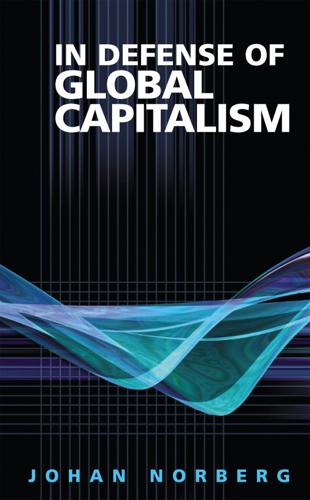
In Defense of Global Capitalism
by
Johan Norberg
Published 1 Jan 2001
With 1 percent growth, the incomes of the poor rise by 1 percent on average; with 10 percent growth, they rise, on average, by 10 percent. Not always and not every-where—there are exceptions and variations—but on average. This finding tallies with a long line of other surveys, whereas studies suggesting the contrary are very hard to find.9 Thus, growth is the best cure for poverty. Some economists have spoken of a ‘‘trickle-down’’ effect, meaning that some get rich first, after which parts of this wealth trickle down to the poor as the rich spend and invest. This description may evoke the image of the poor man getting the crumbs that fall from the rich man’s table, but this is a completely mistaken picture of the true effect of growth.

The New Silk Roads: The Present and Future of the World
by
Peter Frankopan
Published 14 Jun 2018
For this reason, export bans of donkeys to China have been introduced in Niger, Burkina Faso and elsewhere in Africa.31 One effect of the rise of the Silk Roads has been the emergence of a black market in donkey hides.32 Linking the trade in donkeys and the difficulties of first-time buyers in acquiring property in London may not seem an obvious step to make. Yet the amount of money that has been poured into Central London real estate has been a factor in driving prices up to the point of unaffordability. The surge of foreign capital between 1999 and 2014 played a role in increasing the prices of expensive homes, as well as producing a ‘trickle-down’ effect on less expensive properties. According to the workings of one scholar, prices would have been 19 per cent lower in the absence of the foreign investment that poured into the city in that period.33 A substantial amount of that came from Russia. Between 2007 and 2014, almost 10 per cent of all money spent on property in London was Russian – with that figure rising to more than 20 per cent on homes worth more than £10m.34 Inflows of capital into overseas residential property markets from China have also been soaring, with Chinese citizens buying more than $50bn of homes abroad in 2016 and $40bn the following year.35 This does not include capital that accounted for a third of all investment in London commercial real estate in 2017.36 It is a similar story elsewhere.
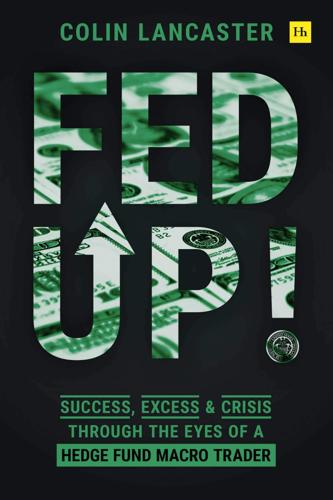
Fed Up!: Success, Excess and Crisis Through the Eyes of a Hedge Fund Macro Trader
by
Colin Lancaster
Published 3 May 2021
They buy the million-dollar Rolls-Royce. They give the wife the Harrods black card, the mistress too. Watch them all go crazy. Just walk inside Harrods and watch it happen, people using cash to buy Kelly Birken bags and truckloads of Chanel. But at least they’re spending. At least there’s a trickle-down effect. Believe it or not, this is more effective than QE. By the time we get back to the house, the dog is in Caroline’s arms. My driver’s waiting outside the mews to drive Caroline to pick up Elizabeth at school. I put away the groceries. I find it cathartic to remove the coffee pods from their packaging and place them in neat stacks inside the pantry, the same way I color-code my shirts in my closet
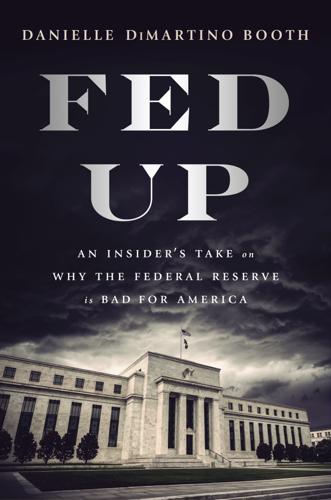
Fed Up: An Insider's Take on Why the Federal Reserve Is Bad for America
by
Danielle Dimartino Booth
Published 14 Feb 2017
But inside the Fed, they were viewed as absolutely necessary to prevent massive unemployment. The banking system was like the nation’s power grid. The Fed had to keep the lights on. Before the crisis, I viewed blood on the Street simply as damage done to my former peers and their families. But the catastrophe highlighted in rude form a perverse sort of trickle-down economics. As bad as things ever get for those on Wall Street, the damage that trickles down to Main Street is always exponentially worse. CHAPTER 14 Breaching the Zero Bound FED STATEMENT WORD COUNT: 485 EFFECTIVE FED FUNDS RATE: 0.16% 10-YR TREASURY RATE: 1.62% FED BANKS TOTAL ASSETS: $2,863.55B DATE: 6/1/2012 The U.S. government has a technology, called a printing press (or today, its electronic equivalent), that allows it to produce as many U.S. dollars as it wishes at no cost.
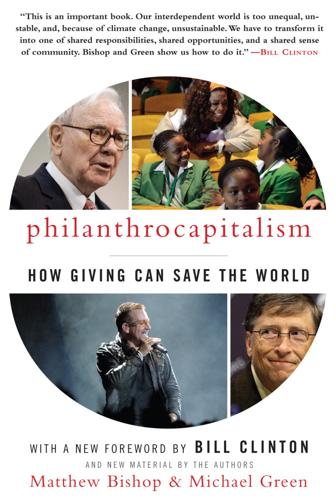
Philanthrocapitalism
by
Matthew Bishop
,
Michael Green
and
Bill Clinton
Published 29 Sep 2008
This view—though probably not his enthusiasm for philanthropy—derived from his social Darwinism. Carnegie was heavily influenced by the English thinker Herbert Spencer, who coined the phrase “survival of the fittest,” and he believed that inequality was the unavoidable price of the rapid economic growth that benefited everyone. Today, Carnegie would be called a believer in trickle-down economics. As he argued, it is “much better this great irregularity than universal squalor.” Carnegie saw philanthropy as an answer to the social problems created by a spurt in wealth creation, but he also regarded that boom in wealth as an unambiguous blessing. Popular political alternatives to capitalism such as socialism or anarchy, he thought, would be “disastrous” for everyone, “attacking the foundation upon which civilization itself rests.”
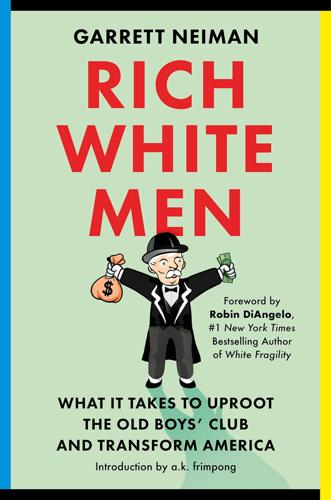
Rich White Men: What It Takes to Uproot the Old Boys' Club and Transform America
by
Garrett Neiman
Published 19 Jun 2023
It seems to be a well-kept secret that high marginal tax rates are not only part of America’s recent history but also active during the decades when America built its middle class and cemented its status as a superpower. From 1944 to 1963, the highest marginal tax rate for individuals exceeded 90 percent. While the top bracket was lowered in the 1960s, it was still pegged at 70 percent for two decades, until Reagan slashed it to 50 percent in 1982 and 28 percent in 1988. Reagan’s trickle-down economics has been the law of the land ever since, regardless of whether Republicans or Democrats control the executive branch: since 1988, the top bracket has hovered between 28 percent and 43 percent.4 Currently it stands at 37 percent.5 No one can say for certain that economic growth rates would have been higher if Reagan cut taxes.
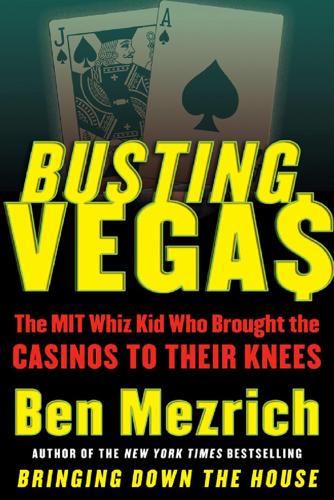
Busting Vegas: The MIT Whiz Kid Who Brought the Casinos to Their Knees
by
Ben Mezrich
Published 26 Sep 2005
Rich white men and women dined on lobster and margaritas, while the natives scraped by, hoping for a little bit of the old trickle-down. It didn’t help that the island was bolstered, primarily, by a casino economy. Aside from Vegas, the one glaring aberration to the form, “casino economies” usually worked out pretty good for the casinos, and not so good for the local economy. The trickle-down theory didn’t really apply to slot machines and blackjack felts. Semyon smiled inwardly as Victor gunned the Jeep’s engine, speeding their way toward the pastel town. At the very least, the MIT crew would be striking a little blow for the common man. If the drive from the airport had been lacking in postcard moments, the short boat ride to the hotel resort more than made up the difference.

The Winner-Take-All Society: Why the Few at the Top Get So Much More Than the Rest of Us
by
Robert H. Frank, Philip J. Cook
Published 2 May 2011
Yet the quintessential conservative policy prescription of this era-tax cuts for middle- and upper-income peo ple-is no more likely to cure these problems than monetary contrac tion was likely to cure the Great Depression. Advocates of tax cuts sometimes concede their negative impact on inequality and budget deficits, but they see these as costs worth bearing in order to stimu late economic growth. 22 The Winner-Toke-All Society Our claim is that this trickle-down theory simply does not apply in economies pervaded by winner-take-all markets. TIlls is a good thing, too, for it means that the very same policies that promote both fiscal integrity and equality are also likely to spur economic growth. The time-honored trade-off between equity and efficiency is far less ago nizing than it appears. 2 How Wmner-Take-All Markets Arise Each spring in northern California, contestants gather for the Cala veras County Jumping Frog Competition.
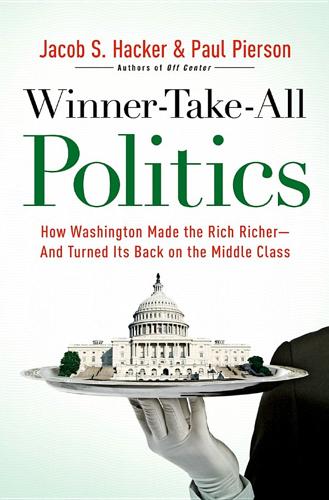
Winner-Take-All Politics: How Washington Made the Rich Richer-And Turned Its Back on the Middle Class
by
Paul Pierson
and
Jacob S. Hacker
Published 14 Sep 2010
Indeed, in this alternative scenario, there is reason to suspect that the dinghies are staying put in part because the yachts are rising—that the rich are closing the locks behind them to capture resources that would otherwise have enhanced the living standards of everyone else. So which of these scenarios is correct—trickle-down or trickle-up? The evidence is not completely consistent, and there is room for debate at the margins. But it’s increasingly clear that trickle-down economics is not working as its proponents promise. Trickle-up economics, by contrast, seems to be working all too well. Bringing In Government Taxes and Benefits To see trickle-up in action, we need a source of evidence slightly different from that provided by Piketty and Saez. As mentioned, Piketty and Saez look at tax records, so the family incomes they report basically add up the private sources of income that people list on their tax forms: wages, salaries, investment income, gifts, and so on.
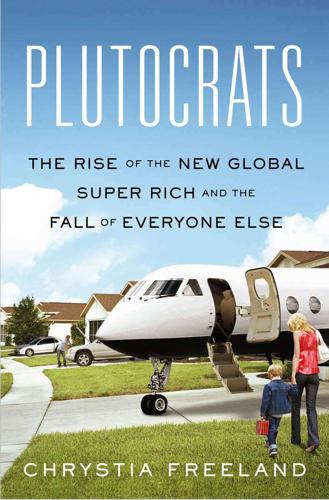
Plutocrats: The Rise of the New Global Super-Rich and the Fall of Everyone Else
by
Chrystia Freeland
Published 11 Oct 2012
The great postwar expansion was also the period of what economists have dubbed the Great Compression, when inequality shrank and most Americans came to think of themselves as middle class. This was the era when, in the words of Harvard economist Larry Katz, “Americans grew together.” That seemed to be the natural shape of industrial capitalism. Even the Reagan Revolution rode on the coattails of this paradigm—trickle-down economics, after all, emphasizes the trickle. But in the late 1970s, things started to change. The income of the middle class started to stagnate and those at the top began to pull away from everyone else. This shift was most pronounced in the United States, but by the twenty-first century, surging income inequality had become a worldwide phenomenon, visible in most of the developed Western economies as well as in the rising emerging markets
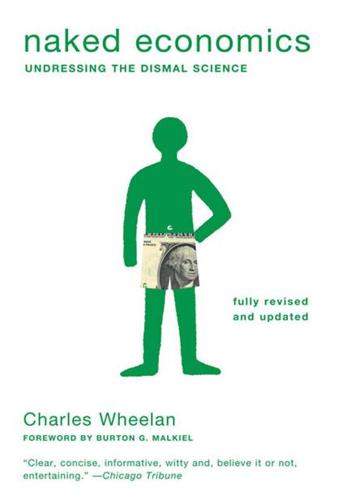
Naked Economics: Undressing the Dismal Science (Fully Revised and Updated)
by
Charles Wheelan
Published 18 Apr 2010
Never mind that one child in three dies before the age of five and life expectancy is a shocking forty-two years.7 These are not countries in which the market economy has failed; they are countries in which the government has failed to develop and sustain the institutions necessary to support a market economy. A report issued by the United Nations Development Program placed much of the blame for world poverty on bad government. Without good governance, reliance on trickle-down economic development and a host of other strategies will not work, the report concluded.8 The reality is that nobody ever likes the umpire, but you can’t play the World Series without one. So what are the rules for a functional market economy? First, the government defines and protects property rights.
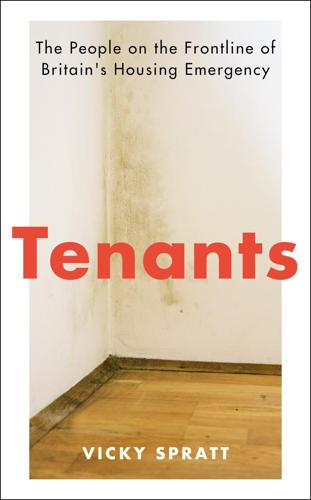
Tenants: The People on the Frontline of Britain's Housing Emergency
by
Vicky Spratt
Published 18 May 2022
There is an obvious point which still needs to be made: building expensive new homes in an inflated market doesn’t lower the price of other housing if wealthy people can still overconsume by buying holiday lets and second homes. What Alastair Harper, Head of Public Affairs at Shelter, calls the ‘trickle-down housing’ approach of the 2010s and 2020s has failed, and new supply is not enough to fix the housing crisis. This is similar to the theory of trickle-down economics – the idea that a free market with minimal regulation will self-regulate and that wealth will somehow trickle down to everyone in an economy. ‘The housing policy that dominated Westminster between 2010 and 2020 was underpinned by an erroneous belief that if enough homes of any sort were built this would magically somehow create housing for the most vulnerable people,’ Harper told me in 2022.
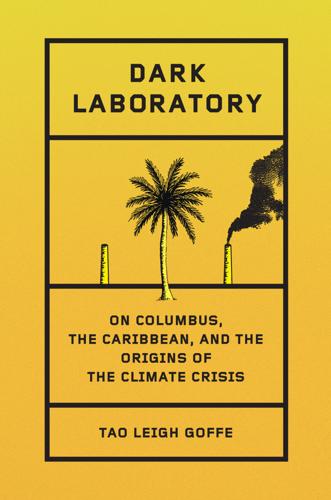
Dark Laboratory: On Columbus, the Caribbean, and the Origins of the Climate Crisis
by
Tao Leigh. Goffe
Published 14 Mar 2025
Multiple global systems of commerce existed before modern capitalism, and for a sustainable future, we will need a new, reimagined order of commerce. Race existed before capitalism, and scholars look to the medieval period for its origins, but capitalism became refined as a colonial sorting tool only after 1492. Modern capitalism’s origin depended on the trading of humans as chattel. Contrary to the philosophy of trickle-down economics, the global economic system of capitalism impoverishes us all. The true cost has been the natural environment, of which we are a part. Capitalism has impoverished our imaginations by discrediting the traditions of the global majority. It is insistent and seductive and convinces us that there can be no other system of commerce, trade, or exchange beyond itself.

The Pirates of Somalia: Inside Their Hidden World
by
Jay Bahadur
Published 18 Jul 2011
The view that outside women were somehow tainted—which seemed to be based solely on raw clan prejudice—was shared by many of Garowe’s leading citizens; at the beginning of Farole’s anti-piracy campaign, one cleric strongly warned his Friday congregation against the spread of HIV/AIDS in the community, as “prostitutes from everywhere” had been drawn to Puntland by the pirates’ money.4 Piracy, nonetheless, represented a massive injection of foreign exchange into the Puntland economy, and it was hard to imagine that there had been no positive trickle-down effects. Fod’Adde shook his head vigorously. “That money is haram [religiously forbidden],” he said. “As Muslims, we believe that money earned in that manner can never do any good … not for the economy or anything else. The moment they get it, they waste it on women, drugs, khat … haram money never stays in one’s pocket for long.”
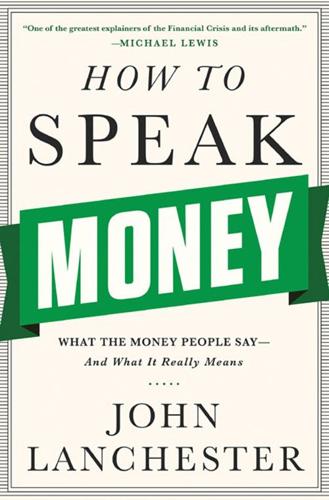
How to Speak Money: What the Money People Say--And What It Really Means
by
John Lanchester
Published 5 Oct 2014
Policies that target the supply side make it easier to make things and make money, and this very often involves a lowering of taxes. For this reason, “supply-side” is code for “rich people”; thus “supply-side economics” in practice means “rich-people economics,” because the policies involved—lowering taxes and cutting regulation—are always popular with the rich. One of the ideas behind supply-side economics is the “trickle-down effect,” in which the rich get tax breaks and spend money on services provided by people with less money, who then spend money on services provided by people with even less money, and so on, as the money “trickles down” through the economy and everyone benefits. If that was going to work, you’d think that it would have kicked in by now.

The Trouble With Billionaires
by
Linda McQuaig
Published 1 May 2013
After all, if you aggressively roll back state intervention aimed at protecting workers and at the same time dramatically reduce the taxes of the rich, it’s reasonable to expect that you’ll end up with a top-heavy society. On the other hand, there was always the possibility that things would turn out differently, that the trickle-down effect would, as promised, unleash a rising tide that would lift all boats. But it’s now a good thirty years since the neoliberal experiment was launched in the early 1980s. We’ve since seen that, while the tide did rise, it certainly didn’t lift all boats. Vast numbers became submerged, sank, or ended up battered on the rocks, while a flotilla of diamond-studded yachts, appearing out of nowhere, sailed on by out to sea.
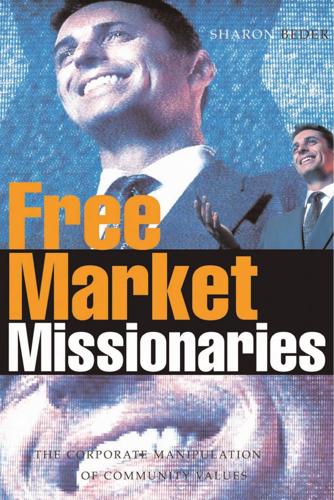
Free Market Missionaries: The Corporate Manipulation of Community Values
by
Sharon Beder
Published 30 Sep 2006
Therefore less tax was collected and, because government spending was not reduced accordingly, budget deficits increased with a tripling of the national debt.37 Reagan’s budget director, David Stockman, later told the Atlantic Monthly that the 1981 tax cut ‘was always a Trojan horse to bring down the top [tax] rate’ for the wealthy. Supply-side theory was just a reformulated version of ‘trickle down’ theory that if the rich are richer they will invest more and the economy will grow, 102 FREE MARKET MISSIONARIES and the extra wealth created will eventually ‘trickle down’ to the poor: ‘if one feeds the horse enough oats, some will pass through to the road for the sparrows’.38 However, the reality was that corporations did not spend their tax savings on jobcreating investments.

The Future of Money
by
Bernard Lietaer
Published 28 Apr 2013
For instance, it is unlikely that any of Katherine's friends would be picked up by these statistics. Here too the graph illustrates really a minimum level of the problem at hand. The most striking aspect of these statistics is the dramatic increase of homeless children in the lowest age brackets (less than six years old). 'Trickle down theory' or 'hoping for better economic times' is clearly not addressing the problem. In parallel, the number of families getting federal housing help dropped from 400,000 in the 1970s to 40,000 in the Reagan years (mid 1980s) to zero after the National Housing Act was passed in September 1996. Having a full-time job at minimum wage does not provide someone a home anywhere in America.

Don't Be Evil: How Big Tech Betrayed Its Founding Principles--And All of US
by
Rana Foroohar
Published 5 Nov 2019
Schmidt informed Varian that the company had an auction model that “might make a little money” and asked if he would come and help the company perfect it.38 Varian, who’d been dean of the Berkeley School of Information, was one of the top economists studying data markets at the time. He had cowritten an influential book entitled Information Rules: A Strategic Guide to the Network Economy, and would eventually have a rule named after himself—a sort of trickle-down theory for the digital age. The Varian rule posited, incorrectly, that everything rich people had today, the middle classes and eventually the working classes would have tomorrow, thanks to the price-crunching effects of technology. (Big Tech critic Evgeny Morozov later rephrased it in perhaps a more factually accurate way: “Luxury is already here, it’s just not very evenly distributed.”)

Women Leaders at Work: Untold Tales of Women Achieving Their Ambitions
by
Elizabeth Ghaffari
Published 5 Dec 2011
I ended up studying under Stuart for quite a while. I also studied the AmeriCorps program, which President Clinton had just implemented. Students could learn economics either in the classroom or by working in an inner-city system and get credit for either experience. You could learn about trickle-down economics in the classroom or you could go live and work in the inner city for a semester and realize that the economic cycle doesn’t really reach that far down to inner-city folks at the bottom of the income ladder. I was interested in whether AmeriCorps might be a more effective way of educating kids than just lecturing them in the classroom.
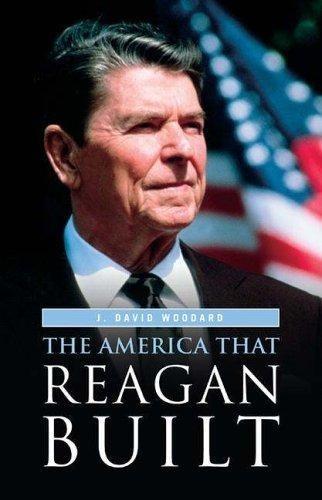
The America That Reagan Built
by
J. David Woodard
Published 15 Mar 2006
Aside from an increase in the top income-tax rate, money for the increase came from taxes on business, primarily a rise in the corporate tax rate and new limits on deductions for entertainment expenses. The plan included more Medicare payroll taxes on top earners, an expansion of the Earned Income Tax credit for low-income workers, a gas-tax increase, and an increase in the minimum tax all workers must pay. Democrats declared that they had reversed twelve years of Republican ‘‘trickle-down’’ economics and would turn the largest deficit in American 152 THE AMERICA THAT REAGAN BUILT history into the largest budget surplus in history. Republicans countered that the administration plan was a flea on the raging bull of the 1990s economy; it did not cause interest rates to fall, nor did it reduce the deficit or expand the economy.

Makers and Takers: The Rise of Finance and the Fall of American Business
by
Rana Foroohar
Published 16 May 2016
He was well on his way to becoming the first commercial banker since the Great Depression to earn more than $1 million in one year.44 He had also made powerful friends in Washington, as an adviser to the Kennedy and Nixon administrations. (A few years later, under President Ronald Reagan, Wriston would sit on the president’s Economic Policy Advisory Board and help craft some of his infamous “trickle-down” economic policies.) The success of the CD and other Wriston-led innovations was more that just a windfall for First National City, which changed its name to Citibank in 1976. It also set off an industry-wide chain reaction, as other financial institutions began searching for more and more high-yield products.
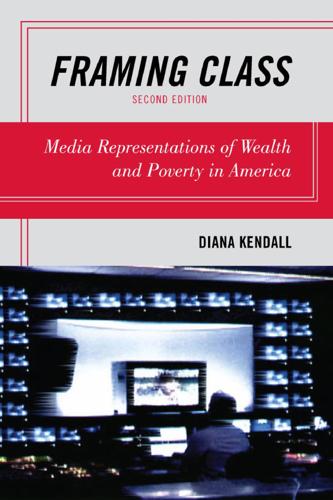
Framing Class: Media Representations of Wealth and Poverty in America
by
Diana Elizabeth Kendall
Published 27 Jul 2005
The article informed readers that the Moorheads were both employed, with a combined income of about $88,000, but still could not accumulate any substantial savings. Mr. Moorhead showed 9781442202238.print.indb 195 2/10/11 10:47 AM 196 Chapter 6 typical middle-class disbelief regarding the proposed change: “They’re trying to sell this once again as trickle-down economics. I have my doubts.”100 A photo of the Moorhead family sitting on their porch, looking how most people expect members of the middle class to look, facilitated the story’s framing. The general framing of the article focused on the greater benefit wealthy families would receive, as compared with middle-class families like the Moorheads, even though the journalist acknowledged that “President Bush’s mammoth tax plan would give something to almost everybody.”101 Another article, “Caught in the Squeeze,” stated, “Only the rich have reason to cheer” about the 2003 tax cut President Bush signed into law,102 while another bore the headline “Tax Analysis Says the Rich Still Win.”103 Media also used visual framing in the form of political cartoons to inform audiences that the rich were the primary beneficiaries of the Bush tax laws.
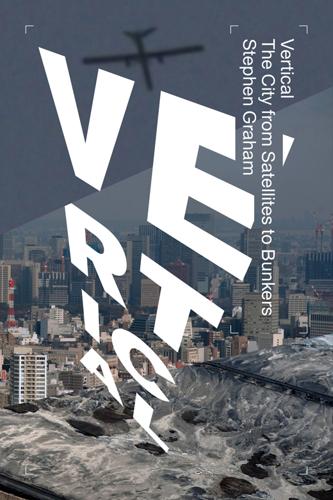
Vertical: The City From Satellites to Bunkers
by
Stephen Graham
Published 8 Nov 2016
In many cities, the result of this confluence of ideas concerning densification, ‘smart’ growth, neoliberal vertical housing and ‘global’ city planning – despite Glaeser’s rhetoric – has been profoundly regressive socially. In many ways, Glaeser’s arguments are merely the latest in a long line of ‘trickle-down’ economics that have been handed out by a stream of neoliberal urban theorists over the past four decades. Such theorists continually proffer the capitalist utopia of unleashed and unregulated global capital operating to the alleged benefit of all. In the absence of nonmarket mechanisms to create and allocate mass urban housing as an affordable living space for those who need it, however, all that remains when city planners allow tall housing towers to rise above their streetscapes are global engines of unregulated financial speculation.
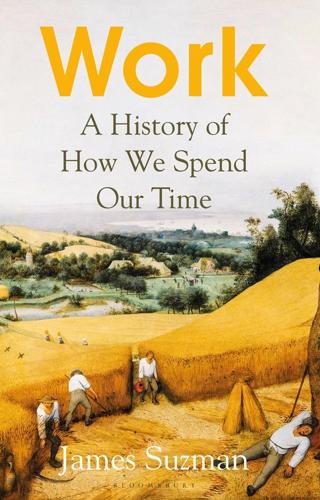
Work: A History of How We Spend Our Time
by
James Suzman
Published 2 Sep 2020
Today’s communications giant, Google, by contrast, is worth $370 billion and has only around 55,000 employees, which works out at roughly $6 million of value per employee. The process was facilitated by a series of important political developments. There was the deregulation of markets and ‘trickle-down economics’ championed by Thatcher and Reagan, as well as, later, the collapse of Communism and the embrace of oligarchy capitalism in the former Soviet Republics, and the rise of the South East Asian ‘tiger economies’ spurred by China’s embrace of state capitalism. When John Maynard Keynes plotted the course to his economic promised land, he imagined that it would be the ‘strenuous purposeful money-makers’ – the ambitious CEOs and moneymen – who would pilot us all there.

The Great Transformation: The Political and Economic Origins of Our Time
by
Karl Polanyi
Published 27 Mar 2001
Among his central theses are the ideas that self-regulating markets never work; their deficiencies, not only in their internal workings but also in their consequences (e.g., for the poor), are so great that government intervention becomes necessary; and that the pace of change is of central importance in determining these consequences. Polanyi’s analysis makes it clear that popular doctrines of trickle-down economics—that all, including the poor, benefit from growth—have little historical support. He also clarifies the interplay between ideologies and particular interests: how free market ideology was the handmaiden for new industrial interests, and how those interests used that ideology selectively, calling upon government intervention when needed to pursue their own interests.
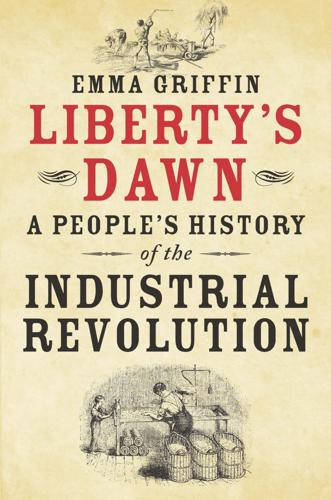
Liberty's Dawn: A People's History of the Industrial Revolution
by
Emma Griffin
Published 10 Jun 2013
But before telling the story of those passed by, we should offer a full account of the many who did benefit. My purpose has not been to substitute the bleak account of Britain’s industrial past with a rosy and cheerful account of better and happier times. Nor is my evidence offered as a historical spin on the virtue of trickle-down economics with its assertion that there is no need for political interference to direct the course of growth, its claim that markets can be left to themselves to redistribute the wealth they create. Could things have been better in early nineteenth-century Britain? Undoubtedly. Might different policies have had better outcomes for working people?

The Billionaire Raj: A Journey Through India's New Gilded Age
by
James Crabtree
Published 2 Jul 2018
In 2016, research from Credit Suisse showed that India had 178,000 dollar millionaires, just a fraction of America’s total and only a tenth as many as China.33 But over the coming decades the investment bank predicted the millionaire population would expand more quickly in India than in any other country bar China.34 At one level India’s billionaire fortunes tracked the overall economy, meaning the wealthiest prospered when India itself was doing well. This was especially true when the stock market rose, inflating the shareholdings of India’s “promoter” tycoons. Some saw this as an example of “trickle-down” economics—the flip side of an economic package that lifted hundreds of millions of people from poverty in the decades since 1991. A more sophisticated case for optimism, however, came via Caroline Freund, an American economist and former executive at the World Bank. Against those who saw billionaire wealth as a symbol of social dislocation, Freund claimed it was better understood as part of a natural process of economic advancement.

Doppelganger: A Trip Into the Mirror World
by
Naomi Klein
Published 11 Sep 2023
But the bigger obstacle may always have been the soft deniers, the rest of us who know it’s real but act like it’s not, who keep forgetting, in myriad ways, both large and small. As I noted earlier, Bannon pounds relentlessly at what he calls the Big Steal—the claim that Biden stole the 2020 election—while the Democrats call that the Big Lie. And it is a big lie, a dangerous one. But is it the Big Lie? Bigger, say, than trickle-down economics? Bigger than “tax cuts create jobs”? Bigger than infinite growth on a finite planet? Bigger than Thatcher’s double whammy of “There is no alternative” and “There is no such thing as society”? Bigger, for that matter, than Manifest Destiny, Terra Nullius, and the Doctrine of Discovery—the lies that form the basis of the United States, Canada, Australia, and every other settler colonial state?
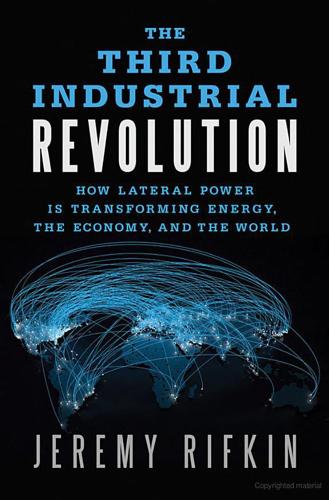
The Third Industrial Revolution: How Lateral Power Is Transforming Energy, the Economy, and the World
by
Jeremy Rifkin
Published 27 Sep 2011
Meanwhile, during the same period, the median income for non-elderly American households declined and the percentage of people living in poverty rose.17 Perhaps the most apt description of the top-down organization of economic life that characterized the First and Second Industrial Revolutions is the often-heard “trickle-down theory”—the idea that when those atop the fossil fuel–based industrial pyramid benefit, enough residual wealth will make its way down to the small businesses and workers at lower levels of the economic ladder to benefit the economy as a whole. While there is no denying that the living standards of millions of people is better at the end of the Second Industrial Revolution than at the beginning of the First Industrial Revolution, it is equally true that those on the top have benefited disproportionately from the Carbon Era, especially in the United States, where few restrictions have been put on the market and little effort made to ensure that the fruits of industrial commerce are broadly shared.

Planet Ponzi
by
Mitch Feierstein
Published 2 Feb 2012
Piketty, eds, Top Incomes over the Twentieth Century: A Contrast between Continental European and English-Speaking Countries (Oxford University Press, 2007). The tables have been updated to 2008 and made available online at g-mond.parisschoolofeconomics.eu/topincomes. The increase in the incomes of the rich has been widely noted, widely reported. Yet the appropriate political conclusion to draw is hotly contested. Trickle-down theory, for example, suggests that if the rich are left to get very rich, their efforts will benefit the poor and middling in society. That explanation, unfortunately, is not a very good one. As figure 5.2 illustrates, the poorest in society have seen the lowest income growth, a mere 11%, across the entire 27-year period since 1979.
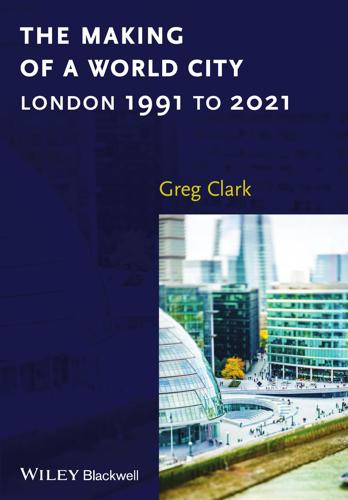
The Making of a World City: London 1991 to 2021
by
Greg Clark
Published 31 Dec 2014
The GLA’s principal agents in these processes were Transport for London (TfL) and the London Development Agency (LDA), alongside other levels of government (including boroughs which had the key role in implementation) and the private sector. In particular, the powers provided in the GLA Act enabled TfL and the LDA to acquire local land compulsorily for economic development and sustainable renewal purposes. An improved institutional architecture for regeneration coincided with a growing sense that the trickle-down effects of the Docklands’ redevelopment to adjacent areas of East London had been sporadic and unconvincing. An alternative regeneration policy emphasis surfaced, based on skills and economic competencies in the form of social capital building programmes. This new focus was informed by a growing awareness of worklessness and inequality across large patches of London.

Emergence
by
Steven Johnson
Ten years after Wright’s release of SimCity, the world now abounds with these man-made systems: online stores use them to recognize our cultural tastes; artists use them to create a new kind of adaptive cultural form; Web sites use them to regulate their online communities; marketers use them to detect demographic patterns in the general public. The video-game industry itself has exploded in size, surpassing Hollywood in terms of raw sales numbers—with many of the best-selling titles relying on the powers of digital self-organization. And with that popular success has come a subtle, but significant, trickle-down effect: we are starting to think using the conceptual tools of bottom-up systems. Just like the clock maker metaphors of the Enlightenment, or the dialectical logic of the nineteenth century, the emergent worldview belongs to this moment in time, shaping our thought habits and coloring our perception of the world.
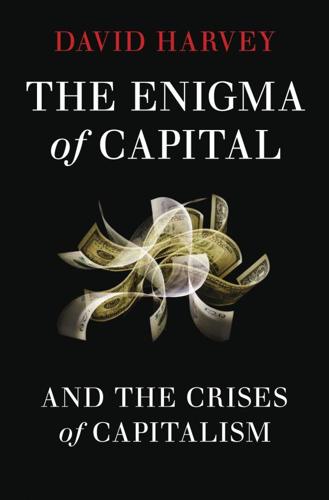
The Enigma of Capital: And the Crises of Capitalism
by
David Harvey
Published 1 Jan 2010
The third condition is that the credit moneys received will be spent on the purchase of the extra wage goods and means of production that have already been produced. The general political argument for supporting the concentration of wealth in the upper classes is that they can and do use their wealth to reinvest and so create jobs, new products, and hence new wealth that can at the end of the day potentially benefit everyone (through trickle-down effects and the like) and so create more demand. What this story line misses is that capitalists, as we earlier saw, have a choice as to what they reinvest in: they can reinvest in the expansion of production or they can use their wealth to buy up assets, such as stocks and shares, property, art objects or shares in some speculative enterprise such as a private equity company, a hedge fund or some other financial instrument from which they can realise capital gains.

The Entrepreneurial State: Debunking Public vs. Private Sector Myths
by
Mariana Mazzucato
Published 1 Jan 2011
I have attempted to demystify these assumptions and now turn to the largest myth of all: the limited role for government in producing entrepreneurship, innovation and growth. 1 The insensitivity of investment to taxes is the reason that the 1980s-style ‘supply-side’ economics had little effect on investment and hence GDP, and a large effect on income distribution (no ‘trickle-down’ effect). 2 This refers to Keynes’s provocative statement that: ‘If the Treasury were to fill old bottles with bank-notes, bury them at suitable depths in disused coal-mines which are then filled up to the surface with town rubbish, and leave it to private enterprise on well-tried principles of laissez-faire to dig the notes up again (the right to do so being obtained, of course, by tendering for leases of the note-bearing territory), there need be no more unemployment and, with the help of repercussions, the real income of the community, and its capital wealth, would probably become a good deal greater than it actually is’ (1936, 129).
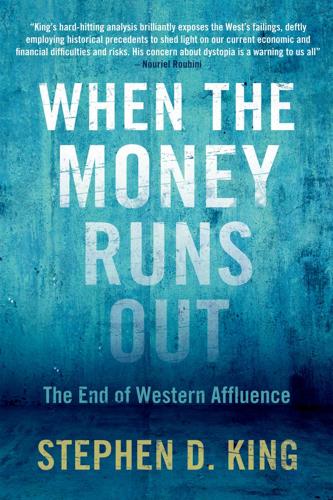
When the Money Runs Out: The End of Western Affluence
by
Stephen D. King
Published 17 Jun 2013
If government bonds are no longer to be treated with confidence, other options will come to the fore. Modern-day Vanderbilts – hailing from China, Russia and Saudi Arabia rather than the US – will buy the best properties in the most cosmopolitan parts of the Western world, forcing up London and Manhattan house prices in particular and, via a trickle-down effect, making it near enough impossible for marginal first-time buyers to gain a foot on the property ladder: major international cities will become the ghettos of the wealthy. Companies, and their bespoke technologies, will slowly fall under foreign ownership, turning the US and the UK into nations of worker bees where the profits of their endeavours head overseas.
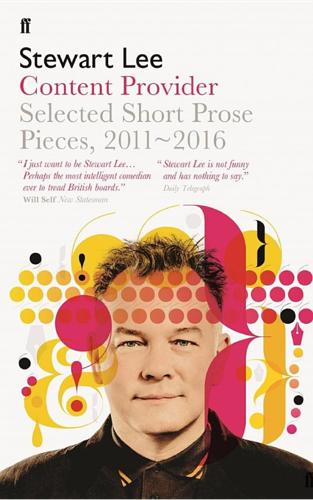
Content Provider: Selected Short Prose Pieces, 2011–2016
by
Stewart Lee
Published 1 Aug 2016
Once more, the baroness was shouted down by her coalition fellows in mock Michael Winner voices and the crowd’s attention was swiftly drawn back to the awkward impact squelches of the relentlessly bouncing dole scrounger. I heard Iain Duncan Smith invoke Jeremy Bentham and John Stuart Mill’s doctrine of utilitarianism – the notion that true morality was the achievement of the greatest possible good for the greatest possible number of people – and how this could be facilitated by the trickle-down effect of high spending by a wealthy minority whose capital needed to be encouraged to flow for the long-term good of everyone. But out of the corner of my eye, I noticed KT Tunstall and Mr Tumble crouched by a distant section of the tube, where it appeared, from Mr Tumble’s helpful mime, that the test subject had finally run out of speed and slumped comatose to rest.
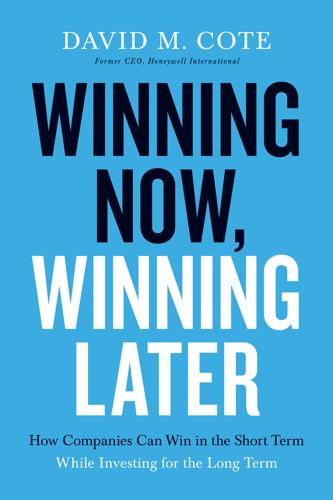
Winning Now, Winning Later
by
David M. Cote
Published 17 Apr 2020
Always challenge yourself, asking, “What if my hypotheses, assumptions, beliefs, or decisions are wrong?” If you really are right, you’ll feel even more confident about it. And if you’re wrong, you’ll get the prodding you need to push your thinking—and your business—in a new direction. If you set an example of rigor in your own thinking, you’ll see a trickle-down effect, first among your direct reports and then among employees at lower levels. Because I demanded a lot of the teams that reported to me, those leaders became used to thinking harder and preparing more for meetings. “We knew we needed to do the work at a certain level of rigor,” said Kate Adams, currently general counsel at Apple and formerly our general counsel, “because it was going to be subjected to a potentially very searching set of questions about its validity.”3 Sometimes people need a bit of prodding in order to think more broadly or deeply.
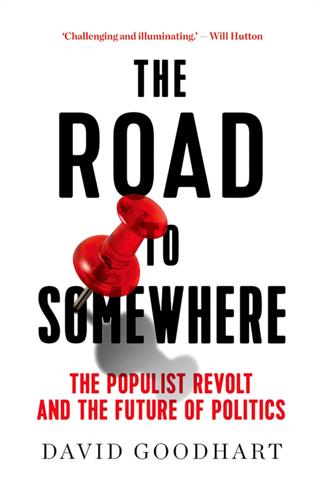
The Road to Somewhere: The Populist Revolt and the Future of Politics
by
David Goodhart
Published 7 Jan 2017
And while in the past many small groups of the intelligentsia, such as the Bloomsbury Group in 1920s London, have rejected traditional, socio-centric views in favour of individual freedom and autonomy, this kind of liberalism has remained on the fringes of society. Yet in the latter part of the twentieth century a kind of 60s ‘trickle down’ effect began to emerge, especially visible from the early 1980s. As educational qualifications became the main condition of career success, meritocratic liberalism became the dominant worldview of this educated group. Educated people tend to have liberal views on race, sexuality and gender not because of the books they have read at college, though the books may reinforce the message.

When the Iron Lady Ruled Britain
by
Robert Chesshyre
Published 15 Jan 2012
By making vast sums, the rich generated economic activity, which eventually helped everyone, therefore one was performing a public service by becoming (or, in most British cases, already being) very rich and was quite entitled to feel good about it. Those less enamoured with the theory call it ‘trickle-down’ economics, and are frequently cynical about how far the trickle reaches. Supply-siders consider that ‘trickle-downers’ suffer from a further condition – ‘the politics of envy’. The consequence of the new philosophy appeared to be the unabashed spending of money, and rewards for certain classes of people that so distorted the value system that they threatened social stability: while young nurses lived on ‘peanuts’, the City of London’s ‘Big Bang’ had propelled a not particularly productive class of young person towards six-figure salaries; while a civil engineer might earn £15,000 a year, a foreign-currency dealer, without any formal qualifications, could earn ten times that much.
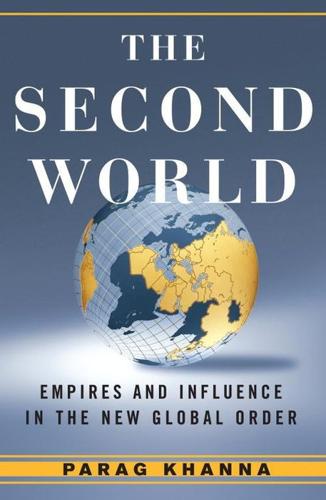
Second World: Empires and Influence in the New Global Order
by
Parag Khanna
Published 4 Mar 2008
The result was the “lost decade” of the 1980s, in which Latin America became, in the words of former Venezuelan trade minister Moisés Naím, “Atlantis—the lost continent.”10 Crisis followed crisis. To make matters worse, the IMF responded to the United States “like thunder to lightning,” forcing Latin American regimes to tighten their belts as prescribed by the “Washington Consensus” orthodoxy of rapid liberalization, an international variant of trickle-down economics.11 Over a century after the Pan-American Union effort, the heated debate over how to meet Latin Americans’ rising expectations despite unequal American trade continues in the form of a proposed Free Trade Area of the Americas (FTAA) stretching from Alaska to Tierra del Fuego. But China’s commercial presence in the Western Hemisphere is also deepening; thus, so is its strategic presence.
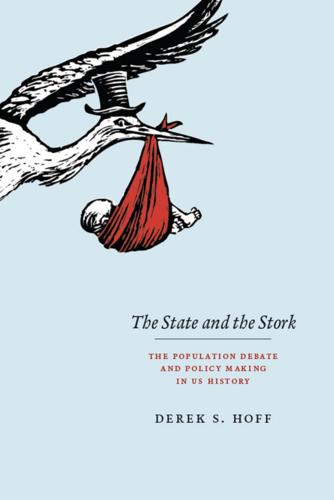
The State and the Stork: The Population Debate and Policy Making in US History
by
Derek S. Hoff
Published 30 May 2012
See Keynes-Hansen (mature-economy) doctrine stationary state, 3, 27, 51, 131, 175, 233–34, 282n107 Station for Experimental Evolution, Cold Spring Harbor, Long Island, 59 Steindl, Josef, Maturity and Stagnation in American Capitalism, 121–22 Stevenson, Adlai, 147 Stiles, Ezra, 17 Stoll, Steven, 25; Great Delusion, 32 structural unemployment, 137–41, 304n46 sub-Saharan Africa, 246 subsistence homestead communities, 100, 103 suburbs: attacks on conformity and antiintellectualism of, 130; growth of, 335n51; subsidized flight to, during New Deal, 101 Sumner, William Graham, 50, 263n36 Sunbelt, 224 supply-side economics, 221, 225, 231, 232, 240 sustainability, ecological and environmental, 175, 193, 222, 234 Sweezy, Alan, 232; “Population Growth and Investment Opportunity,” 283n118 Sweezy, Paul, 95 Sydenstricker, Edgar, 65 Taussig, Frank, 51, 52, 263n43 tax credits for children, 6 technological innovation, 136; negative effects on agriculture, 139; and population, 48–49, 211, 261n10; viewed as more important cause of environmental damage than population growth, 189–91 teenage pregnancy, 202 376 Teller, Edward, 115–16 Terborgh, George, The Bogey of Economic Maturity, 94 Texas, annexation of, 38, 40 Thomas, Robert, 337n71 Thompson, Warren, 63–64, 98, 108; Population Problems, 94 three-fifths compromise, 34 “throughput” of an economy, 176 Thurow, Lester, 183, 233 Tobin, James, 142 Tocqueville, Alexis de, 43 total dependency ratio, 237 Toward Balanced Growth: Quantify with Quality, National Goals Research Staff, 205 trade embargo of 1807, 24 trickle-down economics, 86 “Trojan Horse of Population Growth, The” 143 Truman, Harry, 159; “Point Four” program, 109–10, 195; President’s Materials Policy Commission, 114 Tucker, George, 36, 37 Tugwell, Rexford, 100, 101, 287n163, 287n165; The Battle for Democracy, 97; “No More Frontiers,” 102; and stagnation theory, 283n129 Turner, Frederick Jackson, frontier thesis, 8, 44–45, 50, 102 Tydings, Joseph, 306n69, 307n85, 311n139; and Coalition for a National Population Policy, 212; concern about dependency ratio, 156; “Defusing the Population Explosion,” 155–56; and immigration reform, 163; promotion of aggressive population policies, 199–200, 201; promotion of family planning programs, 145, 149, 151, 152, 153, 154; and qualityof-life critique of population growth, 156; and right to birth control, 310n121 Tyler, John, 40 Tyler-May, Elaine, Homeward Bound, 112 Udall, Morris, 200, 331n16 Udall, Stuart, 169, 185–86; The Quiet Crisis, 169 underconsumption: attributed to income inequality, 85; and mature-economy thesis, 96–97 index unemployment, 1960s, 137–41; aggregatedemand thesis, 139, 142; automation thesis, 139, 140, 154, 155; in depressed areas, 139; macroeconomic explanations for, 138, 142; and rising percentage of women working outside the home, 138; and rising youth unemployment, 138, 139, 140–41, 302n25; structuralists’ promotion of youth employment policies, 139; systemic or structural explanations for, 138, 142 Unger, Irwin, 141 United Kingdom, fertility rate, 2 United Nations: International Population Conference, Mexico City, 1984, 245; President Johnson’s comment at ceremonies marking twentieth anniversary of, 147; Scientific Conference on the Conservation and Utilization of Resources, 109–10; United Nations Fund for Population Activities, 308n92 United States: as demographic outlier, 9; percent of global population growth, 1; population projections for 2050 and 2100, 2 urban crisis, 155, 156, 157; and growth policy debate, 202, 203 urban poverty, racialized nature of, 150 urban sprawl, 203 USAID, 147–48, 195, 227 US Constitution, Contract Clause, 96 US Department of Agriculture, and engineering of population movement, 69–70 US Department of Labor, Employment and Natural Resources (MacKaye), 69 US foreign aid: dependent upon progress on population programs, 307n84; population issue in discourse, 109–10, 147, 195 Vietnam, fertility rate, 2 Vogt, William, Road to Survival, 107, 128, 288n11 wages: challenges to classical doctrine of, 53, 54; effects of immigration on, 57, 60; Malthusian-Ricardian theories of, 2, 25, 27, 34, 35, 36, 37, 51, 52, 53; population dispersal and, 41 Waldmann, Ray, 213 Walker, Amasa, 54 index Walker, Francis, 53–54, 60, 264n60 Wallace, Alfred Russel, 68 Wallace, Henry A., 100 Wallich, Henry, 340n99 Wall Street Journal, 210 Walras, Léon, 48, 261n18 Walter, Francis, 159 Ware, Nathaniel, 30 Warner, Amos, 57 War of 1812, 24 War on Poverty, 135, 137, 141, 149, 304n43 Water Pollution Control Act, 167 Watts Uprising, Los Angeles, 202 Weber, James, Grow or Die!
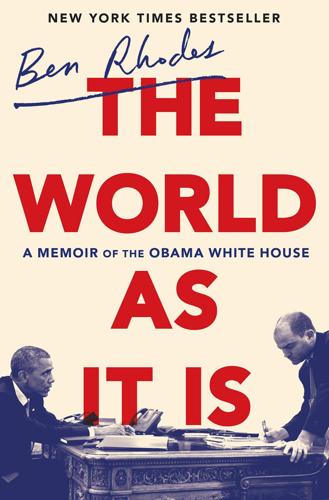
The World as It Is: A Memoir of the Obama White House
by
Ben Rhodes
Published 4 Jun 2018
Now one of the architects of that policy—Larry Summers—was speaking at length about what we needed to say to calm the markets. At the end of the call, Obama asked me to take the policies from the March speech and drop them into a new speech that he would give the following day in Colorado. “Make it the final verdict on a certain approach,” he said, referring to the mix of trickle-down economics and deregulation that had dominated American political discourse since Reagan. “But make sure you run the language by these guys first.” It was a good time to start smoking again. I had quit for most of my twenties, but as the pressure of the campaign built, I found myself standing in the plaza outside our office building in an ever-growing circle of people falling back on bad habits.
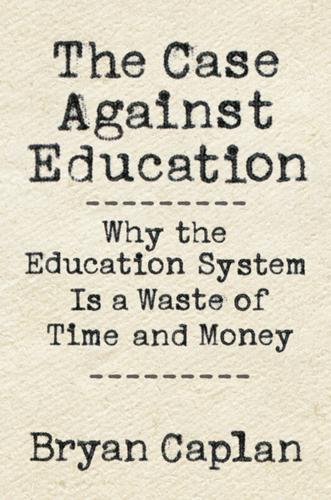
The Case Against Education: Why the Education System Is a Waste of Time and Money
by
Bryan Caplan
Published 16 Jan 2018
Yet most folks eventually marry—and marriage drastically shifts education’s return. The main reason is timeless: like marries like. When your education rises, you shouldn’t merely foresee yourself with a higher salary. You should foresee a spouse with a higher salary. This is good news for strong students, because marriage is one of the purest forms of trickle-down economics. A lot of your spouse’s extra money becomes your extra money by financial osmosis. Figure 5.12: Men and Women’s Selfish Degree Returns Source: Figure 5.7 and text. Conscious on-campus gold-digging may be rare, but extra schooling still improves your odds of striking gold. Life could hardly be otherwise.

The Color of Money: Black Banks and the Racial Wealth Gap
by
Mehrsa Baradaran
Published 14 Sep 2017
The way to deal with poverty in the black community was not government aid, but tax cuts. When President Reagan spoke to minority business owners in 1987, he explained that tax cuts “created opportunity for those who had before been economi cally disenfranchised: the poor and minorities."37 In line with his “trickle-down" economics theories, Reagan equated his cost-cutting “Economic Bill of Rights" with fighting for civil rights. “Let’s complete the civil rights movement by writing a guarantee of the American dream into the Constitution, a guarantee that America will always be, for our children and our children’s children, the land of opportunity."38 While cutting antipoverty programs, Reagan enthusiastically supported black business.

Life Inc.: How the World Became a Corporation and How to Take It Back
by
Douglas Rushkoff
Published 1 Jun 2009
When one teacher—a friend of mine—challenged a student over work that used words and sentences the student didn’t himself understand under questioning, the parents (good funders of the school) had the headmaster suspend the teacher from his job for a semester. 181 Alan Greenspan, a disciple Leo Hindery, Jr., “Why Obama, Congress Must Curb CEO Pay,” BusinessWeek, November 5, 2008. 181 Adjusted for inflation, the average worker’s Ben Stein, “In the Boardroom, Every Back Gets Scratched,” The New York Times, April 6, 2008, Business section. 181 The top tenth of 1 percent Robert H. Frank, “In the Real World of Work and Wages, Trickle Down Theories Don’t Hold Up,” The New York Times, April 12, 2007, Business section. 181 The number of “severely poor Americans” “Report: In U.S., Record Numbers Are Plunged Into Poverty,” USA Today, February 26, 2007, http://www.usatoday.com/news/nation/2007-02-25-us-poverty_x.htm (accessed March 1, 2007). 181 Meanwhile, for the very first time Greg Ip and John D.
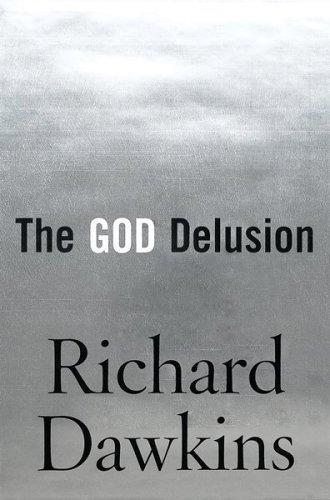
The God Delusion
by
Richard Dawkins
Published 12 Sep 2006
I hope this book might have made you laugh – though not as much as you made me. That scientifically savvy philosopher Daniel Dennett pointed out that evolution counters one of the oldest ideas we have: ‘the idea that it takes a big fancy smart thing to make a lesser thing. I call that the trickle-down theory of creation. You’ll never see a spear making a spear maker. You’ll never see a horse shoe making a blacksmith. You’ll never see a pot making a potter.’60 Darwin’s discovery of a workable process that does that very counter-intuitive thing is what makes his contribution to human thought so revolutionary, and so loaded with the power to raise consciousness.
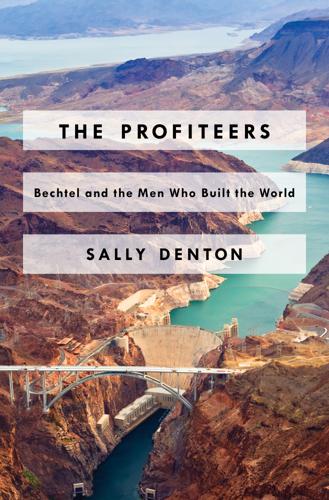
The Profiteers
by
Sally Denton
Buy half the reserves of Aramco in Saudi Arabia. Then when [the US] took over, Aramco could say, ‘Don’t talk to me, talk to Uncle Sam.’ ” The economic theories of the brash and arrogant Connally were described by a Texas magazine as “aimed mainly at befriending the top economic layer—sort of a warmed-over Trickle-Down theory with the government holding the spout.” While the Bechtels found a natural affinity for Connally’s domestic agenda, they had an even stronger passion for his Middle East position—for which he had been dubbed the “candidate of the oil interests.” In a contentious speech at the National Press Club in Washington on October 13, 1979, Connally called for Israel’s withdrawal to its pre-1967 borders, to abandon the West Bank, the Gaza Strip, and relinquish its exclusivity in Jerusalem.
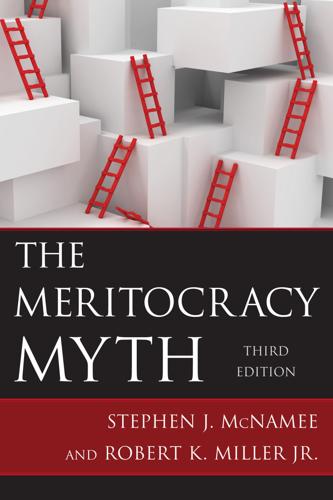
The Meritocracy Myth
by
Stephen J. McNamee
Published 17 Jul 2013
Tax on wealth could also be based on its possession (assets tax), its use (consumption tax), or its exchange (transfer tax) (cf. Wolff 2002). Those who oppose such taxes often label them “confiscatory” and argue that they discourage work, savings, and investment. Supply-side advocates argue that taxing wealth in any form discourages investments that would otherwise create more jobs and a “trickle-down” effect of wealth creation. They contend that excessive taxation of wealth encourages the wealthy to flee to other countries that tax wealth less, thereby depriving American society of investment and spending that the wealthy would otherwise provide. Supply-siders argue that the sum of individual decisions with regard to the stewardship of resources is collectively more productive, efficient, and efficacious than collective decisions that emerge from the political process.

Zero to Sold: How to Start, Run, and Sell a Bootstrapped Business
by
Arvid Kahl
Published 24 Jun 2020
For example, you may not be affected by a temporary closure of bars and restaurants directly. Still, if you're running a business that sells to these establishments or those they rely on, you'll see some changes in the future. For SaaS businesses like OpenTable, this happened very quickly, as they saw bookings going down 50% and more within days. This development had a trickle-down effect into many adjacent industries, in the same sector and beyond. Online Sports Betting Platforms, a kind of business that did well in prior recessions, found themselves in a tight spot at the beginning of the pandemic. With most sports leagues suspended or canceled, their revenue streams, which usually picked up when the economy tanked, started to dwindle.

The Divide: A Brief Guide to Global Inequality and Its Solutions
by
Jason Hickel
Published 3 May 2017
According to US Census data, the top 5 per cent of American households have seen their incomes increase by 72.7 per cent since 1980, while median household incomes have stagnated and the bottom quintile have seen their incomes fall by 7.4 per cent.57 In other words, the neoliberal counter-revolution restored levels of inequality that had not been seen since before the Great Depression. So much for the trickle-down effect. As it turns out, making rich people richer doesn’t make the rest of us richer.58 Nor does it stimulate economic growth, which is the sole justification for supply-side economics. In fact, quite the opposite is true: since the onset of neoliberalism, the rich countries of the OECD have seen per capita growth rates fall from an average of 3.5 per cent during the 1960s and 1970s down to an average of 2 per cent during the 1980s and 1990s.59 As these numbers show, neoliberalism has failed as a tool for economic development – but it has worked brilliantly as a tool for restoring power to the wealthy elite
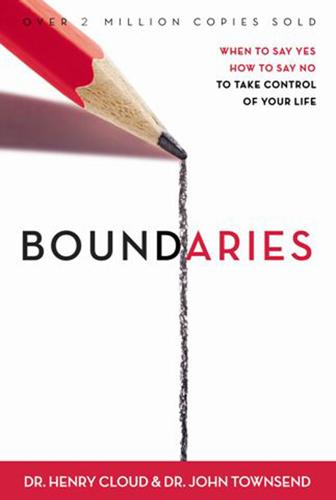
Boundaries: When to Say Yes, How to Say No to Take Control of Your Life
by
Henry Cloud
Published 1 Apr 1992
Then when he has contact with them by phone or in person, he becomes depressed, argumentative, self-critical, perfectionistic, angry, combative, or withdrawn. It is as though he “catches” something from his family of origin and passes it on to his immediate family. His family of origin has the power to affect his new family in a trickle-down effect. One sure sign of boundary problems is when your relationship with one person has the power to affect your relationships with others. You are giving one person way too much power in your life. I remember one young woman who made steady gains in therapy until she talked to her mother, when she would withdraw for three weeks.
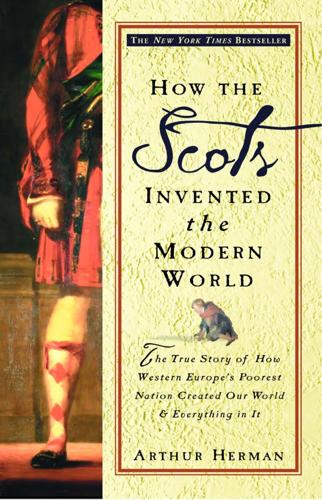
How the Scots Invented the Modern World: The True Story of How Western Europe's Poorest Nation Created Our World and Everything in It
by
Arthur Herman
Published 27 Nov 2001
Service industries and consumer goods, or what the more old-fashioned still called luxuries, were now a fixed part of the Glasgow scene, as newly acquired wealth poured into desirable new channels like a river into a multitude of streams and tributaries. “Whenever capital predominates,” Adam Smith noted, “industry prevails, which increases the real wealth and revenue of all its inhabitants.” This “trickle down” economics turned overseas tobacco money into local jobs, just as the smart tobacco dynasties diversified their investments into the wine and sugar trade, marine insurance, linen and cotton textiles, and iron foundries. Mercantile Glasgow laid the foundations for industrial Glasgow in the nineteenth century.

WTF?: What's the Future and Why It's Up to Us
by
Tim O'Reilly
Published 9 Oct 2017
As former chair of the White House Council of Economic Advisers Laura Tyson impressed on me over dinner one night, though, the bulk of jobs are provided by small businesses, not by large public companies. She was warning me not to overstate the role of financial markets in economic malaise, but her comments instead reminded me that the true effect of “trickle-down economics” is the way that the ideal of maximizing profit, not shared prosperity, has metastasized from financial markets and so shapes our entire society. Mistaking what is good for financial markets for what is good for jobs, wages, and the lives of actual people is a fatal flaw in so many of the economic choices business leaders, policy makers, and politicians make.
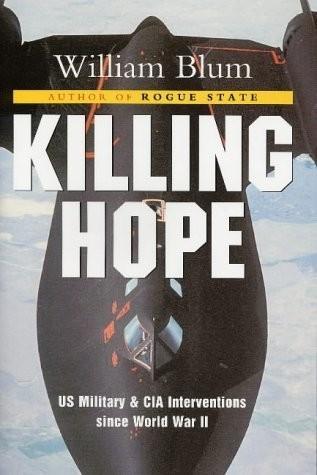
Killing Hope: Us Military and Cia Interventions Since World War 2
by
William Blum
Published 15 Jan 2003
The world has been made safe for the transnational corporation.33 Will this mean any better life for the multitudes than the Cold War brought? Any more regard for the common folk than there's been since they fell off the cosmic agenda centuries ago? "By all means," says Capital, offering another warmed-up version of the "trickle down" theory, the principle that the poor, who must subsist on table scraps dropped by the rich, can best be served by giving the rich bigger meals. The boys of Capital, they also chortle in their martinis about the death of socialism. The word has been banned from polite conversation. And they hope that no one will notice that every socialist experiment of any significance in the twentieth century—without exception—has either been crushed, overthrown, or invaded, or corrupted, perverted, subverted, or destabilized, or otherwise had life made impossible for it, by the United States.

From Bacteria to Bach and Back: The Evolution of Minds
by
Daniel C. Dennett
Published 7 Feb 2017
All things in the universe, from the most exalted (“man”) to the most humble (the ant, the pebble, the raindrop) were the creations of a still more exalted thing, God, an omnipotent and omniscient intelligent creator—who bore a striking resemblance to the second-most exalted thing. Call this the trickle-down theory of creation. Darwin replaced it with the bubble-up theory of creation. Robert MacKenzie Beverley,12 one of Darwin’s nineteenth-century critics, put it vividly: In the theory with which we have to deal, Absolute Ignorance is the artificer; so that we may enunciate as the fundamental principle of the whole system, that, IN ORDER TO MAKE A PERFECT AND BEAUTIFUL MACHINE, IT IS NOT REQUISITE TO KNOW HOW TO MAKE IT.
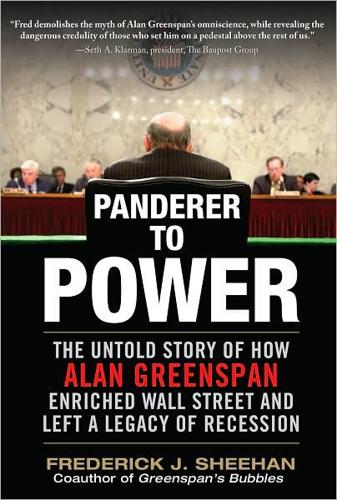
Panderer to Power
by
Frederick Sheehan
Published 21 Oct 2009
The staffing never stopped—chauffeurs, butlers, maids, Scottish nannies, sommeliers, decorators, lighting-control specialists, stonemasons, carpenters, marble cutters, personal trainers, Zen masters, and fashion assistants. Seven-figure gardening bills require estate superintendents, irrigation specialists, and hedge trimmers. The trickle-down effect runs to the busloads of housekeepers, busboys, gardeners, pool boys, masseurs, hairdressers, and manicurists who made the reverse commute from New York.44 The Bottom At the other end of the Great Distortion, house prices were out of reach, so terms had been relaxed. The “2 and 28” mortgage—a two-year “teaser” rate that adjusted (“reset”) for the next 28 years—was booming.
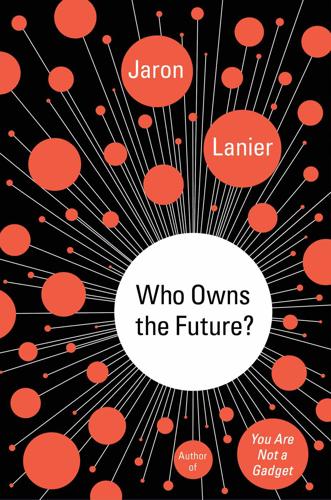
Who Owns the Future?
by
Jaron Lanier
Published 6 May 2013
M., 129–30, 261, 328 “Forum,” 214 Foucault, Michel, 308n 4chan, 335 4′33″ (Cage), 212 fractional reserve system, 33 Franco, Francisco, 159–60 freedom, 13–15, 32–33, 90–92, 277–78, 336 freelancing, 253–54 Free Print Shop, 228 “free rise,” 182–89, 355 free speech, 223, 225 free will, 166–68 “friction,” 179, 225, 230, 235, 354 Friendster, 180, 181 Fukuyama, Francis, 165, 189 fundamentalism, 131, 193–94 future: chaos in, 165–66, 273n, 331 economic analysis of, 1–3, 15, 22, 37, 38, 40–41, 42, 67, 122, 143, 148–52, 153, 155–56, 204, 208, 209, 236, 259, 274, 288, 298–99, 311, 362n, 363 humanistic economy for, 194, 209, 233–351 361–367 “humors” of, 124–40, 230 modern conception of, 123–40, 193–94, 255 natural basis of, 125, 127, 128–29 optimism about, 32–35, 45, 130, 138–40, 218, 230n, 295 politics of, 13–18, 22–25, 85, 122, 124–26, 128, 134–37, 199–234, 295–96, 342 technological trends in, 7–18, 21, 53–54, 60–61, 66–67, 85–86, 87, 97–98, 129–38, 157–58, 182, 188–90, 193–96, 217 utopian conception of, 13–18, 21, 30, 31, 37–38, 45–46, 96, 128, 130, 167, 205, 207, 265, 267, 270, 283, 290, 291, 308–9, 316 future-oriented money, 32–34, 35 Gadget, 186 Gallant, Jack, 111–12 games, 362, 363 Gates, Bill, 93 Gattaca, 130 Gawker, 118n Gelernter, David, 313 “general” machines, 158 General Motors, 56–57 general relativity theory, 167n Generation X, 346 genetic engineering, 130 genetics, 109–10, 130, 131, 146–47, 329, 366 genomics, 109–10, 146–47, 366 Germany, 45 Ghostery, 109 ghost suburbs, 296 Gibson, William, 137, 309 Gizmodo, 117–18 Global Business Network (GBN), 214–15 global climate change, 17, 32, 53, 132, 133, 134, 203, 266, 295, 296–97, 301–2, 331 global economy, 33n, 153–56, 173, 201, 214–15, 280 global village, 201 God, 29, 30–31, 139 Golden Goblet, 121, 121, 175, 328 golden rule, 335–36 gold standard, 34 Google, 14, 15, 19, 69, 74, 75–76, 90, 94, 106, 110, 120, 128, 153, 154, 170, 171, 174, 176, 180, 181–82, 188, 191, 192, 193, 199–200, 201, 209, 210, 217, 225, 227, 246, 249, 265, 267, 272, 278, 280, 286, 305n, 307, 309–10, 322, 325, 330, 344, 348, 352 Google Goggles, 309–10 Googleplex, 199–200 goops, 85–89, 99 Gore, Al, 80n Graeber, David, 30n granularity, 277 graph-shaped networks, 241, 242–43 Great Britain, 200 Great Depression, 69–70, 75, 135, 299 Great Recession, 31, 54, 60, 76–77, 204, 311, 336–37 Greece, 22–25, 45, 125 Grigorov, Mario, 267 guitars, 154 guns, 310–11 Gurdjieff, George, 215, 216 gurus, 211–13 hackers, 14, 82, 265, 306–7, 345–46 Hardin, Garrett, 66n Hartmann, Thom, 33n Hayek, Friedrich, 204 health care, 66–67, 95, 98–99, 100, 132–33, 153–54, 249, 253, 258, 337, 346 health insurance, 66–67, 95, 98–99, 100, 153–54 Hearts and Minds, 353n heart surgery, 11–13, 17, 18, 157–58 heat, 56 hedge funds, 69, 106, 137 Hephaestus, 22, 23 high-dimensional problems, 145 high-frequency trading, 56, 76–78, 154 highways, 79–80, 345 Hinduism, 214 Hippocrates, 124n Hiroshima bombing (1945), 127 Hollywood, 204, 206, 242 holographic radiation, 11 Homebrew Club, 228 homelessness, 151 homeopathy, 131–32 Homer, 23, 55 Honan, Mat, 82 housing market, 33, 46, 49–52, 61, 78, 95–96, 99, 193, 224, 227, 239, 245, 255, 274n, 289n, 296, 298, 300, 301 HTML, 227, 230 Huffington Post, 176, 180, 189 human agency, 8–21, 50–52, 85, 88, 91, 124–40, 144, 165–66, 175–78, 191–92, 193, 217, 253–64, 274–75, 283–85, 305–6, 328, 341–51, 358–60, 361, 362, 365–67 humanistic information economy, 194, 209, 233–351 361–367 human reproduction, 131 humors (tropes), 124–40, 157, 170, 230 hunter-gatherer societies, 131, 261–62 hyperefficient markets, 39, 42–43 hypermedia, 224–30, 245 hyper-unemployment, 7–8 hypotheses, 113, 128, 151 IBM, 191 identity, 14–15, 82, 124, 173–74, 175, 248–51, 283–90, 305, 306, 307, 315–16, 319–21 identity theft, 82, 315–16 illusions, 55, 110n, 120–21, 135, 154–56, 195, 257 immigration, 91, 97, 346 immortality, 193, 218, 253, 263–64, 325–31, 367 imports, 70 income levels, 10, 46–47, 50–54, 152, 178, 270–71, 287–88, 291–94, 338–39, 365 incrementalism, 239–40 indentured servitude, 33n, 158 India, 54, 211–13 industrialization, 49, 83, 85–89, 123, 132, 154, 343 infant mortality rates, 17, 134 infinity, 55–56 inflation, 32, 33–34 information: age of, 15–17, 42, 166, 241 ambiguity of, 41, 53–54, 155–56 asymmetry of, 54–55, 61–66, 118, 188, 203, 246–48, 285–88, 291–92, 310 behavior influenced by, 32, 121, 131, 173–74, 286–87 collection of, 61–62, 108–9 context of, 143–44, 178, 188–89, 223–24, 225, 245–46, 247, 248–51, 338, 356–57, 360 correlations in, 75–76, 114–15, 192, 274–75 for decision-making, 63–64, 184, 266, 269–75, 284n digital networks for, see digital networks duplication of, 50–52, 61, 74, 78, 88, 223–30, 239–40, 253–64, 277, 317–24, 335, 349 economic impact of, 1–3, 8–9, 15–17, 18, 19–20, 21, 35, 60–61, 92–97, 118, 185, 188, 201, 207, 209, 241–43, 245–46, 246–48, 256–58, 263, 283–87, 291–303, 331, 361–67 in education, 92–97 encrypted, 14–15, 175, 239–40, 305–8, 345 false, 119–21, 186, 275n, 287–88, 299–300 filters for, 119–20, 200, 225, 356–57 free, 7–9, 15–16, 50–52, 61, 74, 78, 88, 214, 223–30, 239–40, 246, 253–64, 277, 317–24, 335, 349 history of, 29–31 human agency in, 22–25, 69–70, 120–21, 122, 190–91 interpretation of, 29n, 114–15, 116, 120–21, 129–32, 154, 158, 178, 183, 184, 188–89 investment, 59–60, 179–85 life cycle of, 175–76 patterns in, 178, 183, 184, 188–89 privacy of, see privacy provenance of, 245–46, 247, 338 sampling of, 71–72, 191, 221, 224–26, 259 shared, 50–52, 61, 74, 78, 88, 100, 223–30, 239–40, 253–64, 277, 317–24, 335, 349 signals in, 76–78, 148, 293–94 storage of, 29, 167n, 184–85; see also cloud processors and storage; servers superior, 61–66, 114, 128, 143, 171, 246–48 technology of, 7, 32–35, 49, 66n, 71–72, 109, 110, 116, 120, 125n, 126, 135, 136, 254, 312–16, 317 transparency of, 63–66, 74–78, 118, 190–91, 306–7 two-way links in, 1–2, 227, 245, 289 value of, 1–3, 15–16, 20, 210, 235–43, 257–58, 259, 261–63, 271–75, 321–24, 358–60 see also big data; data infrastructure, 79–80, 87, 179, 201, 290, 345 initial public offerings (IPOs), 103 ink, 87, 331 Inner Directeds, 215 Instagram, 2, 53 instant prices, 272, 275, 288, 320 insurance industry, 44, 56, 60, 66–67, 95, 98–99, 100, 153–54, 203, 306 intellectual property, 44, 47, 49, 60, 61, 96, 102, 183, 204, 205–10, 223, 224–26, 236, 239–40, 246, 253–64 intelligence agencies, 56, 61, 199–200, 291, 346 intelligence tests, 39, 40 interest rates, 81 Internet: advertising on, 14, 20, 24, 42, 66, 81, 107, 109, 114, 129, 154, 169–74, 177, 182, 207, 227, 242, 266–67, 275, 286, 291, 322–24, 347–48, 354, 355 anonymity of, 172, 248–51, 283–90 culture of, 13–15, 25 development of, 69, 74, 79–80, 89, 129–30, 159, 162, 190–96, 223, 228 economic impact of, 1–2, 18, 19–20, 24, 31, 43, 60–66, 79–82, 117, 136–37, 169–74, 181, 186 employment and, 2, 7–8, 56–57, 60, 71–74, 79, 117, 123, 135, 149, 178, 201, 257–58 file sharing on, 50–52, 61, 74, 78, 88, 100, 223–30, 239–40, 253–64, 277, 317–24, 335, 349 free products and services of, 7n, 10, 60–61, 73, 81, 82, 90, 94–96, 97, 128, 154, 176, 183, 187, 201, 205–10, 234, 246–48, 253–64, 283–88, 289, 308–9, 317–24, 337–38, 348–50, 366 human contributions to, 19–21, 128, 129–30, 191–92, 253–64 identity in, 14–15, 82, 173–74, 175, 283–90, 315–16 investment in, 117–20, 181 legal issues in, 63, 79–82, 204, 206, 318–19 licensing agreements for, 79–82 as network, 2–3, 9, 11, 12, 14, 15, 16, 17, 19–21, 31, 49, 50–51, 53, 54–55, 56, 57, 75, 92, 129–30, 143–48, 228–29, 259, 286–87, 308–9 political aspect of, 13–15, 205–10 search engines for, 51, 60, 70, 81, 120, 191, 267, 289, 293; see also Google security of, 14–15, 175, 239–40, 305–8, 345 surveillance of, 1–2, 11, 14, 50–51, 64, 71–72, 99, 108–9, 114–15, 120–21, 152, 177n, 199–200, 201, 206–7, 234–35, 246, 272, 291, 305, 309–11, 315, 316, 317, 319–24 transparency of, 63–66, 176, 205–6, 278, 291, 308–9, 316, 336 websites on, 80, 170, 200, 201, 343 Internet2, 69 Internet service providers (ISPs), 171–72 Interstate Highway System, 79–80, 345 “In-valid,” 130 inventors, 117–20 investment, financial, 45, 50, 59–67, 74–80, 115, 116–20, 155, 179–85, 208, 218, 257, 258, 277–78, 298, 301, 348, 350 Invisible Hand humor, 126, 128 IP addresses, 248 iPads, 267 Iran, 199, 200 irony, 130 Islam, 184 Italy, 133 Jacquard programmable looms, 23n “jailbreaking,” 103–4 Japan, 85, 97, 98, 133 Jeopardy, 191 Jeremijenko, Natalie, 302 jingles, 267 jobs, see employment Jobs, Steve, 93, 166n, 192, 358 JOBS Act (2012), 117n journalism, 92, 94 Kapital, Das (Marx), 136 Keynesianism, 38, 151–52, 204, 209, 274, 288 Khan Academy, 94 Kickstarter, 117–20, 186–87, 343 Kindle, 352 Kinect, 89n, 265 “Kirk’s Wager,” 139 Klout, 365 Kodak, 2, 53 Kottke, Dan, 211 KPFA, 136 Kurzweil, Ray, 127, 325, 327 Kushner, Tony, 165, 189 LaBerge, Stephen, 162 labor, human, 85, 86, 87, 88, 99–100, 257–58, 292 labor unions, 44, 47–48, 49, 96, 239, 240 Laffer curve, 149–51, 150, 152 Las Vegas, Nev., 296, 298 lawyers, 98–99, 100, 136, 184, 318–19 leadership, 341–51 legacy prices, 272–75, 288 legal issues, 49, 63, 74–82, 98–99, 100, 104–5, 108, 136, 184, 204, 206, 318–19 Lehman Brothers, 188 lemonade stands, 79–82 “lemons,” 118–19 Lennon, John, 211, 213 levees, economic, 43–45, 46, 47, 48, 49–50, 52, 92, 94, 96, 98, 108, 171, 176n, 224–25, 239–43, 253–54, 263, 345 leveraged mortgages, 49–50, 61, 227, 245, 289n, 296 liberal arts, 97 liberalism, 135–36, 148, 152, 202, 204, 208, 235, 236, 251, 253, 256, 265, 293, 350 libertarianism, 14, 34, 80, 202, 208, 210, 262, 321 liberty, 13–15, 32–33, 90–92, 277–78, 336 licensing agreements, 79–82 “Lifestreams” (Gelernter), 313 Lights in the Tunnel, The (Ford), 56n Linux, 206, 253, 291, 344 litigation, 98–99, 100, 104–5, 108, 184 loans, 32–33, 42, 43, 74, 151–52, 306 local advantages, 64, 94–95, 143–44, 153–56, 173, 203, 280 Local/Global Flip, 153–56, 173, 280 locked-in software, 172–73, 182, 273–74 logical copies, 223 Long-Term Capital Management, 49, 74–75 looms, 22, 23n, 24 loopholes, tax, 77 lotteries, 338–39 lucid dreaming, 162 Luddites, 135, 136 lyres, 22, 23n, 24 machines, 19–20, 86, 92, 123, 129–30, 158, 261, 309–11, 328 see also computers “Machine Stops, The” (Forster), 129–30, 261, 328 machine translations, 19–20 machine vision, 309–11 McMillen, Keith, 117 magic, 110, 115, 151, 178, 216, 338 Malthus, Thomas, 132, 134 Malthusian humor, 125, 127, 132–33 management, 49 manufacturing sector, 49, 85–89, 99, 123, 154, 343 market economies, see economies, market marketing, 211–13, 266–67, 306, 346 “Markets for Lemons” problem, 118–19 Markoff, John, 213 marriage, 167–68, 274–75, 286 Marxism, 15, 22, 37–38, 48, 136–37, 262 as humor, 126 mash-ups, 191, 221, 224–26, 259 Maslow, Abraham, 260, 315 Massachusetts Institute of Technology (MIT), 75, 93, 94, 96–97, 157–58, 184 mass media, 7, 66, 86, 109, 120, 135, 136, 185–86, 191, 216, 267 material extinction, 125 materialism, 125n, 195 mathematics, 11, 20, 40–41, 70, 71–72, 75–78, 116, 148, 155, 161, 189n, 273n see also statistics Matrix, The, 130, 137, 155 Maxwell, James Clerk, 55 Maxwell’s Demon, 55–56 mechanicals, 49, 51n Mechanical Turk, 177–78, 185, 187, 349 Medicaid, 99 medicine, 11–13, 17, 18, 54, 66–67, 97–106, 131, 132–33, 134, 150, 157–58, 325, 346, 363, 366–67 Meetings with Remarkable Men (Gurdjieff), 215 mega-dossiers, 60 memes, 124 Memex, 221n memories, 131, 312–13, 314 meta-analysis, 112 metaphysics, 12, 127, 139, 193–95 Metcalf’s Law, 169n, 350 Mexico City, 159–62 microfilm, 221n microorganisms, 162 micropayments, 20, 226, 274–75, 286–87, 317, 337–38, 365 Microsoft, 19, 89, 265 Middle Ages, 190 middle class, 2, 3, 9, 11, 16–17, 37–38, 40, 42–45, 47, 48, 49, 50, 51, 60, 74, 79, 91, 92, 95, 98, 171, 205, 208, 210, 224–25, 239–43, 246, 253–54, 259, 262, 263, 280, 291–94, 331, 341n, 344, 345, 347, 354 milling machines, 86 mind reading, 111 Minority Report, 130, 310 Minsky, Marvin, 94, 157–58, 217, 326, 330–31 mission statements, 154–55 Mixed (Augmented) Reality, 312–13, 314, 315 mobile phones, 34n, 39, 85, 87, 162, 172, 182n, 192, 229, 269n, 273, 314, 315, 331 models, economic, 40–41, 148–52, 153, 155–56 modernity, 123–40, 193–94, 255 molds, 86 monetization, 172, 176n, 185, 186, 207, 210, 241–43, 255–56, 258, 260–61, 263, 298, 331, 338, 344–45 money, 3, 21, 29–35, 86, 108, 124, 148, 152, 154, 155, 158, 172, 185, 241–43, 278–79, 284–85, 289, 364 monocultures, 94 monopolies, 60, 65–66, 169–74, 181–82, 187–88, 190, 202, 326, 350 Moondust, 362n Moore’s Law, 9–18, 20, 153, 274–75, 288 morality, 29–34, 35, 42, 50–52, 54, 71–74, 188, 194–95, 252–64, 335–36 Morlocks, 137 morning-after pill, 104 morphing, 162 mortality, 193, 218, 253, 263–64, 325–31, 367 mortgages, 33, 46, 49–52, 61, 78, 95–96, 99, 224, 227, 239, 245, 255, 274n, 289n, 296, 300 motivation, 7–18, 85–86, 97–98, 216 motivational speakers, 216 movies, 111–12, 130, 137, 165, 192, 193, 204, 206, 256, 261–62, 277–78, 310 Mozart, Wolfgang Amadeus, 23n MRI, 111n music industry, 11, 18, 22, 23–24, 42, 47–51, 54, 61, 66, 74, 78, 86, 88, 89, 92, 94, 95–96, 97, 129, 132, 134–35, 154, 157, 159–62, 186–87, 192, 206–7, 224, 227, 239, 253, 266–67, 281, 318, 347, 353, 354, 355, 357 Myspace, 180 Nancarrow, Conlon, 159–62 Nancarrow, Yoko, 161 nanopayments, 20, 226, 274–75, 286–87, 317, 337–38, 365 nanorobots, 11, 12, 17 nanotechnology, 11, 12, 17, 87, 162 Napster, 92 narcissism, 153–56, 188, 201 narratives, 165–66, 199 National Security Agency (NSA), 199–200 natural medicine, 131 Nelson, Ted, 128, 221, 228, 245, 349–50 Nelsonian systems, 221–30, 335 Nelson’s humor, 128 Netflix, 192, 223 “net neutrality,” 172 networked cameras, 309–11, 319 networks, see digital networks neutrinos, 110n New Age, 211–17 Newmark, Craig, 177n New Mexico, 159, 203 newspapers, 109, 135, 177n, 225, 284, 285n New York, N.Y., 75, 91, 266–67 New York Times, 109 Nobel Prize, 40, 118, 143n nodes, network, 156, 227, 230, 241–43, 350 “no free lunch” principle, 55–56, 59–60 nondeterministic music, 23n nonlinear solutions, 149–50 nonprofit share sites, 59n, 94–95 nostalgia, 129–32 NRO, 199–200 nuclear power, 133 nuclear weapons, 127, 296 nursing, 97–100, 123, 296n nursing homes, 97–100, 269 Obama, Barack, 79, 100 “Obamacare,” 100n obsolescence, 89, 95 oil resources, 43, 133 online stores, 171 Ono, Yoko, 212 ontologies, 124n, 196 open-source applications, 206, 207, 272, 310–11 optical illusions, 121 optimism, 32–35, 45, 130, 138–40, 218, 230n, 295 optimization, 144–47, 148, 153, 154–55, 167, 202, 203 Oracle, 265 Orbitz, 63, 64, 65 organ donors, 190, 191 ouroboros, 154 outcomes, economic, 40–41, 144–45 outsourcing, 177–78, 185 Owens, Buck, 256 packet switching, 228–29 Palmer, Amanda, 186–87 Pandora, 192 panopticons, 308 papacy, 190 paper money, 34n parallel computers, 147–48, 149, 151 paranoia, 309 Parrish, Maxfield, 214 particle interactions, 196 party machines, 202 Pascal, Blaise, 132, 139 Pascal’s Wager, 139 passwords, 307, 309 “past-oriented money,” 29–31, 35, 284–85 patterns, information, 178, 183, 184, 188–89 Paul, Ron, 33n Pauli exclusion principle, 181, 202 PayPal, 60, 93, 326 peasants, 565 pensions, 95, 99 Perestroika (Kushner), 165 “perfect investments,” 59–67, 77–78 performances, musical, 47–48, 51, 186–87, 253 perpetual motion, 55 Persian Gulf, 86 personal computers (PCs), 158, 182n, 214, 223, 229 personal information systems, 110, 312–16, 317 Pfizer, 265 pharmaceuticals industry, 66–67, 100–106, 123, 136, 203 philanthropy, 117 photography, 53, 89n, 92, 94, 309–11, 318, 319, 321 photo-sharing services, 53 physical trades, 292 physicians, 66–67 physics, 88, 153n, 167n Picasso, Pablo, 108 Pinterest, 180–81, 183 Pirate Party, 49, 199, 206, 226, 253, 284, 318 placebos, 112 placement fees, 184 player pianos, 160–61 plutocracy, 48, 291–94, 355 police, 246, 310, 311, 319–21, 335 politics, 13–18, 21, 22–25, 47–48, 85, 122, 124–26, 128, 134–37, 149–51, 155, 167, 199–234, 295–96, 342 see also conservatism; liberalism; libertarianism Ponzi schemes, 48 Popper, Karl, 189n popular culture, 111–12, 130, 137–38, 139, 159 “populating the stack,” 273 population, 17, 34n, 86, 97–100, 123, 125, 132, 133, 269, 296n, 325–26, 346 poverty, 37–38, 42, 44, 53–54, 93–94, 137, 148, 167, 190, 194, 253, 256, 263, 290, 291–92 power, personal, 13–15, 53, 60, 62–63, 86, 114, 116, 120, 122, 158, 166, 172–73, 175, 190, 199, 204, 207, 208, 278–79, 290, 291, 302–3, 308–9, 314, 319, 326, 344, 360 Presley, Elvis, 211 Priceline, 65 pricing strategies, 1–2, 43, 60–66, 72–74, 145, 147–48, 158, 169–74, 226, 261, 272–75, 289, 317–24, 331, 337–38 printers, 90, 99, 154, 162, 212, 269, 310–11, 316, 331, 347, 348, 349 privacy, 1–2, 11, 13–15, 25, 50–51, 64, 99, 108–9, 114–15, 120–21, 152, 177n, 199–200, 201, 204, 206–7, 234–35, 246, 272, 291, 305, 309–13, 314, 315–16, 317, 319–24 privacy rights, 13–15, 25, 204, 305, 312–13, 314, 315–16, 321–22 product design and development, 85–89, 117–20, 128, 136–37, 145, 154, 236 productivity, 7, 56–57, 134–35 profit margins, 59n, 71–72, 76–78, 94–95, 116, 177n, 178, 179, 207, 258, 274–75, 321–22 progress, 9–18, 20, 21, 37, 43, 48, 57, 88, 98, 123, 124–40, 130–37, 256–57, 267, 325–31, 341–42 promotions, 62 property values, 52 proprietary hardware, 172 provenance, 245–46, 247, 338 pseudo-asceticism, 211–12 public libraries, 293 public roads, 79–80 publishers, 62n, 92, 182, 277–78, 281, 347, 352–60 punishing vs. rewarding network effects, 169–74, 182, 183 quants, 75–76 quantum field theory, 167n, 195 QuNeo, 117, 118, 119 Rabois, Keith, 185 “race to the bottom,” 178 radiant risk, 61–63, 118–19, 120, 156, 183–84 Ragnarok, 30 railroads, 43, 172 Rand, Ayn, 167, 204 randomness, 143 rationality, 144 Reagan, Ronald, 149 real estate, 33, 46, 49–52, 61, 78, 95–96, 99, 193, 224, 227, 239, 245, 255, 274n, 289n, 296, 298, 300, 301 reality, 55–56, 59–60, 124n, 127–28, 154–56, 161, 165–68, 194–95, 203–4, 216–17, 295–303, 364–65 see also Virtual Reality (VR) reason, 195–96 recessions, economic, 31, 54, 60, 76–77, 79, 151–52, 167, 204, 311, 336–37 record labels, 347 recycling, 88, 89 Reddit, 118n, 186, 254 reductionism, 184 regulation, economic, 37–38, 44, 45–46, 49–50, 54, 56, 69–70, 77–78, 266n, 274, 299–300, 311, 321–22, 350–51 relativity theory, 167n religion, 124–25, 126, 131, 139, 190, 193–95, 211–17, 293, 300n, 326 remote computers, 11–12 rents, 144 Republican Party, 79, 202 research and development, 40–45, 85–89, 117–20, 128, 136–37, 145, 154, 215, 229–30, 236 retail sector, 69, 70–74, 95–96, 169–74, 272, 349–51, 355–56 retirement, 49, 150 revenue growth plans, 173n revenues, 149, 149, 150, 151, 173n, 225, 234–35, 242, 347–48 reversible computers, 143n revolutions, 199, 291, 331 rhythm, 159–62 Rich Dad, Poor Dad (Kiyosaki), 46 risk, 54, 55, 57, 59–63, 71–72, 85, 117, 118–19, 120, 156, 170–71, 179, 183–84, 188, 242, 277–81, 284, 337, 350 externalization of, 59n, 117, 277–81 risk aversion, 188 risk pools, 277–81, 284 risk radiation, 61–63, 118–19, 120, 156, 183–84 robo call centers, 177n robotic cars, 90–92 robotics, robots, 11, 12, 17, 23, 42, 55, 85–86, 90–92, 97–100, 111, 129, 135–36, 155, 157, 162, 260, 261, 269, 296n, 342, 359–60 Roman Empire, 24–25 root nodes, 241 Rousseau, Jean-Jacques, 129 Rousseau humor, 126, 129, 130–31 routers, 171–72 royalties, 47, 240, 254, 263–64, 323, 338 Rubin, Edgar, 121 rupture, 66–67 salaries, 10, 46–47, 50–54, 152, 178, 270–71, 287–88, 291–94, 338–39, 365 sampling, 71–72, 191, 221, 224–26, 259 San Francisco, University of, 190 satellites, 110 savings, 49, 72–74 scalable solutions, 47 scams, 119–21, 186, 275n, 287–88, 299–300 scanned books, 192, 193 SceneTap, 108n Schmidt, Eric, 305n, 352 Schwartz, Peter, 214 science fiction, 18, 126–27, 136, 137–38, 139, 193, 230n, 309, 356n search engines, 51, 60, 70, 81, 120, 191, 267, 289, 293 Second Life, 270, 343 Secret, The (Byrne), 216 securitization, 76–78, 99, 289n security, 14–15, 175, 239–40, 305–8, 345 self-actualization, 211–17 self-driving vehicles, 90–92, 98, 311, 343, 367 servants, 22 servers, 12n, 15, 31, 53–57, 71–72, 95–96, 143–44, 171, 180, 183, 206, 245, 358 see also Siren Servers “Sexy Sadie,” 213 Shakur, Tupac, 329 Shelley, Mary, 327 Short History of Progress, A (Wright), 132 “shrinking markets,” 66–67 shuttles, 22, 23n, 24 signal-processing algorithms, 76–78, 148 silicon chips, 10, 86–87 Silicon Valley, 12, 13, 14, 21, 34n, 56, 59, 60, 66–67, 70, 71, 75–76, 80, 93, 96–97, 100, 102, 108n, 125n, 132, 136, 154, 157, 162, 170, 179–89, 192, 193, 200, 207, 210, 211–18, 228, 230, 233, 258, 275n, 294, 299–300, 325–31, 345, 349, 352, 354–58 singularity, 22–25, 125, 215, 217, 327–28, 366, 367 Singularity University, 193, 325, 327–28 Sirenic Age, 66n, 354 Siren Servers, 53–57, 59, 61–64, 65, 66n, 69–78, 82, 91–99, 114–19, 143–48, 154–56, 166–89, 191, 200, 201, 203, 210n, 216, 235, 246–50, 258, 259, 269, 271, 272, 280, 285, 289, 293–94, 298, 301, 302–3, 307–10, 314–23, 326, 336–51, 354, 365, 366 Siri, 95 skilled labor, 99–100 Skout, 280n Skype, 95, 129 slavery, 22, 23, 33n Sleeper, 130 small businesses, 173 smartphones, 34n, 39, 162, 172, 192, 269n, 273 Smith, Adam, 121, 126 Smolin, Lee, 148n social contract, 20, 49, 247, 284, 288, 335, 336 social engineering, 112–13, 190–91 socialism, 14, 128, 254, 257, 341n social mobility, 66, 97, 292–94 social networks, 18, 51, 56, 60, 70, 81, 89, 107–9, 113, 114, 129, 167–68, 172–73, 179, 180, 190, 199, 200–201, 202, 204, 227, 241, 242–43, 259, 267, 269n, 274–75, 280n, 286, 307–8, 317, 336, 337, 343, 349, 358, 365–66 see also Facebook social safety nets, 10, 44, 54, 202, 251, 293 Social Security, 251, 345 software, 7, 9, 11, 14, 17, 68, 86, 99, 100–101, 128, 129, 147, 154, 155, 165, 172–73, 177–78, 182, 192, 234, 236, 241–42, 258, 262, 273–74, 283, 331, 347, 357 software-mediated technology, 7, 11, 14, 86, 100–101, 165, 234, 236, 258, 347 South Korea, 133 Soviet Union, 70 “space elevator pitch,” 233, 342, 361 space travel, 233, 266 Spain, 159–60 spam, 178, 275n spending levels, 287–88 spirituality, 126, 211–17, 325–31, 364 spreadsheet programs, 230 “spy data tax,” 234–35 Square, 185 Stalin, Joseph, 125n Stanford Research Institute (SRI), 215 Stanford University, 60, 75, 90, 95, 97, 101, 102, 103, 162, 325 Starr, Ringo, 256 Star Trek, 138, 139, 230n startup companies, 39, 60, 69, 93–94, 108n, 124n, 136, 179–89, 265, 274n, 279–80, 309–10, 326, 341, 343–45, 348, 352, 355 starvation, 123 Star Wars, 137 star (winner-take-all) system, 38–43, 50, 54–55, 204, 243, 256–57, 263, 329–30 statistics, 11, 20, 71–72, 75–78, 90–91, 93, 110n, 114–15, 186, 192 “stickiness,” 170, 171 stimulus, economic, 151–52 stoplights, 90 Strangelove humor, 127 student debt, 92, 95 “Study 27,” 160 “Study 36,” 160 Sumer, 29 supergoop, 85–89 supernatural phenomena, 55, 124–25, 127, 132, 192, 194–95, 300 supply chain, 70–72, 174, 187 Supreme Court, U.S., 104–5 surgery, 11–13, 17, 18, 98, 157–58, 363 surveillance, 1–2, 11, 14, 50–51, 64, 71–72, 99, 108–9, 114–15, 120–21, 152, 177n, 199–200, 201, 206–7, 234–35, 246, 272, 291, 305, 309–11, 315, 316, 317, 319–24 Surviving Progress, 132 sustainable economies, 235–37, 285–87 Sutherland, Ivan, 221 swarms, 99, 109 synthesizers, 160 synthetic biology, 162 tablets, 85, 86, 87, 88, 113, 162, 229 Tahrir Square, 95 Tamagotchis, 98 target ads, 170 taxation, 44, 45, 49, 52, 60, 74–75, 77, 82, 149, 149, 150, 151, 202, 210, 234–35, 263, 273, 289–90 taxis, 44, 91–92, 239, 240, 266–67, 269, 273, 311 Teamsters, 91 TechCrunch, 189 tech fixes, 295–96 technical schools, 96–97 technologists (“techies”), 9–10, 15–16, 45, 47–48, 66–67, 88, 122, 124, 131–32, 134, 139–40, 157–62, 165–66, 178, 193–94, 295–98, 307, 309, 325–31, 341, 342, 356n technology: author’s experience in, 47–48, 62n, 69–72, 93–94, 114, 130, 131–32, 153, 158–62, 178, 206–7, 228, 265, 266–67, 309–10, 325, 328, 343, 352–53, 362n, 364, 365n, 366 bio-, 11–13, 17, 18, 109–10, 162, 330–31 chaos and, 165–66, 273n, 331 collusion in, 65–66, 72, 169–74, 255, 350–51 complexity of, 53–54 costs of, 8, 18, 72–74, 87n, 136–37, 170–71, 176–77, 184–85 creepiness of, 305–24 cultural impact of, 8–9, 21, 23–25, 53, 130, 135–40 development and emergence of, 7–18, 21, 53–54, 60–61, 66–67, 85–86, 87, 97–98, 129–38, 157–58, 182, 188–90, 193–96, 217 digital, 2–3, 7–8, 15–16, 18, 31, 40, 43, 50–51, 132, 208 economic impact of, 1–3, 15–18, 29–30, 37, 40, 53–54, 60–66, 71–74, 79–110, 124, 134–37, 161, 162, 169–77, 181–82, 183, 184–85, 218, 254, 277–78, 298, 335–39, 341–51, 357–58 educational, 92–97 efficiency of, 90, 118, 191 employment in, 56–57, 60, 71–74, 79, 123, 135, 178 engineering for, 113–14, 123–24, 192, 194, 217, 218, 326 essential vs. worthless, 11–12 failure of, 188–89 fear of (technophobia), 129–32, 134–38 freedom as issue in, 32–33, 90–92, 277–78, 336 government influence in, 158, 199, 205–6, 234–35, 240, 246, 248–51, 307, 317, 341, 345–46, 350–51 human agency and, 8–21, 50–52, 85, 88, 91, 124–40, 144, 165–66, 175–78, 191–92, 193, 217, 253–64, 274–75, 283–85, 305–6, 328, 341–51, 358–60, 361, 362, 365–67 ideas for, 123, 124, 158, 188–89, 225, 245–46, 286–87, 299, 358–60 industrial, 49, 83, 85–89, 123, 132, 154, 343 information, 7, 32–35, 49, 66n, 71–72, 109, 110, 116, 120, 125n, 126, 135, 136, 254, 312–16, 317 investment in, 66, 181, 183, 184, 218, 277–78, 298, 348 limitations of, 157–62, 196, 222 monopolies for, 60, 65–66, 169–74, 181–82, 187–88, 190, 202, 326, 350 morality and, 50–51, 72, 73–74, 188, 194–95, 262, 335–36 motivation and, 7–18, 85–86, 97–98, 216 nano-, 11, 12, 17, 162 new vs. old, 20–21 obsolescence of, 89, 97 political impact of, 13–18, 22–25, 85, 122, 124–26, 128, 134–37, 199–234, 295–96, 342 progress in, 9–18, 20, 21, 37, 43, 48, 57, 88, 98, 123, 124–40, 130–37, 256–57, 267, 325–31, 341–42 resources for, 55–56, 157–58 rupture as concept in, 66–67 scams in, 119–21, 186, 275n, 287–88, 299–300 singularity of, 22–25, 125, 215, 217, 327–28, 366, 367 social impact of, 9–21, 124–40, 167n, 187, 280–81, 310–11 software-mediated, 7, 11, 14, 86, 100–101, 165, 234, 236, 258, 347 startup companies in, 39, 60, 69, 93–94, 108n, 124n, 136, 179–89, 265, 274n, 279–80, 309–10, 326, 341, 343–45, 348, 352, 355 utopian, 13–18, 21, 31, 37–38, 45–46, 96, 128, 130, 167, 205, 207, 265, 267, 270, 283, 290, 291, 308–9, 316 see also specific technologies technophobia, 129–32, 134–38 television, 86, 185–86, 191, 216, 267 temperature, 56, 145 Ten Commandments, 300n Terminator, The, 137 terrorism, 133, 200 Tesla, Nikola, 327 Texas, 203 text, 162, 352–60 textile industry, 22, 23n, 24, 135 theocracy, 194–95 Theocracy humor, 124–25 thermodynamics, 88, 143n Thiel, Peter, 60, 93, 326 thought experiments, 55, 139 thought schemas, 13 3D printers, 7, 85–89, 90, 99, 154, 162, 212, 269, 310–11, 316, 331, 347, 348, 349 Thrun, Sebastian, 94 Tibet, 214 Time Machine, The (Wells), 127, 137, 261, 331 topology, network, 241–43, 246 touchscreens, 86 tourism, 79 Toyota Prius, 302 tracking services, 109, 120–21, 122 trade, 29 traffic, 90–92, 314 “tragedy of the commons,” 66n Transformers, 98 translation services, 19–20, 182, 191, 195, 261, 262, 284, 338 transparency, 63–66, 74–78, 118, 176, 190–91, 205–6, 278, 291, 306–9, 316, 336 transportation, 79–80, 87, 90–92, 123, 258 travel agents, 64 Travelocity, 65 travel sites, 63, 64, 65, 181, 279–80 tree-shaped networks, 241–42, 243, 246 tribal dramas, 126 trickle-down effect, 148–49, 204 triumphalism, 128, 157–62 tropes (humors), 124–40, 157, 170, 230 trust, 32–34, 35, 42, 51–52 Turing, Alan, 127–28, 134 Turing’s humor, 127–28, 191–94 Turing Test, 330 Twitter, 128, 173n, 180, 182, 188, 199, 200n, 201, 204, 245, 258, 259, 349, 365n 2001: A Space Odyssey, 137 two-way links, 1–2, 227, 245, 289 underemployment, 257–58 unemployment, 7–8, 22, 79, 85–106, 117, 151–52, 234, 257–58, 321–22, 331, 343 “unintentional manipulation,” 144 United States, 25, 45, 54, 79–80, 86, 138, 199–204 universities, 92–97 upper class, 45, 48 used car market, 118–19 user interface, 362–63, 364 utopianism, 13–18, 21, 30, 31, 37–38, 45–46, 96, 128, 130, 167, 205, 207, 265, 267, 270, 283, 290, 291, 308–9, 316 value, economic, 21, 33–35, 52, 61, 64–67, 73n, 108, 283–90, 299–300, 321–22, 364 value, information, 1–3, 15–16, 20, 210, 235–43, 257–58, 259, 261–63, 271–75, 321–24, 358–60 Values, Attitudes, and Lifestyles (VALS), 215 variables, 149–50 vendors, 71–74 venture capital, 66, 181, 218, 277–78, 298, 348 videos, 60, 100, 162, 185–86, 204, 223, 225, 226, 239, 240, 242, 245, 277, 287, 329, 335–36, 349, 354, 356 Vietnam War, 353n vinyl records, 89 viral videos, 185–86 Virtual Reality (VR), 12, 47–48, 127, 129, 132, 158, 162, 214, 283–85, 312–13, 314, 315, 325, 343, 356, 362n viruses, 132–33 visibility, 184, 185–86, 234, 355 visual cognition, 111–12 VitaBop, 100–106, 284n vitamins, 100–106 Voice, The, 185–86 “voodoo economics,” 149 voting, 122, 202–4, 249 Wachowski, Lana, 165 Wall Street, 49, 70, 76–77, 181, 184, 234, 317, 331, 350 Wal-Mart, 69, 70–74, 89, 174, 187, 201 Warhol, Andy, 108 War of the Worlds, The (Wells), 137 water supplies, 17, 18 Watts, Alan, 211–12 Wave, 189 wealth: aggregate or concentration of, 9, 42–43, 53, 60, 61, 74–75, 96, 97, 108, 115, 148, 157–58, 166, 175, 201, 202, 208, 234, 278–79, 298, 305, 335, 355, 360 creation of, 32, 33–34, 46–47, 50–51, 57, 62–63, 79, 92, 96, 120, 148–49, 210, 241–43, 270–75, 291–94, 338–39, 349 inequalities and redistribution of, 20, 37–45, 65–66, 92, 97, 144, 254, 256–57, 274–75, 286–87, 290–94, 298, 299–300 see also income levels weather forecasting, 110, 120, 150 weaving, 22, 23n, 24 webcams, 99, 245 websites, 80, 170, 200, 201, 343 Wells, H.

Imagining India
by
Nandan Nilekani
Published 25 Nov 2008
It must encourage fairness between markets and civil society through independent, transparent stock markets and financial regulators, and a legal system that prevents mob rule and influence by businesses. Such an approach, as Naidu points out, “gives more people a stake in reforms, and they become invested in implementing progressive ideas. Else people become mere spectators to wealth creation, who forever feel left out and sidelined.” He adds, “We have yet to realize trickle-down economics in a substantial way, and without that we will not be able to keep implementing our reform agenda.” We have to embrace this idea of balance across our policies and realize that the more players in our markets and the more dispersed the power, the better it is, since it self-regulates against abuse.
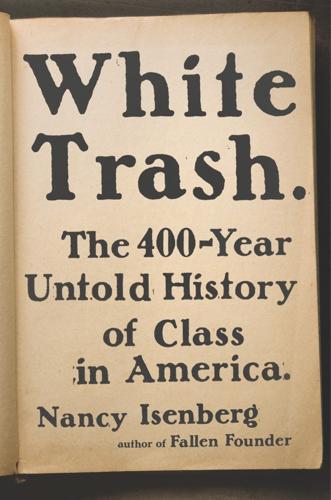
White Trash: The 400-Year Untold History of Class in America
by
Nancy Isenberg
Published 20 Jun 2016
Besides, he wrote, wages for white workers were better in the South, and land ownership was more dispersed—which was patently untrue. He went on: class mobility was possible for nonslaveholders who scrimped and saved to buy a slave, especially a breeding female slave, whose offspring were “heirlooms” to be passed on to the next generation. If his promises of trickle-down economics were unconvincing, De Bow tacitly confirmed that slaves’ elevation meant nonslaveholders’ utter degradation. For these reasons, he said, the poorest nonslaveholder would readily “dig in the trenches, in defense of the slave property of his more favored neighbor.” Fear of dropping to the level of slaves would lead poor whites to fight.24 Disunion did not alleviate such fears.

Power and Progress: Our Thousand-Year Struggle Over Technology and Prosperity
by
Daron Acemoglu
and
Simon Johnson
Published 15 May 2023
The productivity bandwagon was a key part of this new vision, but with its logic extended even further. Organizational changes or laws that are good for business must also be good for society at large because, with a similar reasoning, they will increase demand for workers and translate into shared prosperity. Take it one step further, and you get “trickle-down economics,” a term identified today with President Ronald Reagan’s economic policies in the 1980s, including the idea of cutting taxes on the very rich: when the rich face lower taxes, they will invest more, increasing productivity and benefiting everybody in society. Applying this perspective to regulation leads to conclusions that are diametrically opposed to the ideas that energized Ralph Nader and other consumer activists.
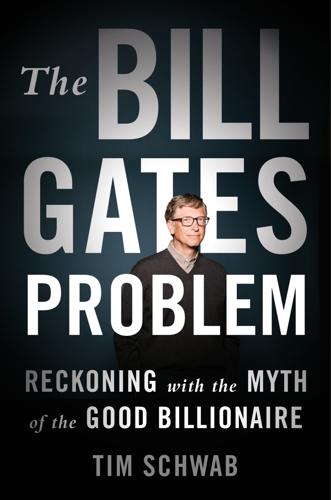
The Bill Gates Problem: Reckoning With the Myth of the Good Billionaire
by
Tim Schwab
Published 13 Nov 2023
The investigation also reported that after the government of Singapore, another wealthy nation, started mandating pneumonia vaccinations for all children, prices there inexplicably jumped 50 percent. The suggestion was that once Big Pharma had locked in a captive market, it could bilk consumers. As Bill Gates describes it, monopoly medicine, left to its own devices, is governed by the law of trickle-down economics: “When you get this problem of these diseases—this sounds like an awful thing to say—but when diseases affect both rich and poor countries, trickle-down will eventually work for the poorest, because the high cost of development is recovered in the rich world and then, as they go off patent, they’re sold for marginal cost to the poor, and everybody benefits.”
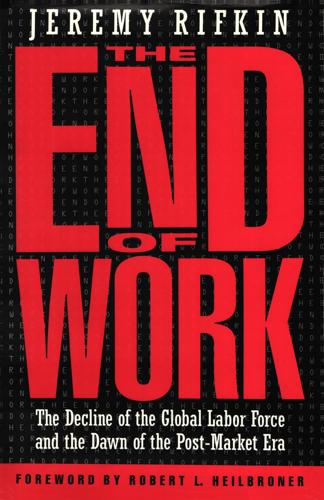
The End of Work
by
Jeremy Rifkin
Published 28 Dec 1994
Physicist Gordon Moore, the chairman of Intel, points out that raw computing power is now doubling every eighteen months, setting a blistering pace for technological change. 76 In the future, advanced parallel computing machines, high-tech robotics, and integrated electronic networks spanning the globe are going to subsume more and more of the economic process, leaving less and less room for direct hands-on human participation in making, moving, selling, and servicing. PART IV THE PRICE OF PROGRESS · 11 · High-Tech Winners and Losers ' \ lIRTUALLY EVERY BUSINESS LEADER and most mainstream econo- Vmists continue to assert that the dramatic technological advances of the Third Industrial Revolution will have a trickle-down effect, reducing the costs of products, stimulating increased consumer demand, creating new markets, and putting more and more people to work in better-paying, new high-tech jobs and industries. For a growing number of working people, however, who find themselves either unemployed or underemployed, the concept of trickle-down technology is of very little solace.
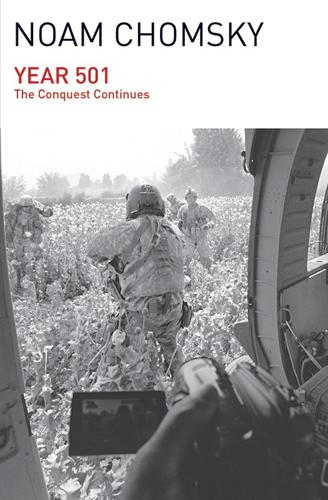
Year 501
by
Noam Chomsky
Published 19 Jan 2016
Costs for education should be “minimized,” and such “social objectives” as persist should be privatized. “Private projects with high economic returns should be strongly supported” in preference to “public expenditures in the social sectors,” and “less emphasis should be placed on social objectives which increase consumption”—“temporarily,” until the famed trickle-down effects are detected, some time after the Messiah arrives. The recommendations, it is understood, are a precondition to aid, and a bright future is sure to follow. Of the array of predictions, one came to pass: the intended migration of the rural population to urban areas, and for many, to leaky boats attempting the dangerous 800-mile passage to Florida, to face forcible return if they make it (many don’t).
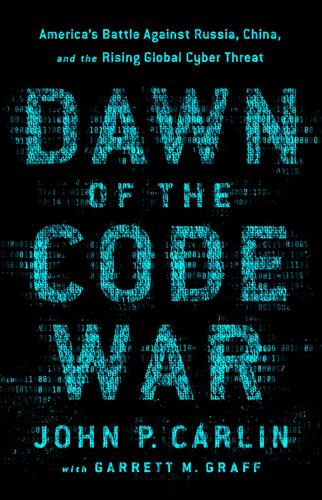
Dawn of the Code War: America's Battle Against Russia, China, and the Rising Global Cyber Threat
by
John P. Carlin
and
Garrett M. Graff
Published 15 Oct 2018
As President Obama said in Silicon Valley in 2015, cybersecurity “has to be a shared mission” because “so much of our computer networks and critical infrastructure are in the private sector, which means government cannot do this alone.” Third, the internet has blurred the line between nation-state and individual. Geopolitical and military strategists have steadily marked the trickle-down effects of weaponry in the 20th century, as technological advances put tools of war and weapons of mass destruction that had long been deployed only by well-financed and technically capable nation-states into the hands of well-organized terrorist and rebel groups. Even more recently, we’ve seen that it’s possible for highly capable individuals to manufacture and deploy chemical and biological weapons.
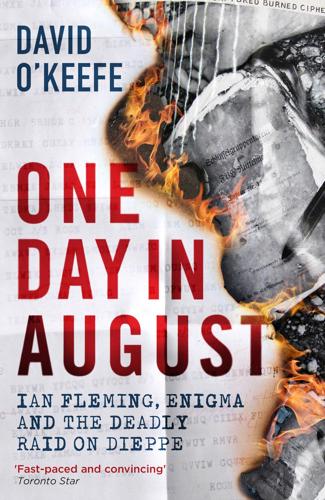
One Day in August: Ian Fleming, Enigma, and the Deadly Raid on Dieppe
by
David O’keefe
Published 5 Nov 2020
Initially, the now-ailing Dudley Pound interpreted this unprecedented rise as Churchill’s bid to put Mountbatten in Pound’s own seat as First Lord of the Admiralty; but it was more likely a recognition of the growing importance of Combined Operations Headquarters within the framework of the armed services, as well as evidence of the prime minister’s desire to inject younger blood into the British leadership. At 42, the charismatic Lord Louis Mountbatten was the youngest vice admiral in the long history of the Royal Navy, surpassing even the hero of the Battle of Trafalgar, Lord Horatio Nelson. But within Mountbatten’s own headquarters, this meteoric ascent had a sharp trickle-down effect on the staff that led quickly to a dangerous overconfidence. In the afterglow of St Nazaire, Jock Hughes-Hallett could not contain his excitement over ‘Dickie’s’ promotion and its promise for the future. ‘My own reaction,’ he recalled, ‘was one of exhilaration, almost exultation. At one stride, our organization had penetrated to the very centre and citadel of power.
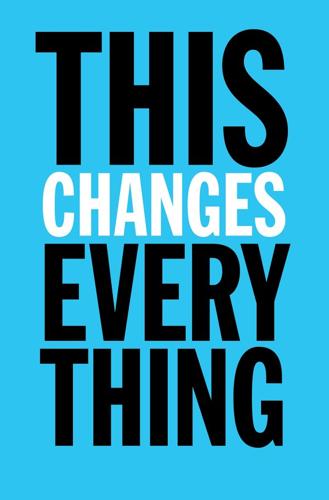
This Changes Everything: Capitalism vs. The Climate
by
Naomi Klein
Published 15 Sep 2014
F., 153, 201 storm barriers, 108, 109 Strahl, Chuck, 362 stranded assets, 146 StratoShield, 262, 268n, 271 stratosphere, sulfur dioxide in: from volcanic eruptions, 258–59, 273–74 see also Pinatubo Option strontium-90, 203 structural inequity, 40 Stuffed and Starved (Patel), 135 Stutz, John, 94 Suckling, Kierán, 206 Sudan, 270 sulfur dioxide emissions, 208 Suncor Energy, 234, 246 sunlight, reflection of, see Solar Radiation Management SuperFreakonomics (Levitt and Dubner), 262–63, 271–72 Superfund Act of 1980, 202 super-rich, 19 supply lines, length of, 76 Supreme Court, Canada: Haida Nation case in, 369 Indigenous land rights affirmed by, 368, 371–72 sustainability, 55, 77, 447 Sustainable Energy Blueprint, 213 Swarthmore College, 355 Swearengin, Paula, 310 Sweden, 179 Swift Boat Veterans for Truth, 34 Swiss Re Americas, 49 SWN Resources, 299 Sydney, Australia, 446 Syngenta, 9 Syriza party (Greek), 181–82, 297 Take, The, 123 Tambococha oil field, 410 tarmac, melting of, 1–2 Tar Sands Blockade, 302 tar sands oil (bitumen), 2, 94, 139, 140, 144, 145, 234, 237, 252–53, 254, 310, 349, 352, 358, 446 call for global moratorium on, 353 diluted (dilbit), 325, 331 grassroots opposition to, 321–22 high risk in, 324 Indigenous opposition to, 322, 375 open-pit extraction of, 329 opposition to, 234 water use in mining of, 346 see also Alberta tar sands; pipelines tax cuts, 39, 72 for consumers, 112 taxes, 19, 39, 42, 117, 119 airline, 250–51 carbon, 112, 114, 125, 157, 218, 250, 400, 461 corporate, 19, 115 financial transaction, 114 luxury, 93 pollution-based, 284 on the rich, 113–14, 118, 153 transition, 418 tax havens, closure of, 114 Tax Justice Network, 114 tax refunds, 118 Tea Party, 3, 38, 227 technology, 16, 24, 76, 142, 186, 236 and domination of nature, 56–57 extreme extraction and, 310 see also geoengineering TED Talks, 211, 236 Tellus Institute, 94 temperatures, extreme, 2 Temple, William, 183 Tercek, Mark, 208n TerraPower, 264 Texaco, 309 Texas: drought of 2011 in, 47, 440 fracking in, 347 Keystone XL and, 361 water pollution in, 329 Texas, University of, 329 Texas City Prairie Preserve, oil and gas drilling on, 192–95, 196, 215 Thames River, 446 Thatcher, Margaret, 39, 42, 60 Thie, Hans, 131 think tanks, conservative, 38, 203 Third World Network, 77 Thomas-Flurer, Geraldine, 367 Thompson, Lonnie G., 15 Thoreau, Henry David, 184, 286 350.org, 140, 156, 233n, 353, 356 tidal power, 127 Tiger Management, 208 tight-rock formations, 311; see also shale, fracking of Tillerson, Rex, 111, 314 Time magazine, Planet Earth on cover of, 74, 204 Tiputini oil field, 410 Tjelmeland, Aaron, 192, 195 Tongue River, 389, 390 Tongue River Railroad (proposed), 389 tornados, 406 Toronto, 55, 65, 67, 73, 126 Total, 246 Totnes, England, 364 Toyota, 196 trade, see free trade agreements; international trade trade unions, 81, 83, 177, 204, 454 job creation and, 126–27 job protection by, 126, 178 NAFTA opposed by, 84 transaction tax, 418 TransCanada, 149, 346, 359, 361, 362 see also Keystone XL pipeline Transition Town movement, 364 Transocean, 330 Trans-Pacific Partnership, 78 transportation infrastructure, 85, 90, 127 travel, wealth and, 113 Treaty 6, 372 tree farms, 222 Trenberth, Kevin, 272, 275 Trent River, 300 trickle-down economics, 19 Trinity nuclear test, 277 triumphalism, 205, 465 Tropic of Chaos (Parenti), 49 tropics, techno-fixes and risk to, 49 Trump, Donald, 3 Tschakert, Petra, 269 Tsilhqot’in First Nation, 345 Tsipras, Alexis, 181–82, 466 Tsleil-Waututh First Nation, 323 Tutu, Desmond, 464 Tuvalu, 13 2 degrees Celsius boundary, 87–88, 89, 150, 354, 456 Tyndall Centre for Climate Change Research, 13, 21, 56, 86–87, 214, 283 typhoons, 107, 175, 406, 465 Uganda, 222 ultra-deepwater “subsalt” drilling, 145 Undesirables (Isaacs), 167 unemployment, 180 unemployment insurance, 454 Unified Campesino Movement of Aguán, 222 Union of Concerned Scientists, 201 Clean Vehicles Program at, 237 United Kingdom, 13, 149, 170, 224, 225 compensation of slave-owners in, 415–16, 457 “dash for cash” in, 299 divestment movement in, 354 flooding in, 7, 54, 106–7 fracking in, 299–300, 313 Industrial Revolution in, 172–73, 410 negatives of privatization in, 128 politics of climate change in, 36, 150 supports for renewable energy cut in, 110 Thatcher government of, 39 World War II rationing in, 115–16 United Nations, 7, 18, 64, 87, 114 Bloomberg as special envoy for cities and climate change of, 236 Clean Development Mechanism (CDM), 219–20, 224, 226 climate governance and, 280 climate summits of, 5, 11, 65, 150, 165, 200; see also specific summits Department of Economic and Social Affairs, 110 Intergovernmental Panel on Climate Change, see Intergovernmental Panel on Climate Change (IPCC) international agreements and, 17 Special Rapporteur on the Right to Food, 135 United Nations Conference on the Human Environment of 1972, 202 United Nations Declaration on the Rights of Indigenous Peoples, 377, 383 United Nations Economic Commission for Latin America and the Caribbean, 180 United Nations Environmental Modification Convention, 278 United Nations Environment Programme (UNEP), 272 United Nations Framework on Climate Change, 200, 410 United Nations Framework Convention on Climate Change (UNFCCC), 76, 77, 78–79 United Nations High Commissioner for Refugees, 167 United Nations Rio Declaration on Environment and Development (1992), 55, 293 United Policyholders, 109 United States, 19, 67, 68, 143 carbon emissions from, 409 coal exports from, 320, 322, 346, 349, 374, 376 Copenhagen agreement signed by, 12, 150 energy privatization reversals in, 98 environmental legislation in, 201–2 failure of climate legislation in, 226–27 Kyoto Protocol and, 218–19, 225–26 oil and gas export restrictions in, 71 opposition movement in, 9 solar energy market in, 72 WTO challenges brought against, 65 WTO challenges brought by, 64–65, 68 United States Climate Action Partnership (USCAP), 226–28 University College London, 415–16 uranium, 176 urban planning, green, 16 urban sprawl, 90, 91 US Airways, 1–2 U.S.

Hunger: The Oldest Problem
by
Martin Caparros
Published 14 Jan 2020
Because not many doctrines survive that posit material equality as a goal. Or do they? In order to promote this “moderate inequality,” this “reasonable inequality,” most governments and international organizations maintained, for the last several decades, that the solution was some form of the trickle-down theory: somehow the overflow caused by an increase in the wealth of the wealthiest will also benefit the poor. Lately they’ve been saying this in a whisper, almost ashamed, so nobody will hear. It’s difficult to think about getting rid of material inequality in a society based on material inequality.

Site Reliability Engineering: How Google Runs Production Systems
by
Betsy Beyer
,
Chris Jones
,
Jennifer Petoff
and
Niall Richard Murphy
Published 15 Apr 2016
Once resources eventually arrive (potentially in phases over the course of some defined period of time), which services get to use the resources? How do I make typically lower-level resources (CPU, disk, etc.) useful for services? It bears stressing that capacity planning is a neverending cycle: assumptions change, deployments slip, and budgets are cut, resulting in revision upon revision of The Plan. And each revision has trickle-down effects that must propagate throughout the plans of all subsequent quarters. For example, a shortfall this quarter must be made up in future quarters. Traditional capacity planning uses demand as a key driver, and manually shapes supply to fit demand in response to each change. Brittle by nature Traditional capacity planning produces a resource allocation plan that can be disrupted by any seemingly minor change.
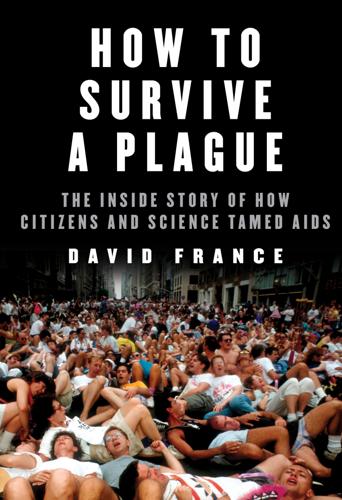
How to Survive a Plague: The Inside Story of How Citizens and Science Tamed AIDS
by
David France
Published 29 Nov 2016
Biting winds brought some of the lowest temperatures New York had ever seen. A long East Coast drought added to the city’s discomfort; restaurants were barred from serving water, and washing grime from windows or sidewalks was made illegal. Nationally, as President Ronald Reagan put into practice his trickle-down economic policies, the gap between wealthy and working-class Americans began to expand sharply. The digital dawn arrived: Sony would introduce the camcorder, making moving images available to ordinary people for the first time, and the Commodore personal computer would launch a revolution. But unemployment was at its highest since the Great Depression, making the electronic revolution a distant dream for most.

The Portable Atheist: Essential Readings for the Nonbeliever
by
Christopher Hitchens
Published 14 Jun 2007
You are my cleverest, funniest, most open-minded, wittiest, tallest, and possibly only convert. I hope this book might have made you laugh—though not as much as you made me. That scientifically savvy philosopher Daniel Dennett pointed out that evolution counters one of the oldest ideas we have: “the idea that it takes a big fancy smart thing to make a lesser thing. I call that the trickle-down theory of creation. You’ll never see a spear making a spear maker. You’ll never see a horse shoe making a blacksmith. You’ll never see a pot making a potter.” Darwin’s discovery of a workable process that does that very counterintuitive thing is what makes his contribution to human thought so revolutionary, and so loaded with the power to raise consciousness.
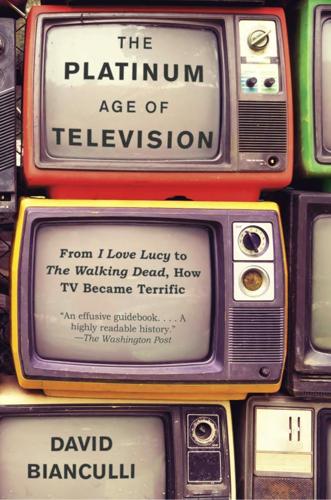
The Platinum Age of Television: From I Love Lucy to the Walking Dead, How TV Became Terrific
by
David Bianculli
Published 15 Nov 2016
Married…with Children, raucous and often raw, lasted a decade. The Simpsons is still running. But it took another stand-up comic, like Cosby, to spin stories of domestic life into a hit family sitcom while, in this case, taking the issue of living just above the poverty line seriously enough to comment, openly and overtly, on the trickle-down effects of the downside of Reaganomics. For this particular family sitcom, it took a woman. It took Roseanne Barr. ROSEANNE 1988–97, ABC. Creator: Matt Williams. Stars: Roseanne Barr, John Goodman, Laurie Metcalf, Sara Gilbert, Sarah Chalke, Alicia “Lecy” Goranson, Michael Fishman, George Clooney, Johnny Galecki, Martin Mull, Sandra Bernhard.
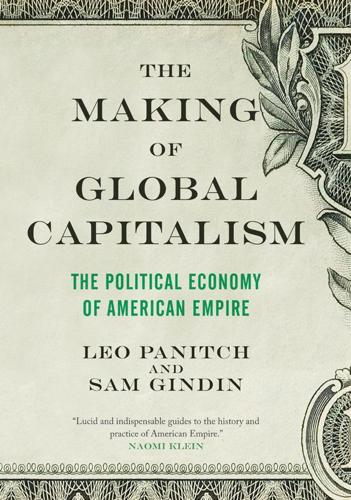
The Making of Global Capitalism
by
Leo Panitch
and
Sam Gindin
Published 8 Oct 2012
With one firm after another apparently buckling under the weight of their bad investments, the socialization of the banks’ losses was increasingly seen to be both ineffective and unfair—a factor that had already played its part in the outcome of the November 2008 presidential election. The TARP’s emphasis on the recapitalization of American banks helped to reduce the spread between the rates at which the state was lending to the banks and what banks charged borrowers, but the trickle-down effects were limited because lending institutions, still unsure how to evaluate financial risk, tightened the terms on all major types of loans. This reluctance to lend was related to the fact that when a housing bubble bursts it affects not just the financial system, but the whole economic system, in a way stock market meltdowns do not.

Behave: The Biology of Humans at Our Best and Worst
by
Robert M. Sapolsky
Published 1 May 2017
.* For those who missed that fun, a chad is the piece of paper knocked out of a punch-card ballot when someone votes, and a hanging chad is one that doesn’t completely detach; does this justify disqualifying the vote, even though it is clear who the person voted for? And obviously, if one millisecond before chads reared their hanging heads, you had asked pundits what would be the hanging-chad stances of the party of Reagan and trickle-down economics, and the party of FDR and the Great Society, they wouldn’t have had a clue. And yet there we were, one millisecond postchads, with each party passionately explaining why the view of the opposing Thems threatened Mom, apple pie, and the legacy of the Alamo. The “confirmation biases” used to rationalize and justify automatic Them-ing are numerous—remembering supportive better than opposing evidence; testing things in ways that can support but not negate your hypothesis; skeptically probing outcomes you don’t like more than ones you do.
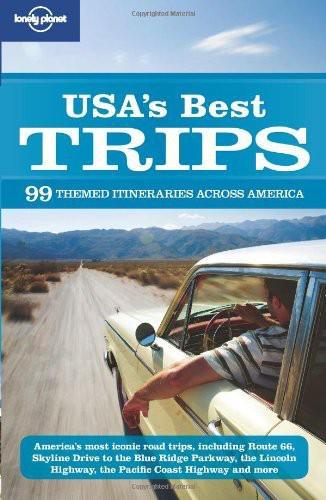
USA's Best Trips
by
Sara Benson
Published 23 May 2010
Mountain glaciers are defined by a minimum size and physical properties, especially movement and replenishment.” * * * TIME 3 days DISTANCE 60 miles BEST TIME TO GO Jul – Sep START West Glacier END St Mary, MT * * * That said, the disappearance of the glaciers will have a trickle-down effect on plant and animal life in the park – Glacier is known especially for its healthy grizzly population, as well as being home to some of the USA’s other most endangered species, including the wolverine, gray wolf and lynx – and a lot can still be done to reduce the global-warming problem before it’s too late for the animals.
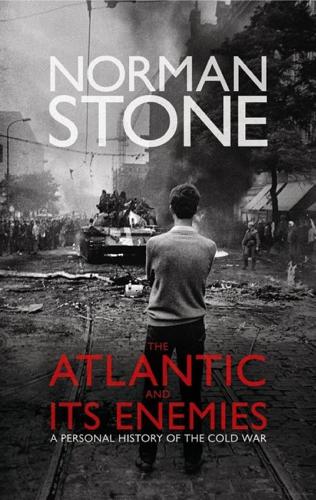
The Atlantic and Its Enemies: A History of the Cold War
by
Norman Stone
Published 15 Feb 2010
It had been a Pasha’s house, had been turned into a grand hotel, and in its place half of a gruesome car park went up until it was stopped. The counterpart was that, as the money poured in, so did migrants. The city became, like Mexico City, a megalopolis, and although old Stambul survived, it was squashed in with concrete or clapboard suburbs, each taken over by a region in the east. It was a demonstration of the trickle-down effect, in that the crumbs from the tables of Maslak rolled down into Sütlüce, and the parking arrangements of Galata were taken over by a Kurdish mob from Bitlis, near Lake Van. The later years of Özal have a shadowy resemblance to the later years of Margaret Thatcher, when the machine ran beyond the monetarist desert and entered upon richer and much more intractable soil.

The Rough Guide to Portugal (Travel Guide eBook)
by
Rough Guides
Published 1 Mar 2023
A new constitution in 1933 gave him overarching, authoritarian powers under Portugal’s Second Republic – powers that Salazar personally exercised until 1968. Salazar’s so-called Estado Novo or “New State” stabilized the economy but sowed the seeds of its prolonged downfall with its narrow, nationalistic outlook. There was no trickle-down effect as far as wealth was concerned, and Portugal remained woefully underdeveloped. The vast agricultural estates of the Alentejo saw no real improvement – scenes of rural work and life in the 1950s could have come straight out of a medieval engraving – and emigration was widespread. Large Portuguese populations in France, the US and elsewhere are a direct result of these impoverished years.

Judas Unchained
by
Peter F. Hamilton
Published 1 Jan 2006
It acknowledged the request, and told her Gore’s subsidiary personality programs were filling the apartment arrays, moving with him like attentive ghosts. ‘Psychoneural profiling isn’t that precise,’ Paula said. She didn’t seem bothered by Gore’s bluntness. ‘And I’ve seen too much poverty to believe in trickle-down economics. It doesn’t work. Disparity is injustice. And poverty breeds a lot of crime.’ Gore shrugged. ‘If you want something, work for it.’ ‘Like you did to start the Family fortune,’ Justine muttered darkly. ‘I do work for what I want,’ Paula said. ‘That simply doesn’t translate into the acquisition of physical items.
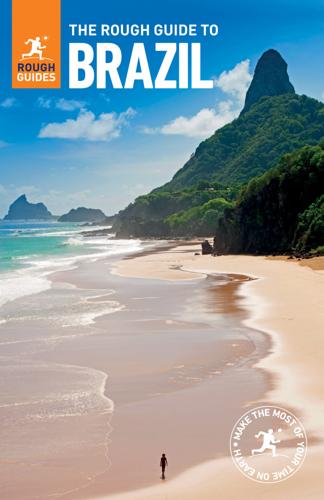
The Rough Guide to Brazil
by
Rough Guides
Published 22 Sep 2018
Anxious to set this new capital to work, international banks and South American military regimes fell over themselves in their eagerness to organize deals. Brazil had a good credit rating – its wealth of natural resources and jailed labour leaders saw to that. The military needed money for a series of huge development projects central to its trickle-down economic policy, like the Itaipu dam, the Carajás mining projects in eastern Amazônia, and a nuclear power programme. By the end of the 1970s Brazilian debt was at US$50 billion; by 1990 it had risen to US$120 billion, and the interest payments were crippling the economy. Democracy returns: the abertura Growing popular resentment of the military could not be contained indefinitely, especially when the economy turned sour.